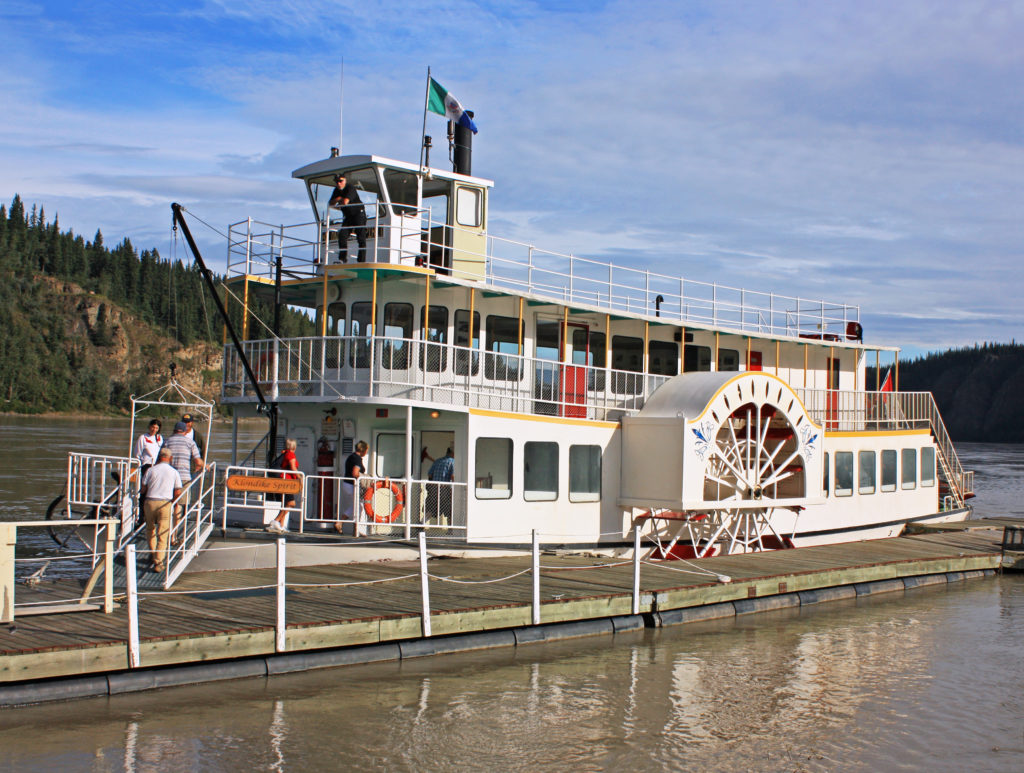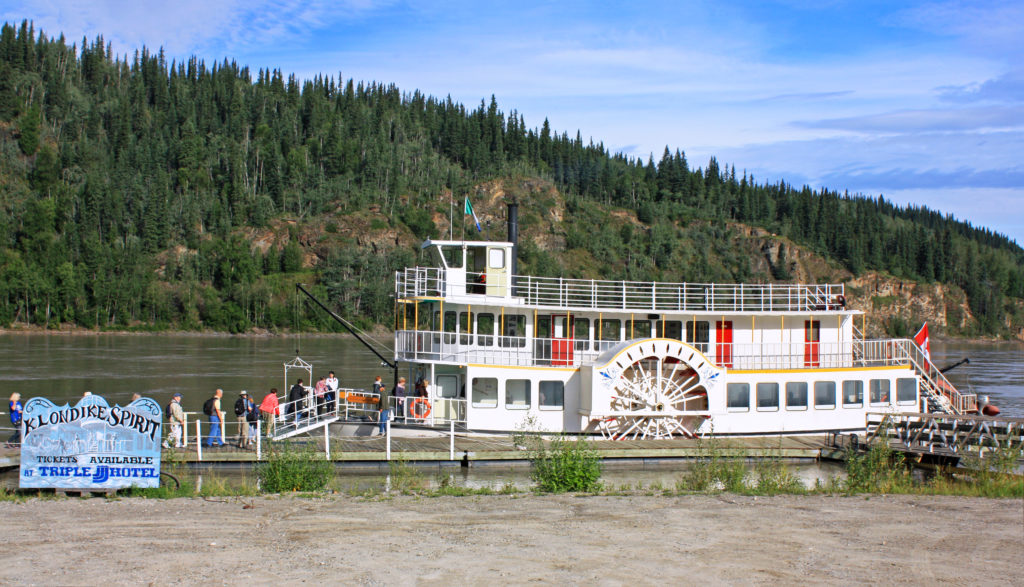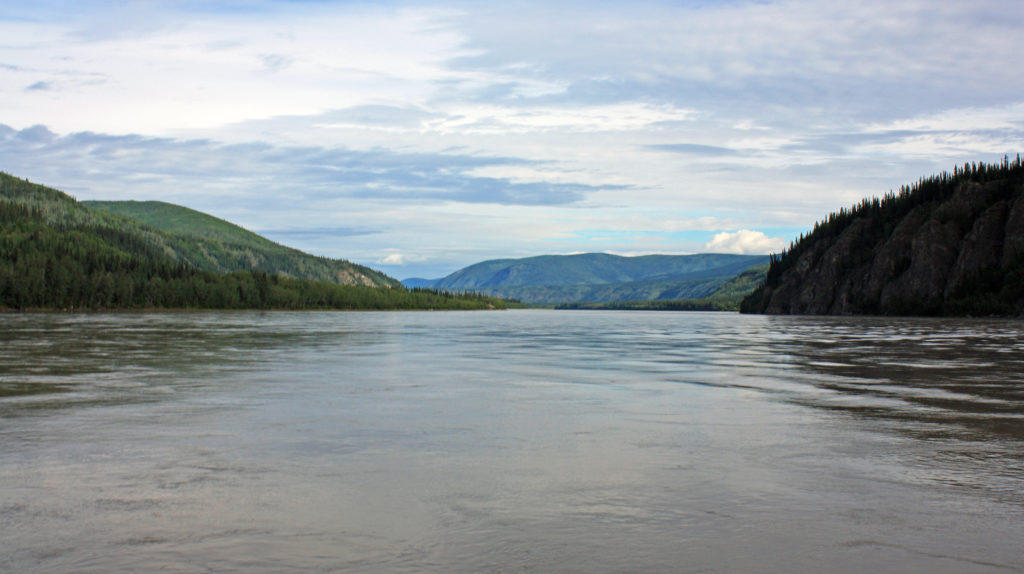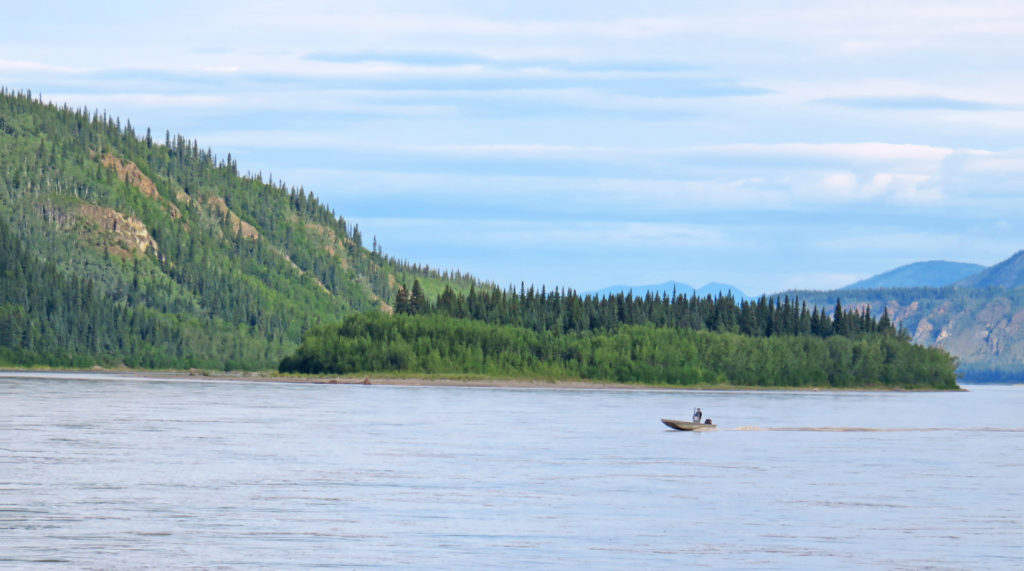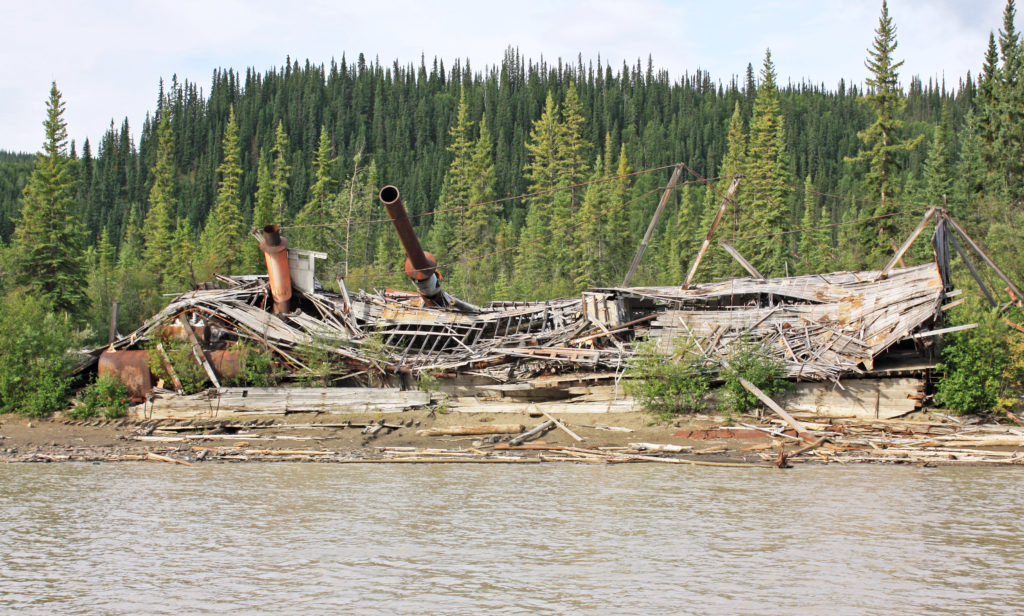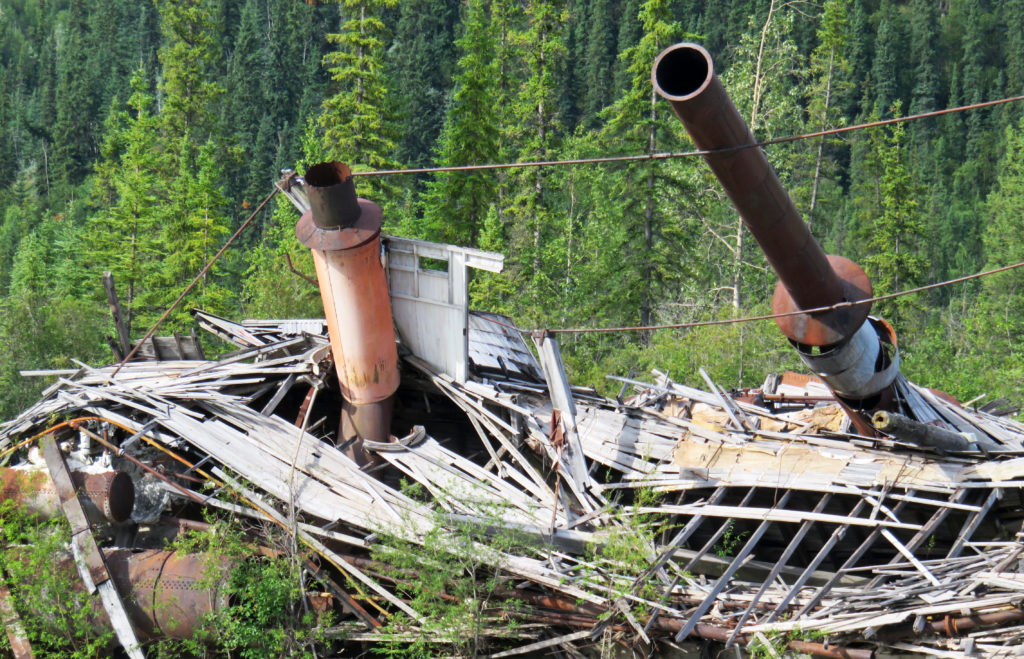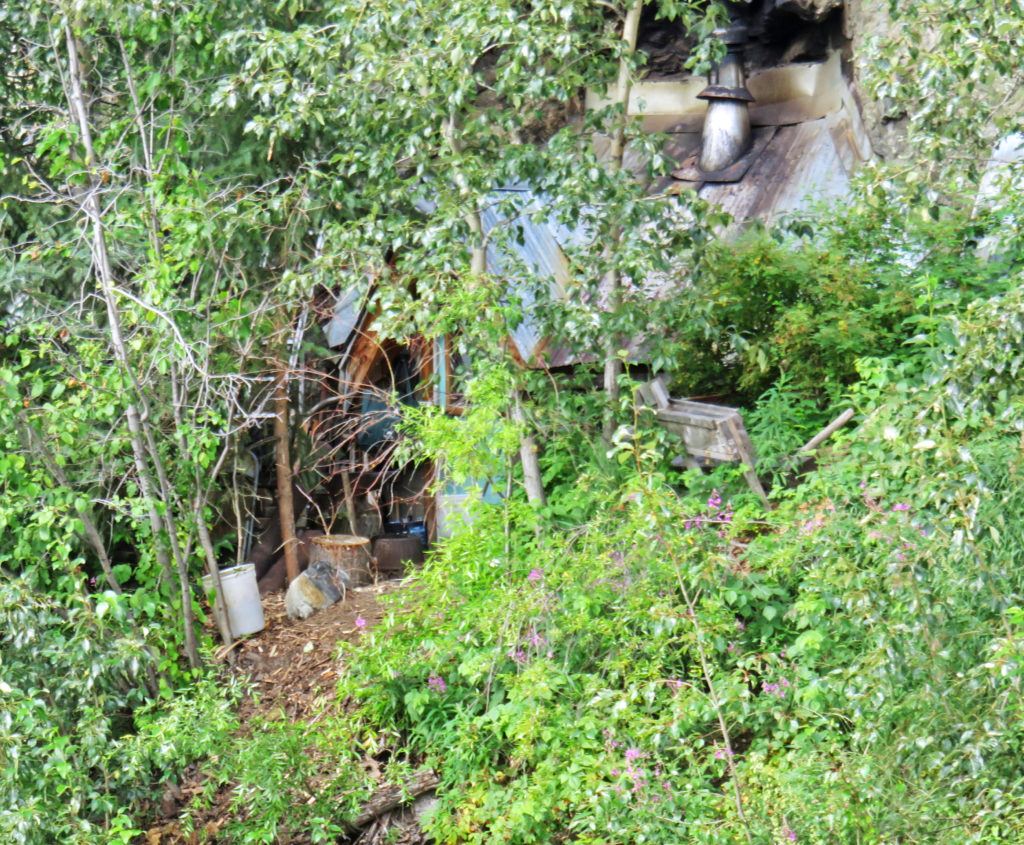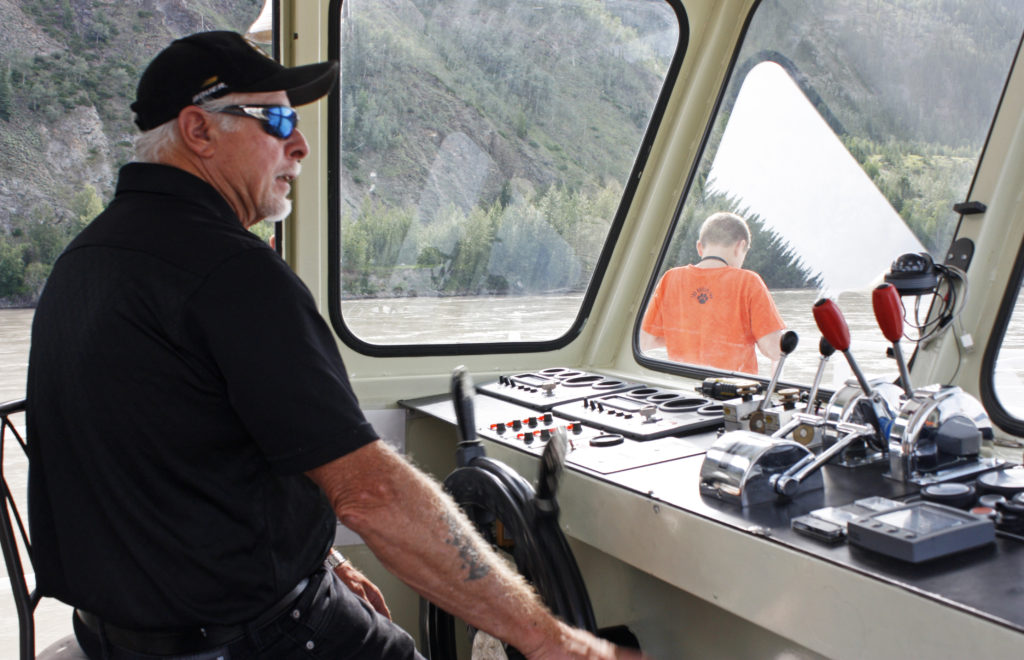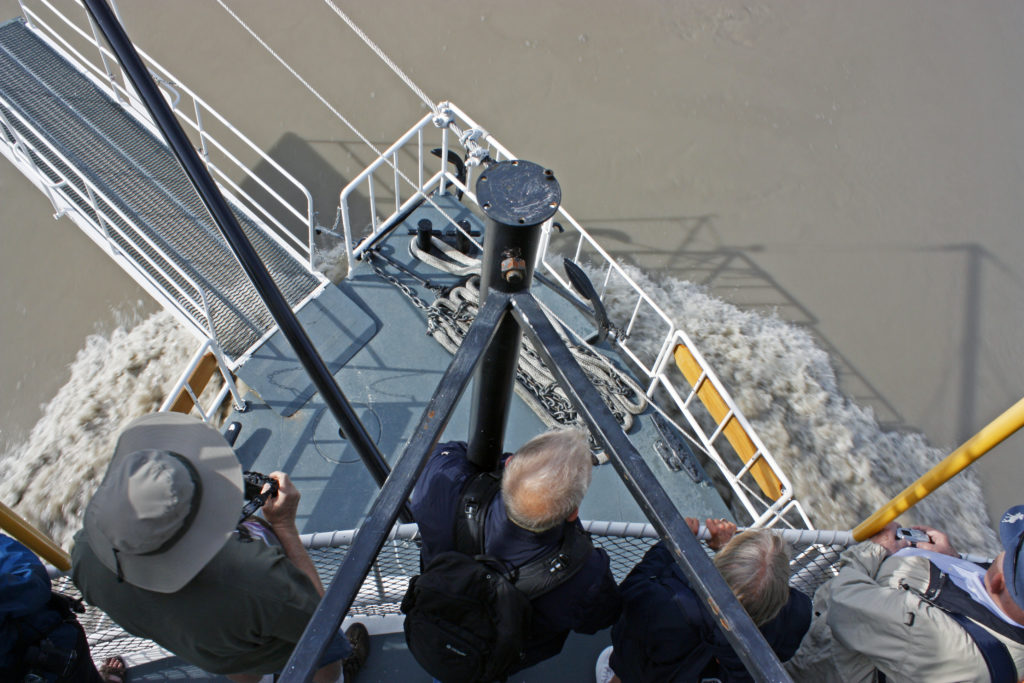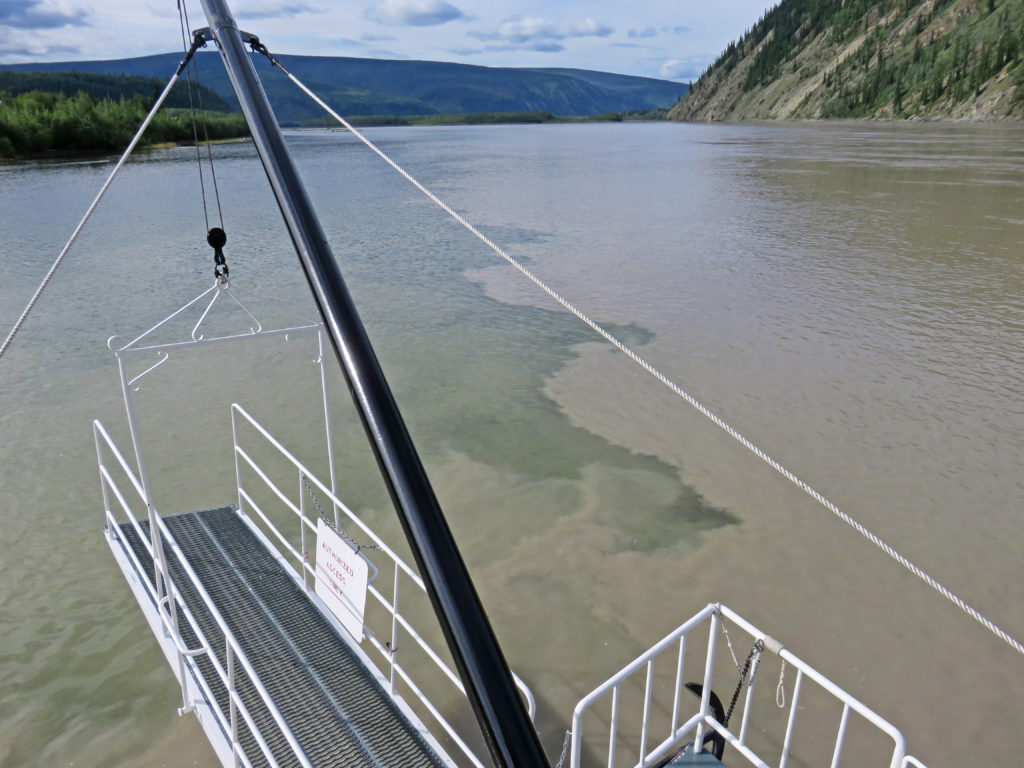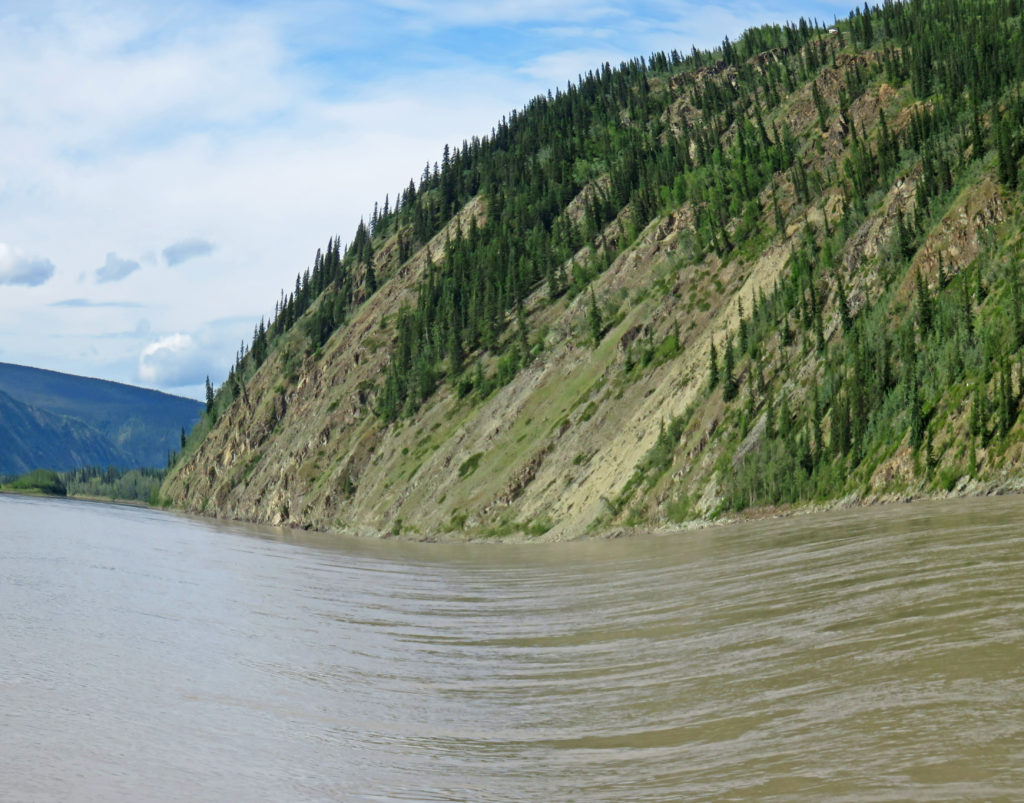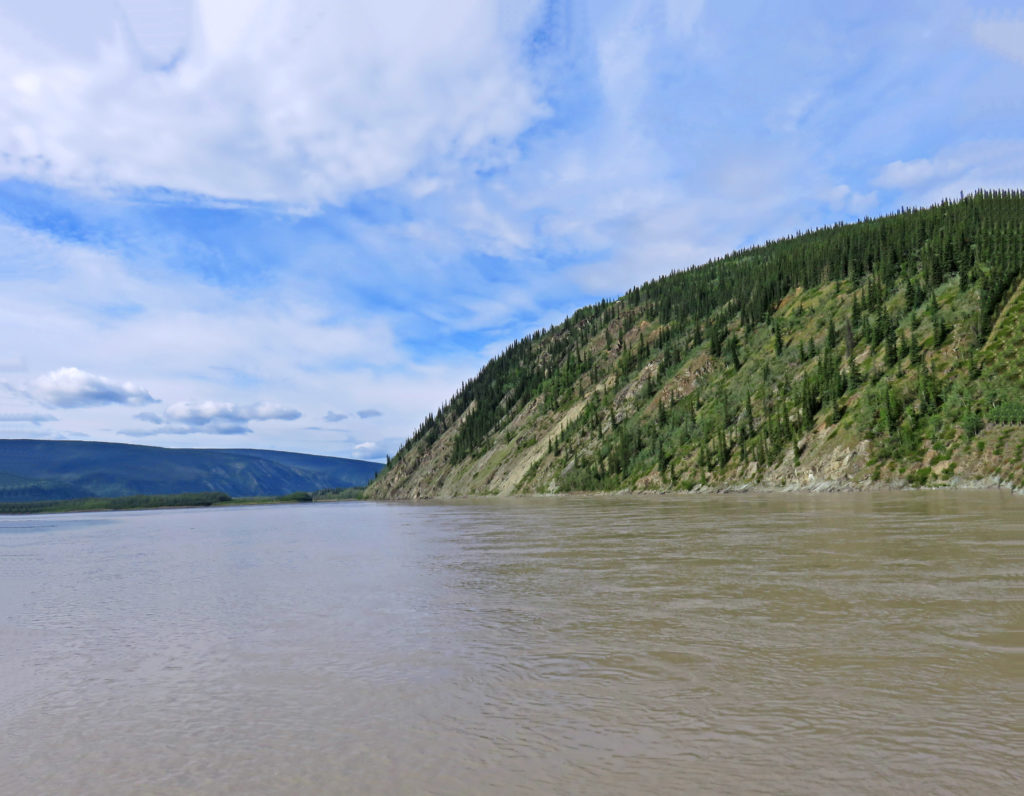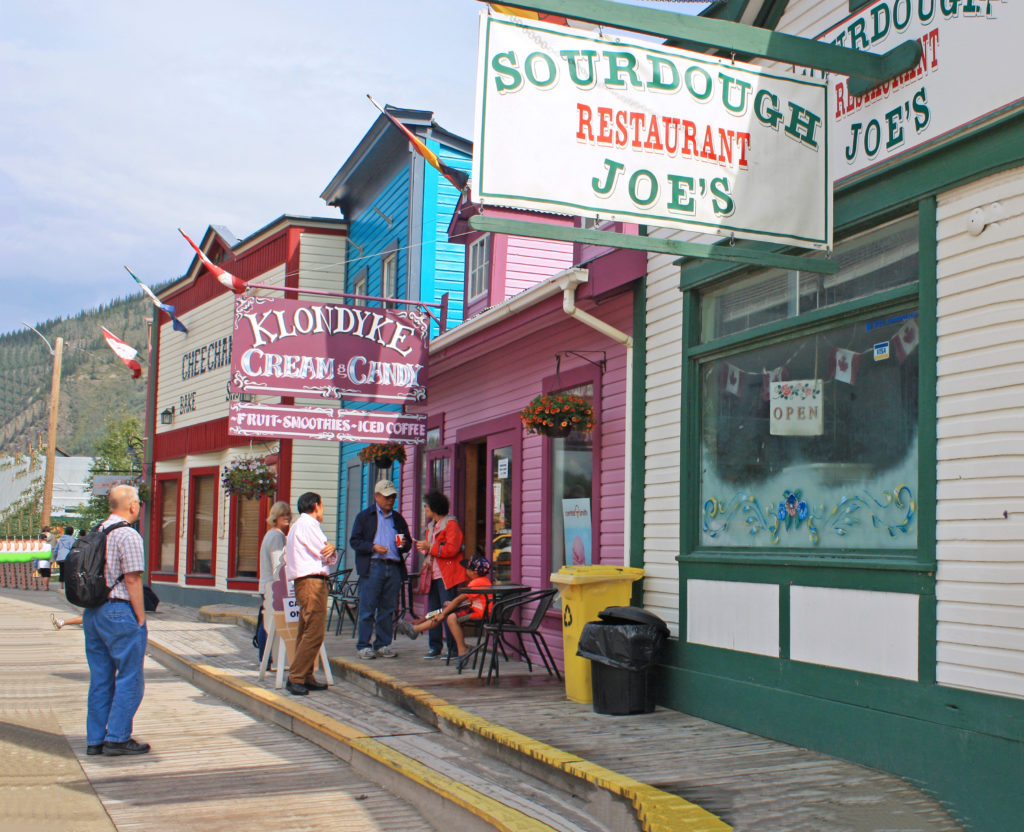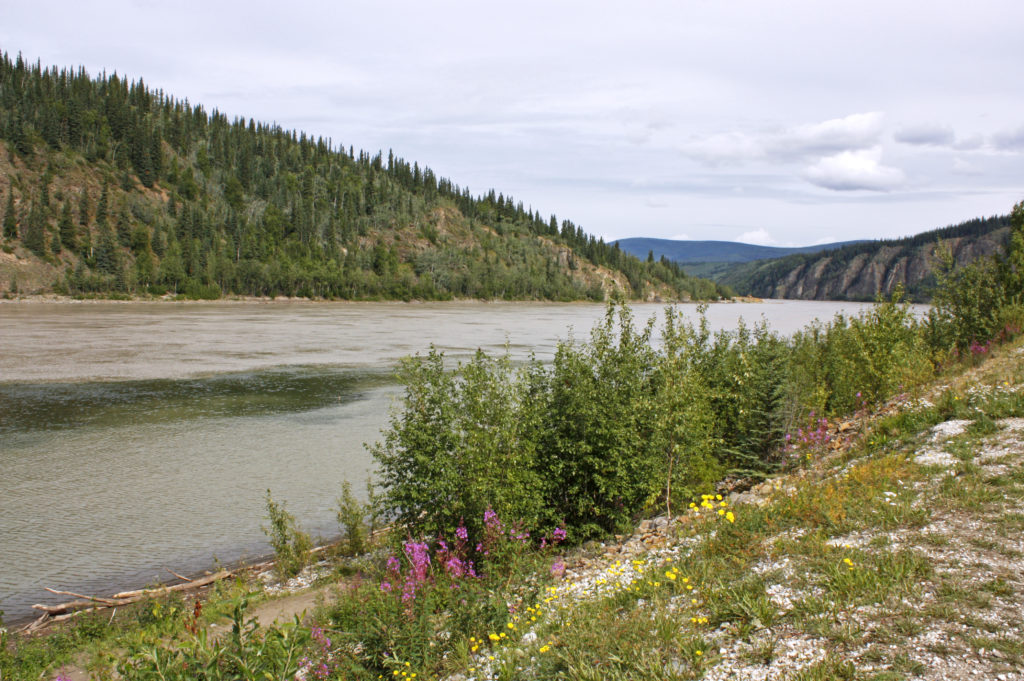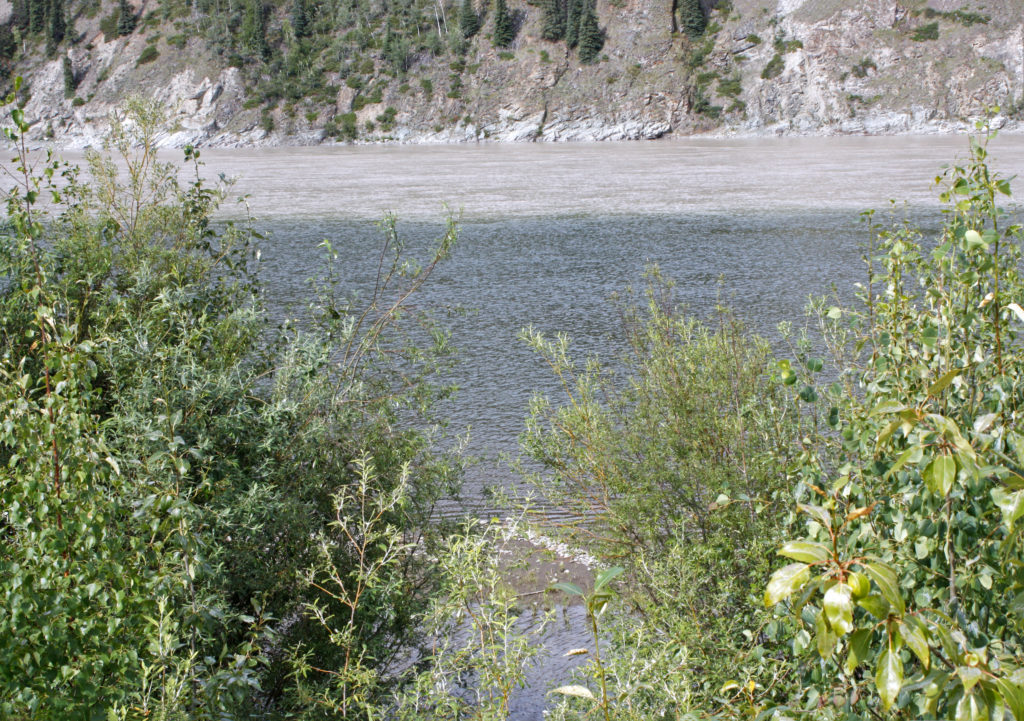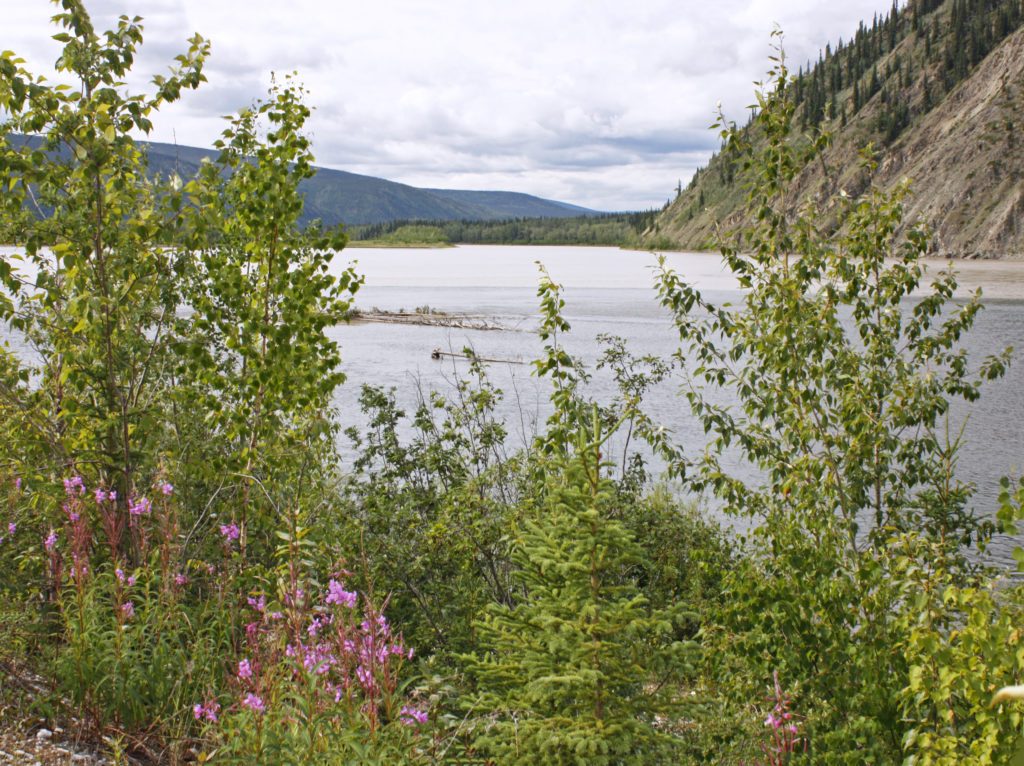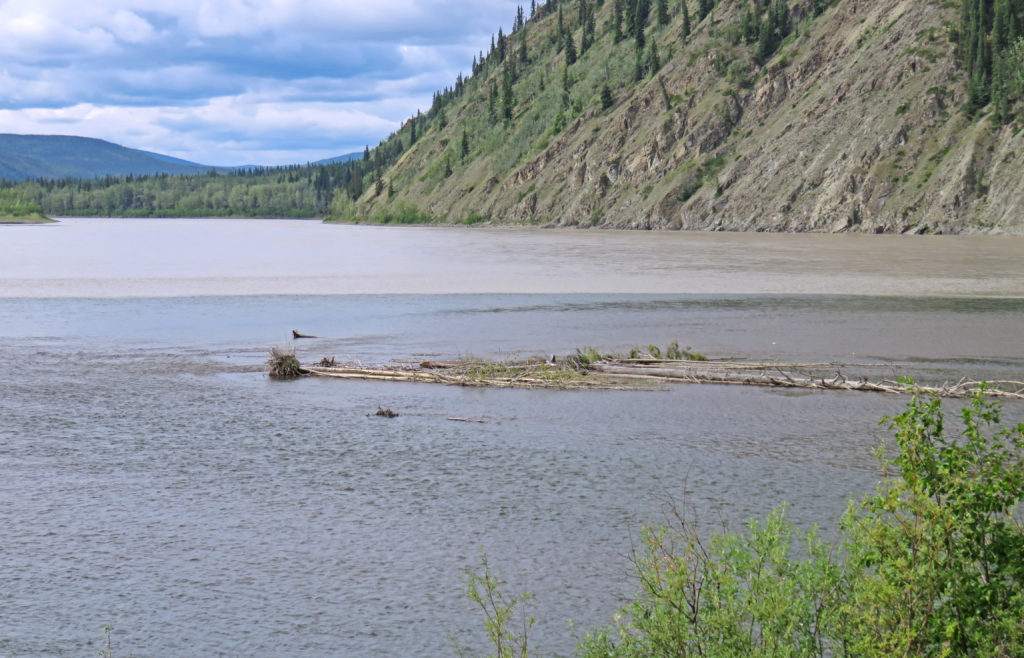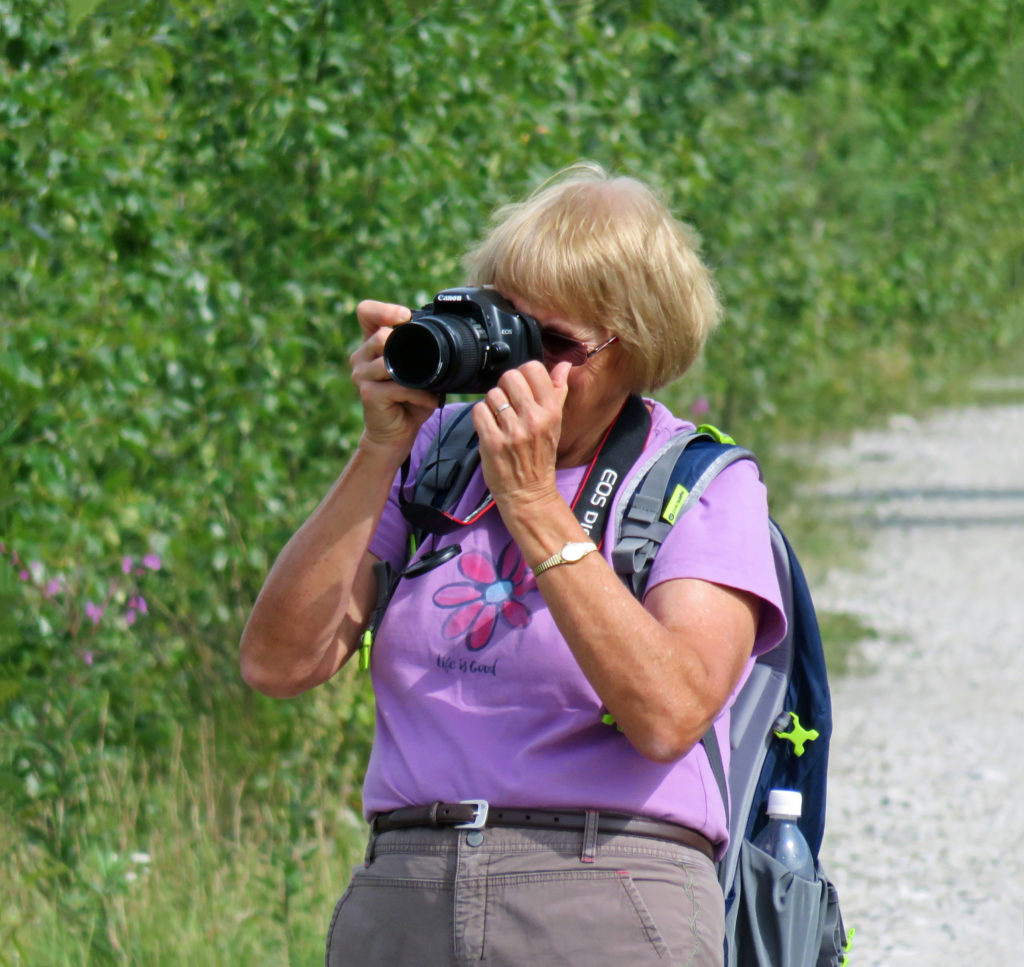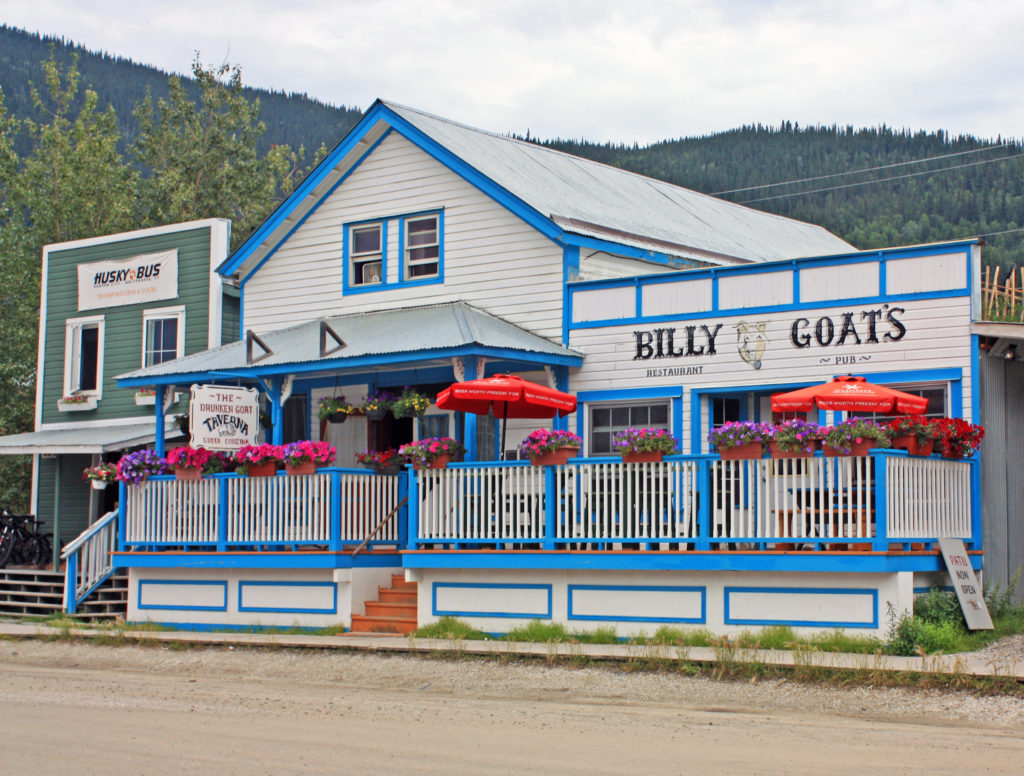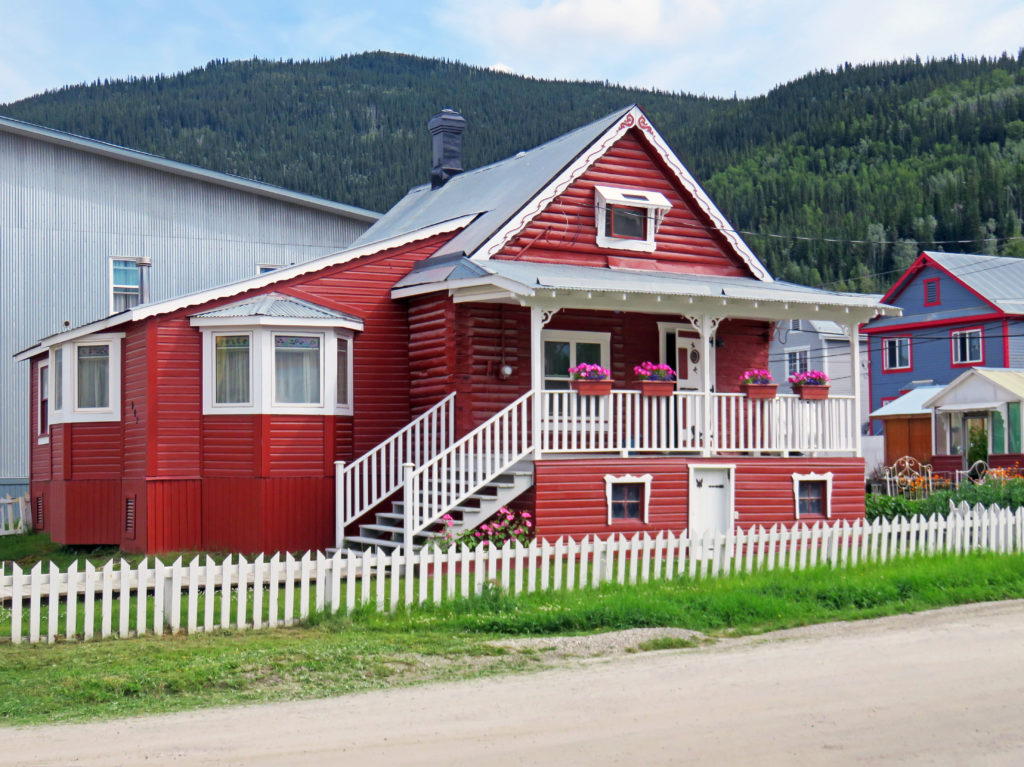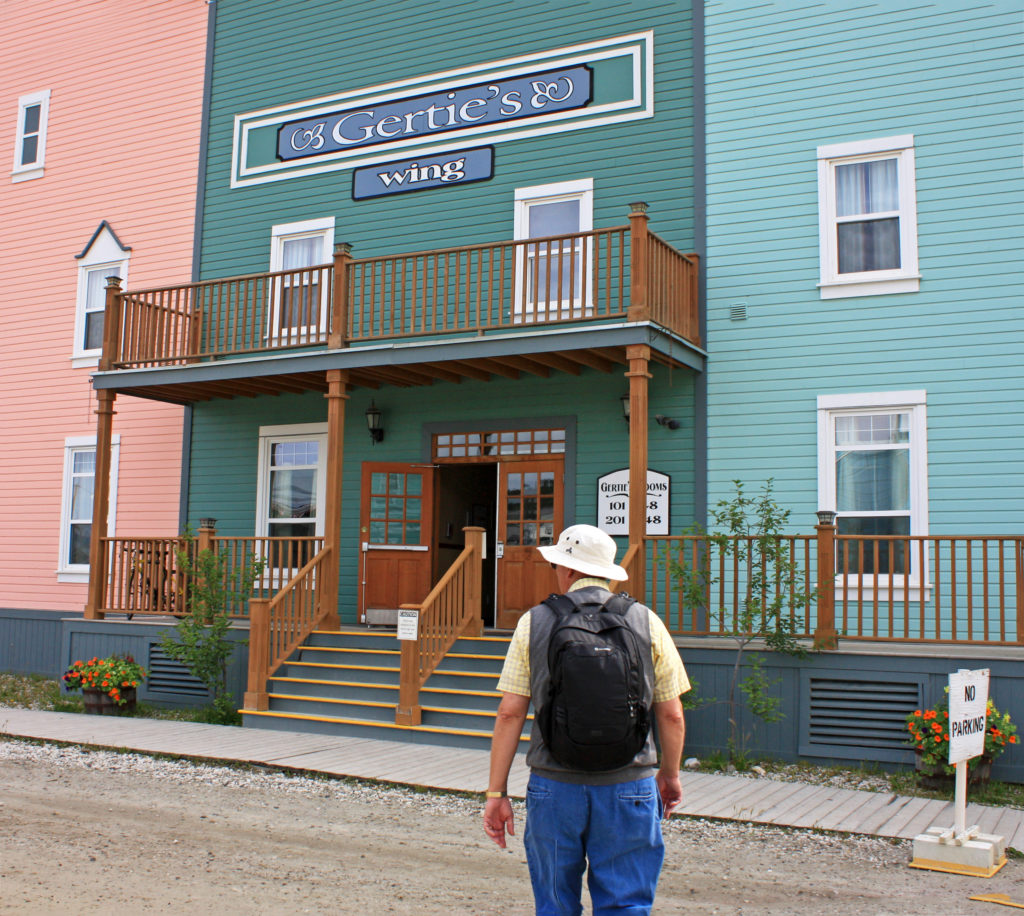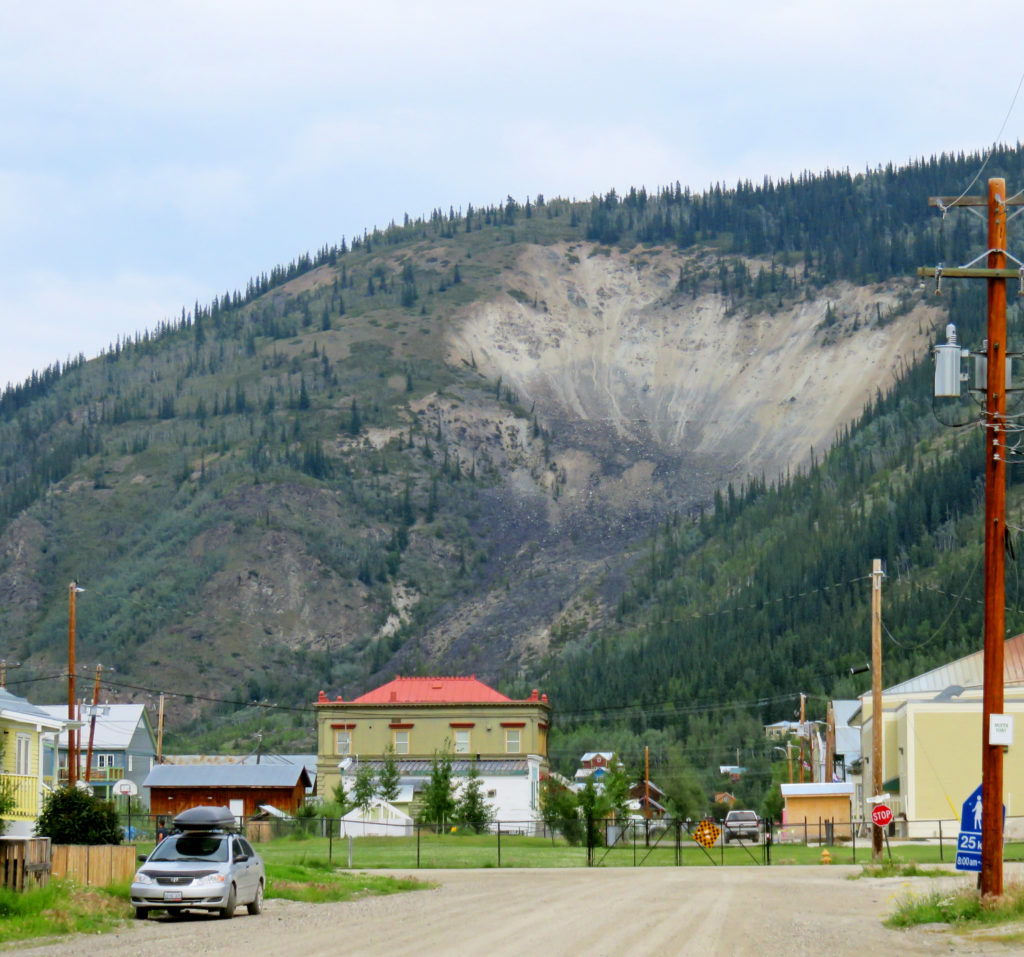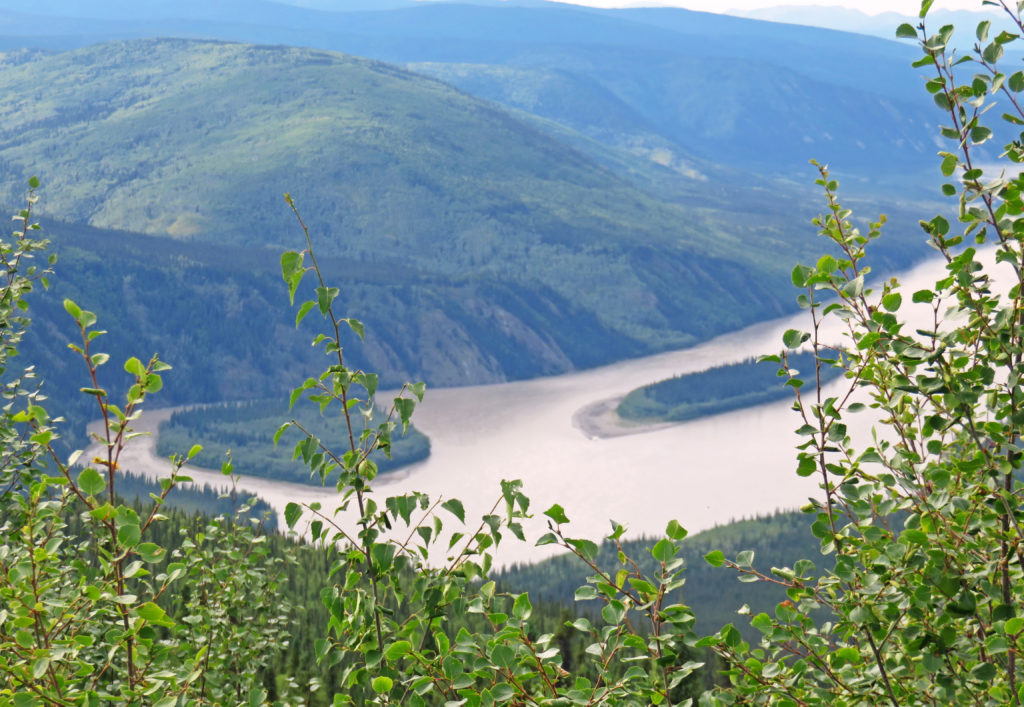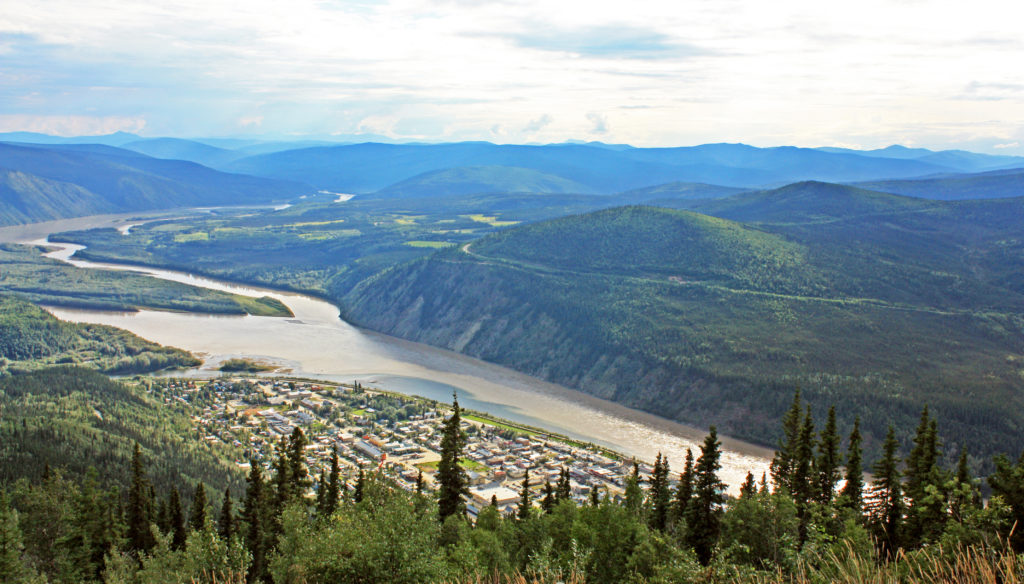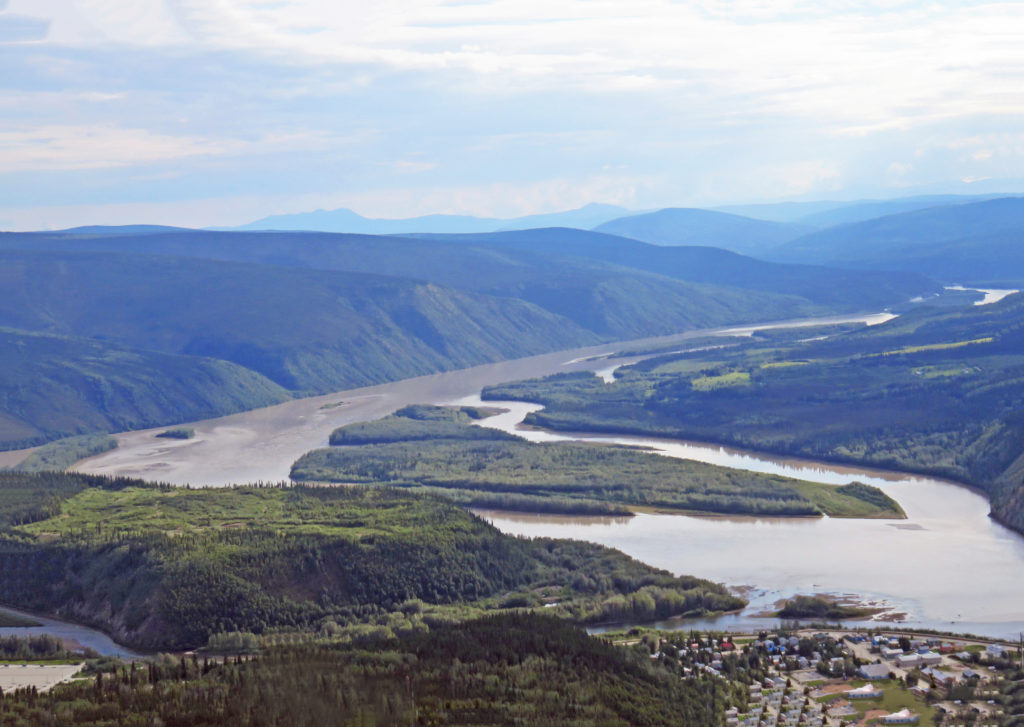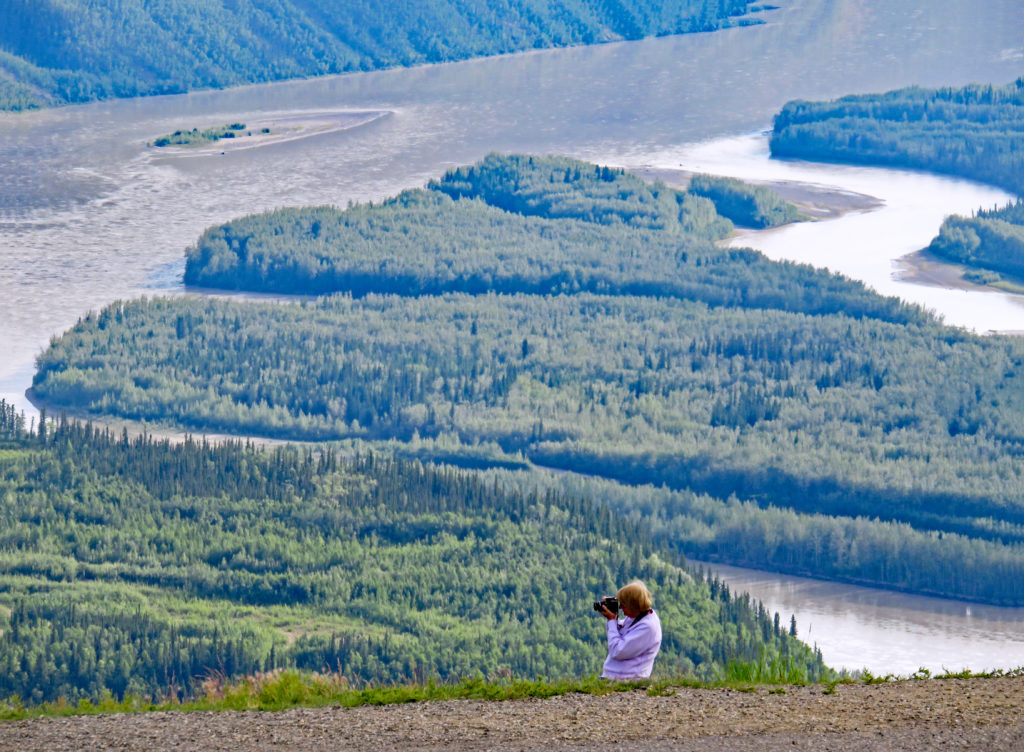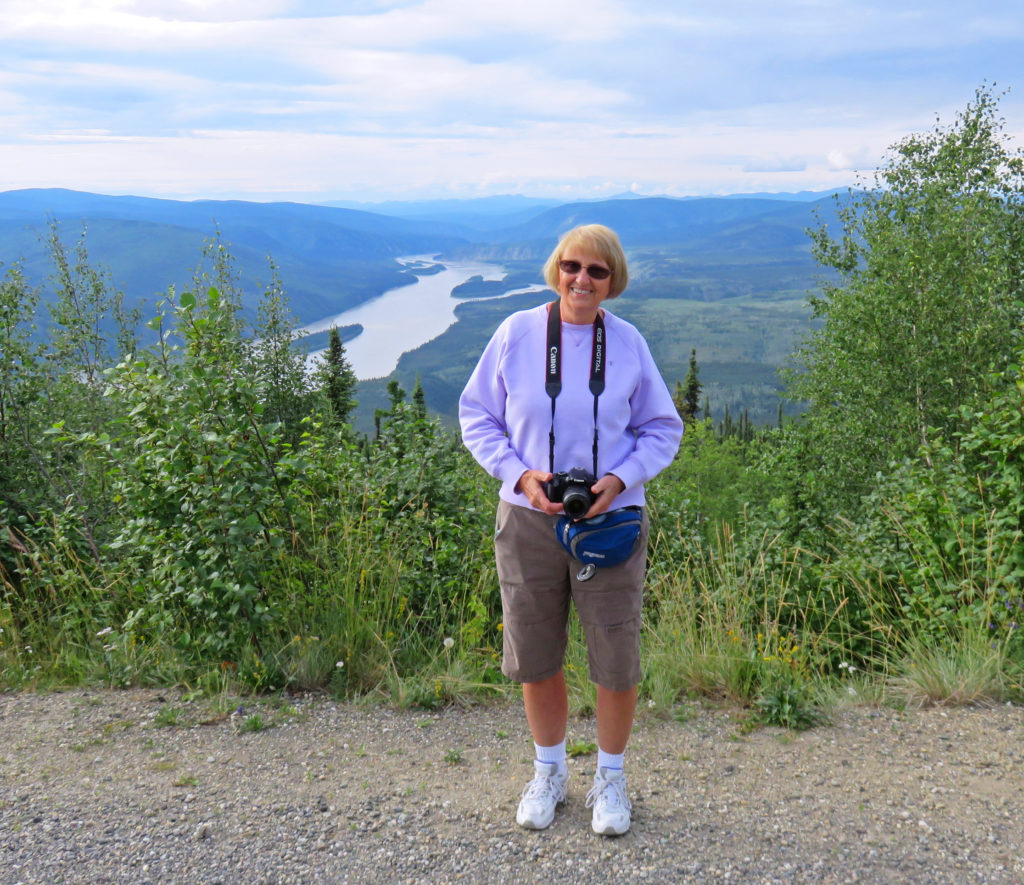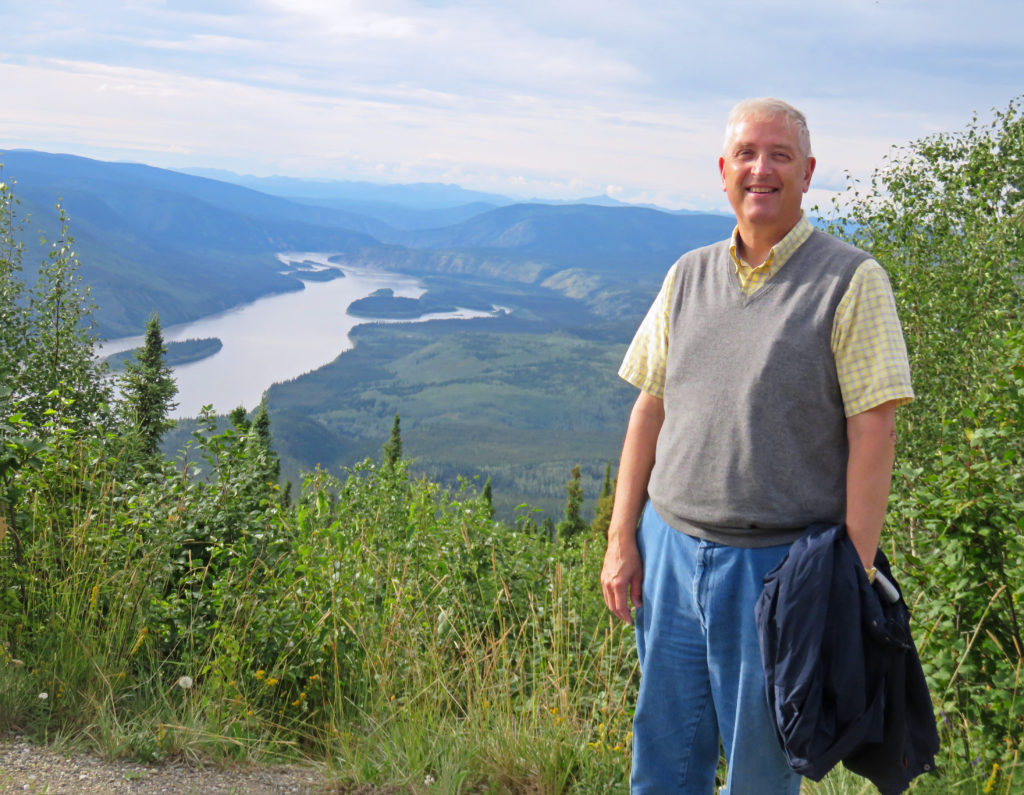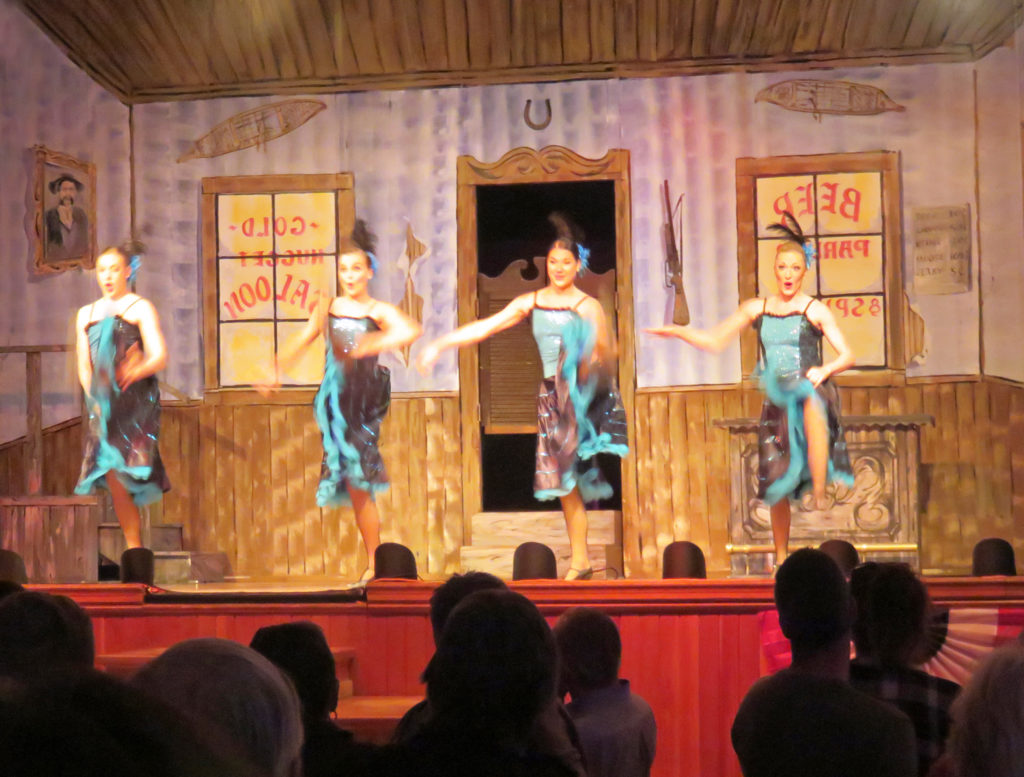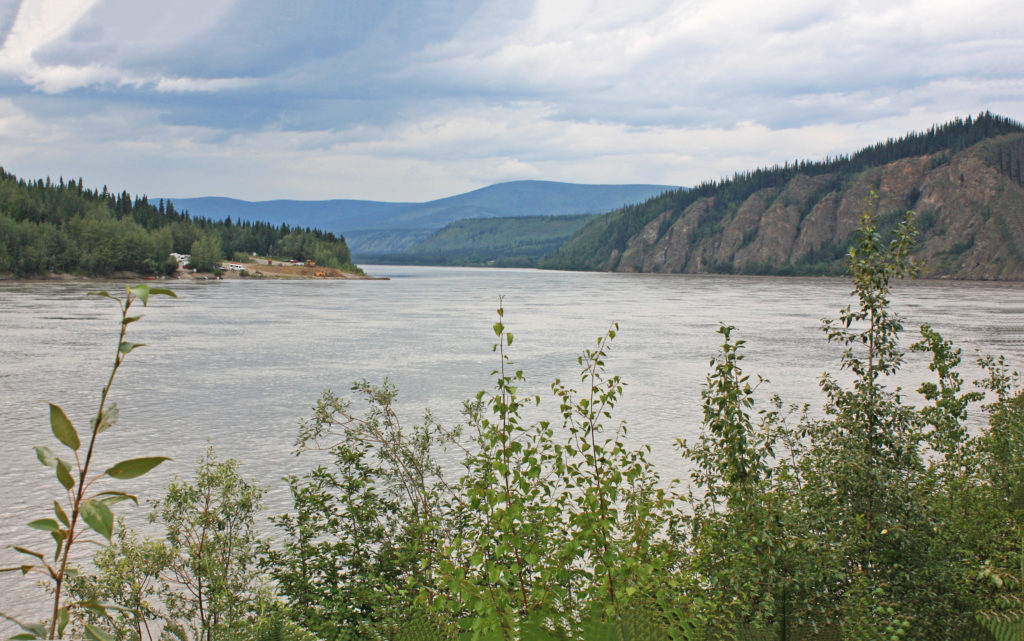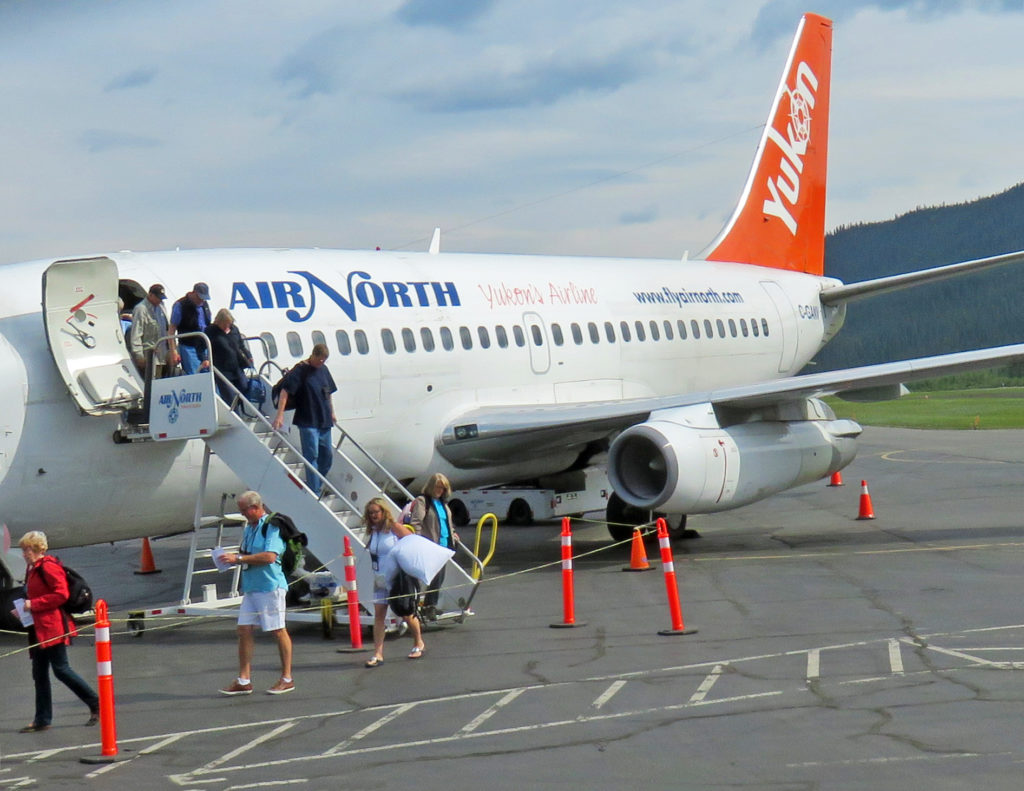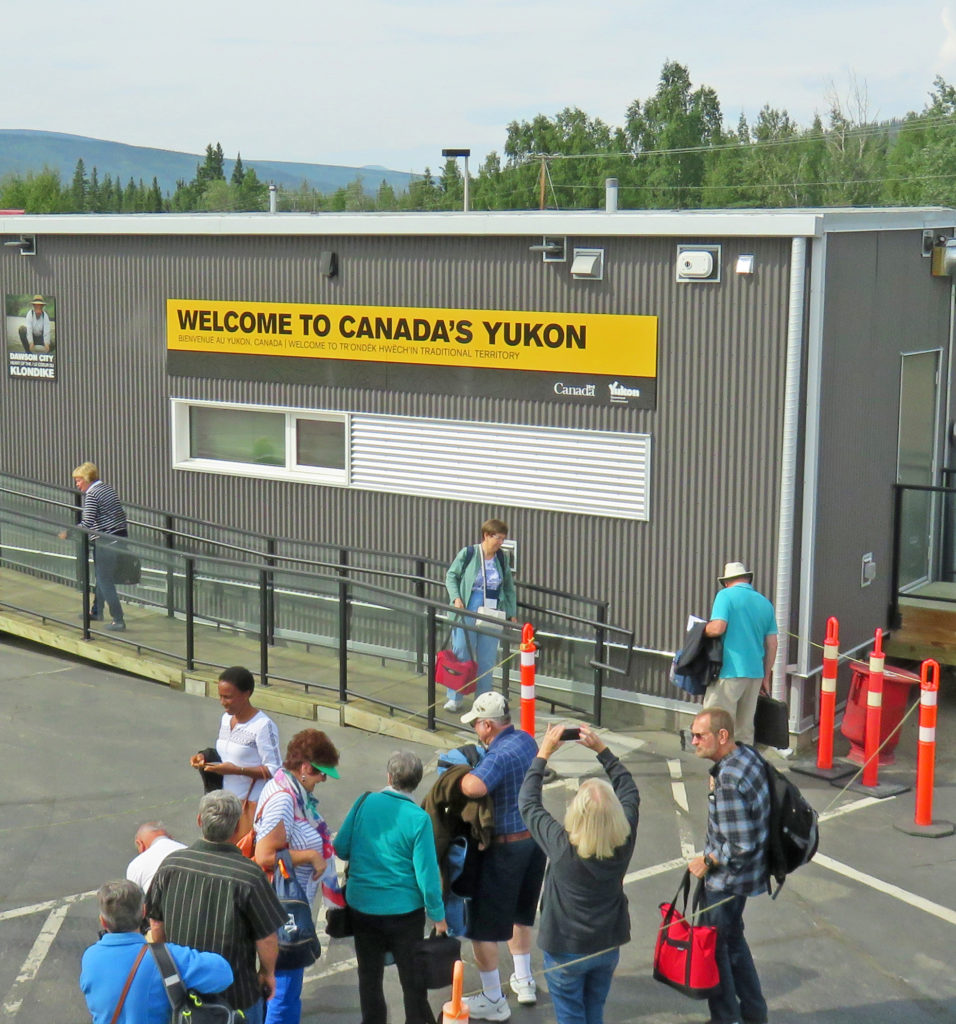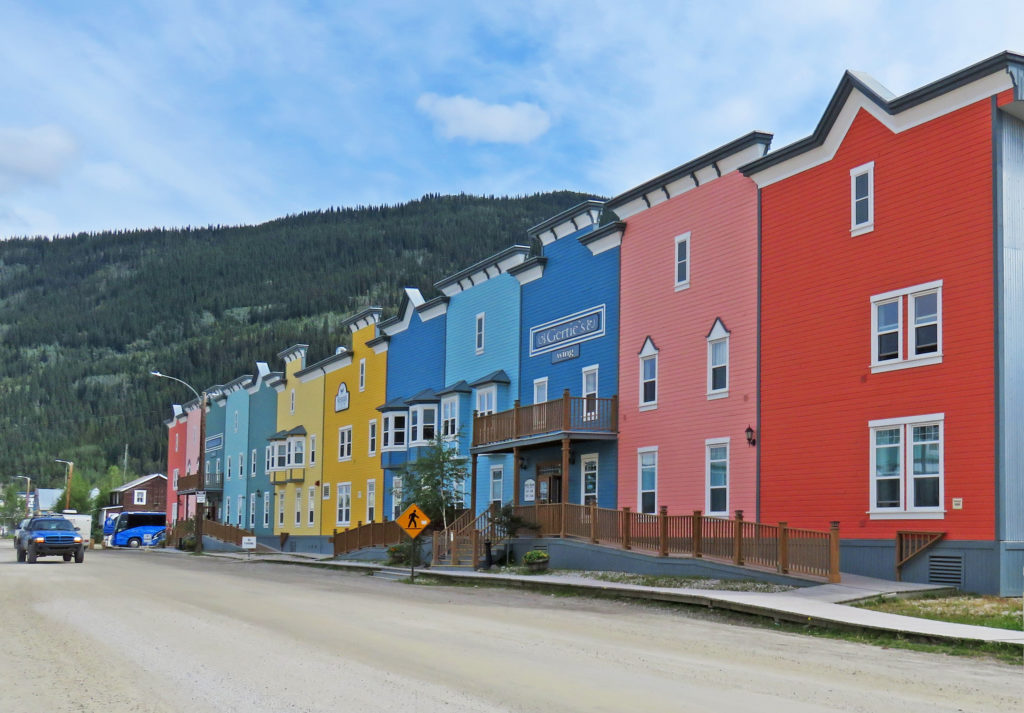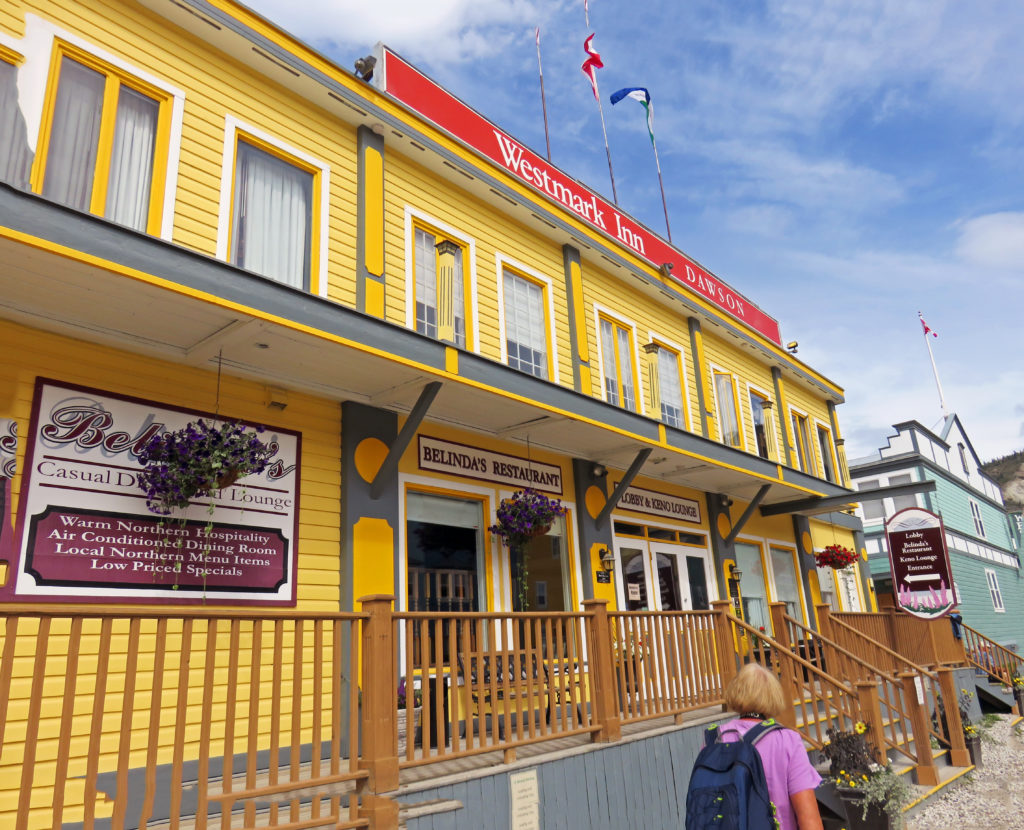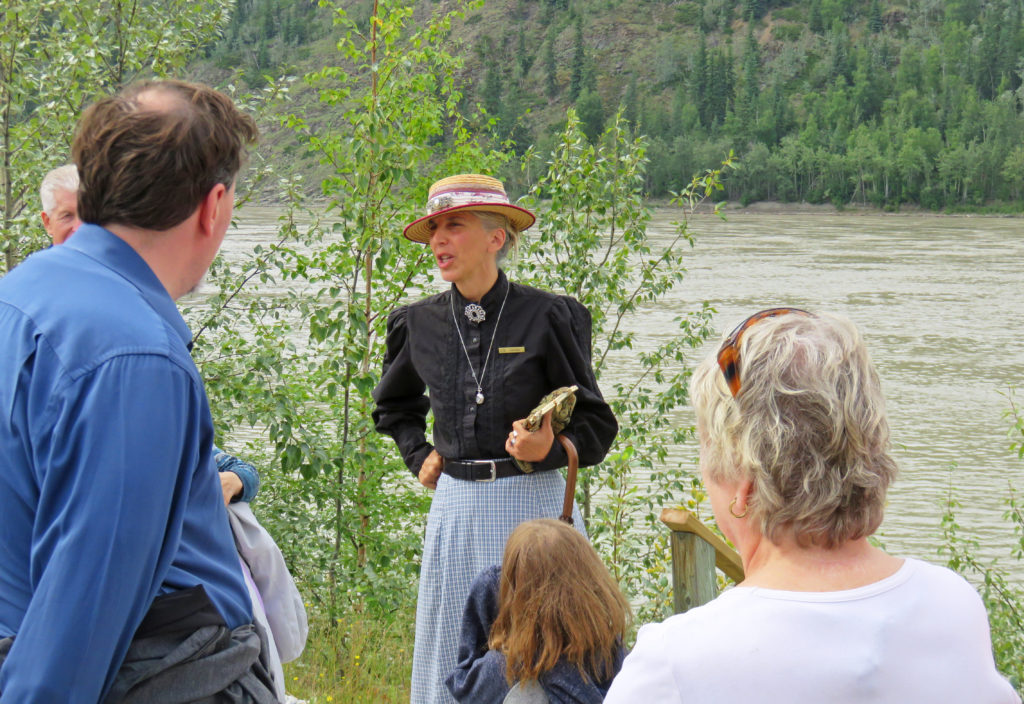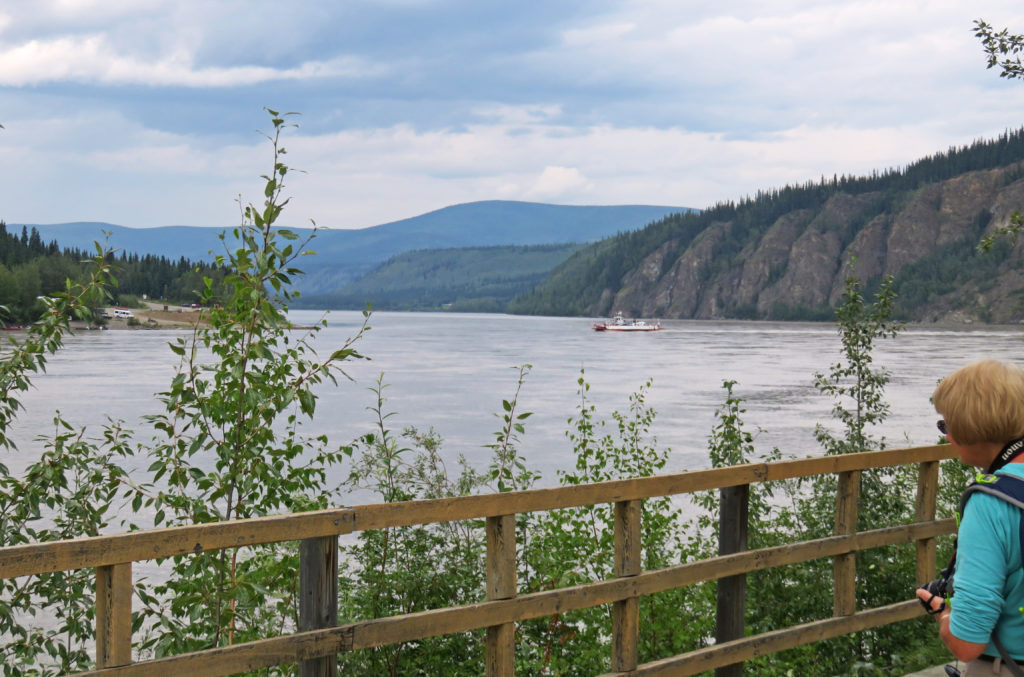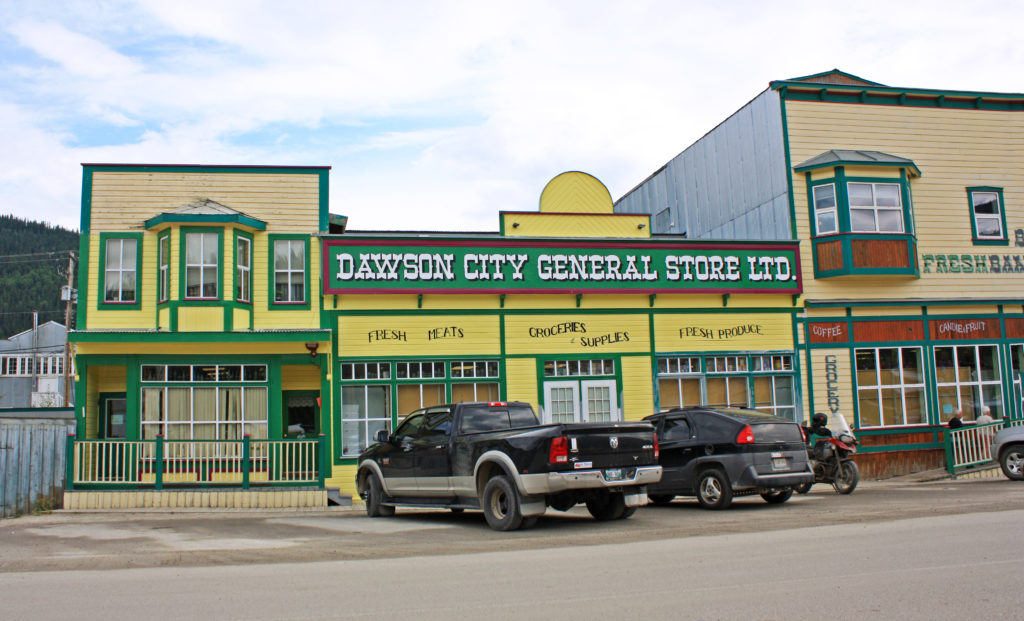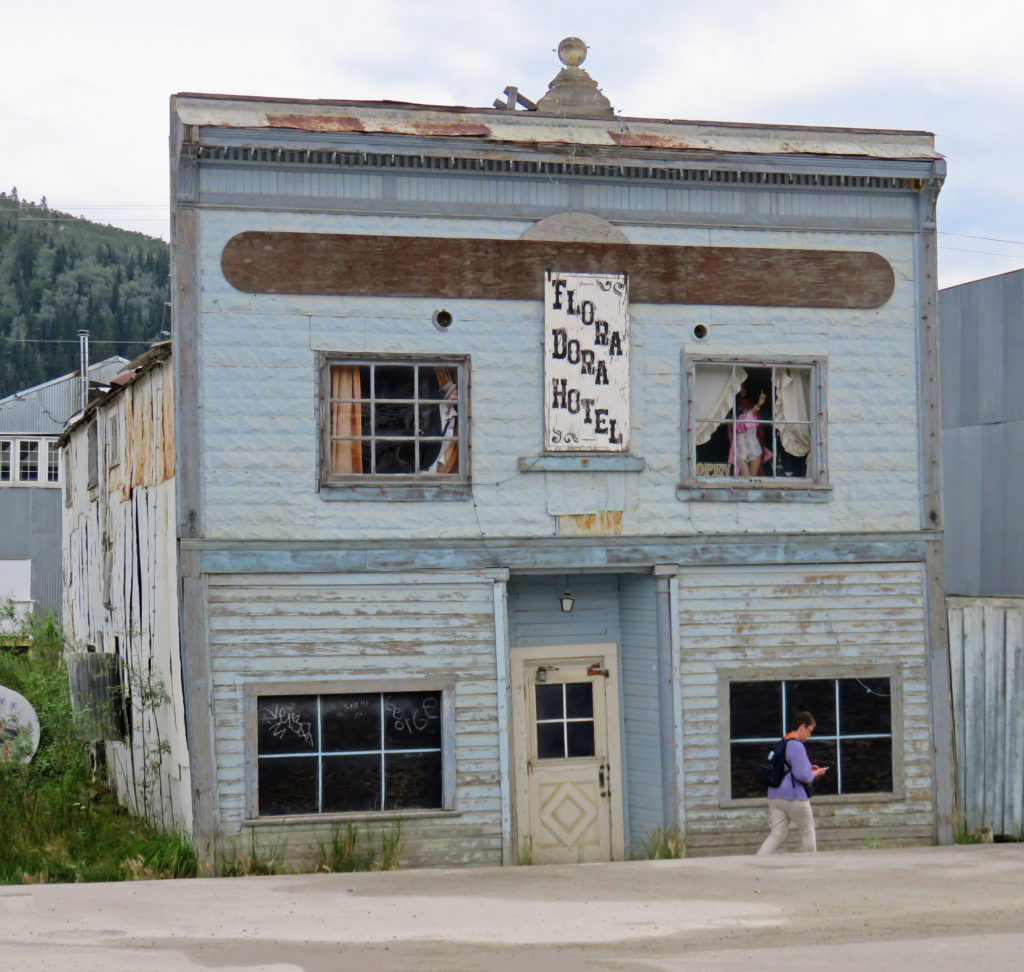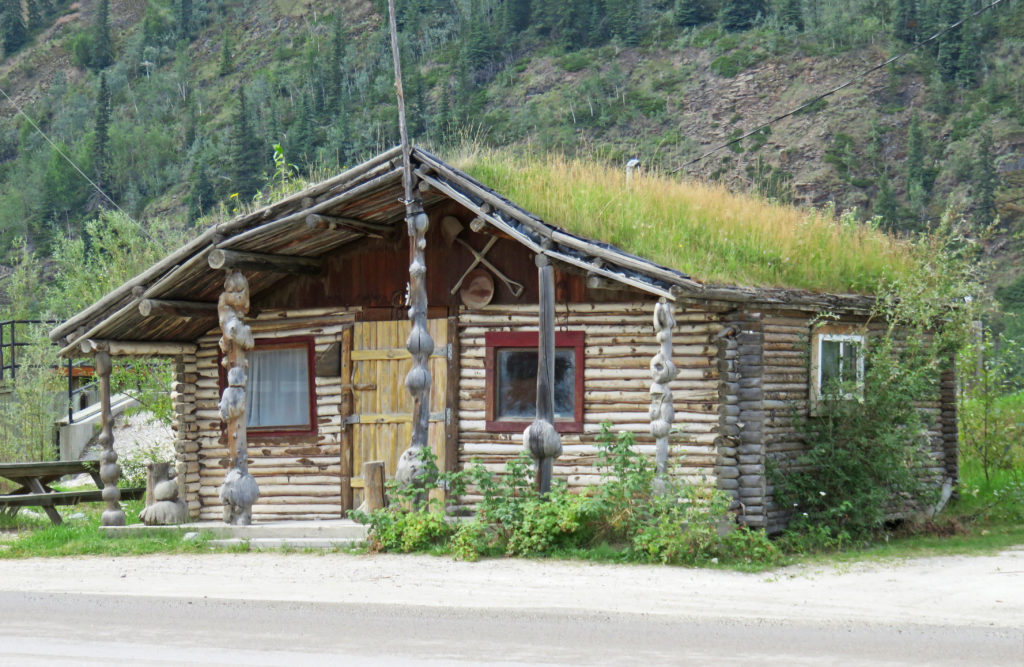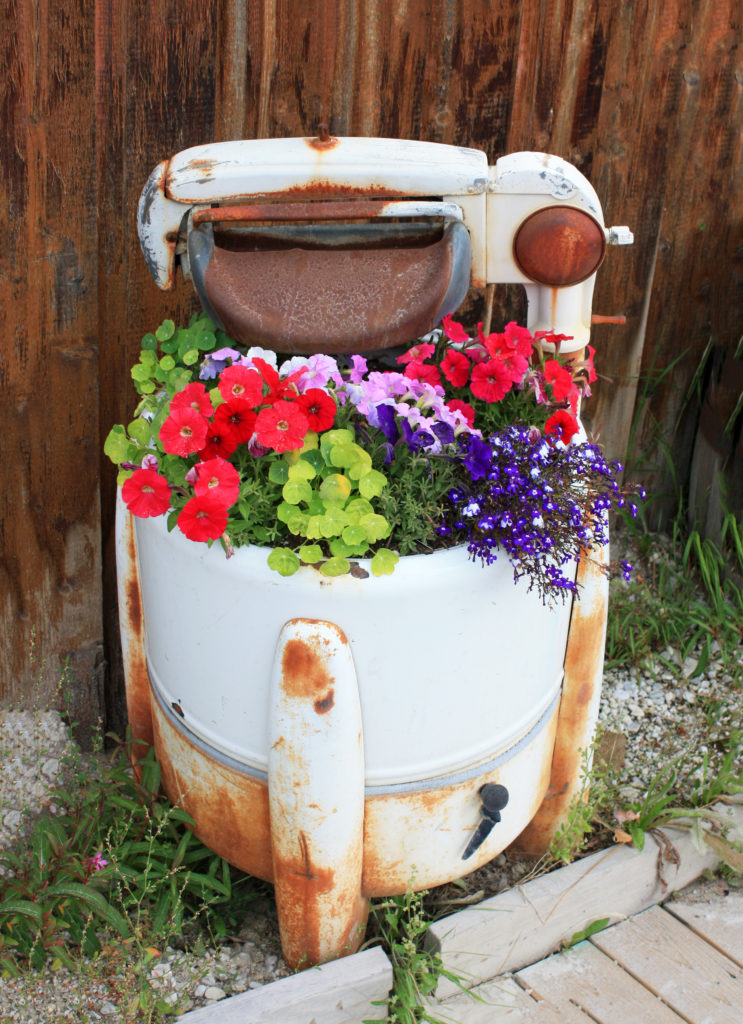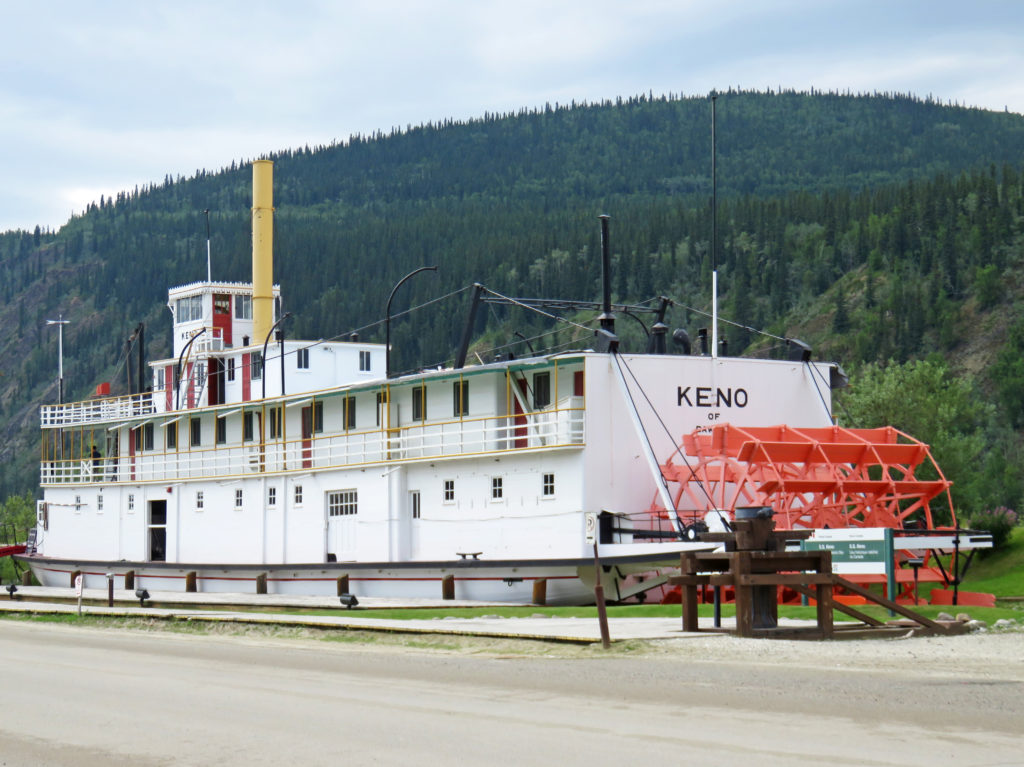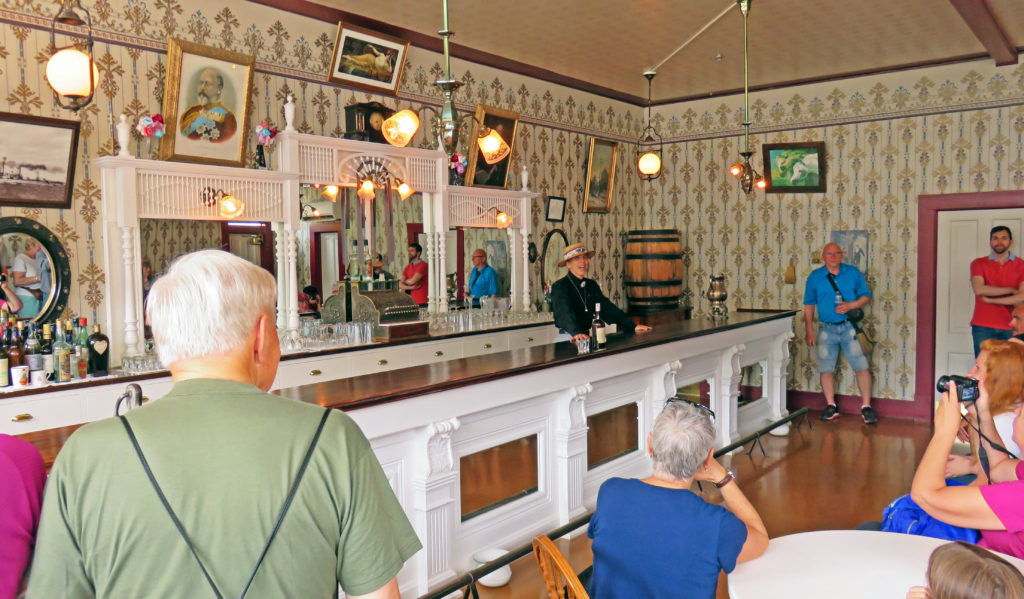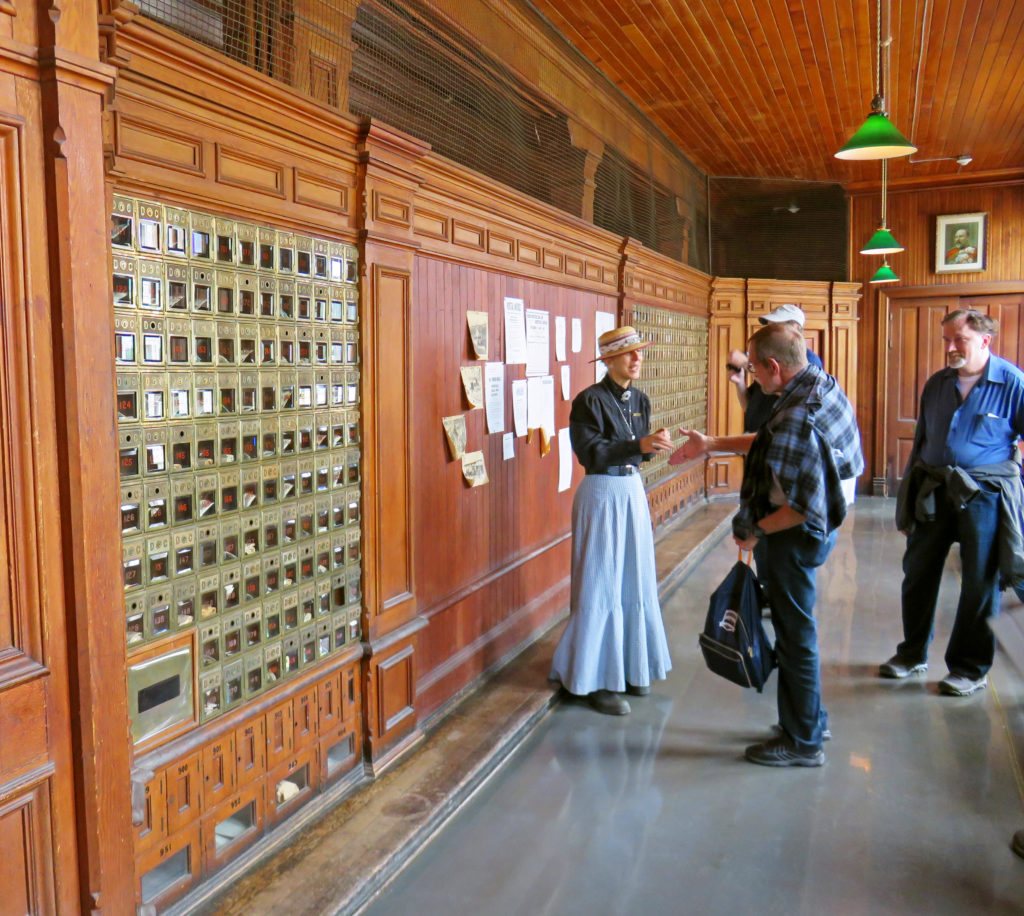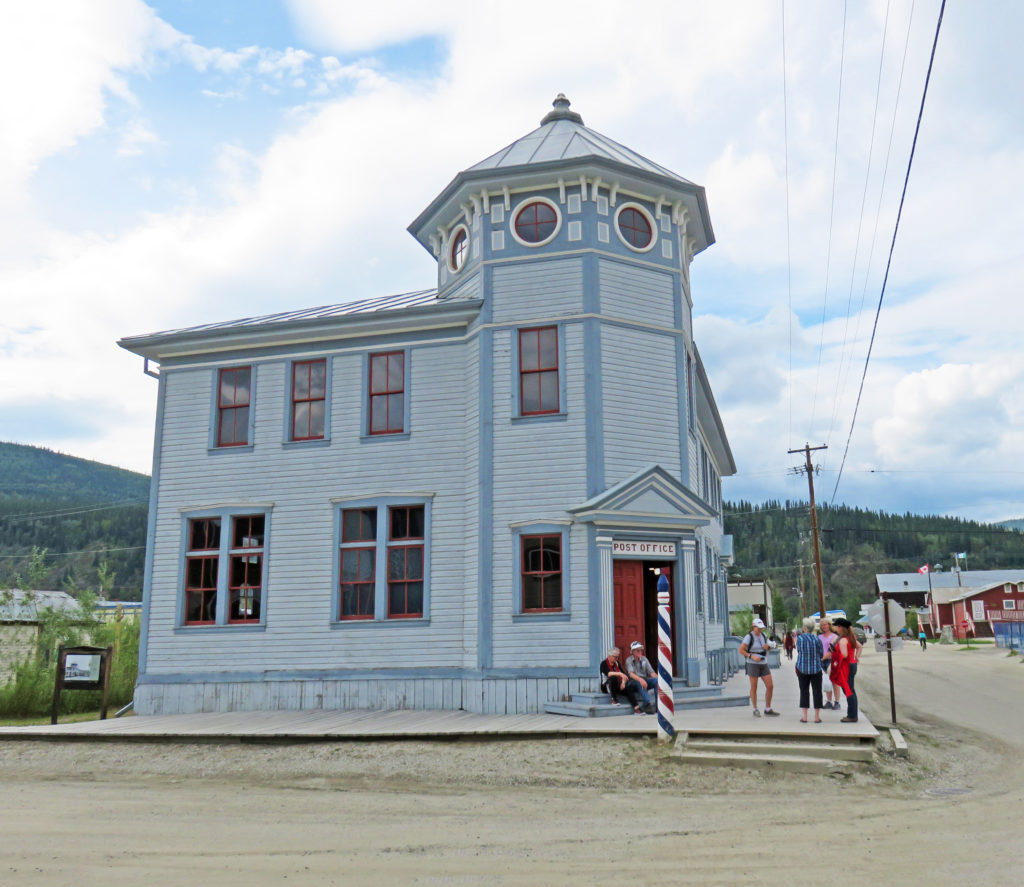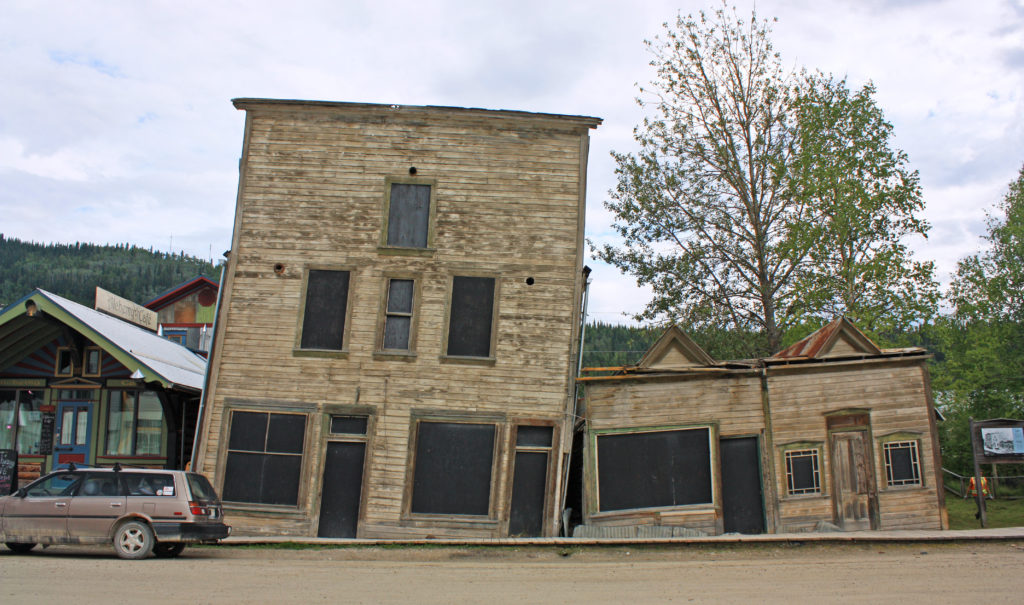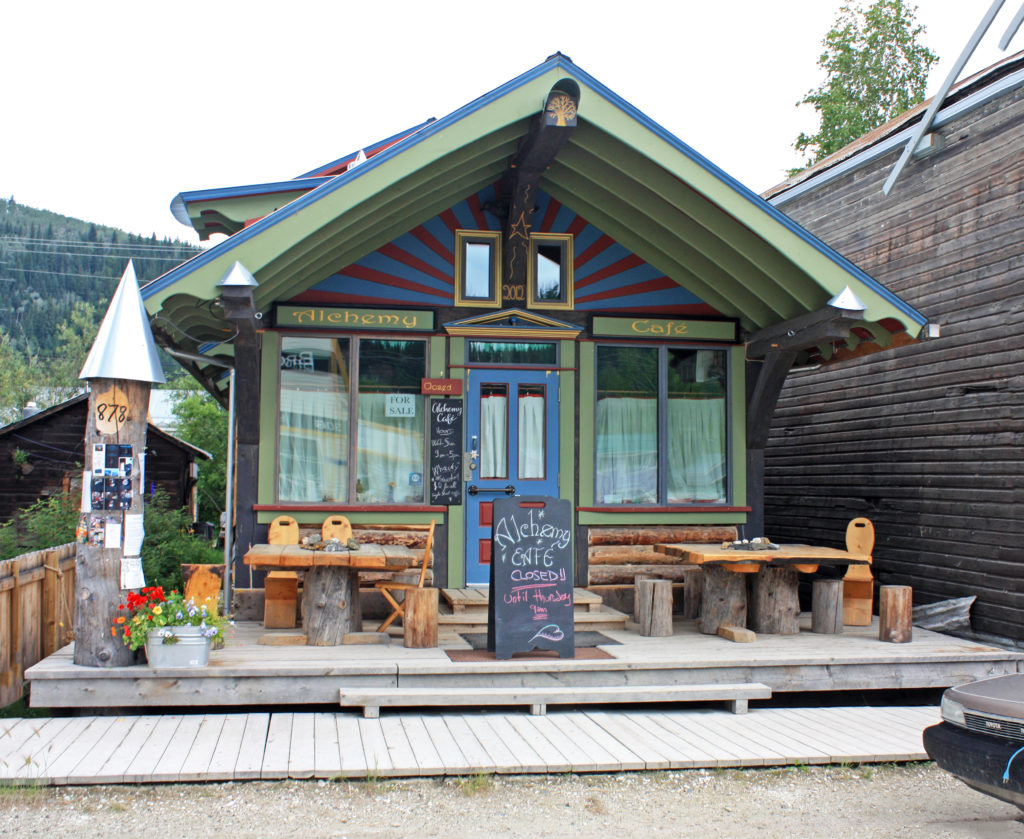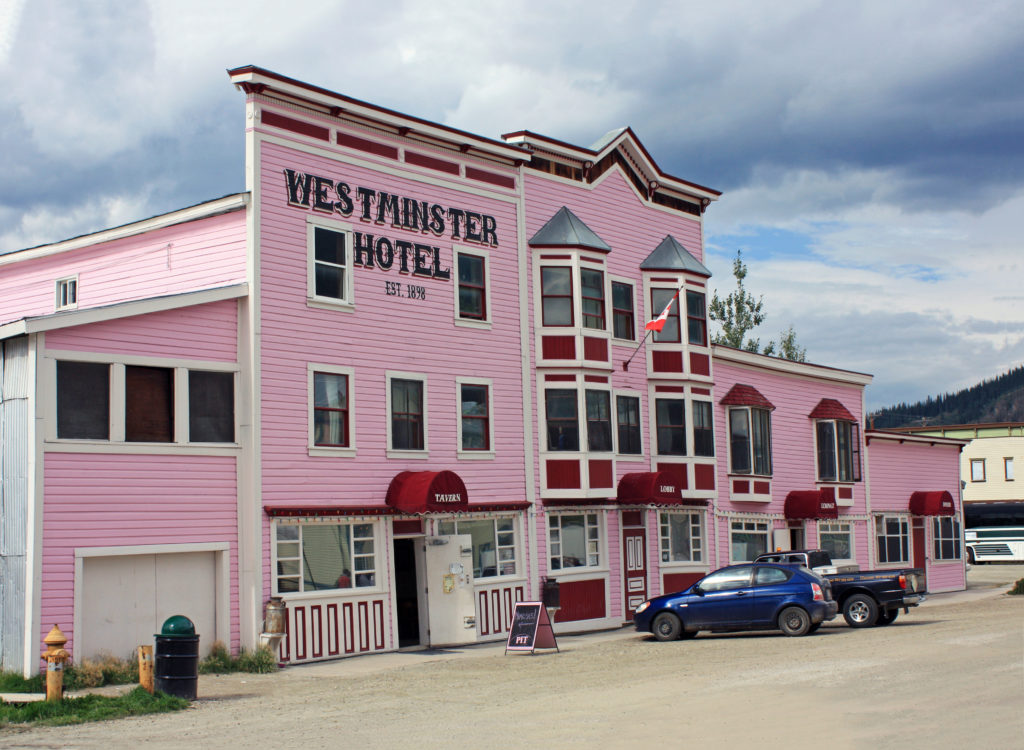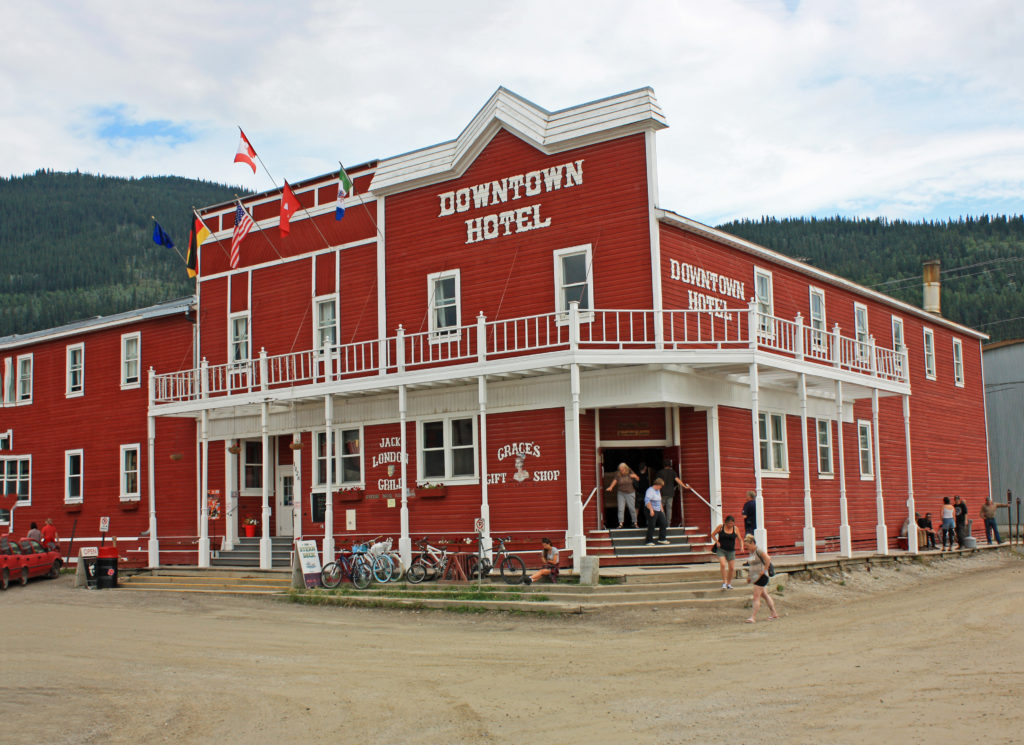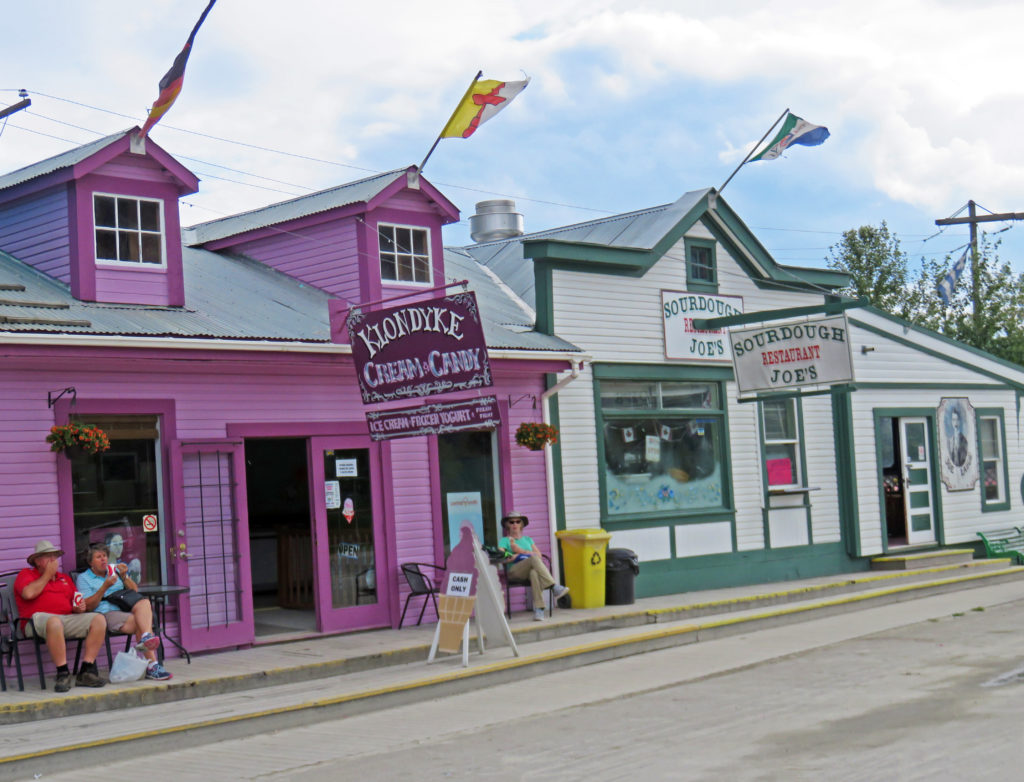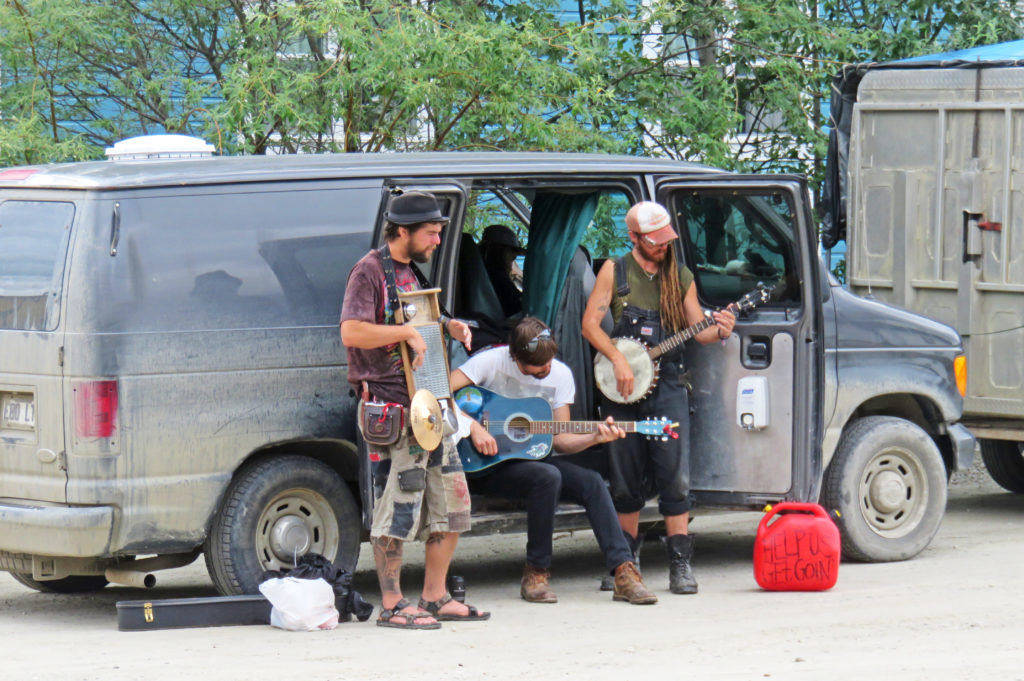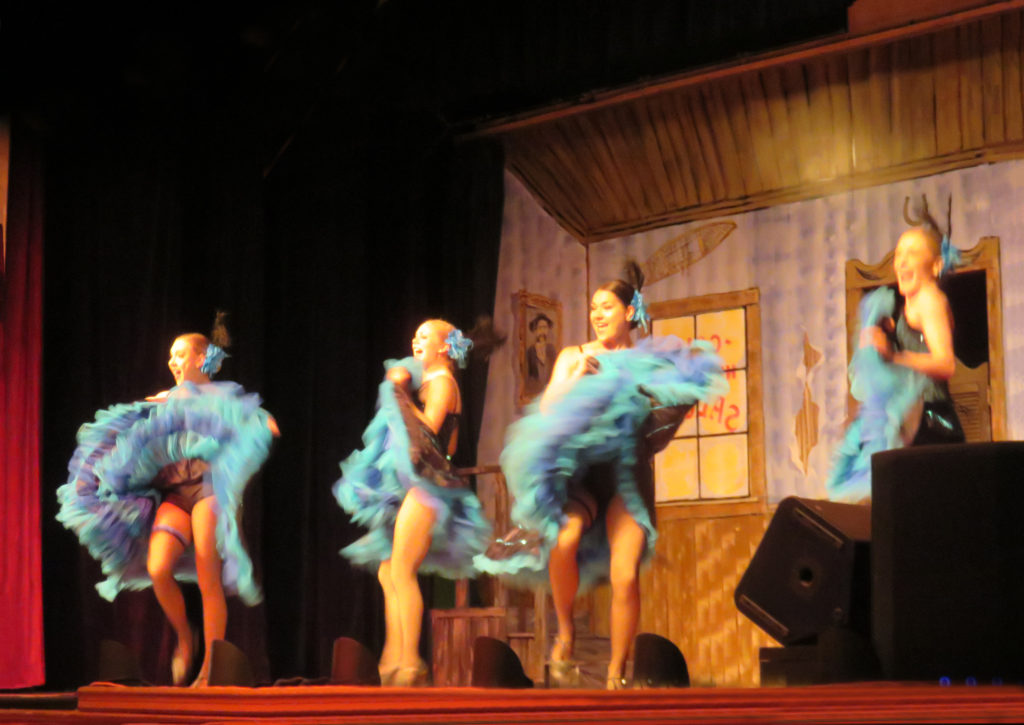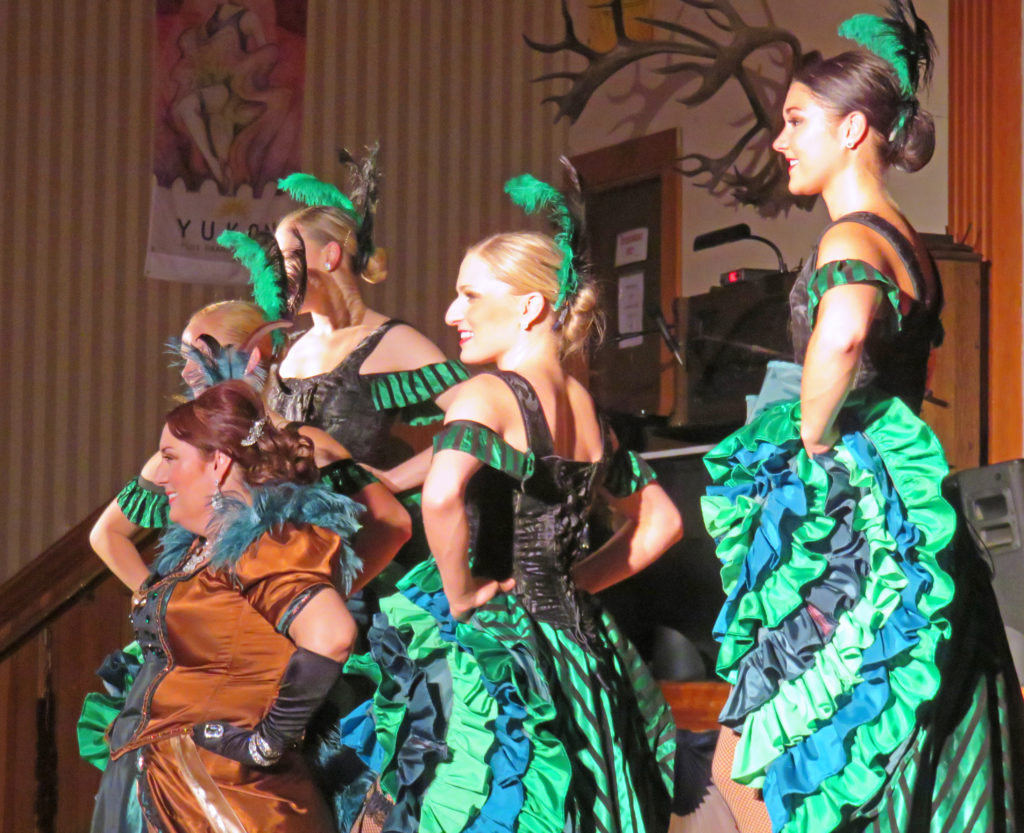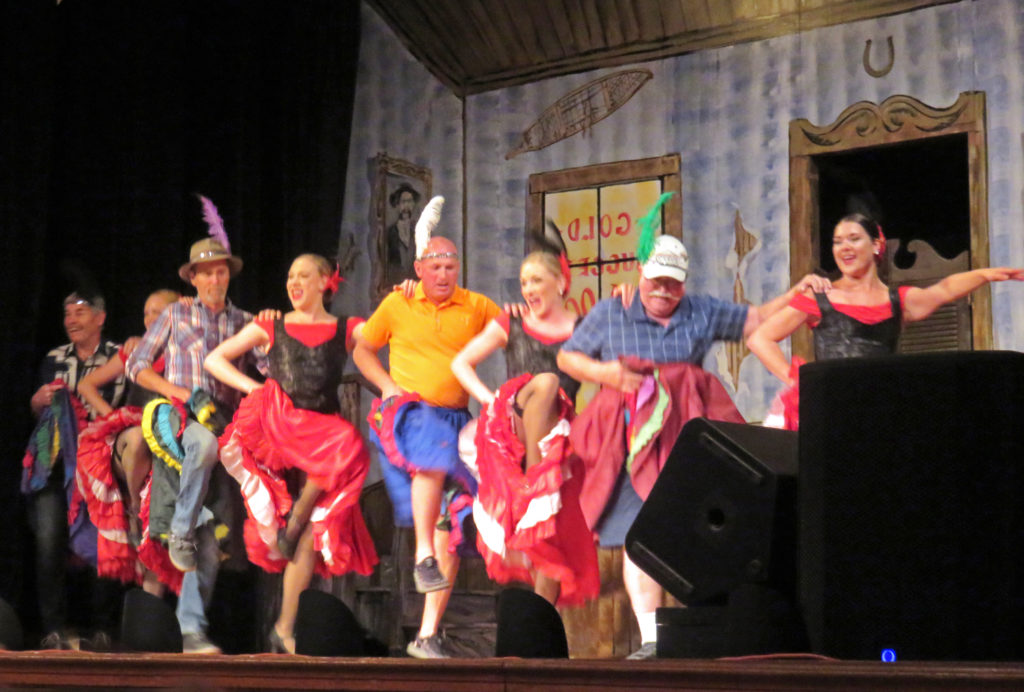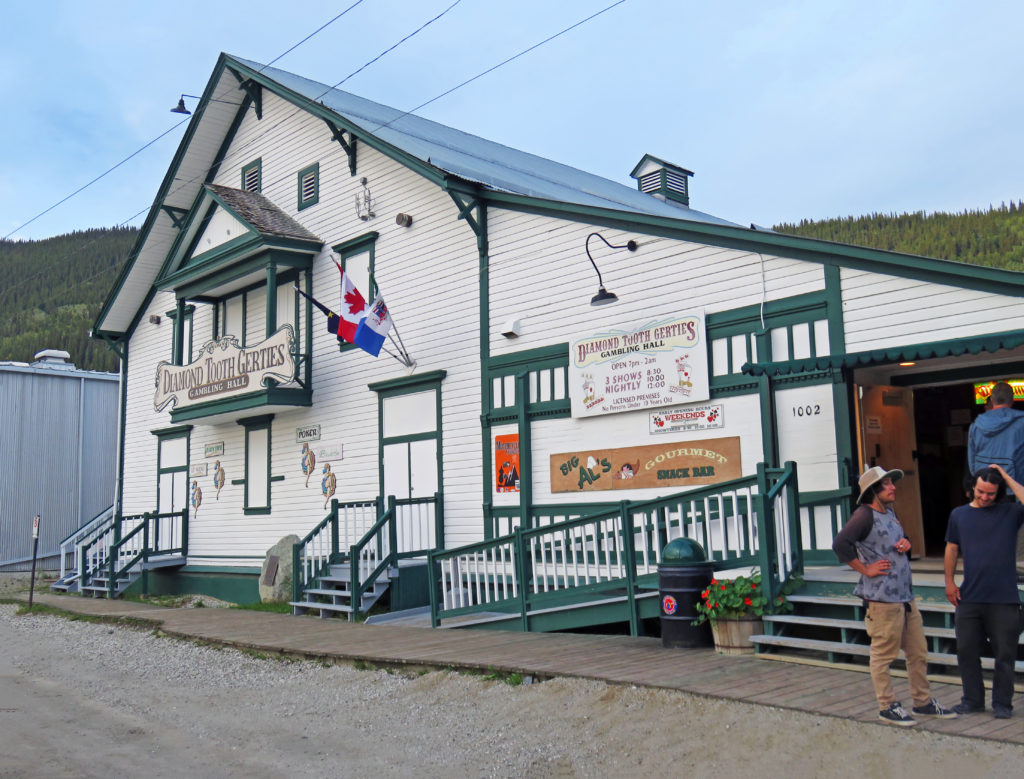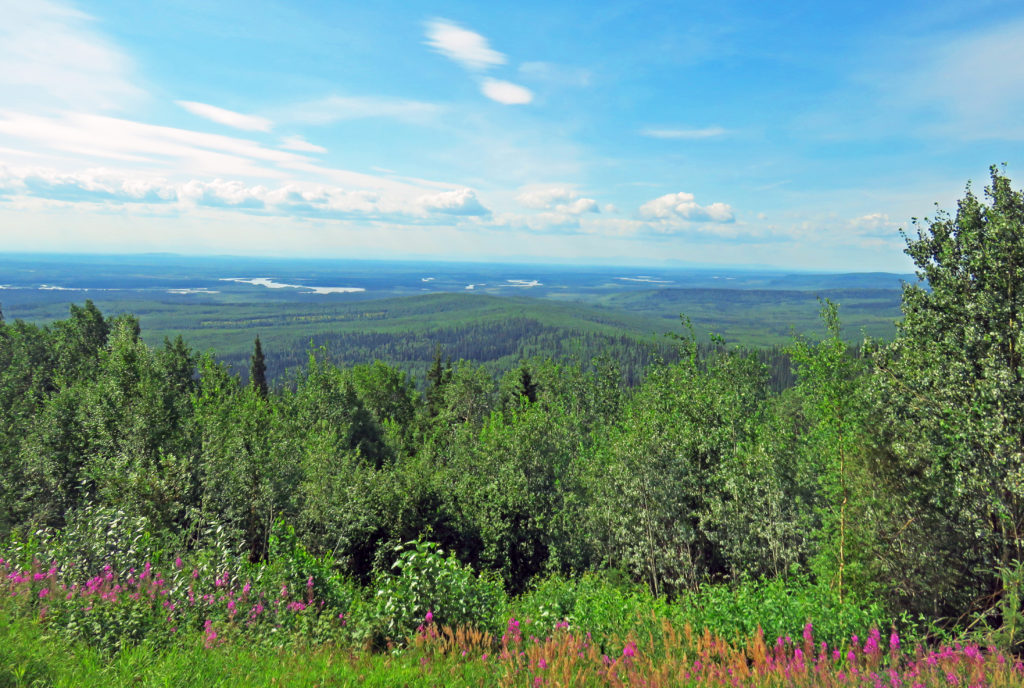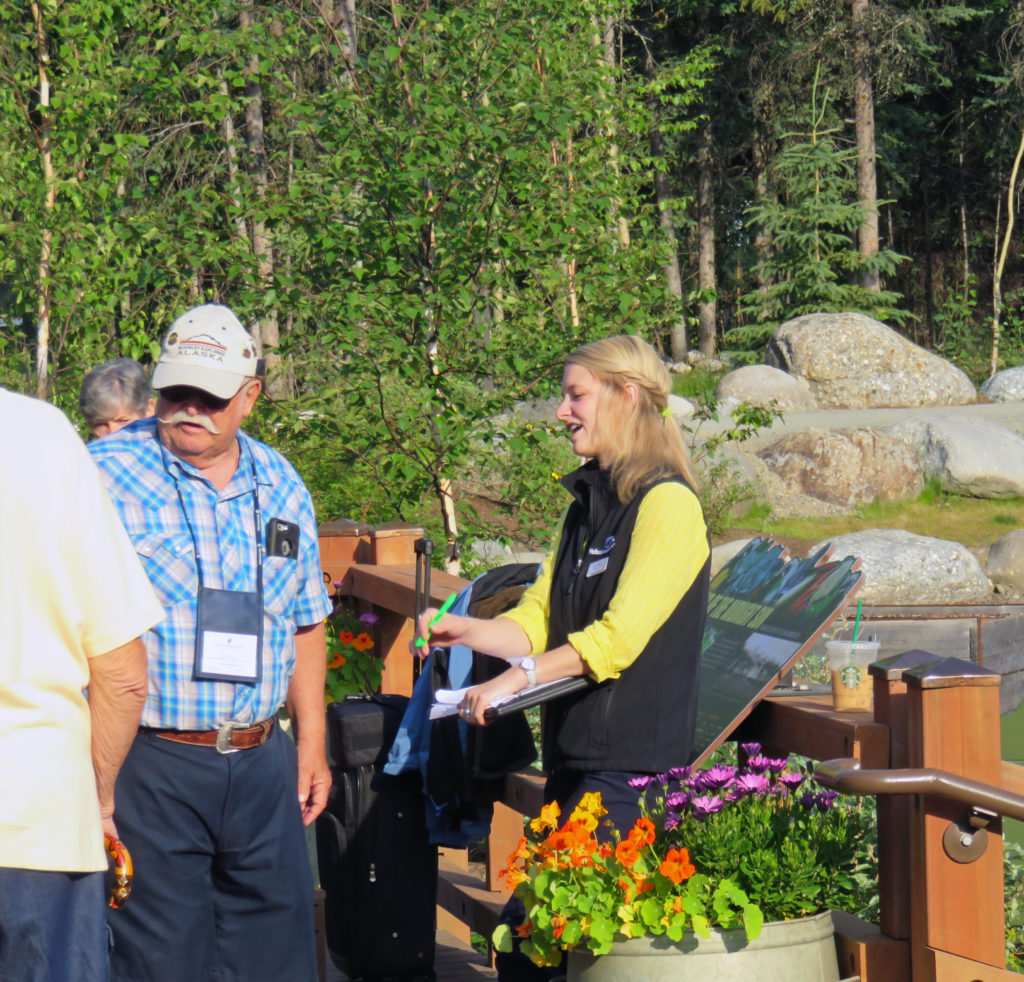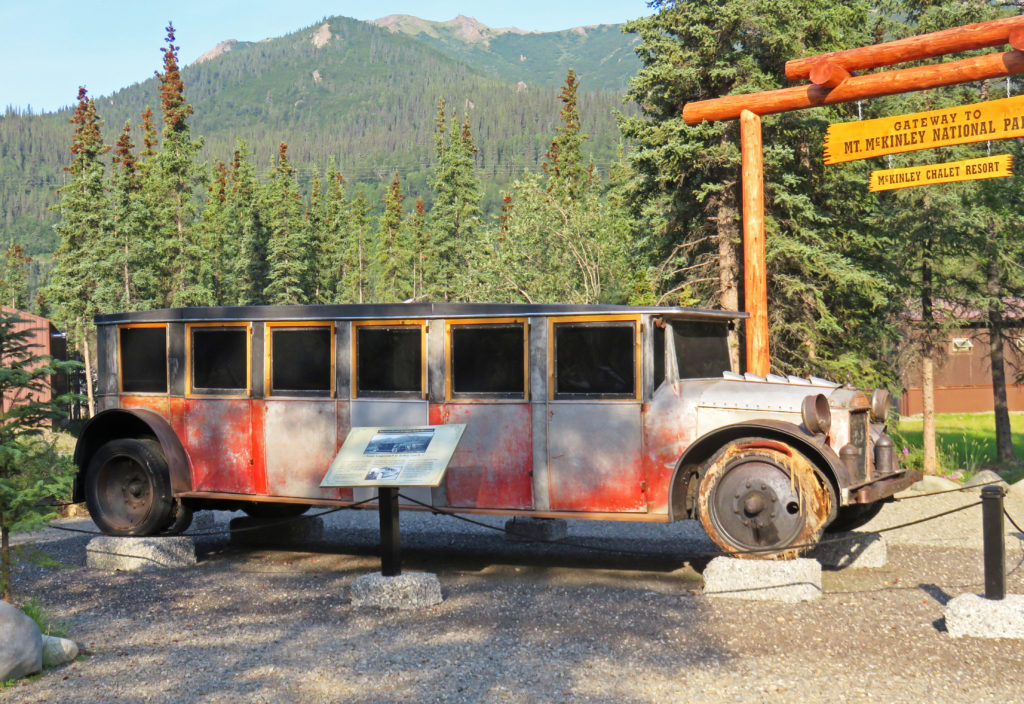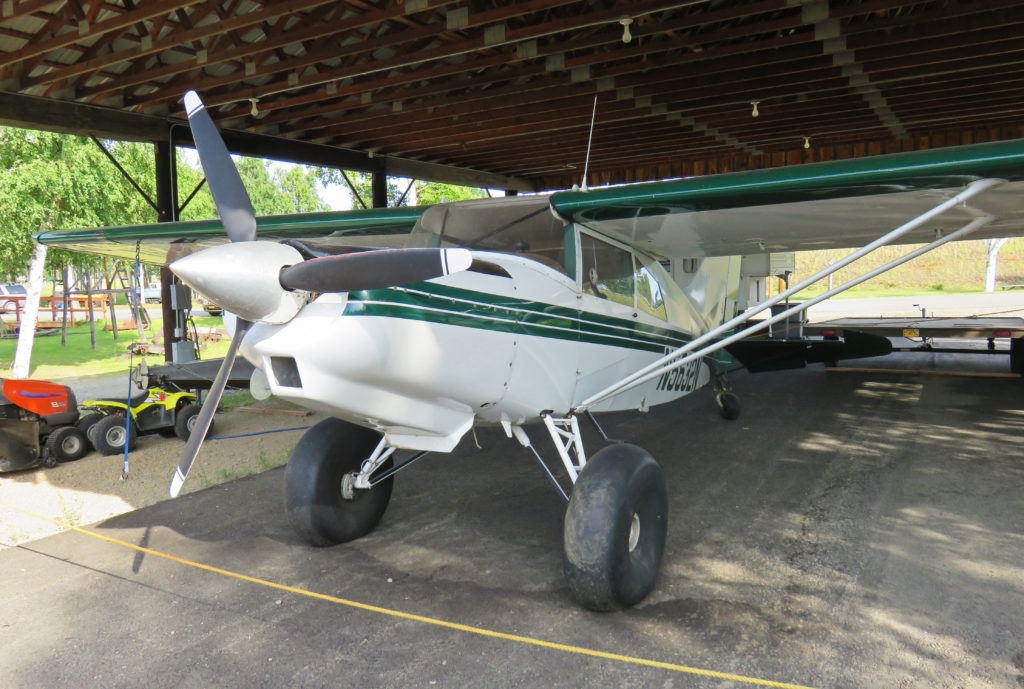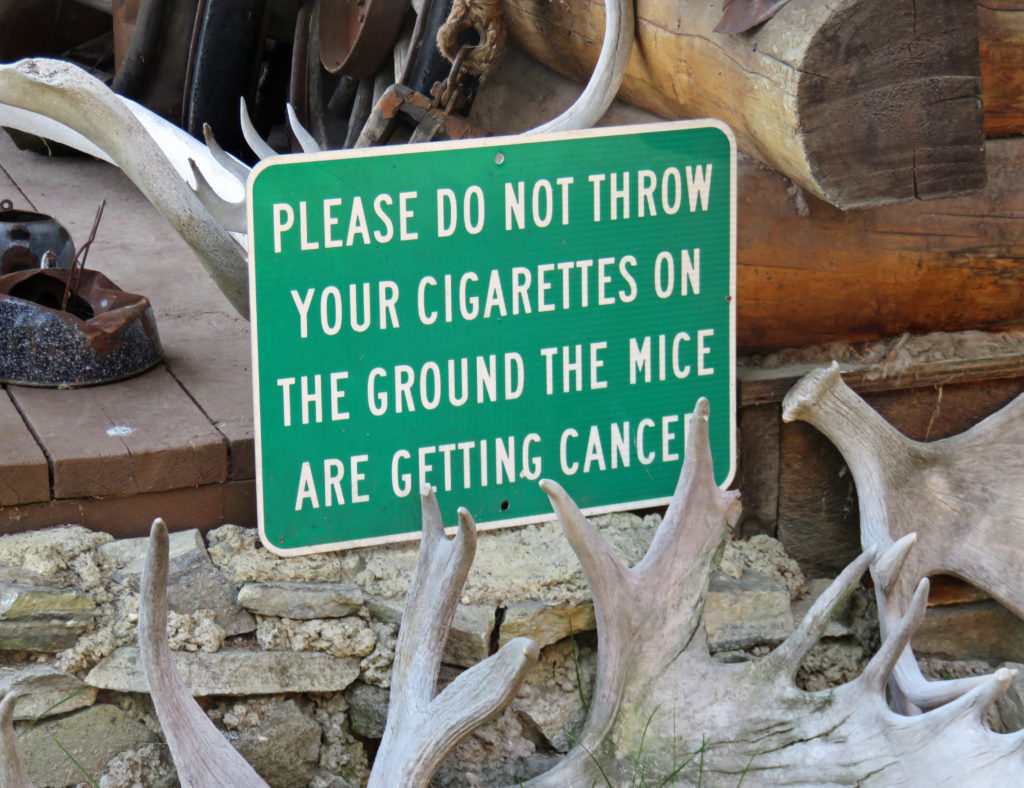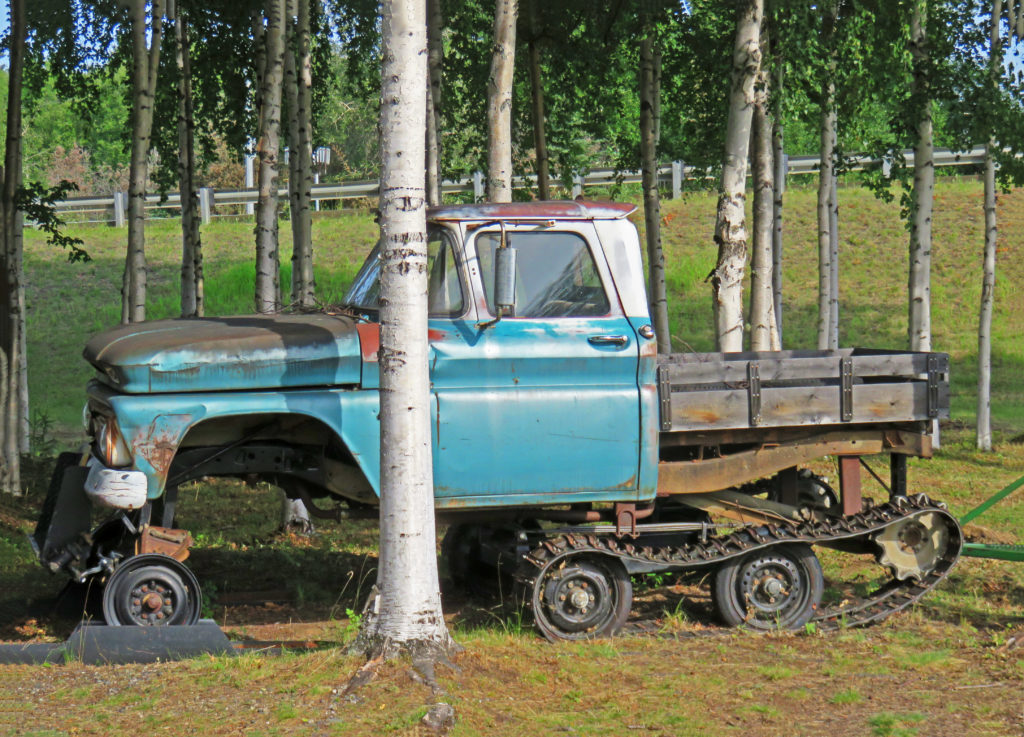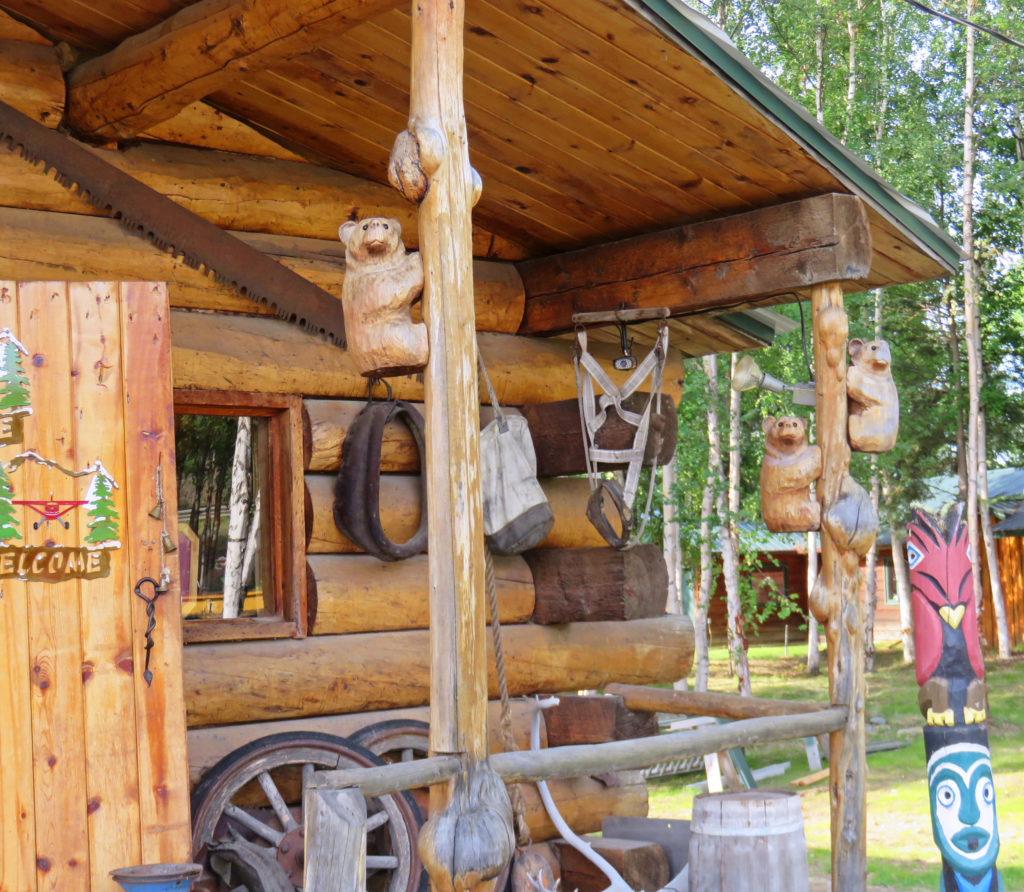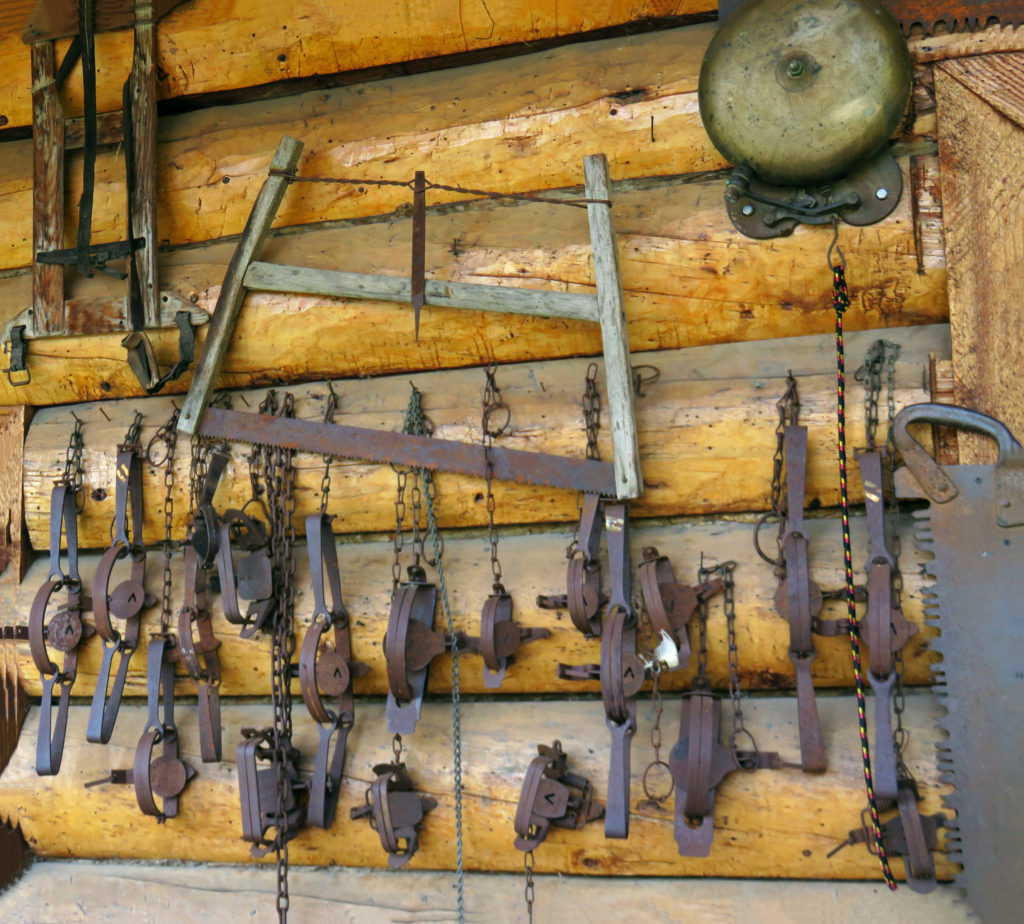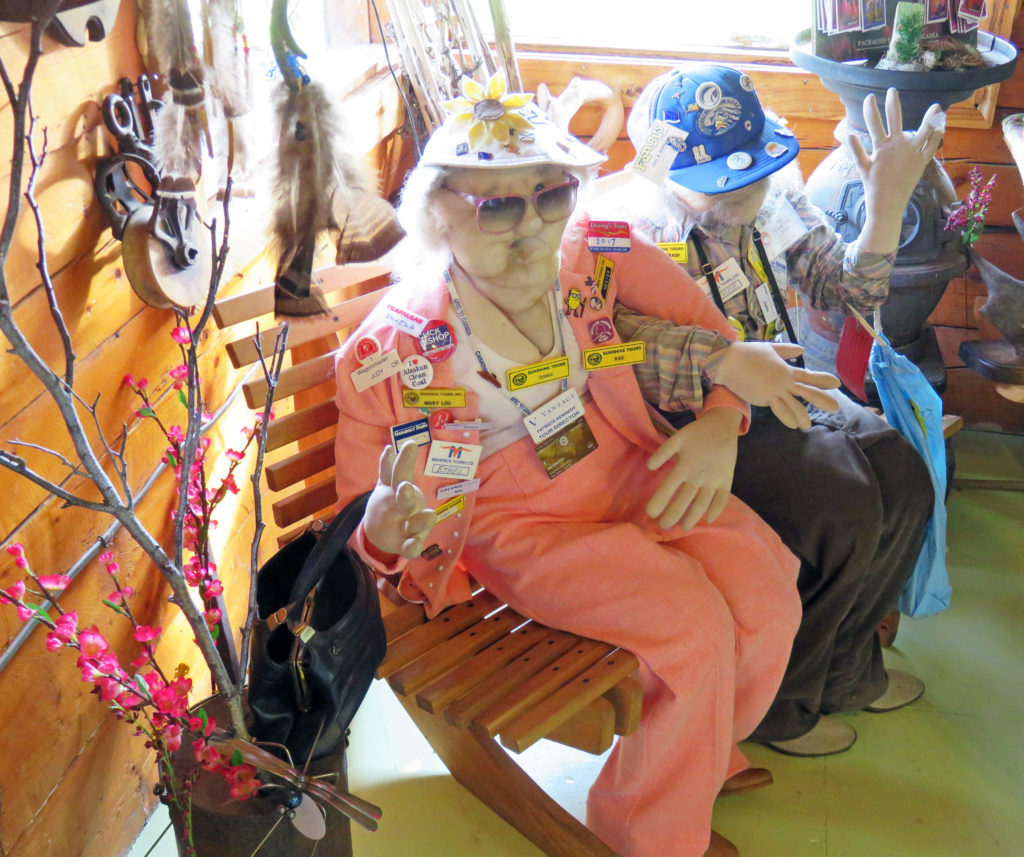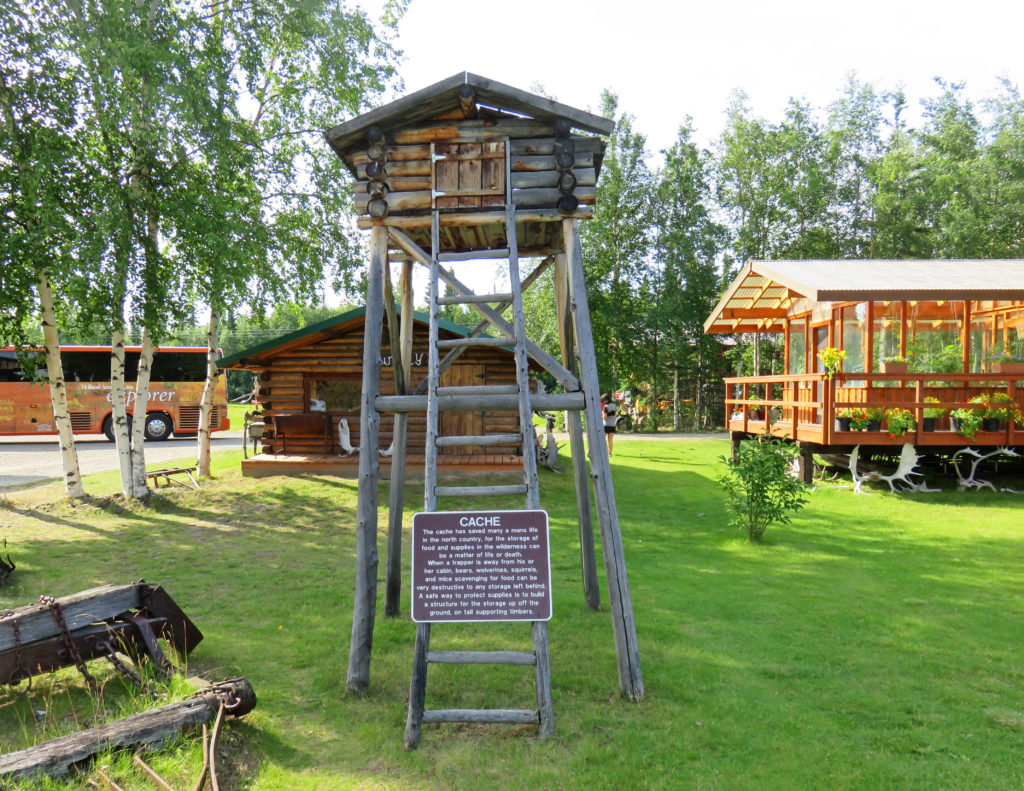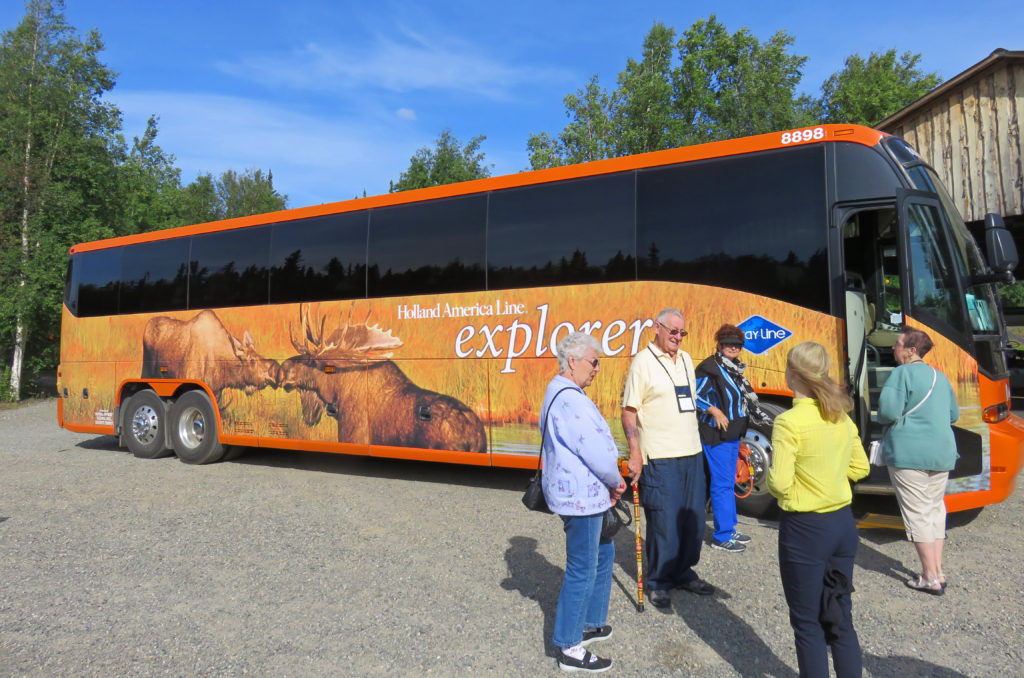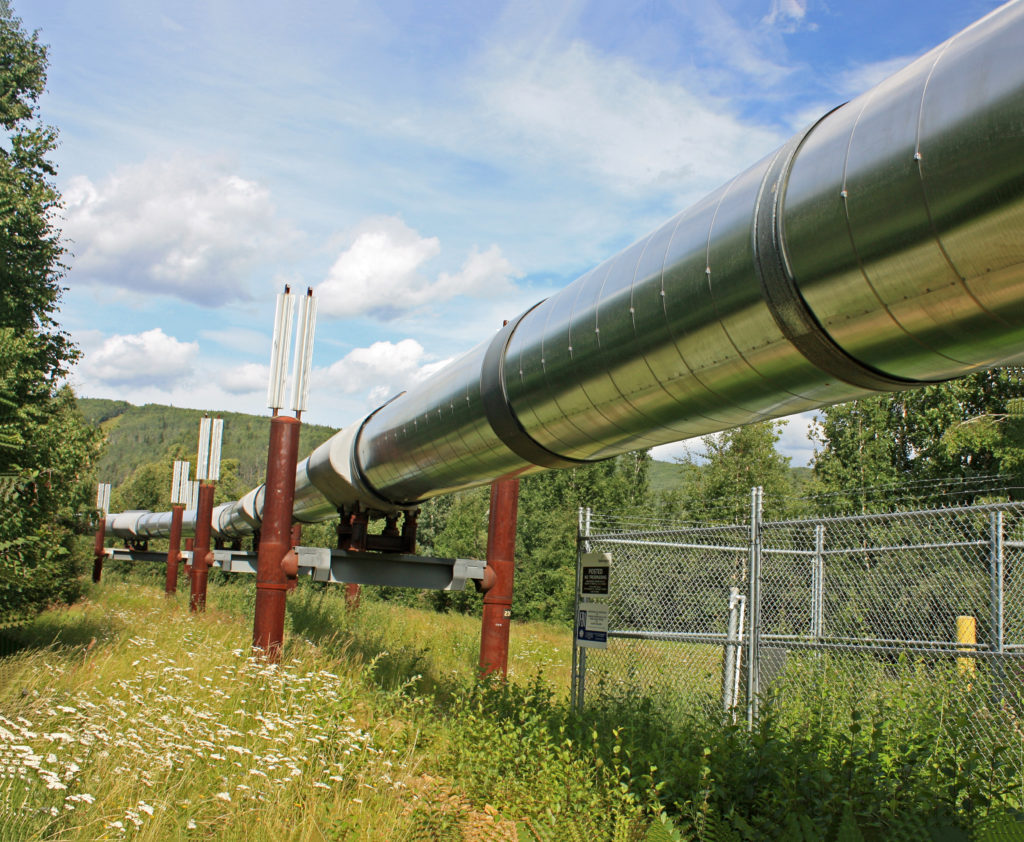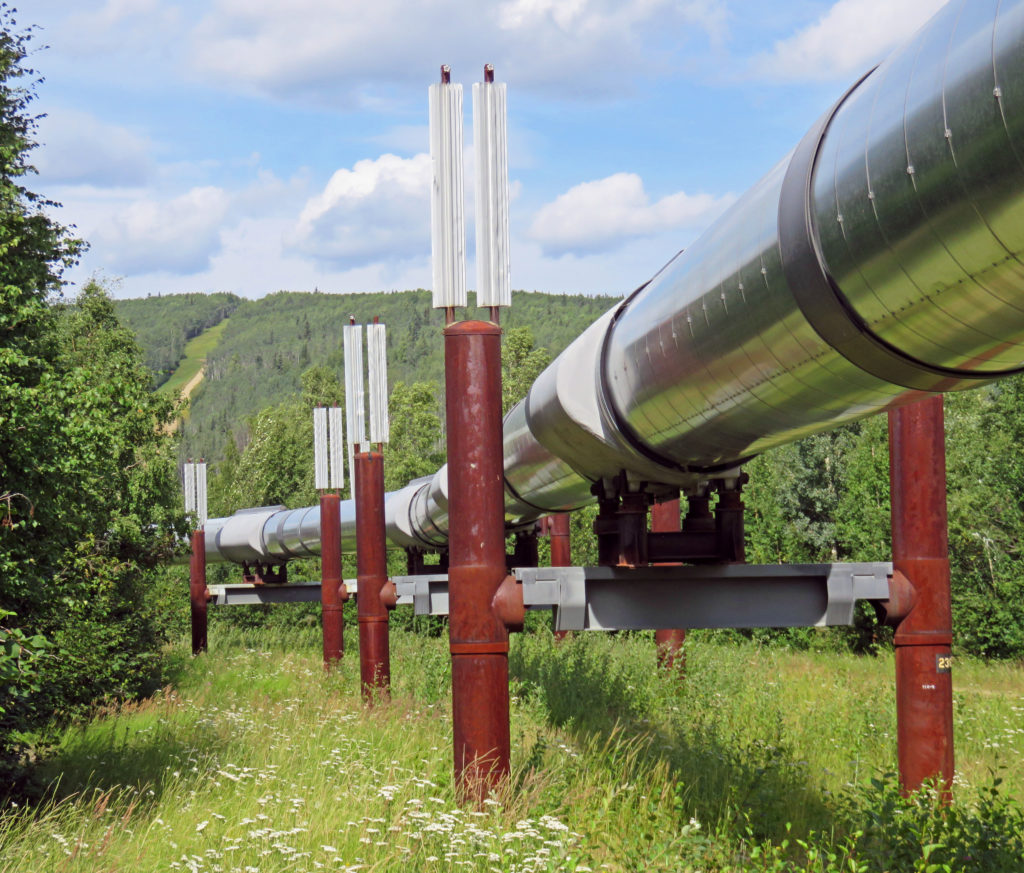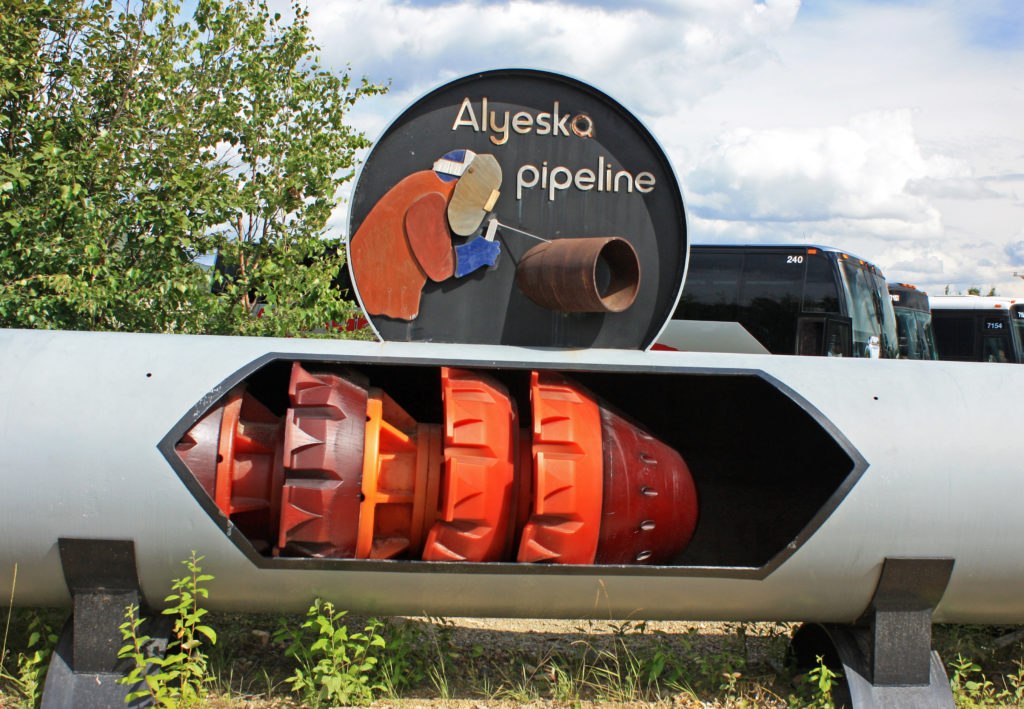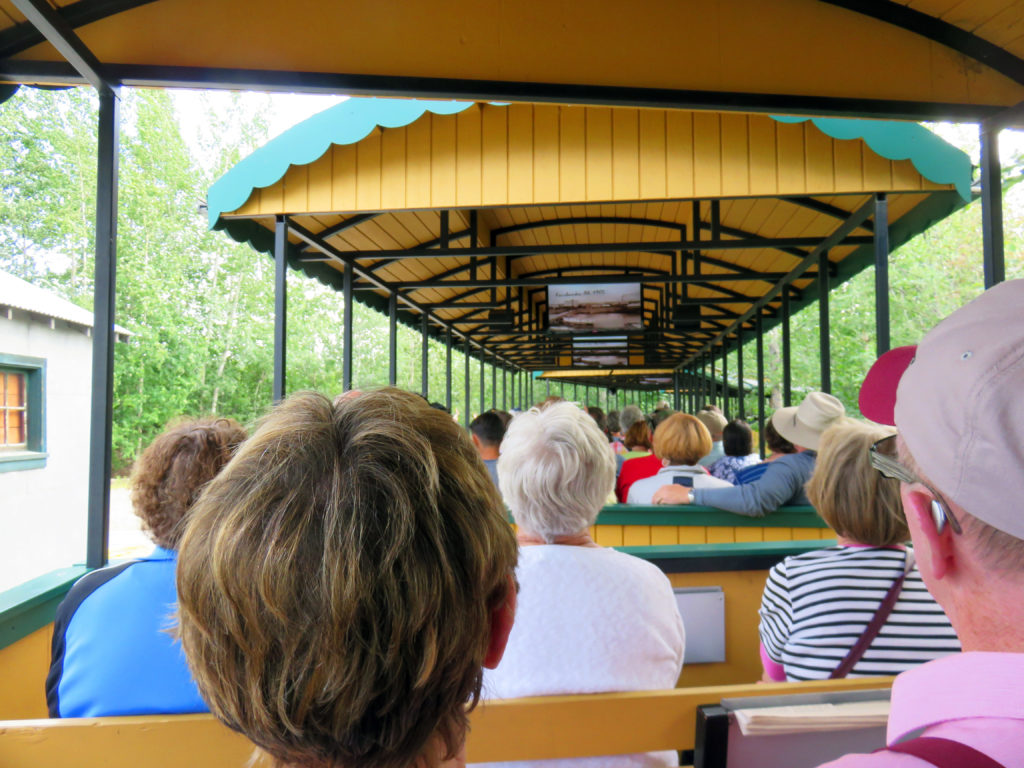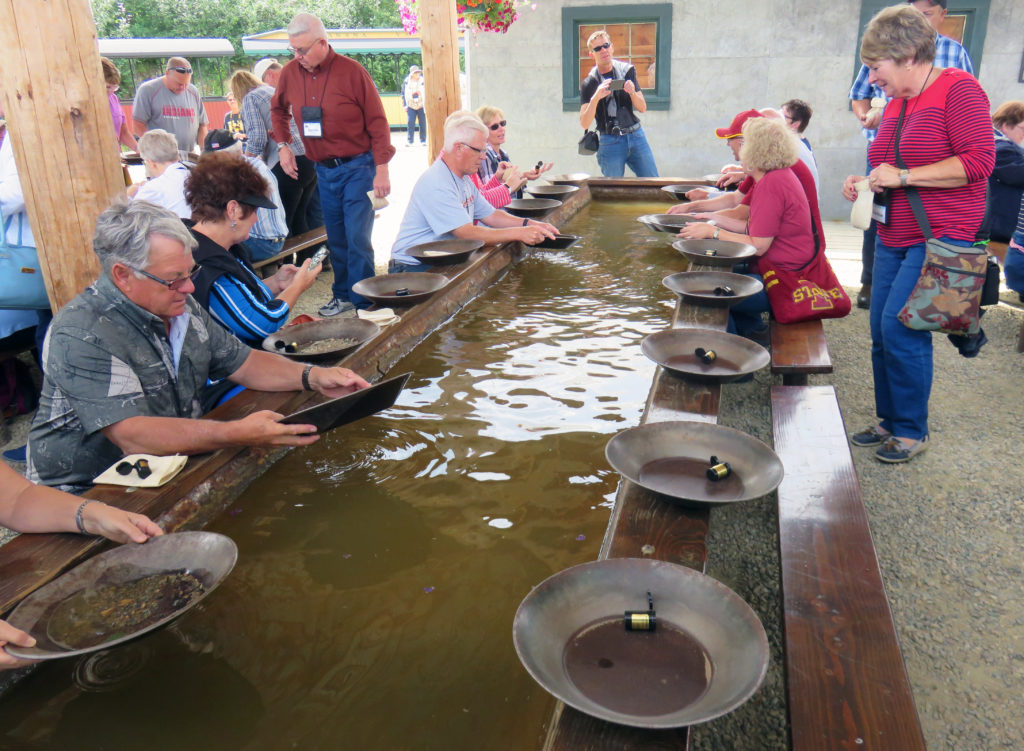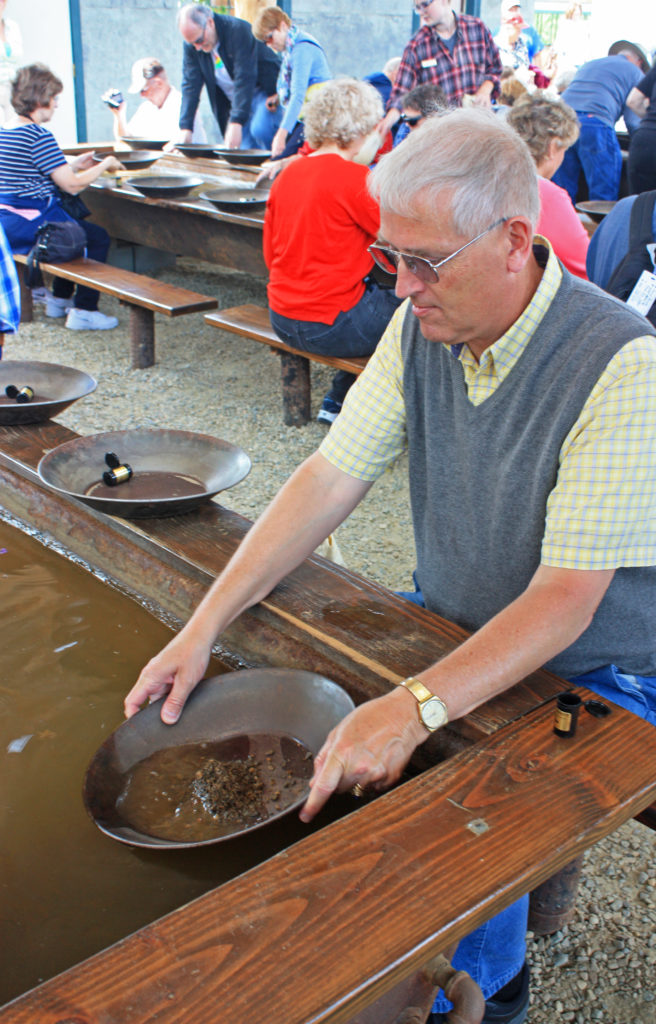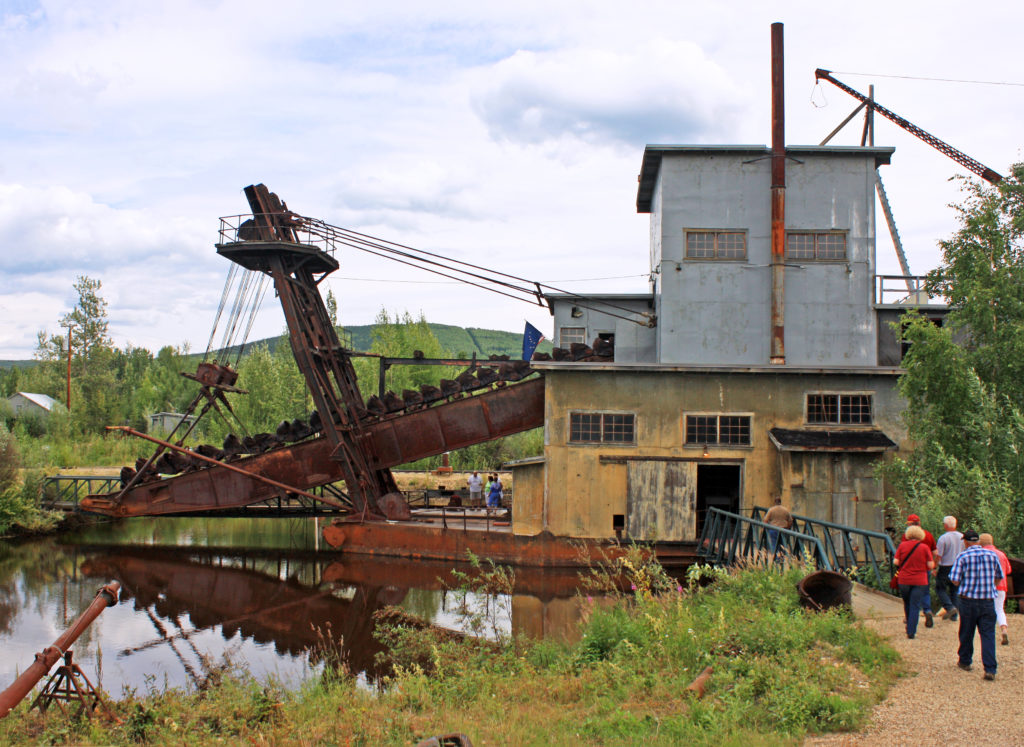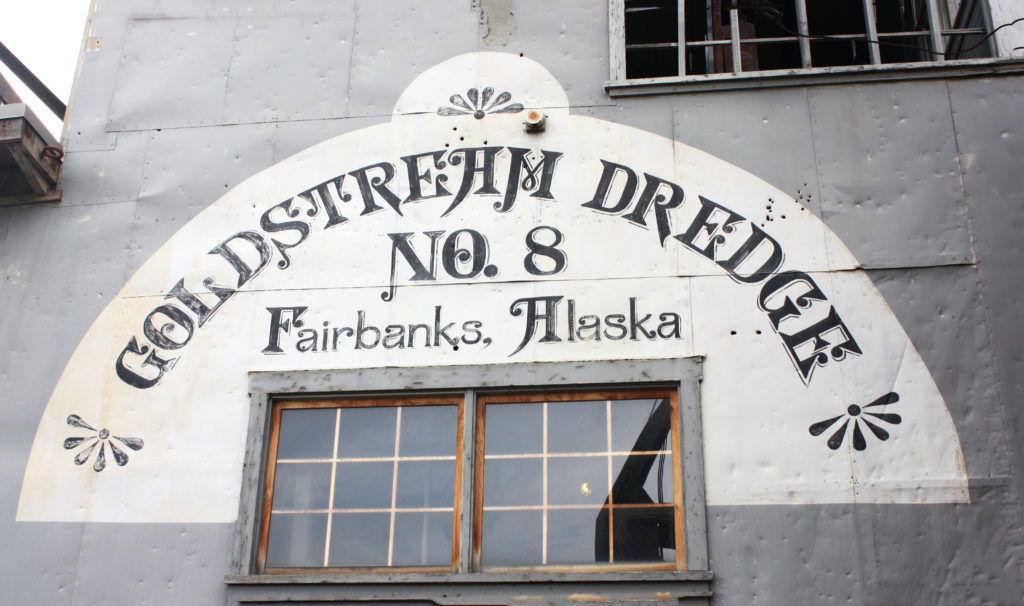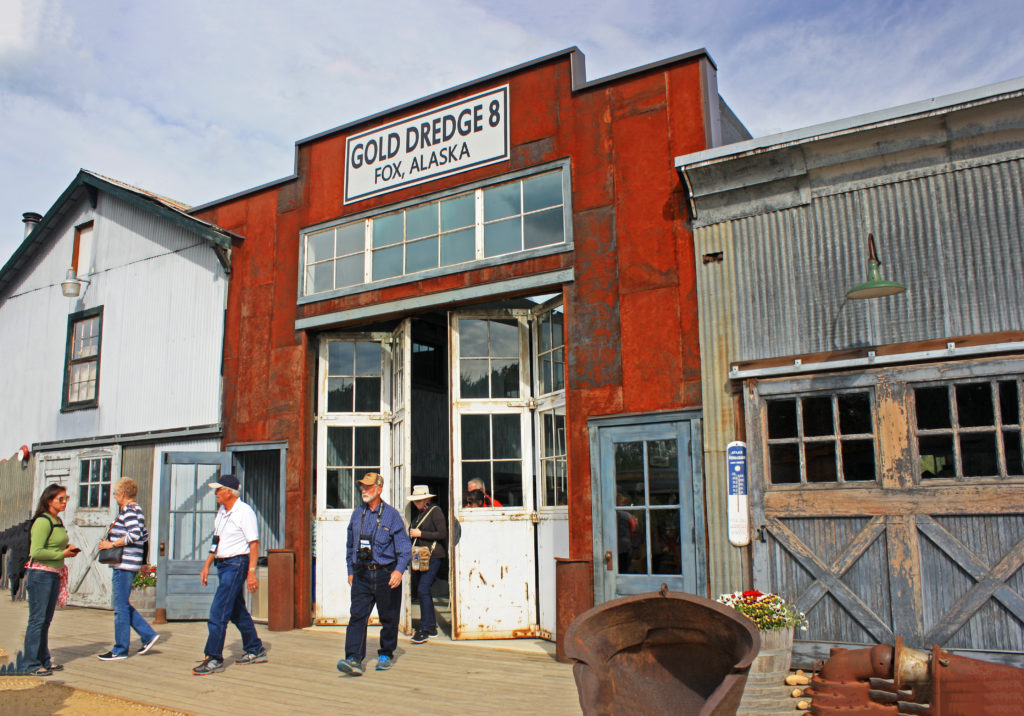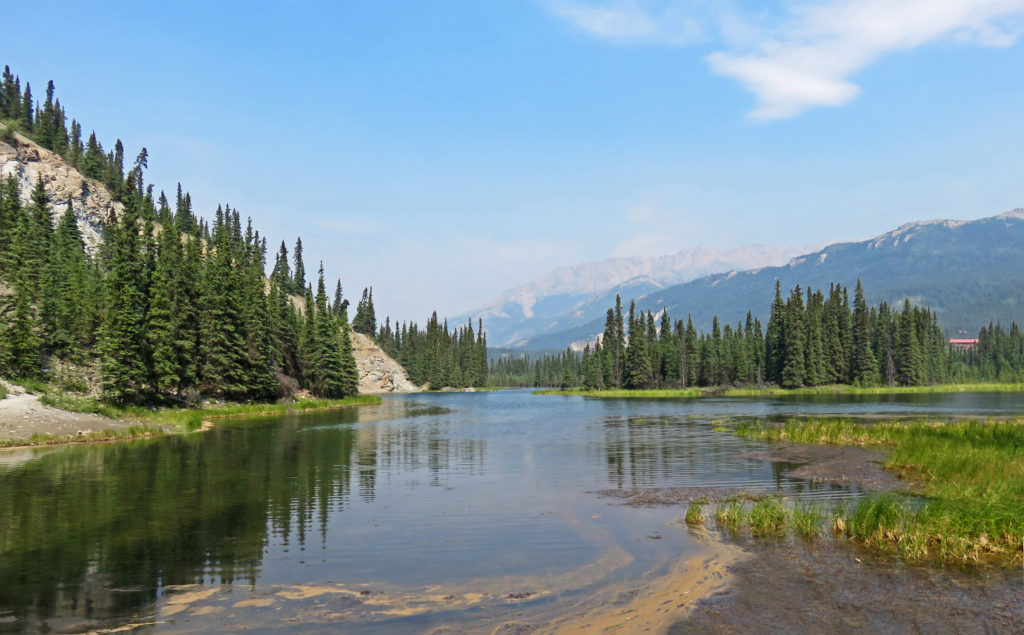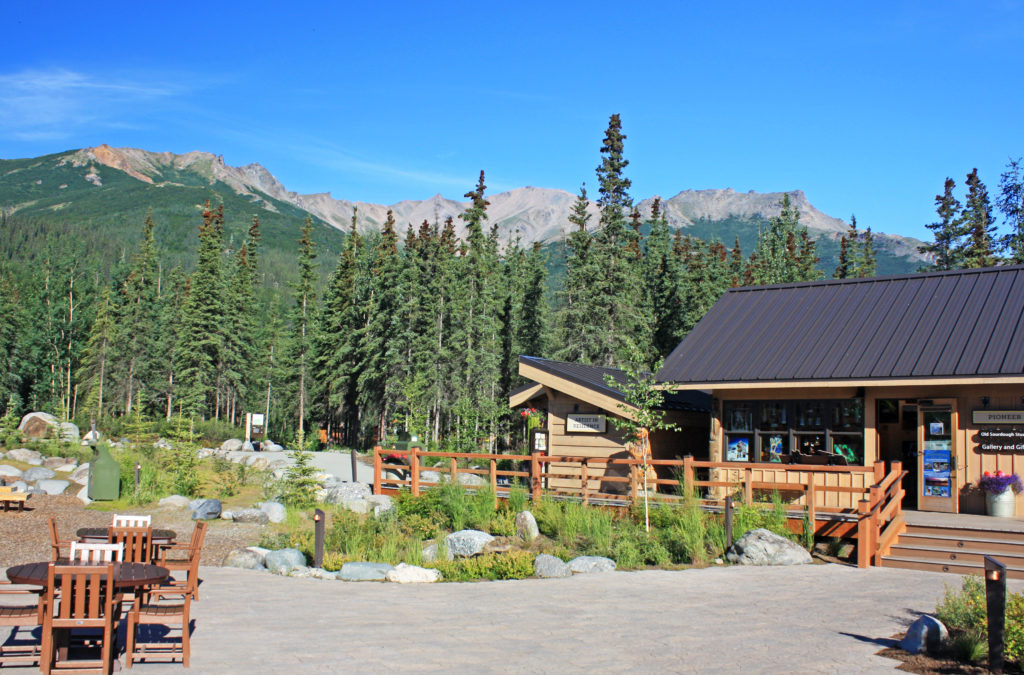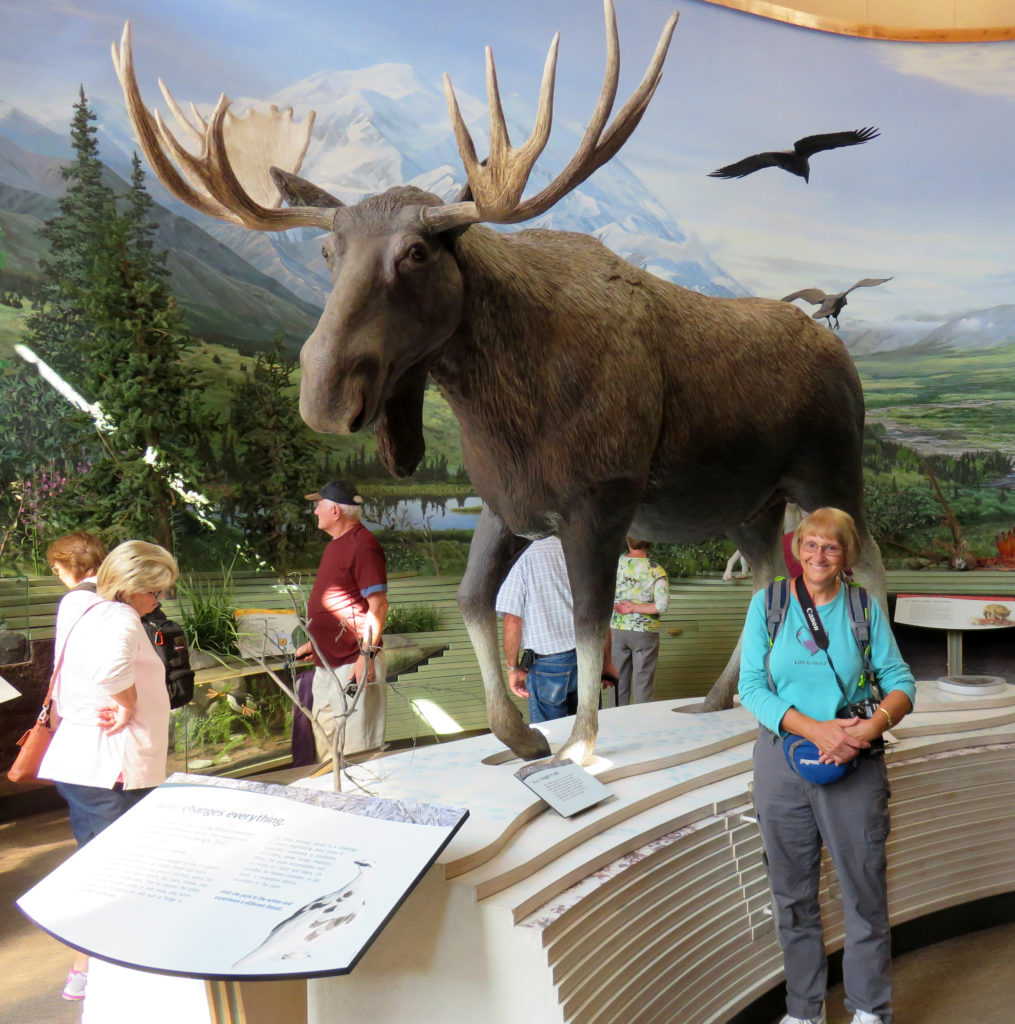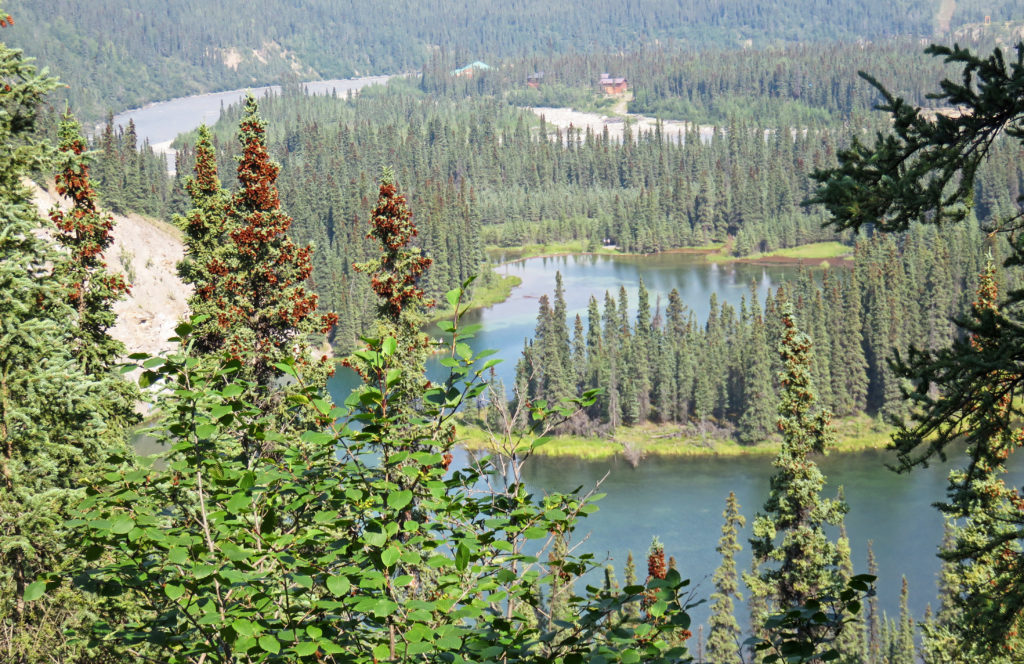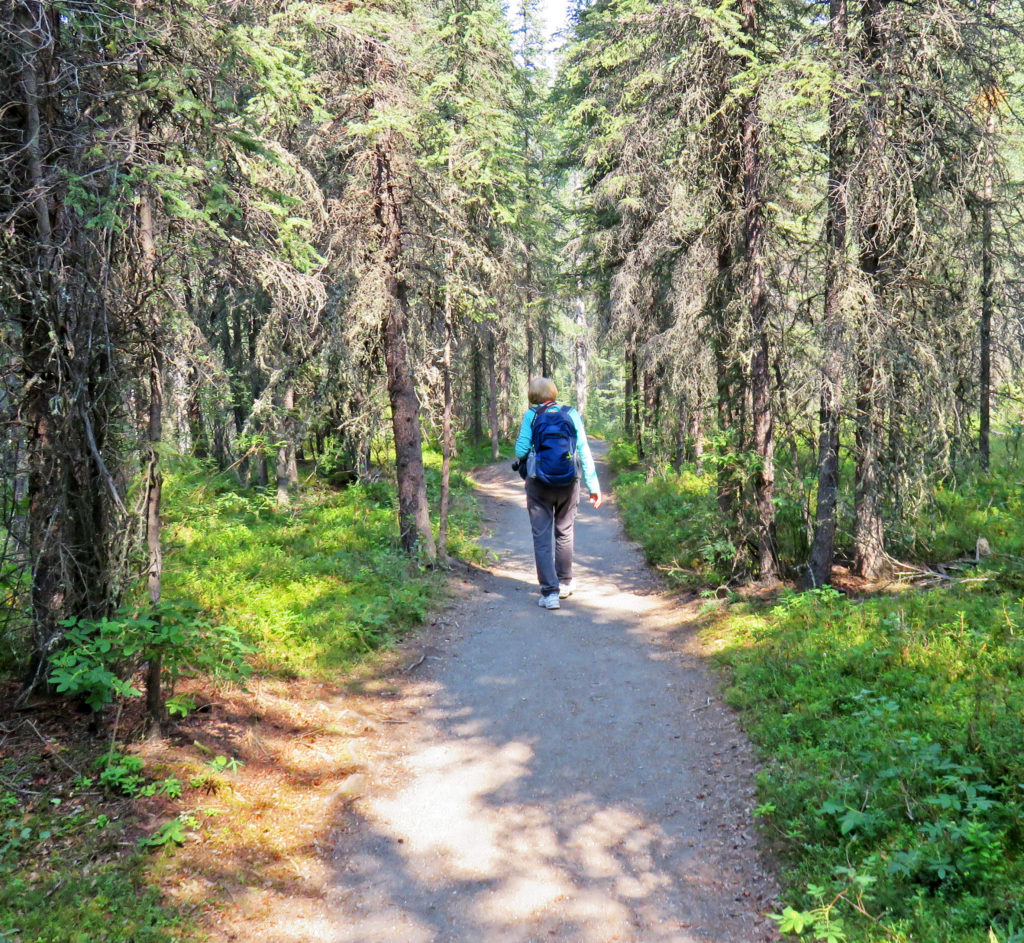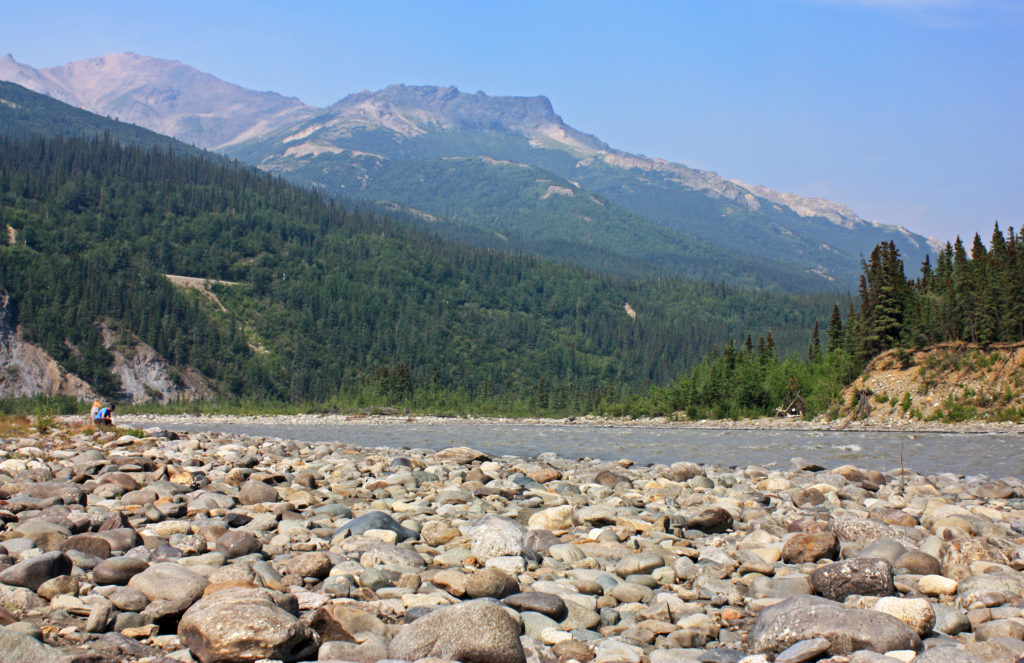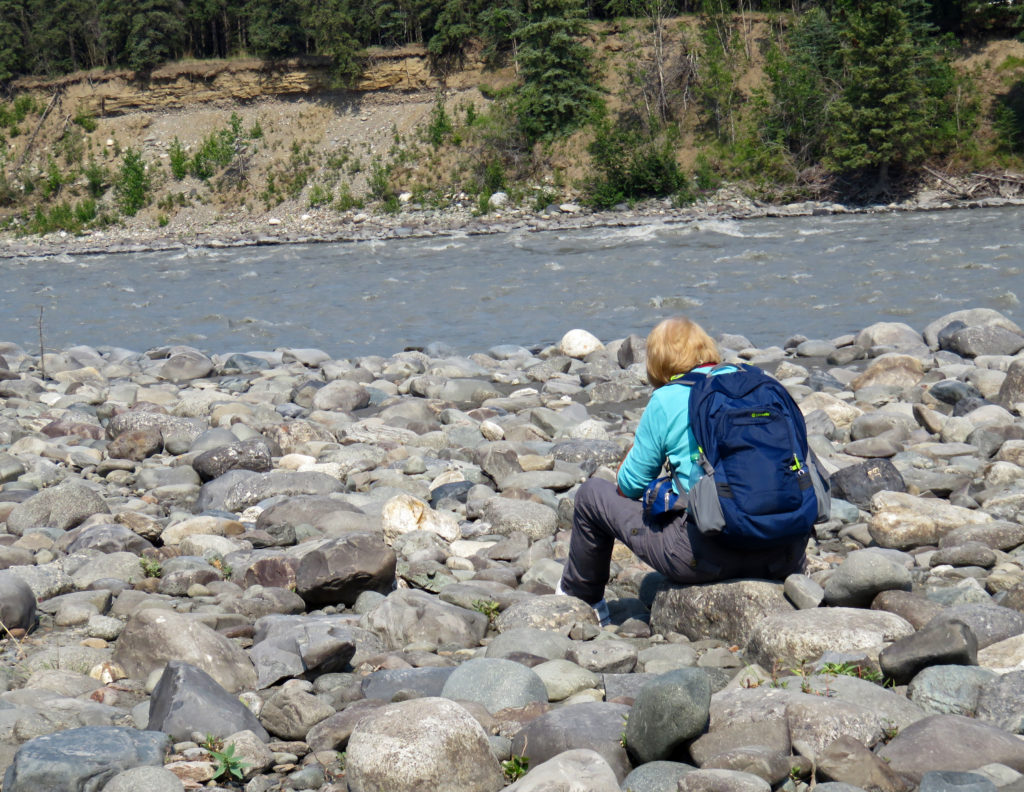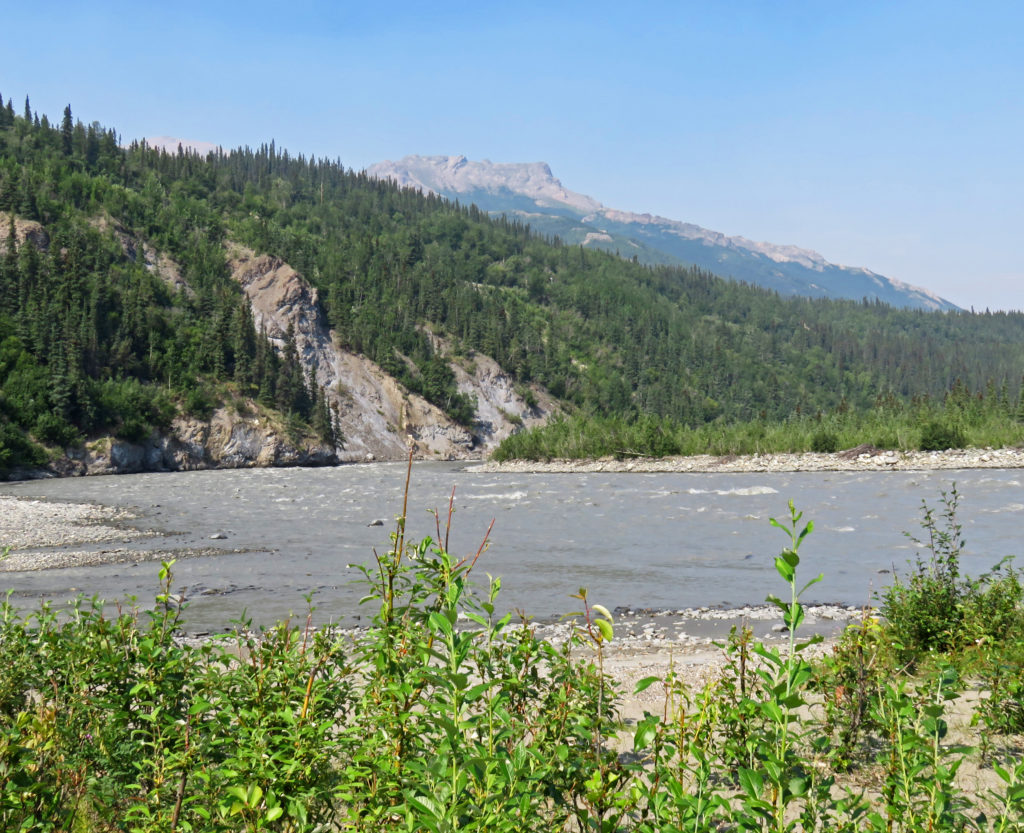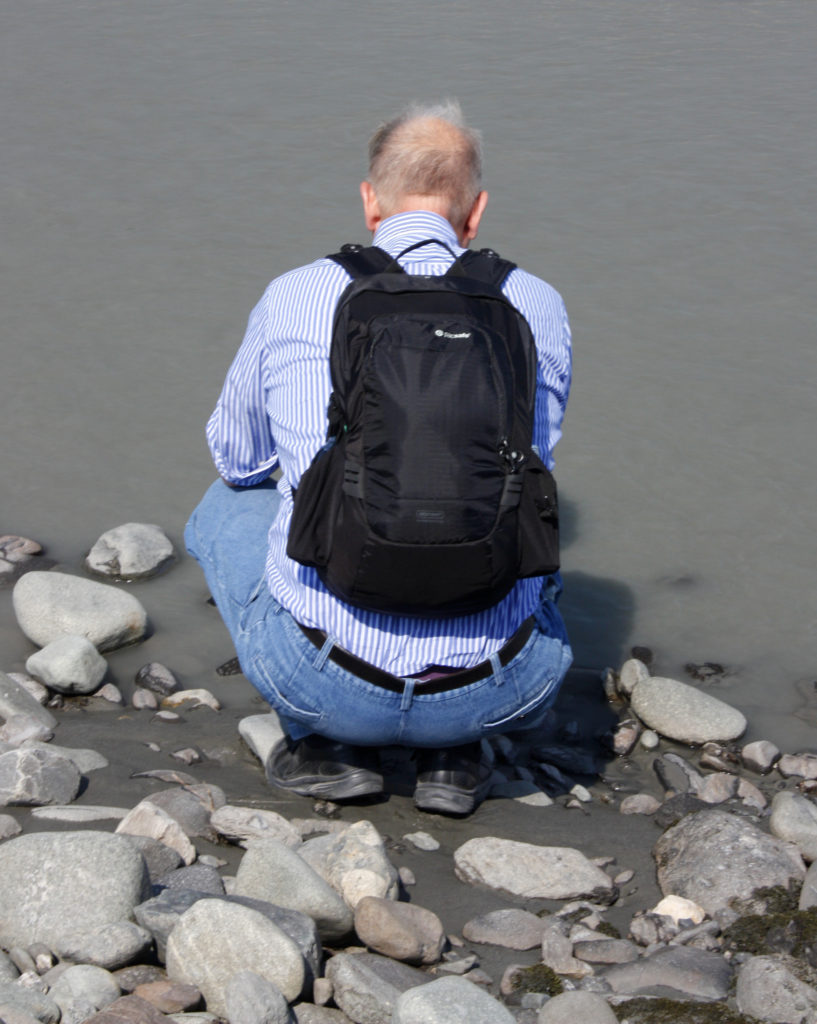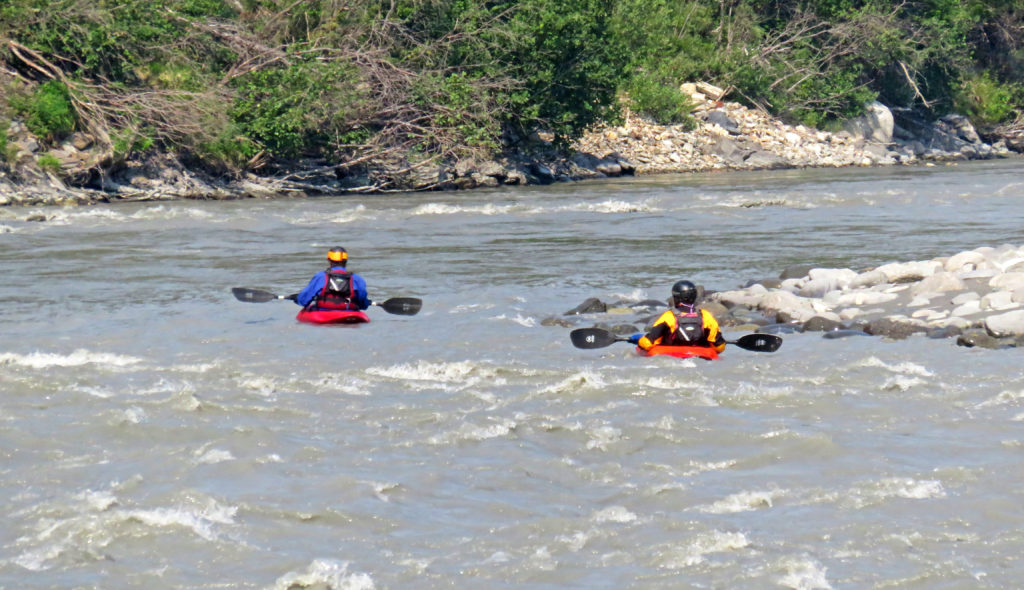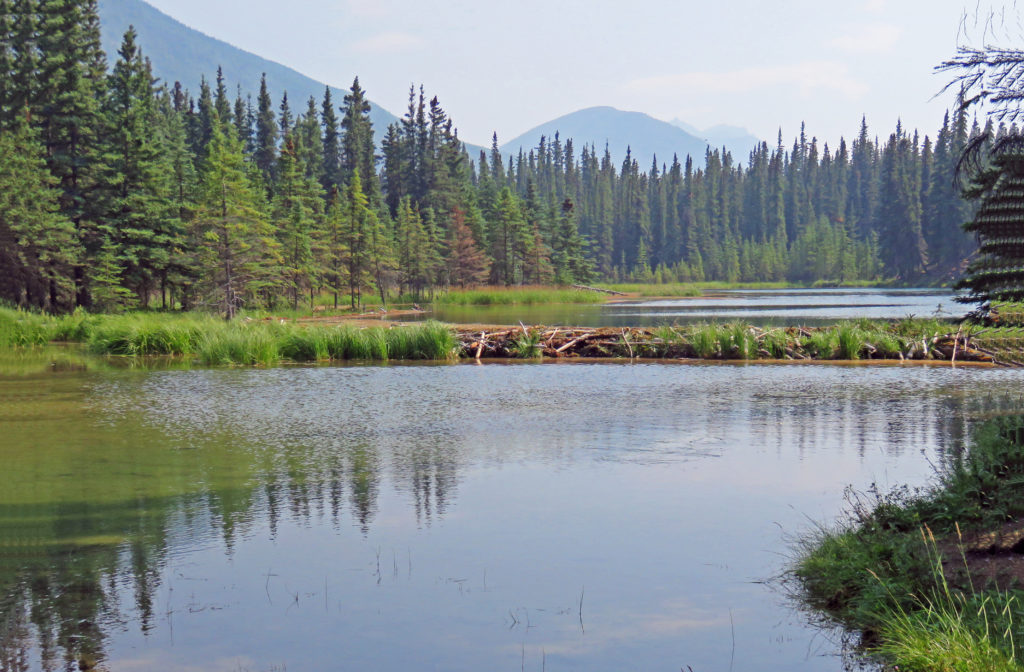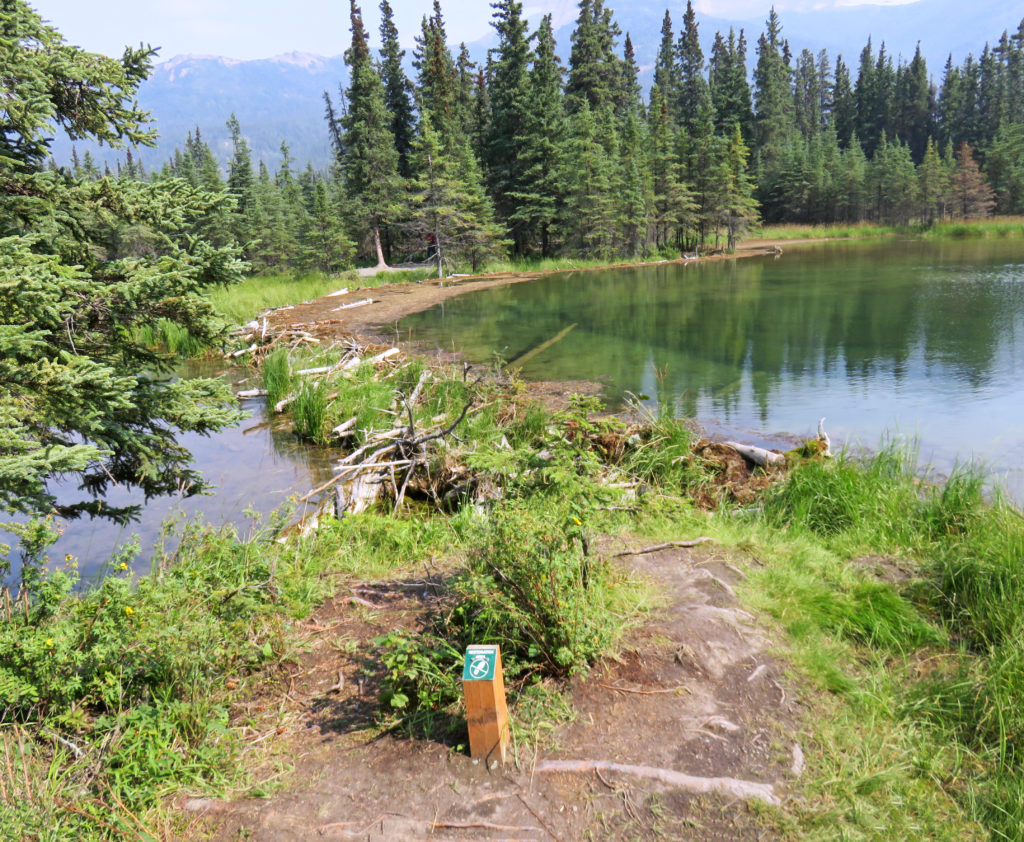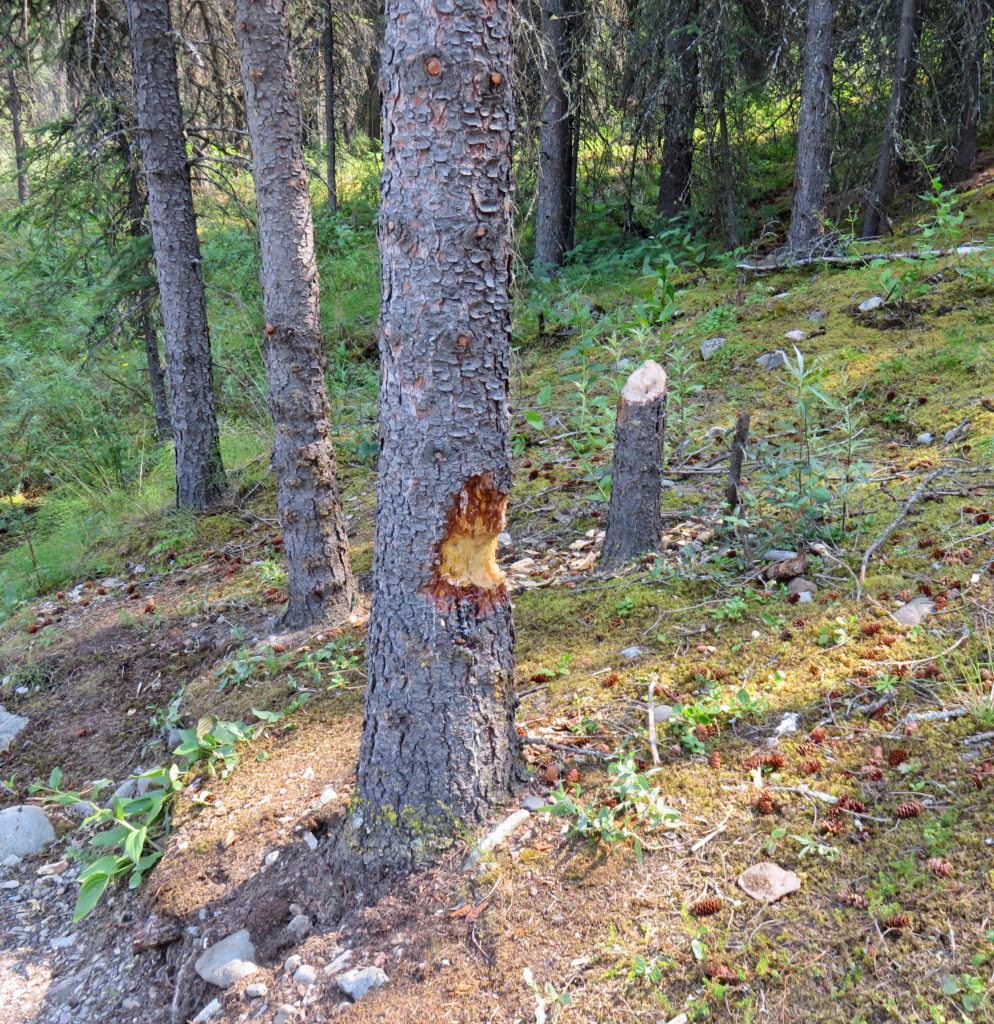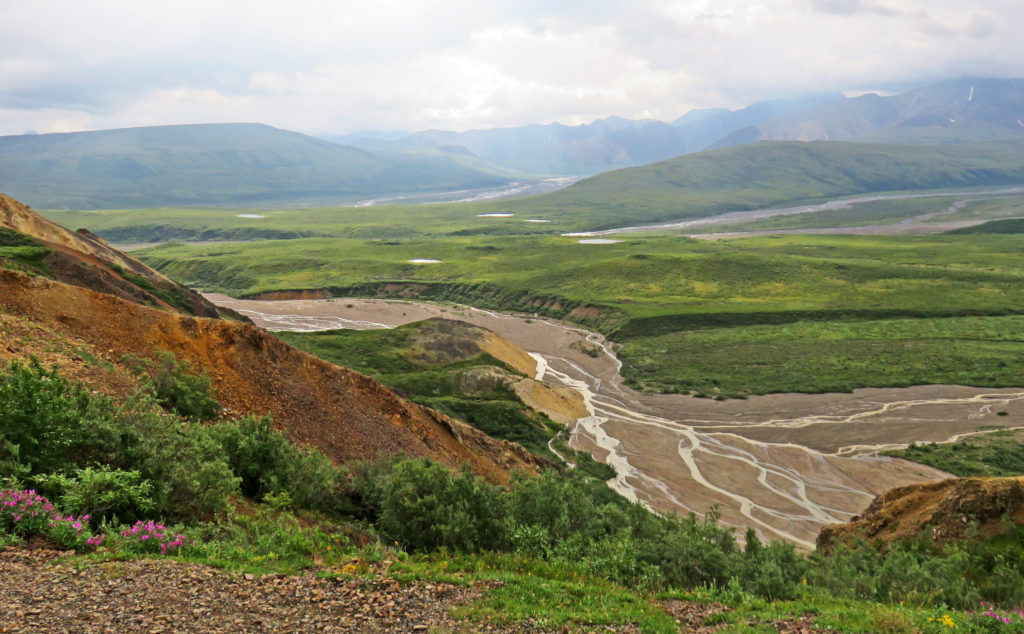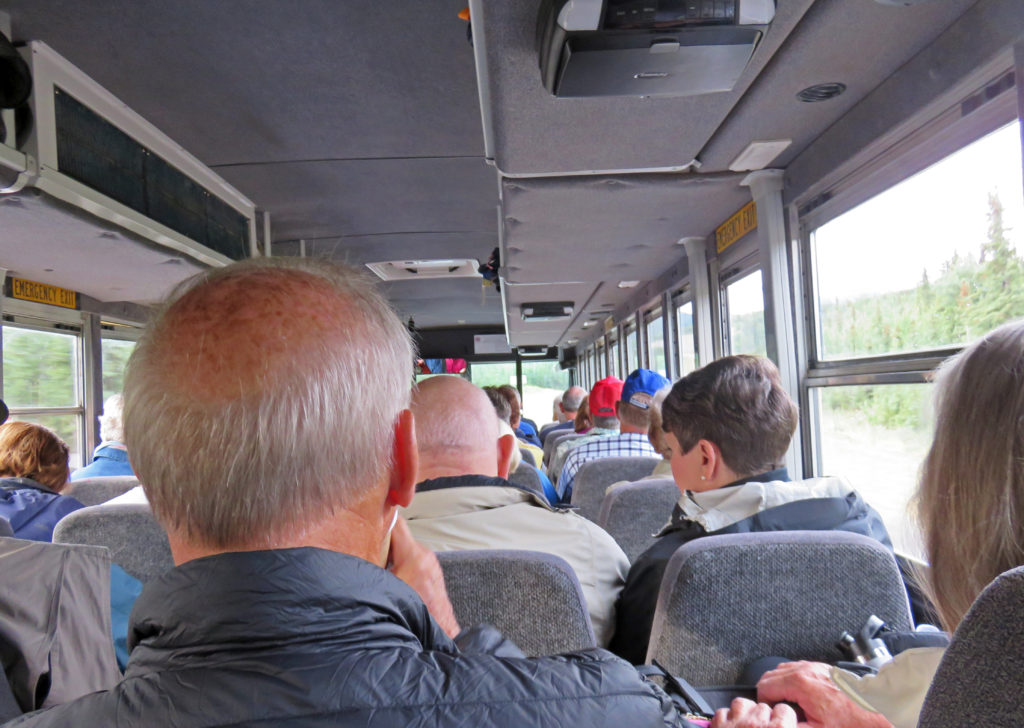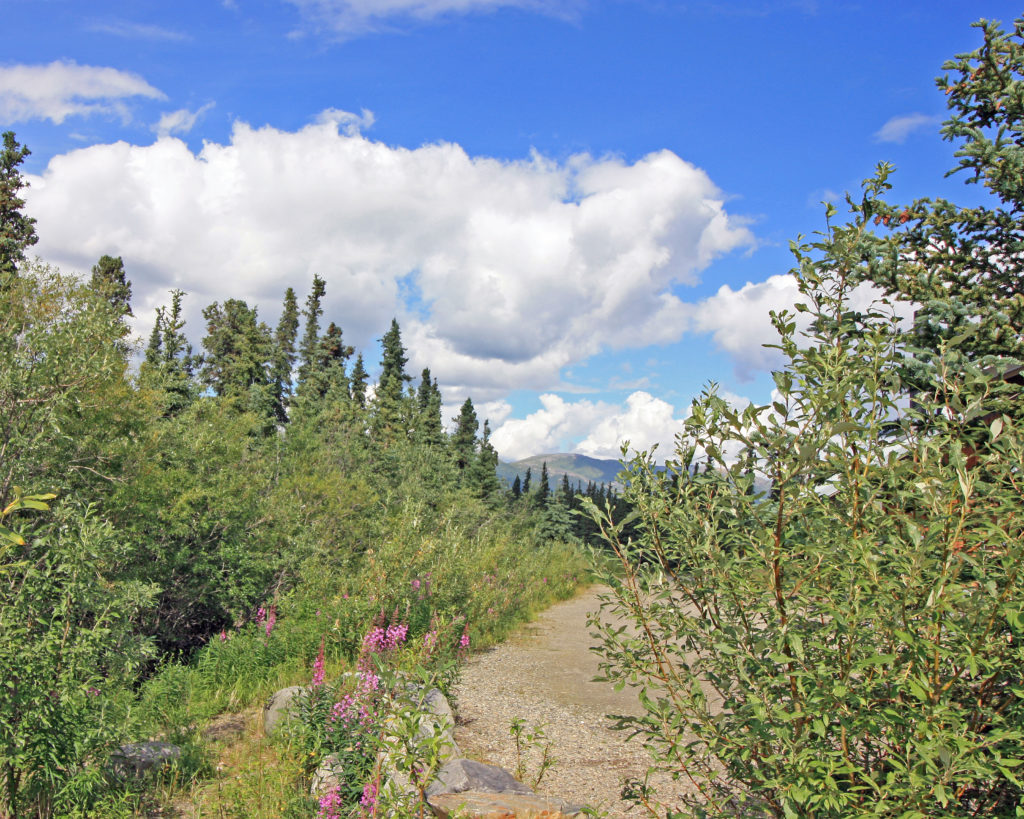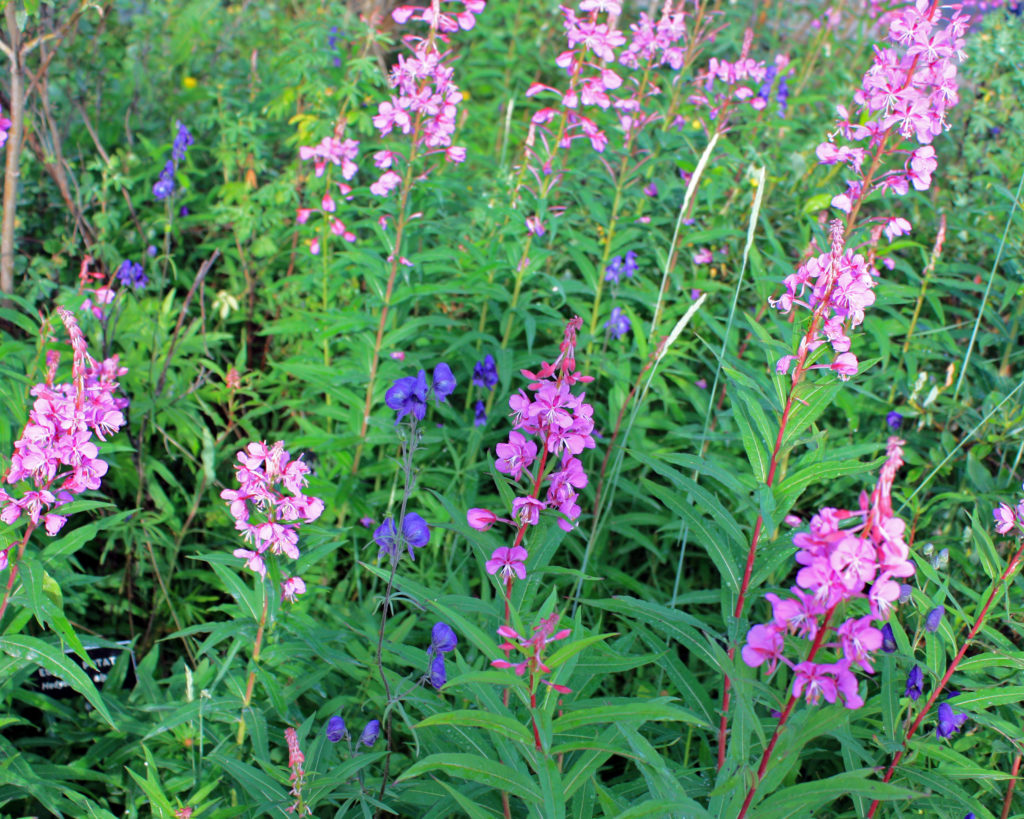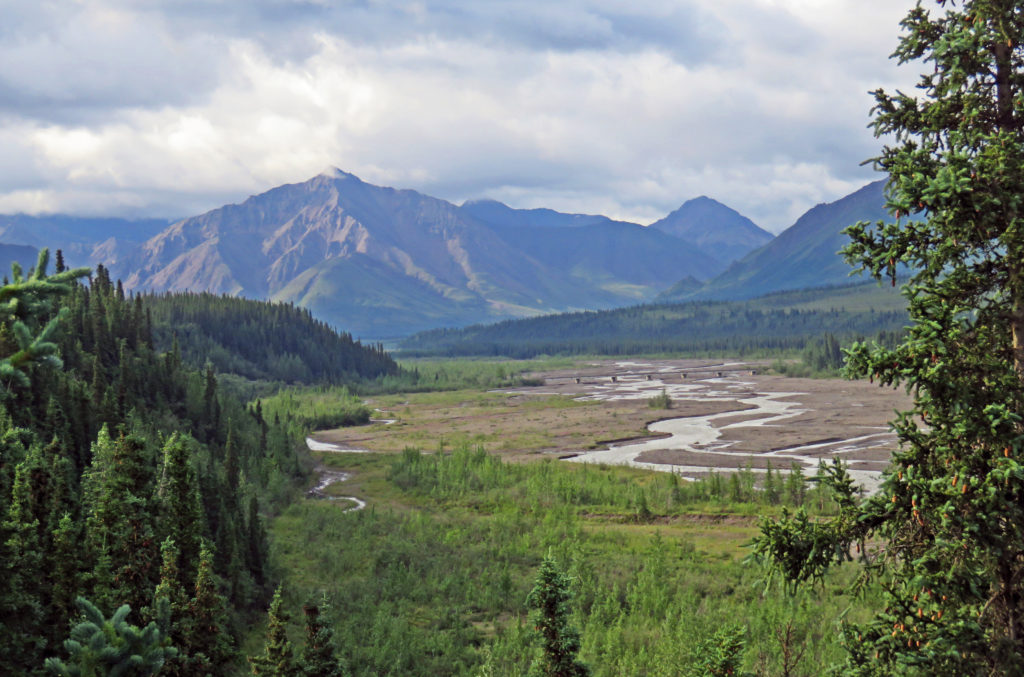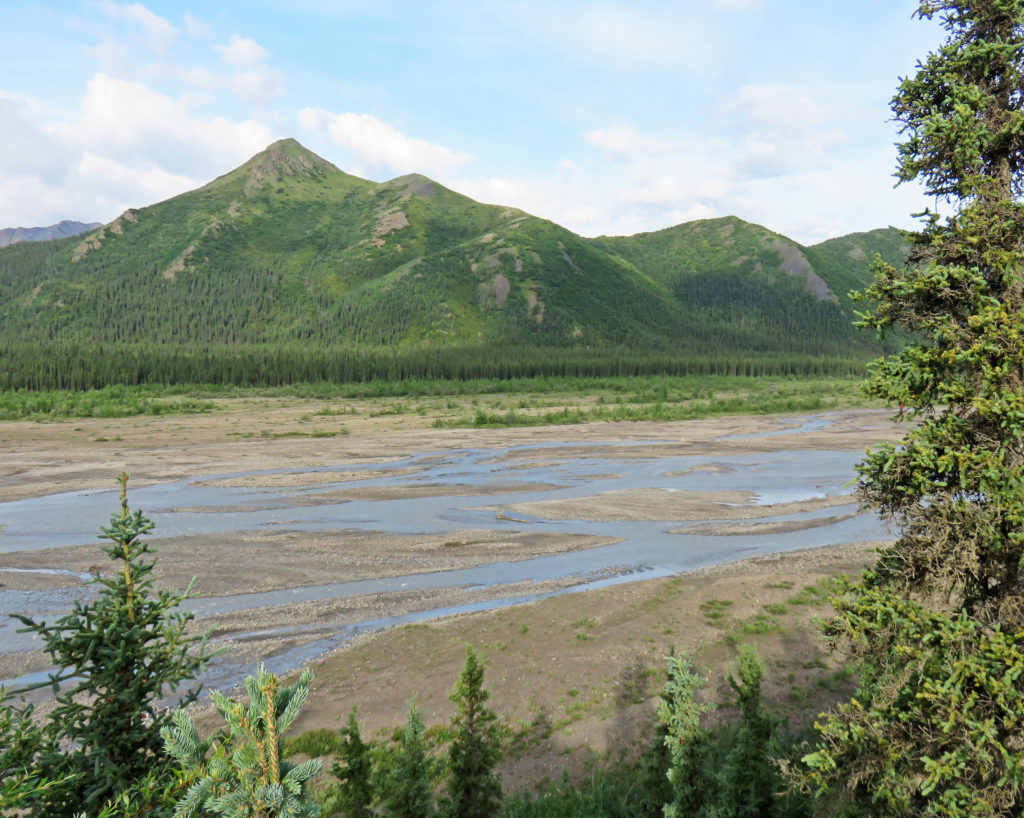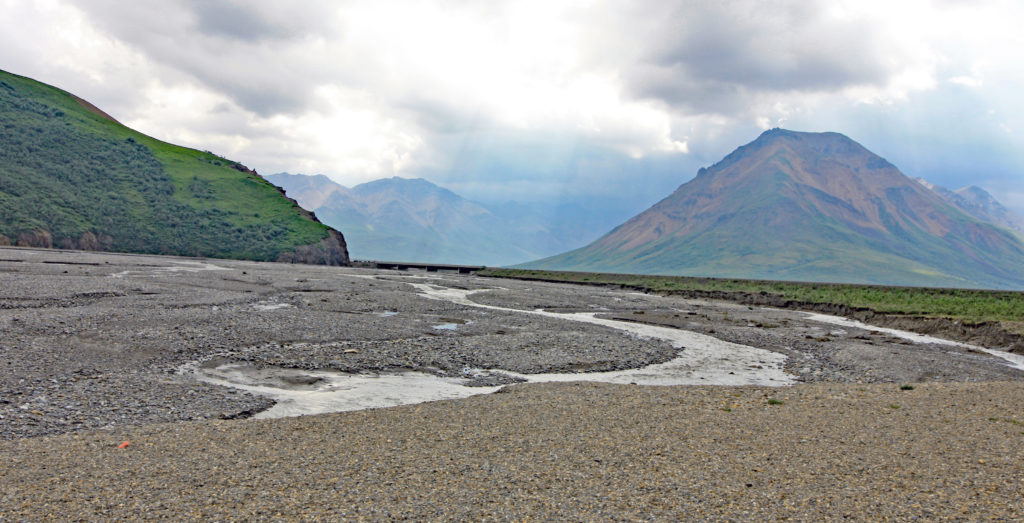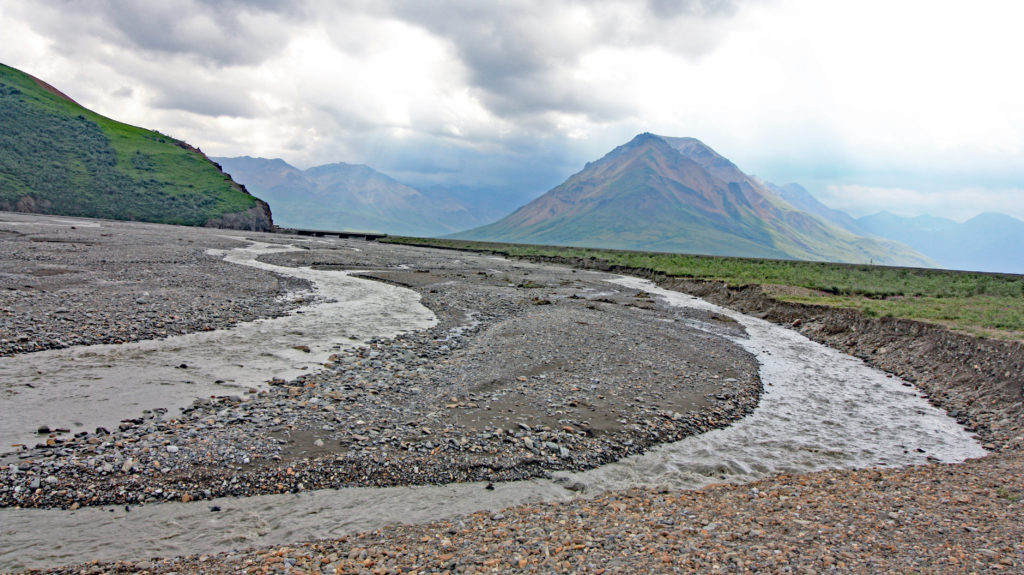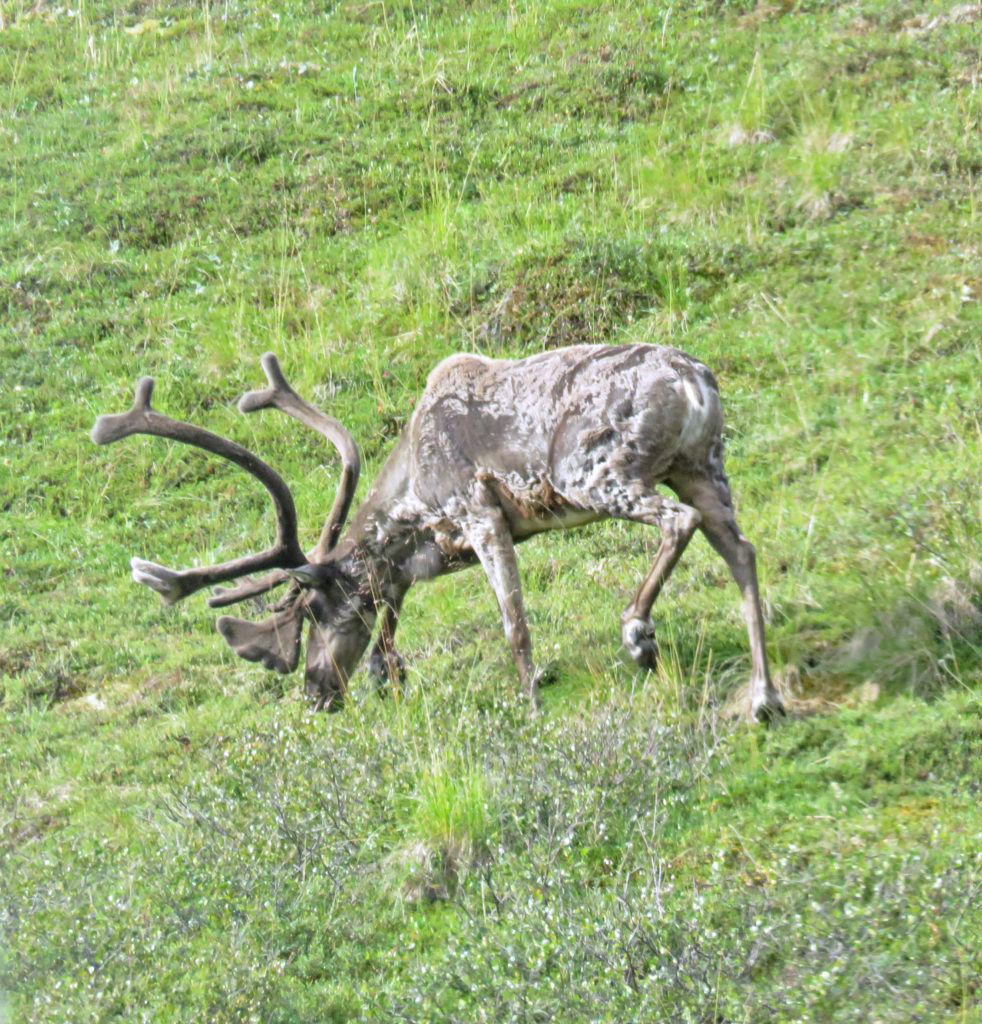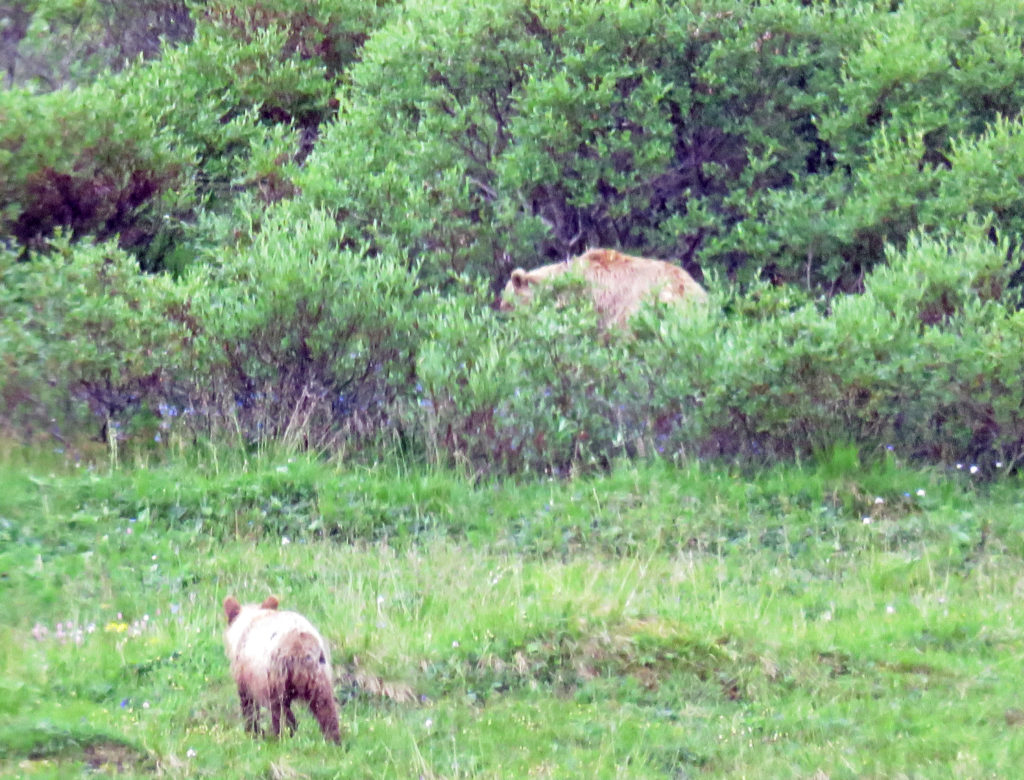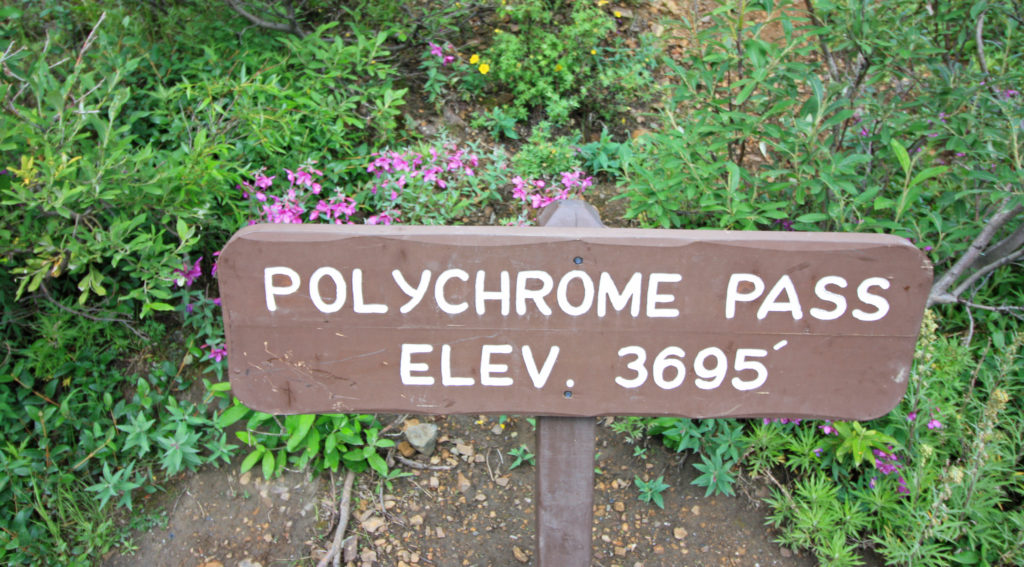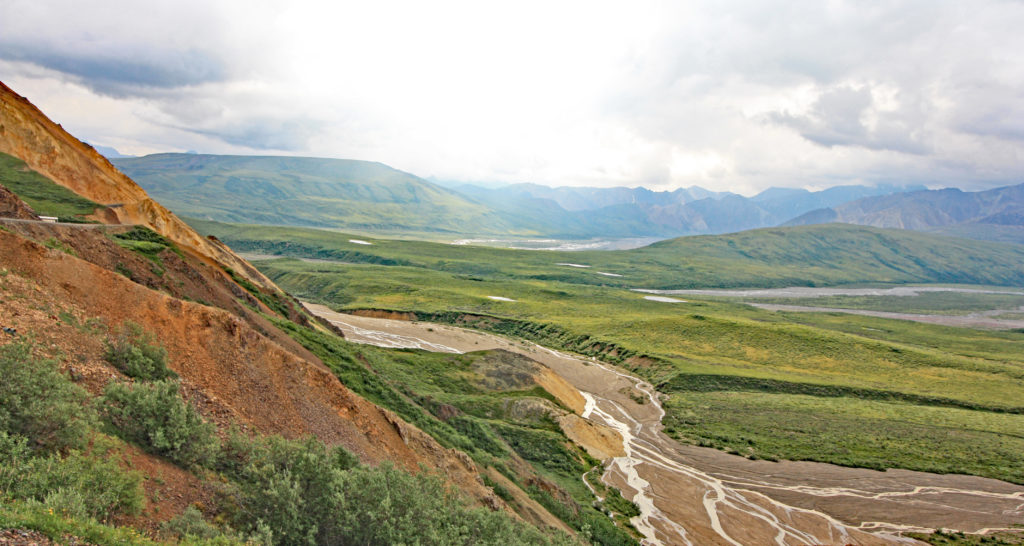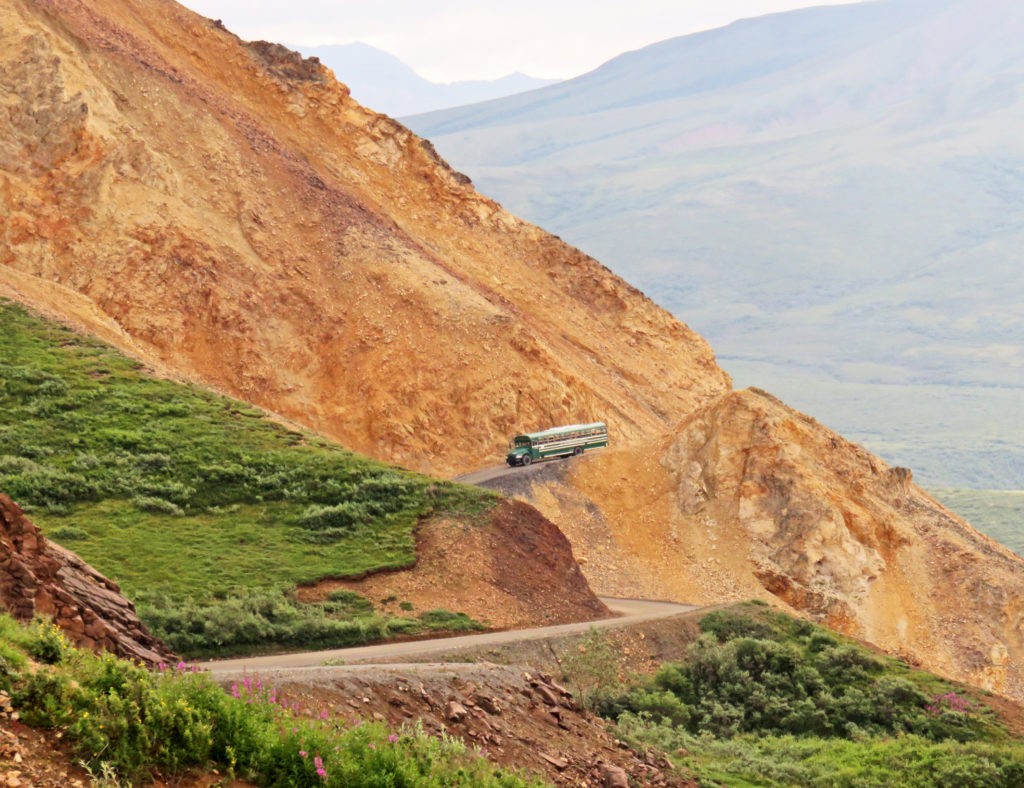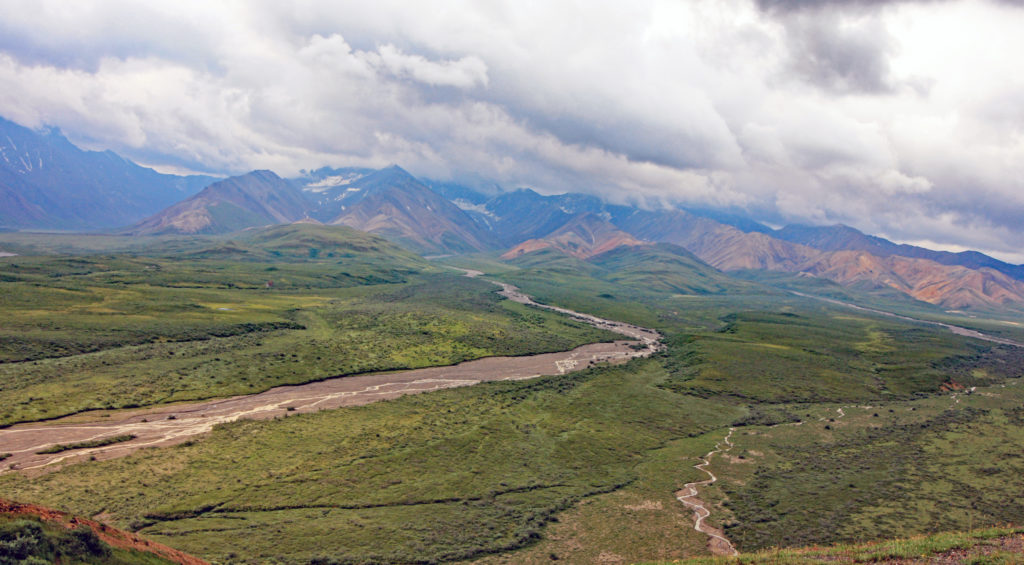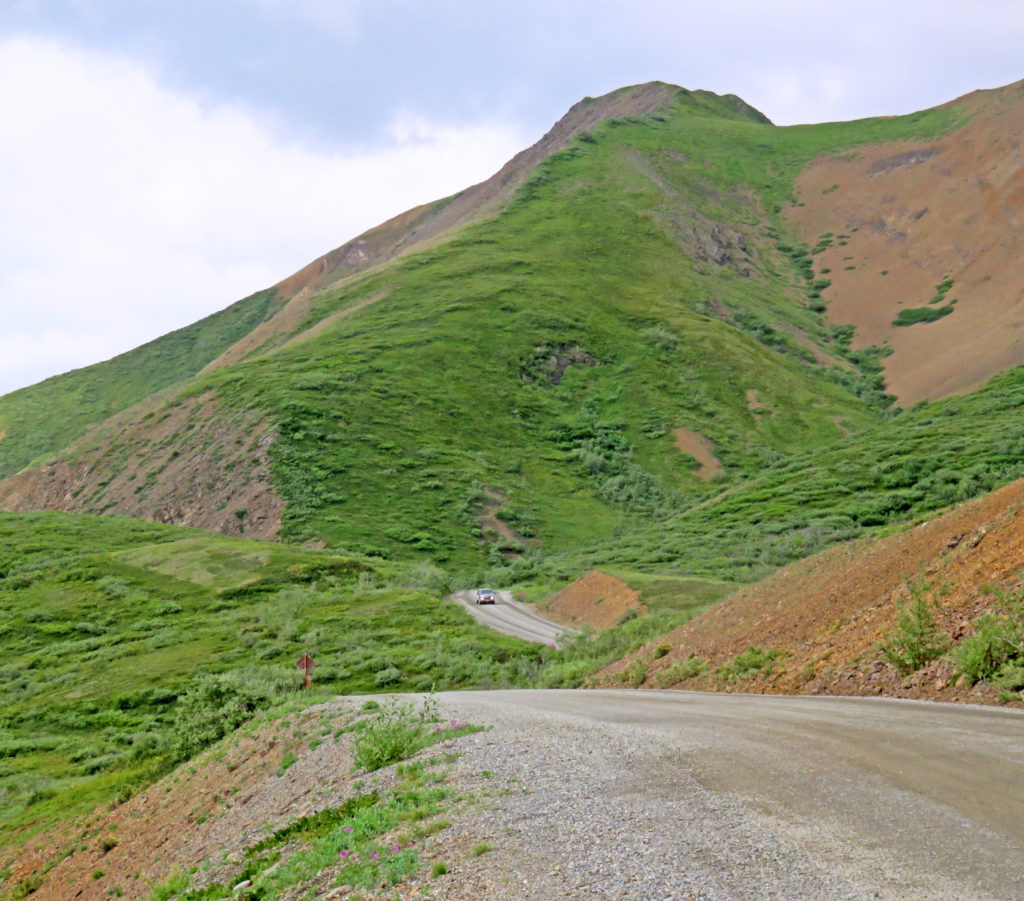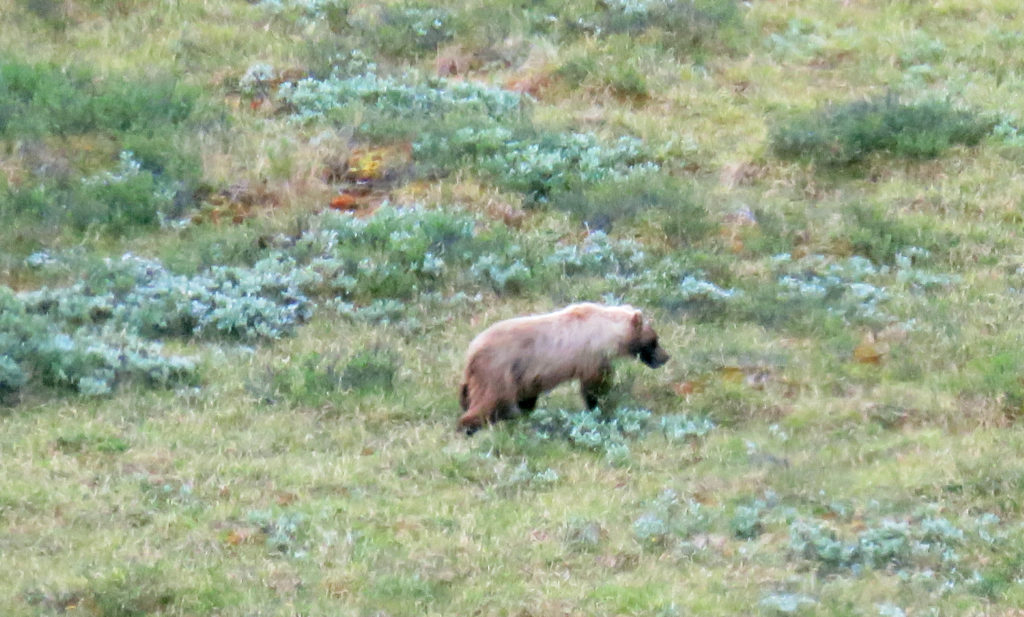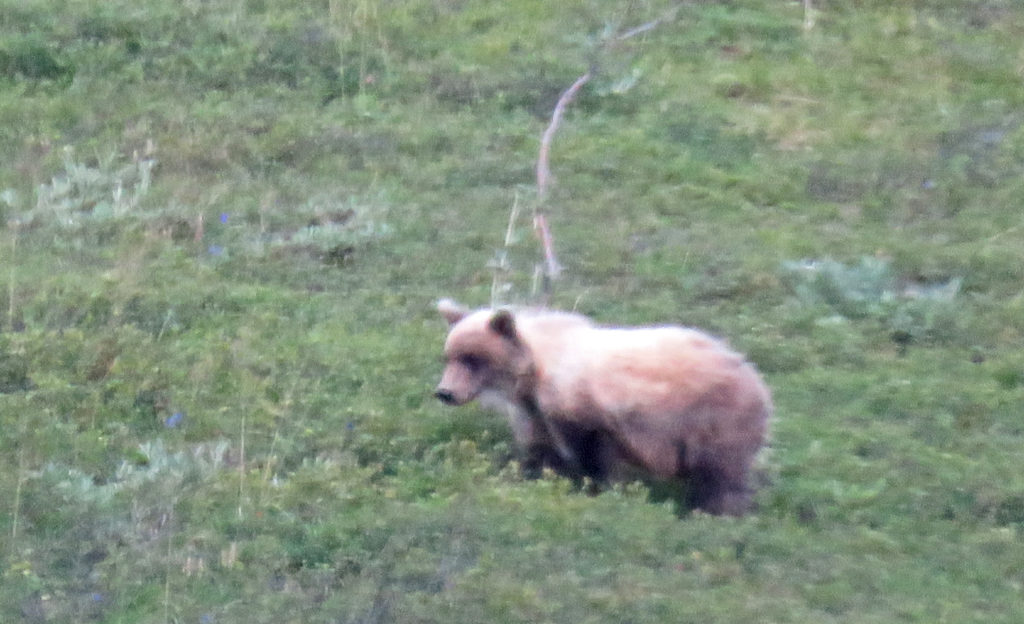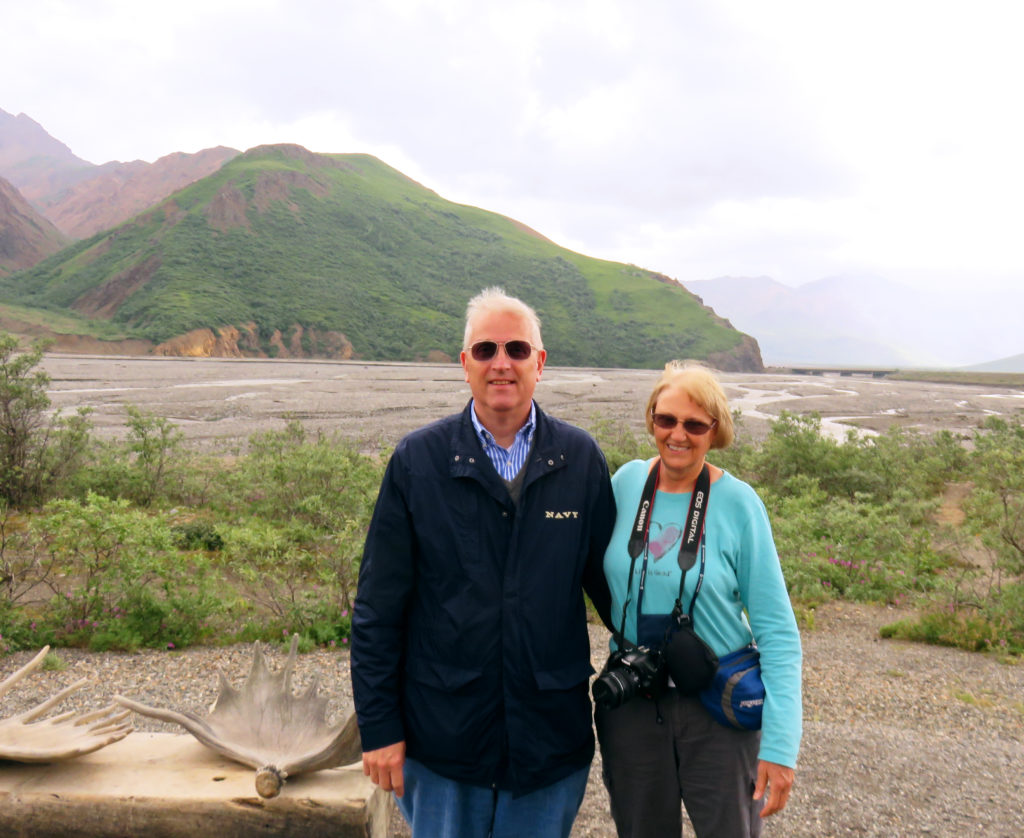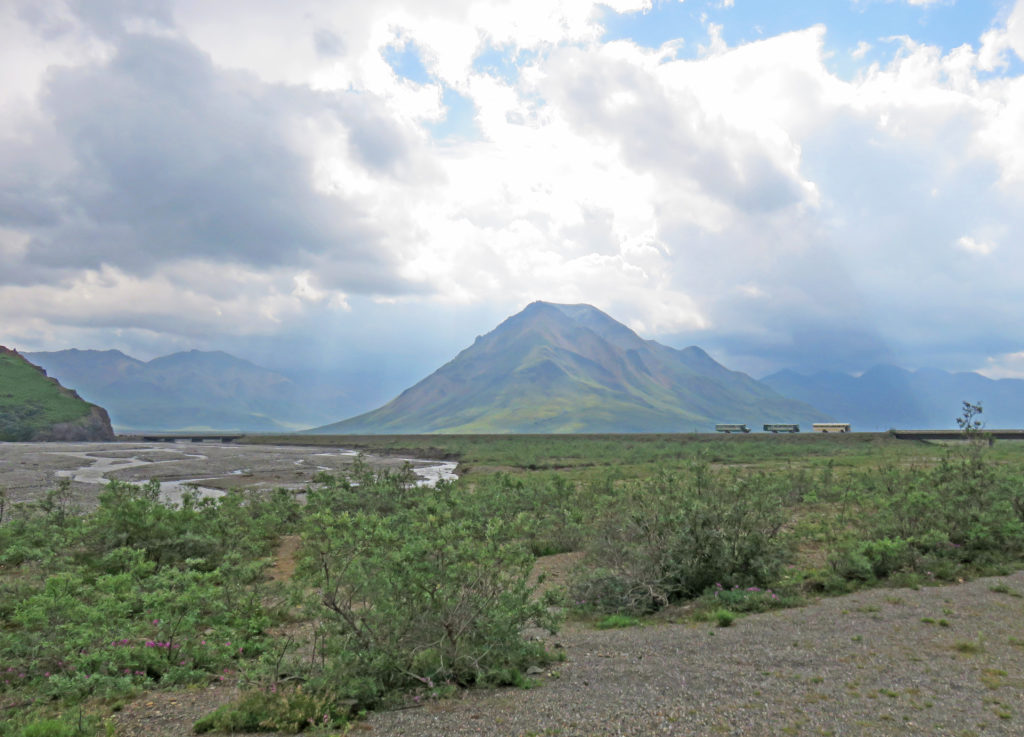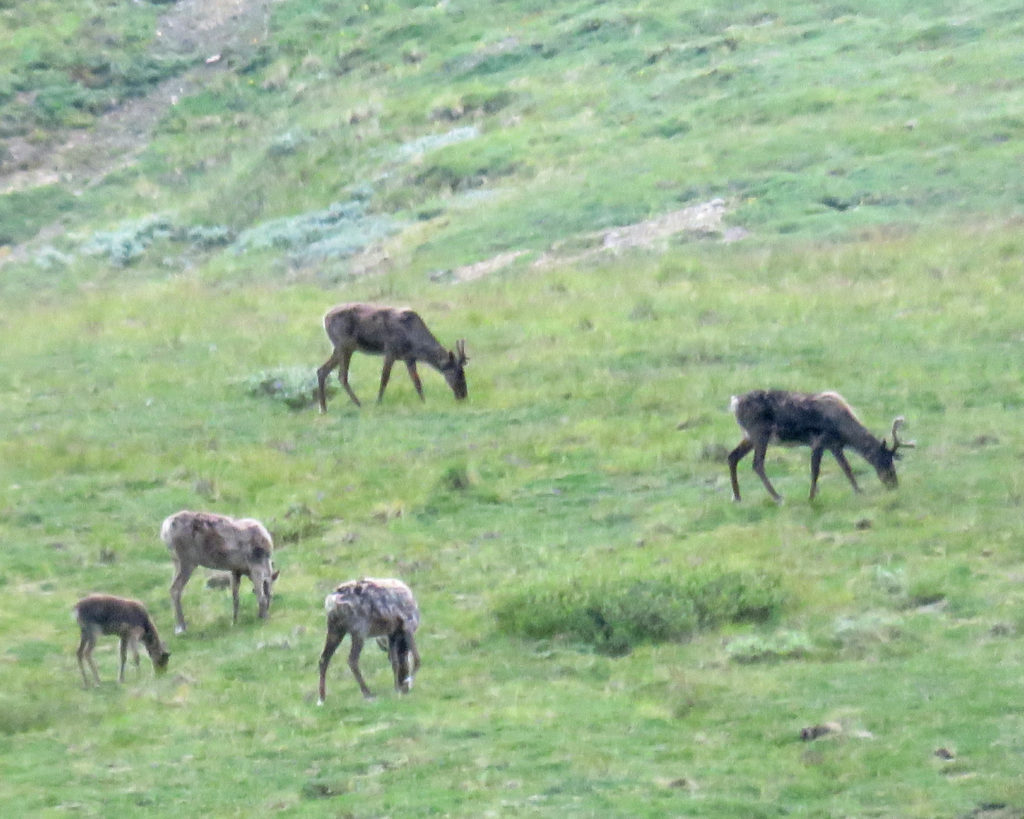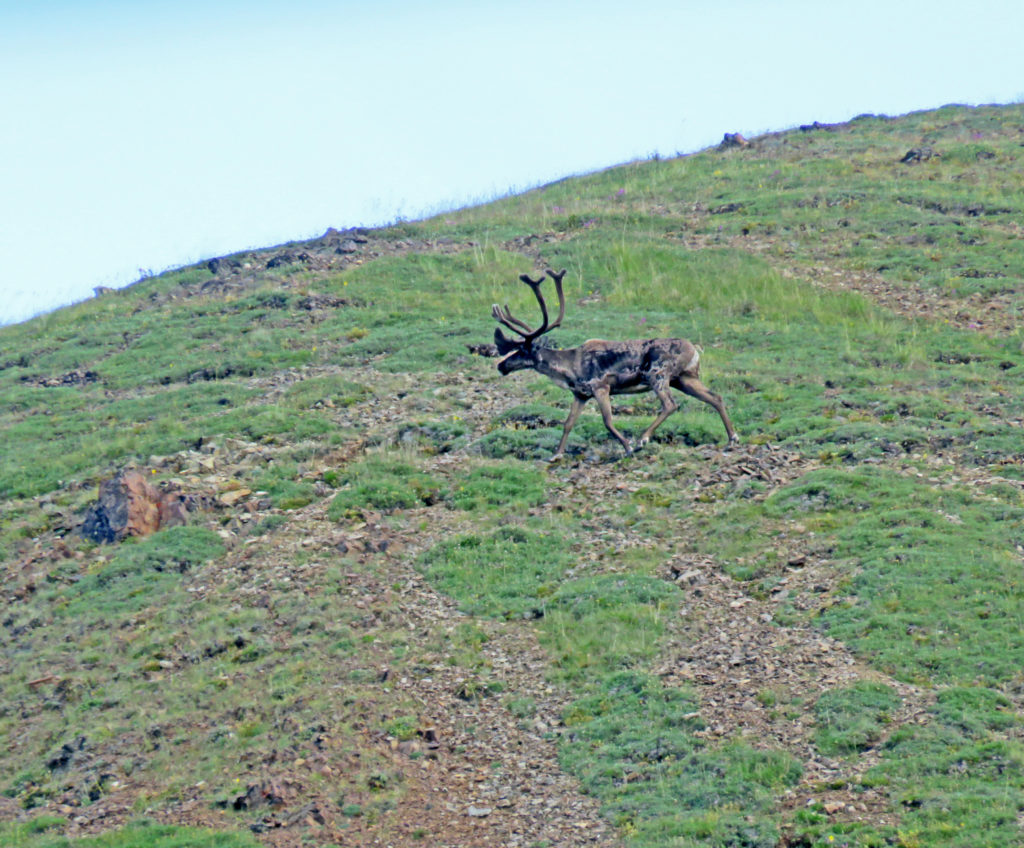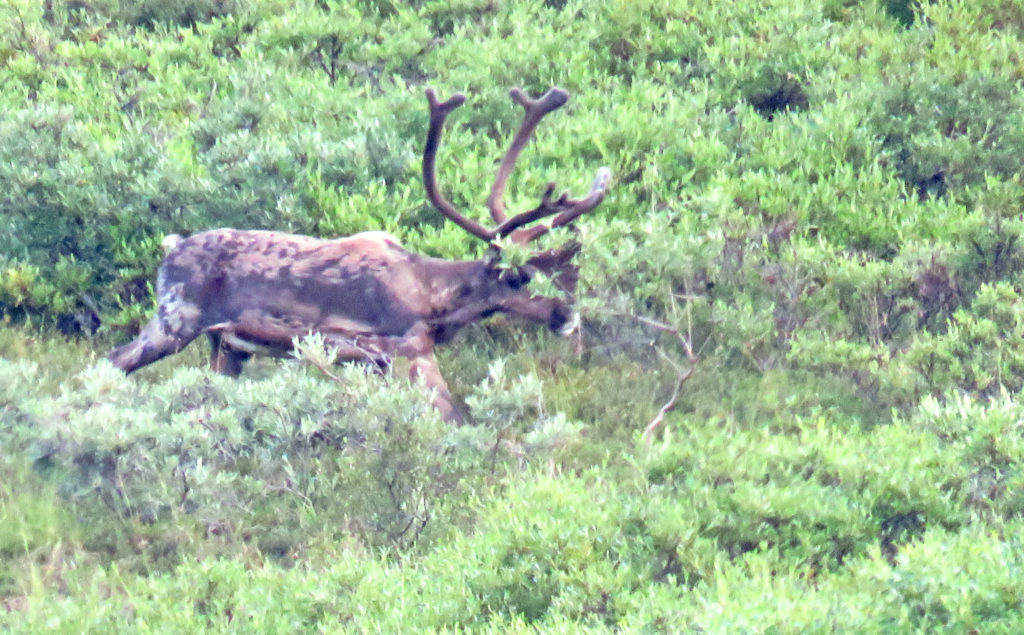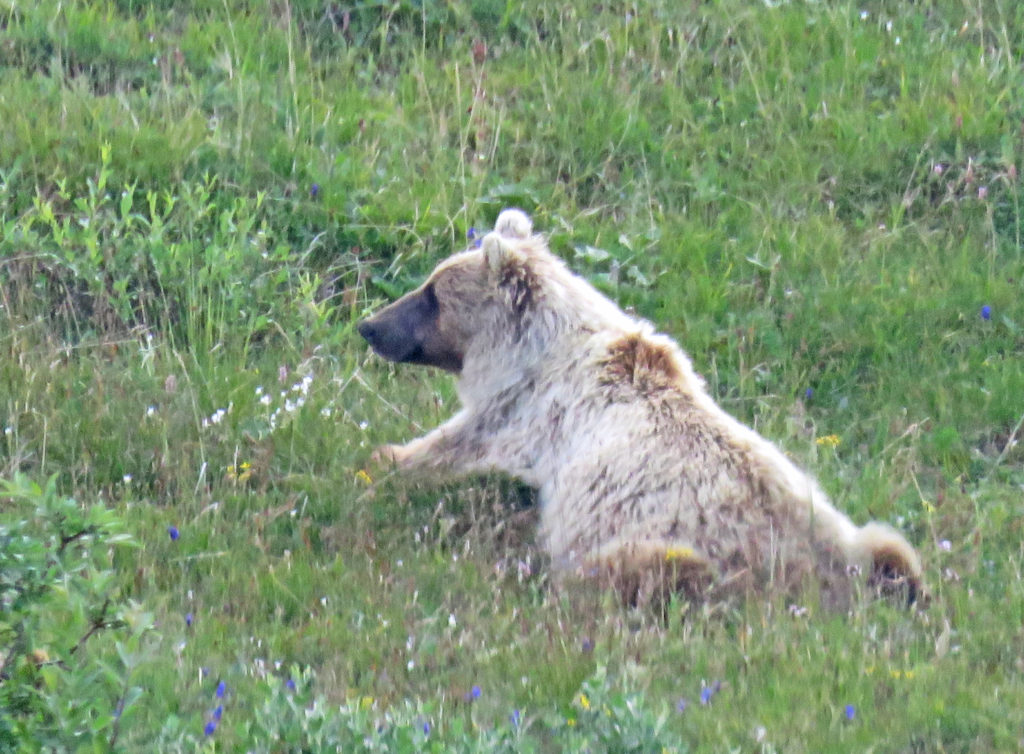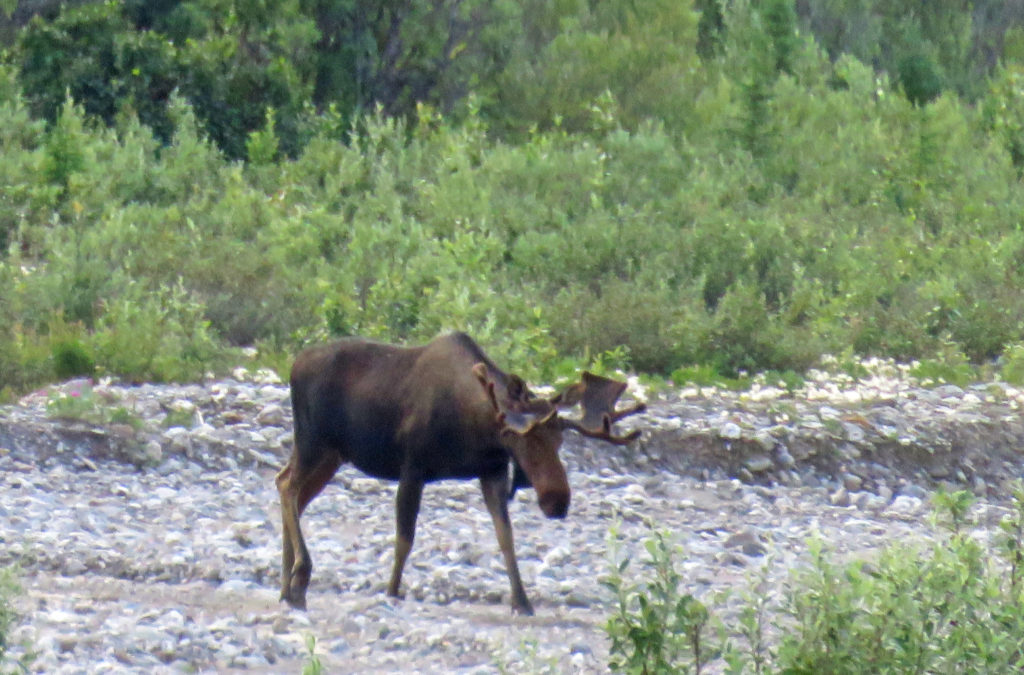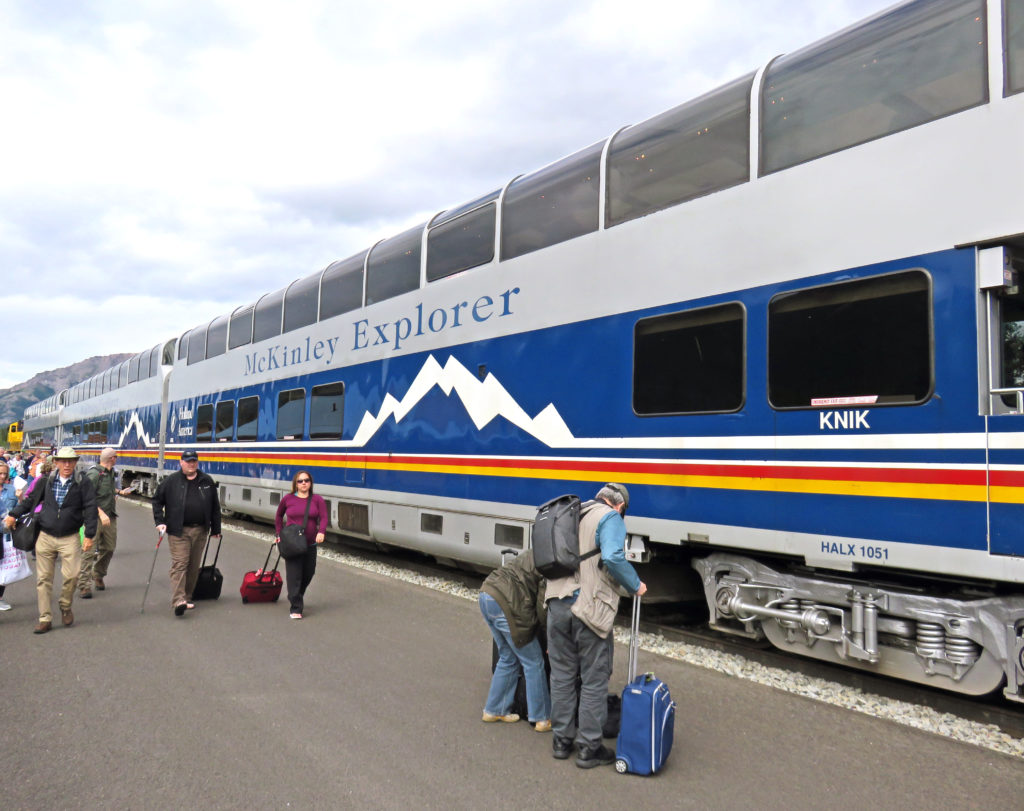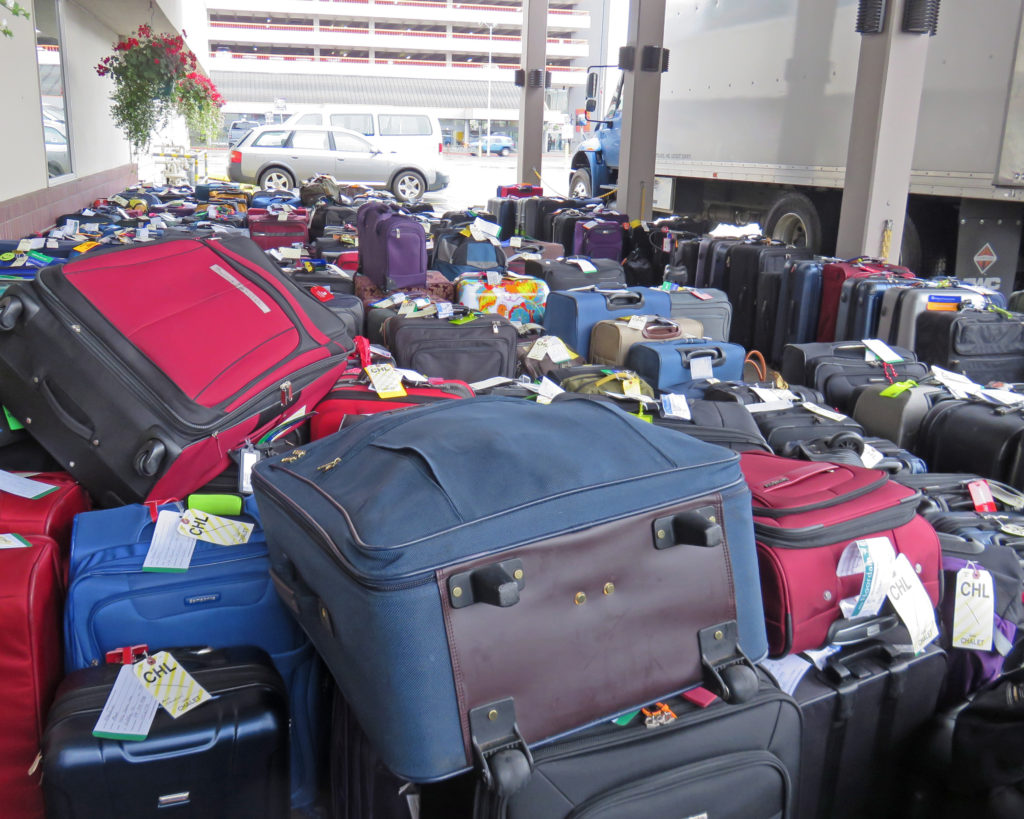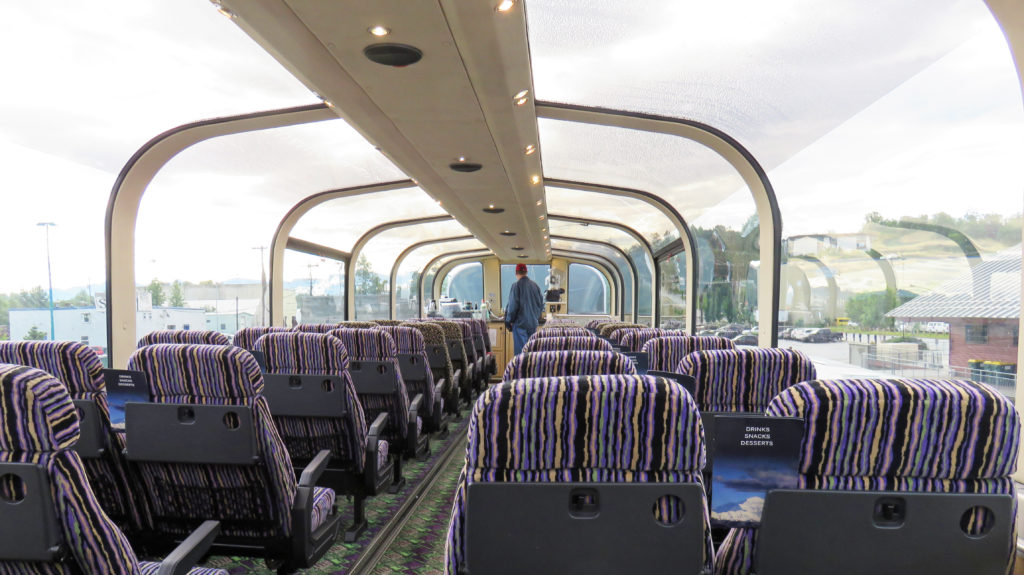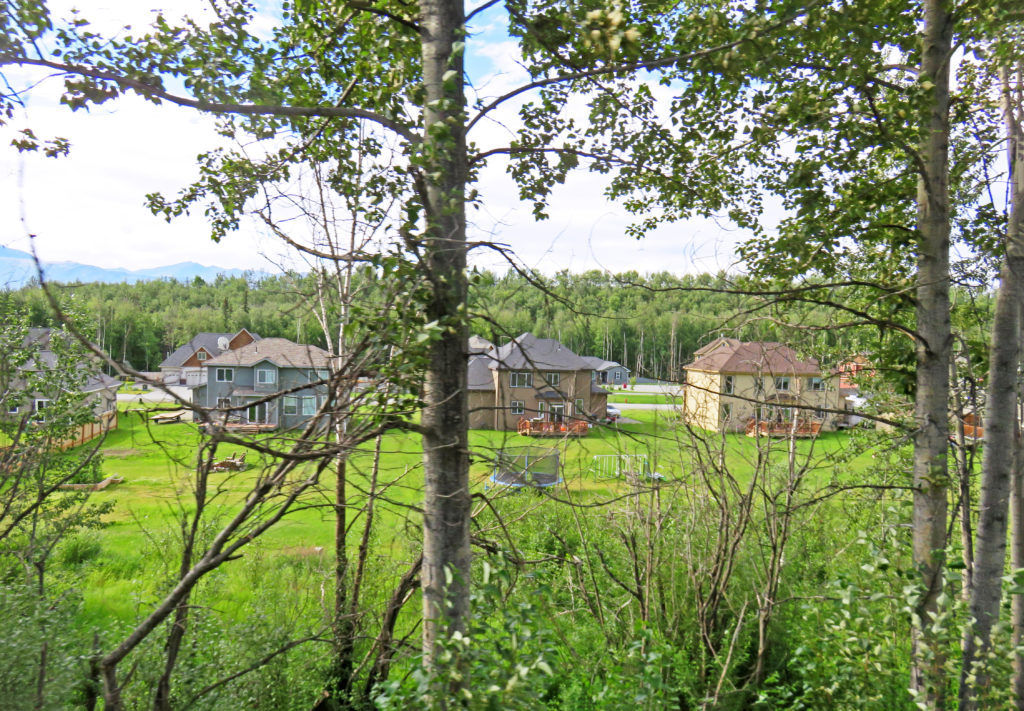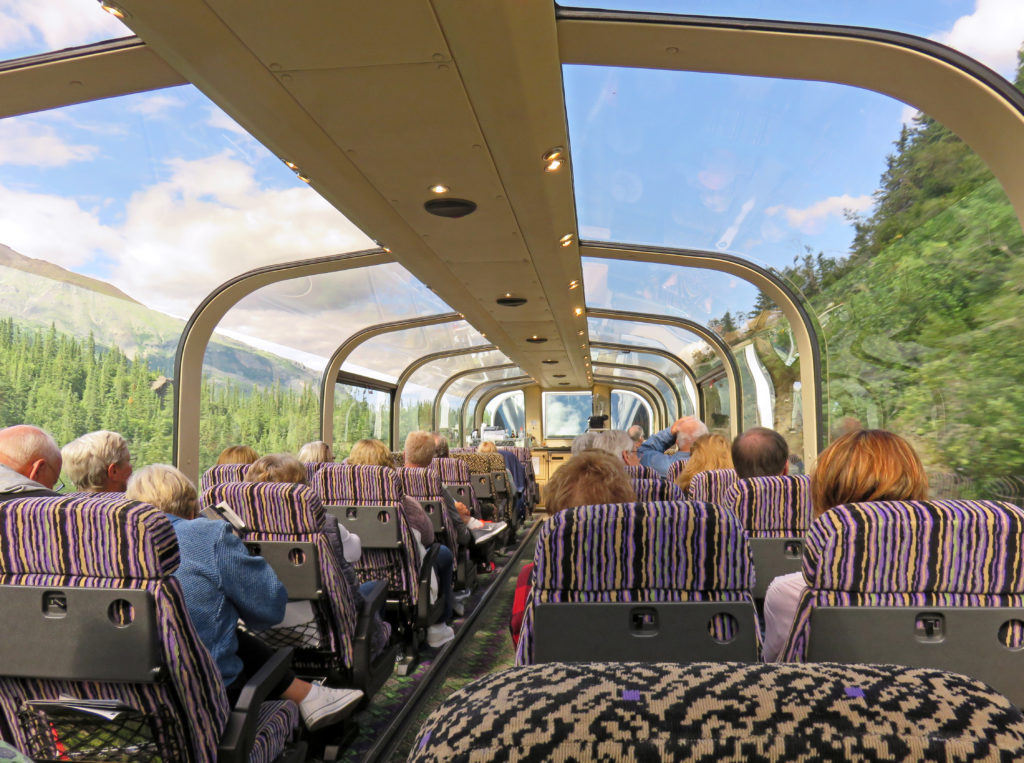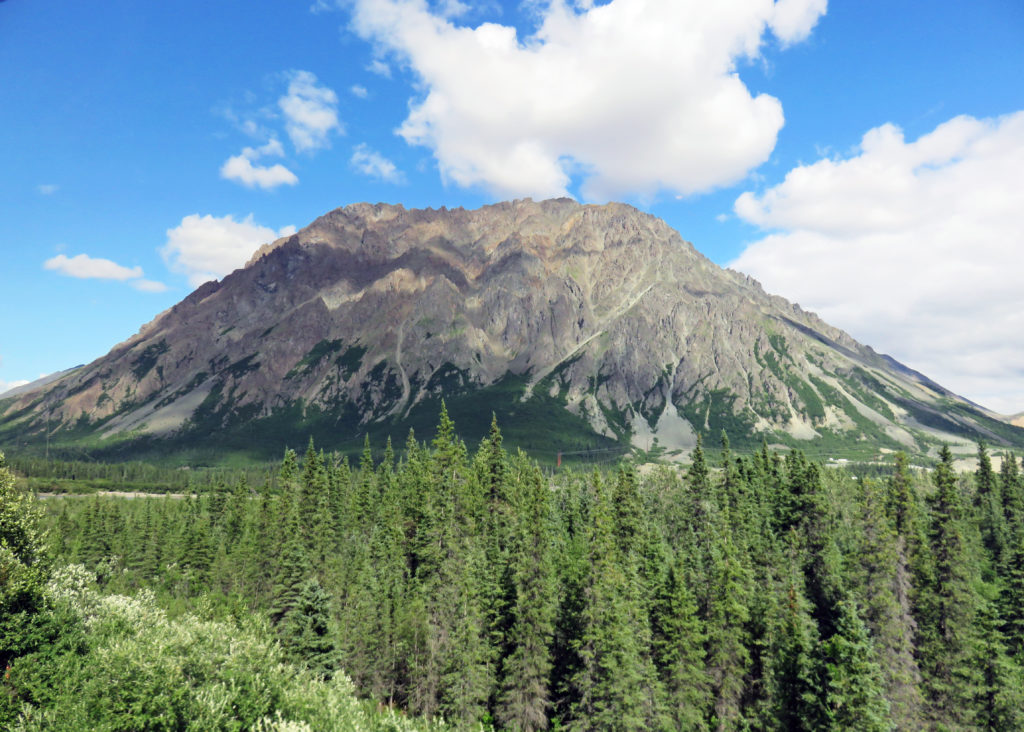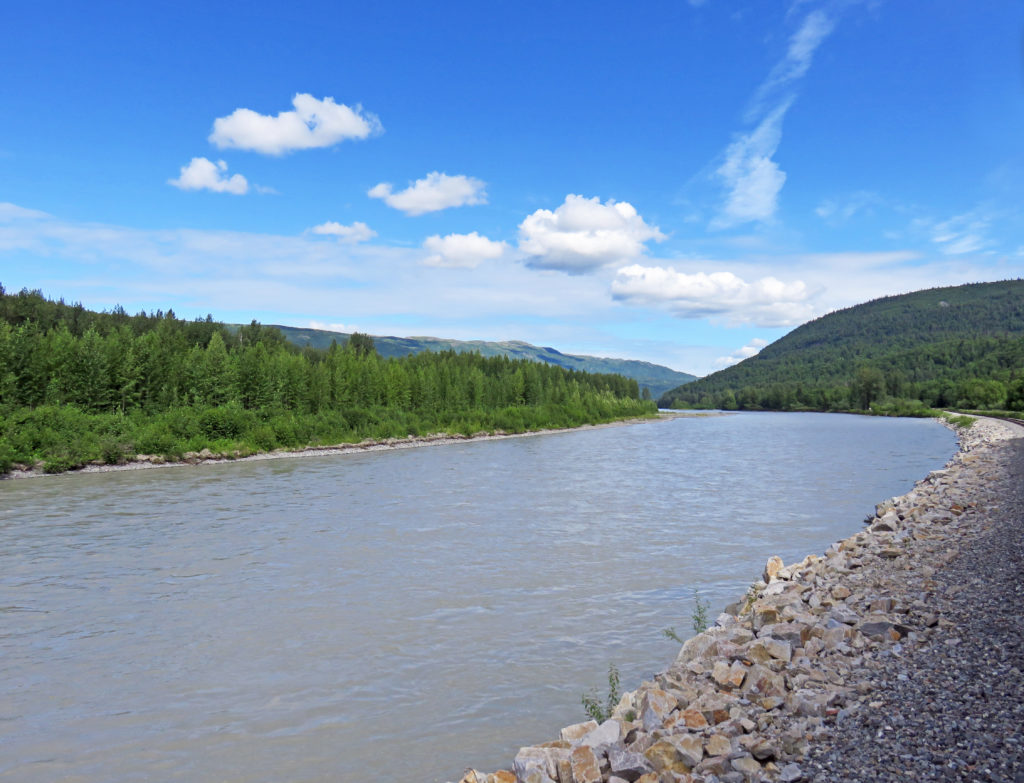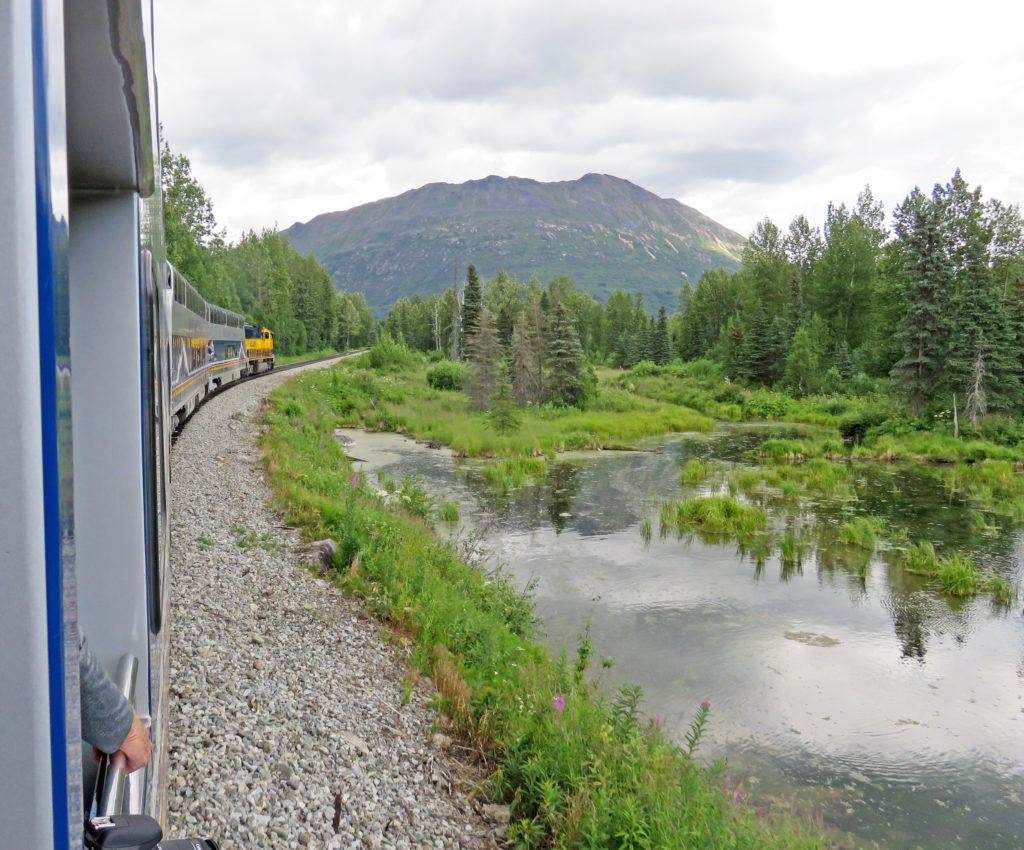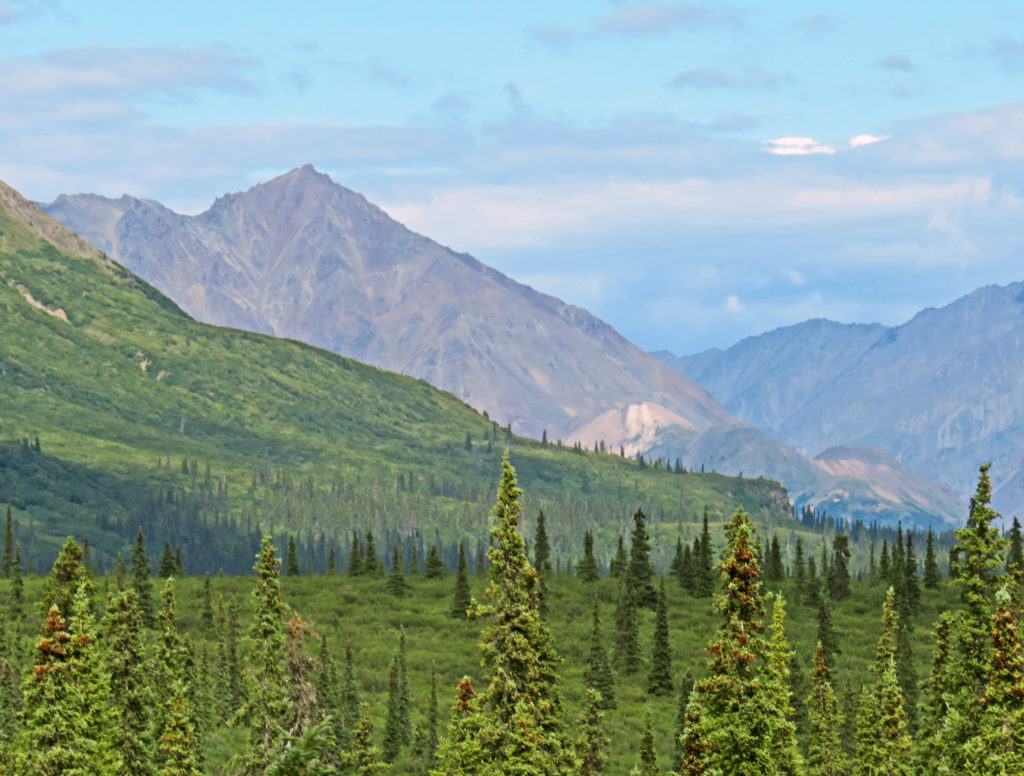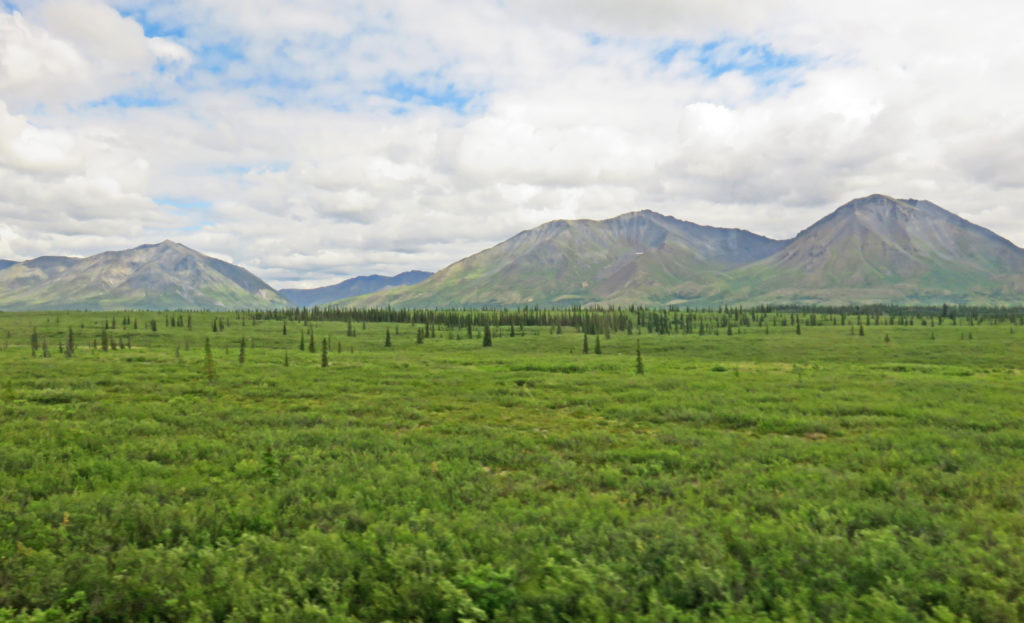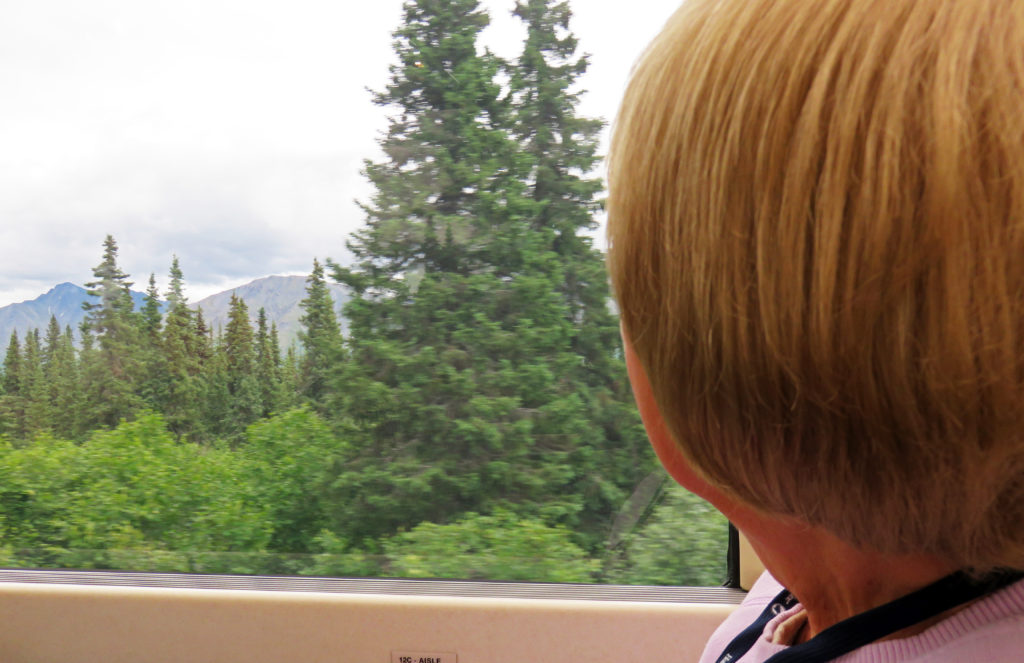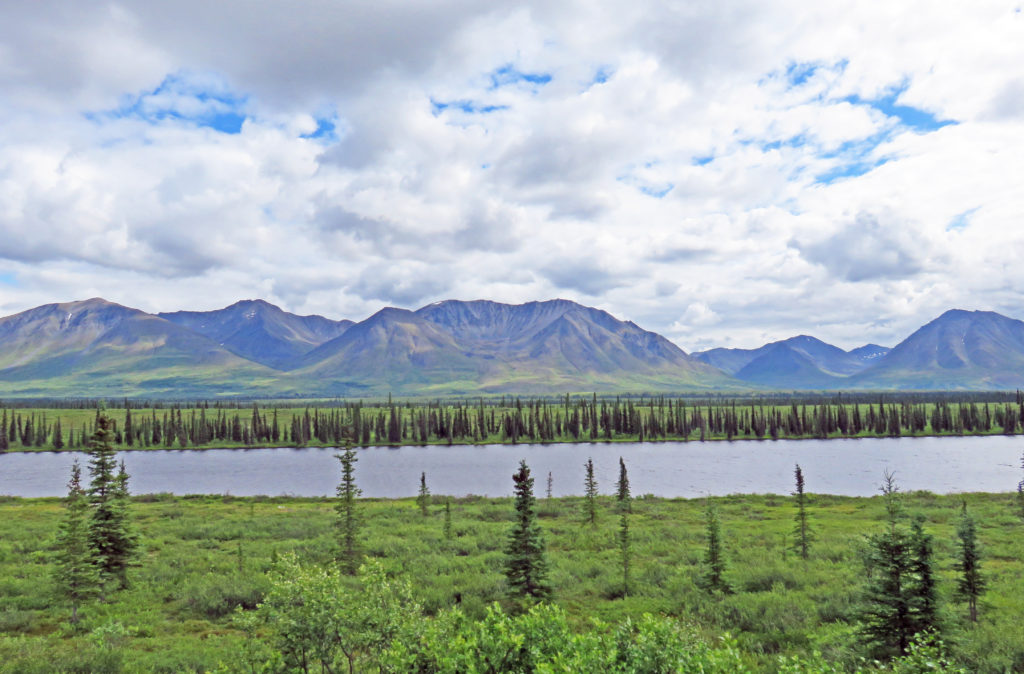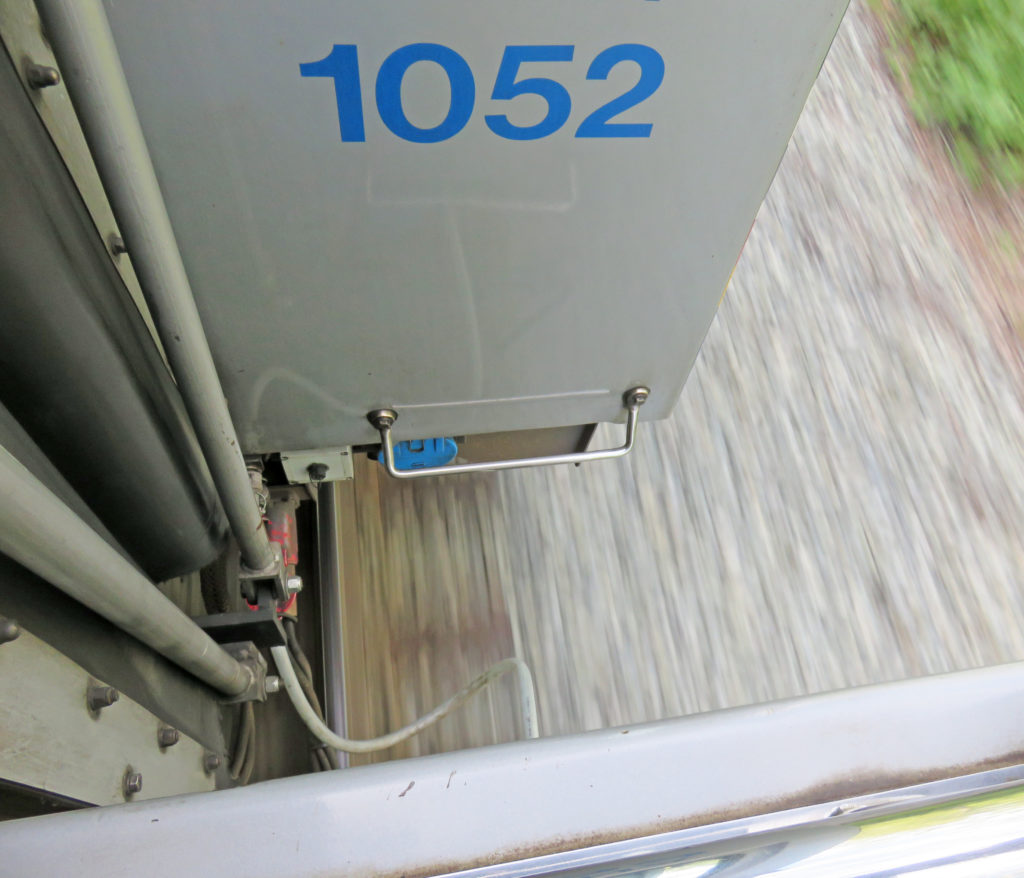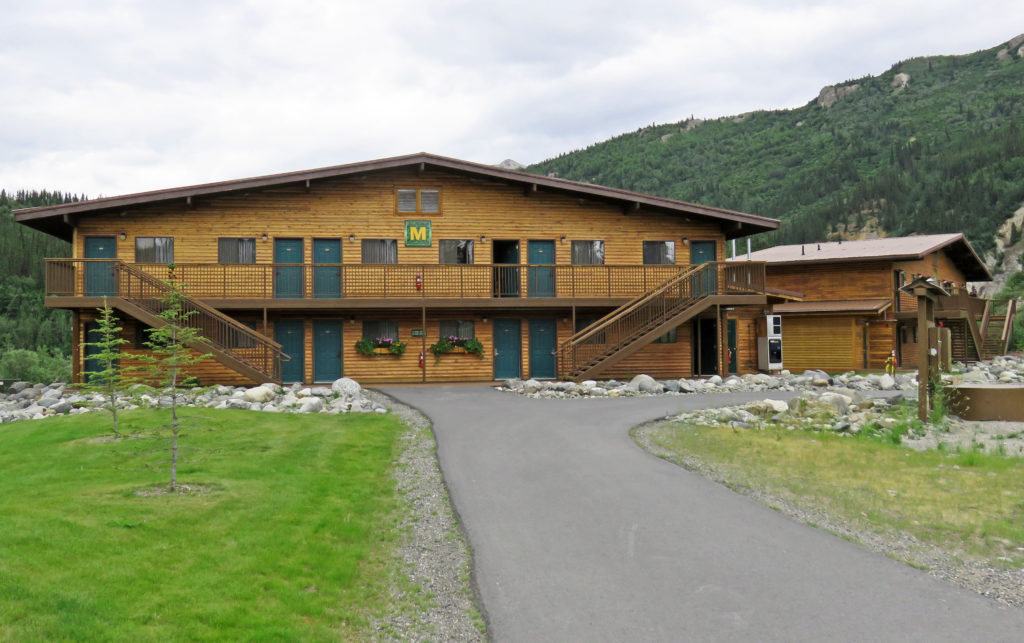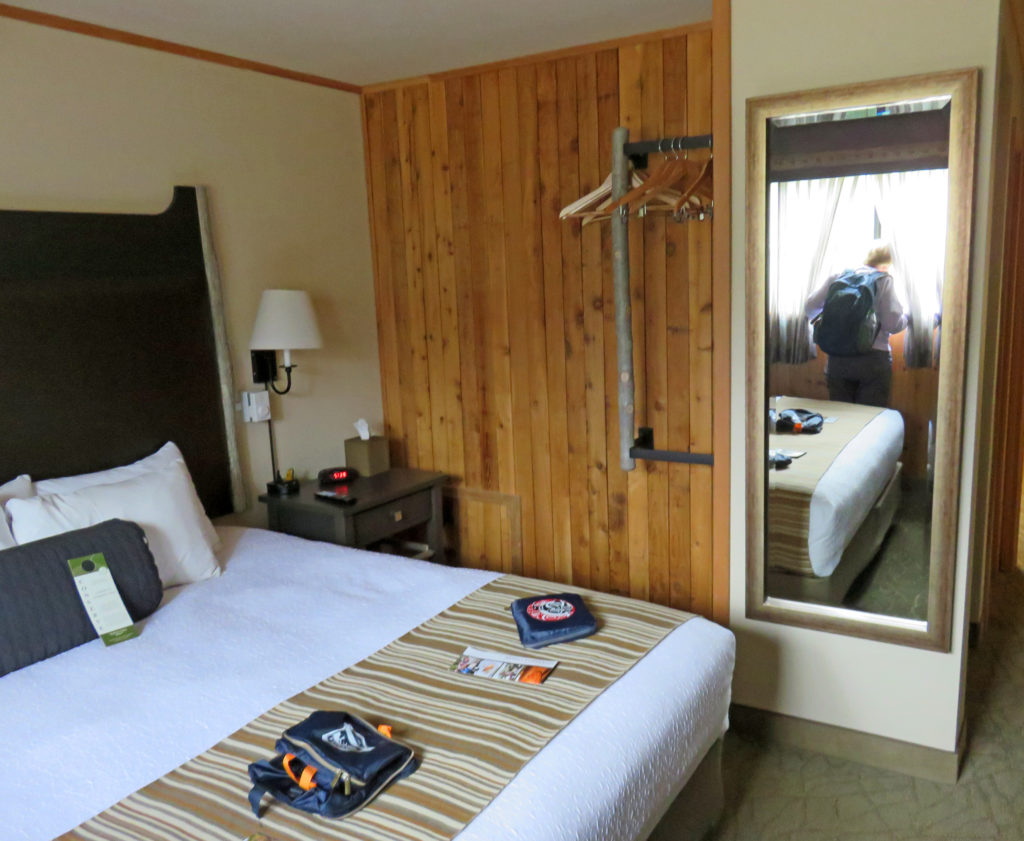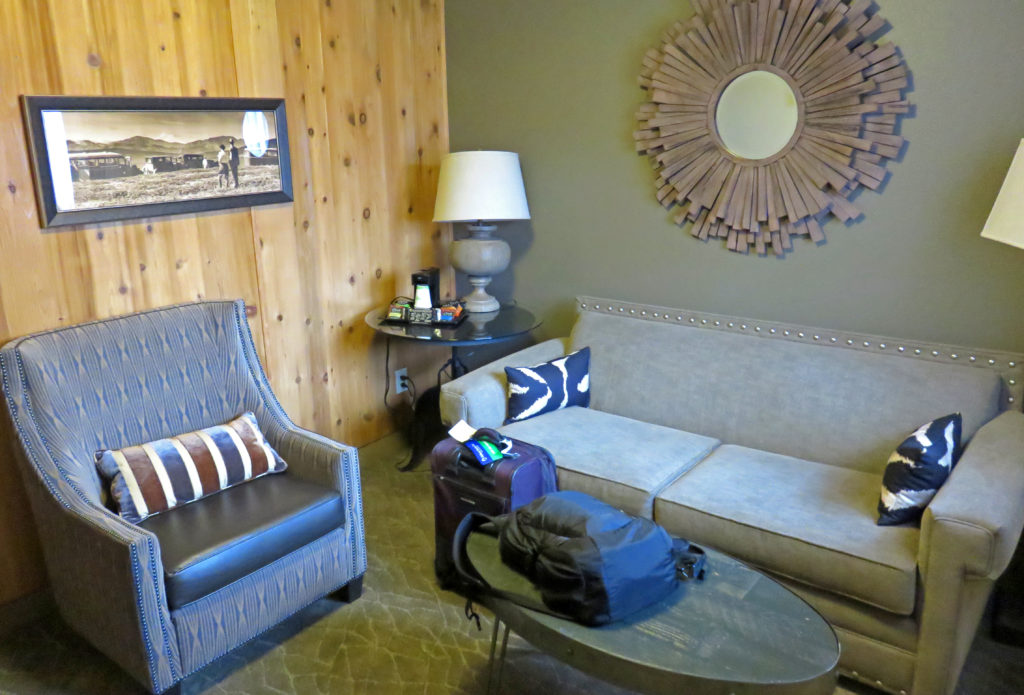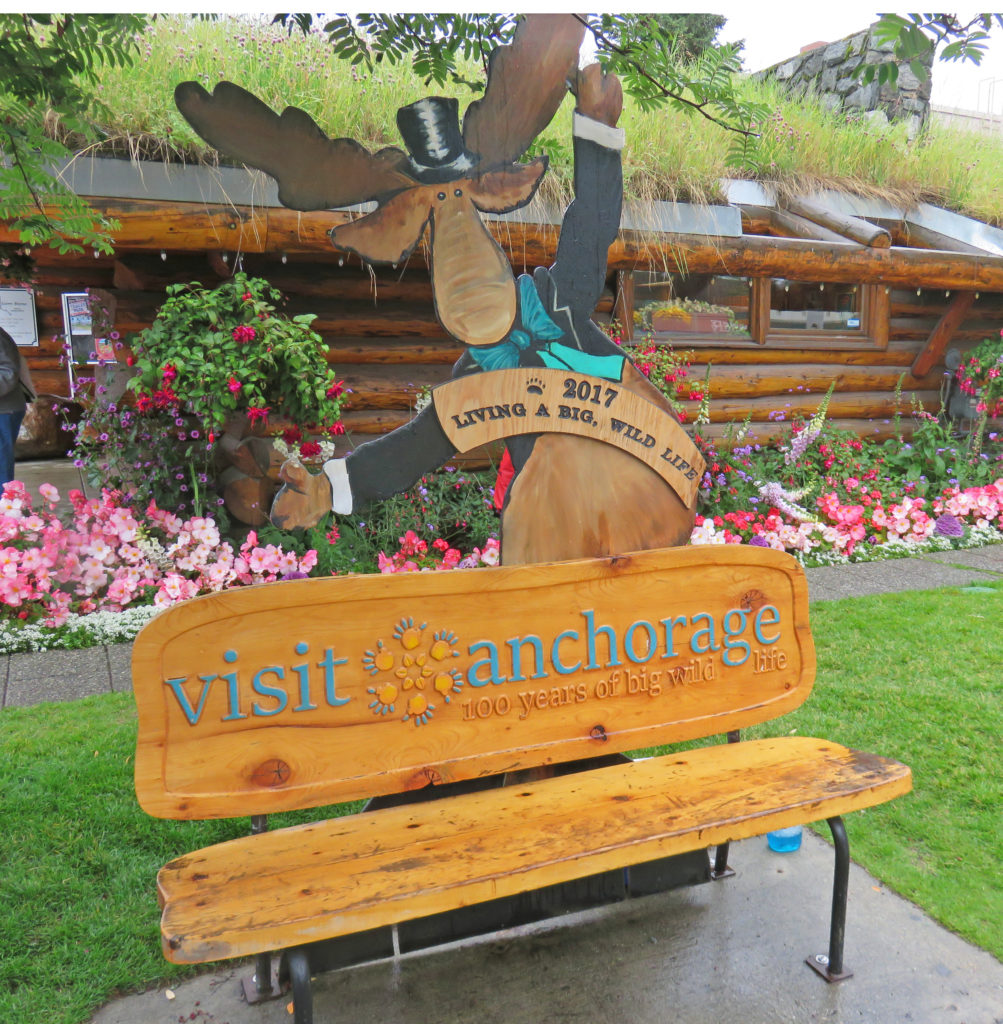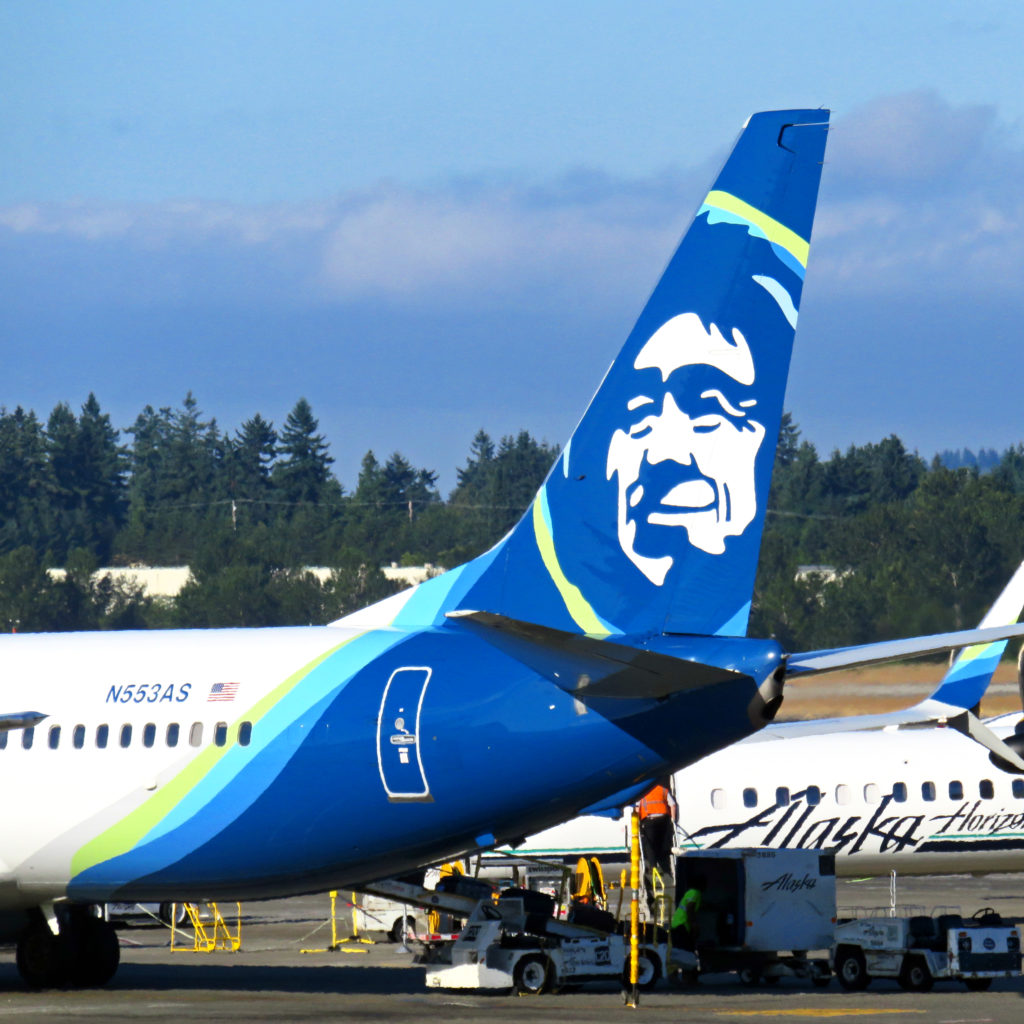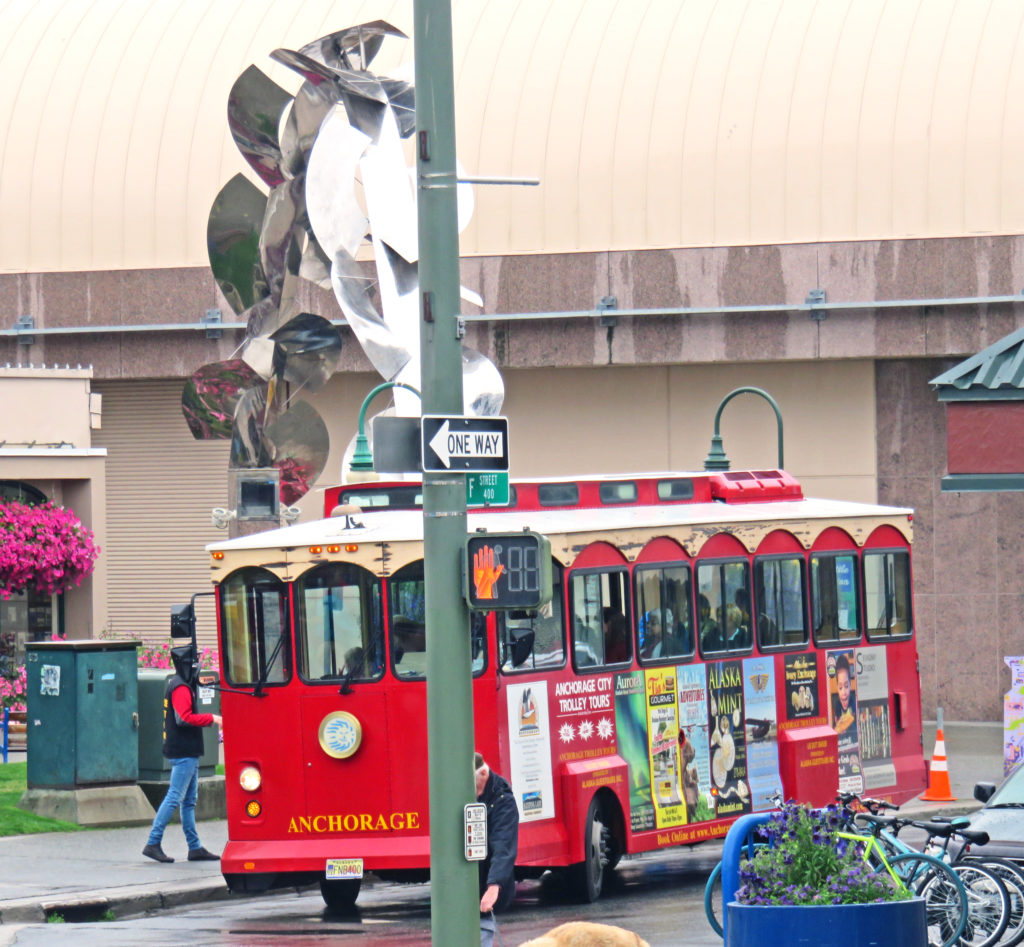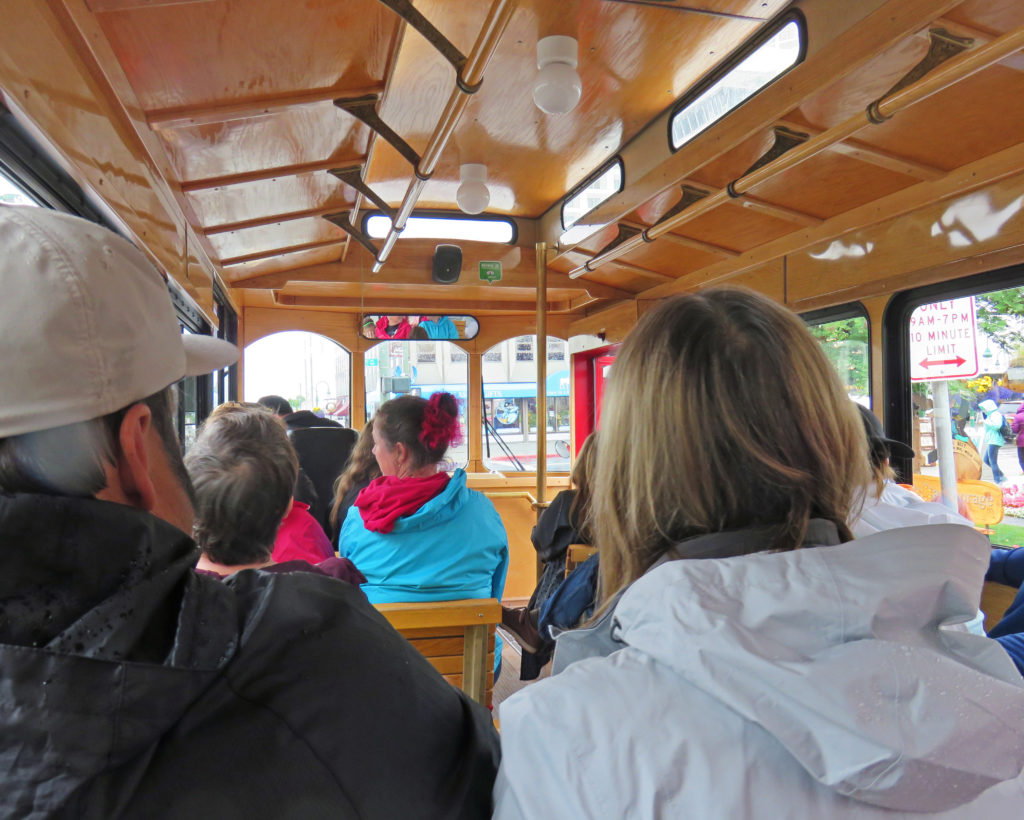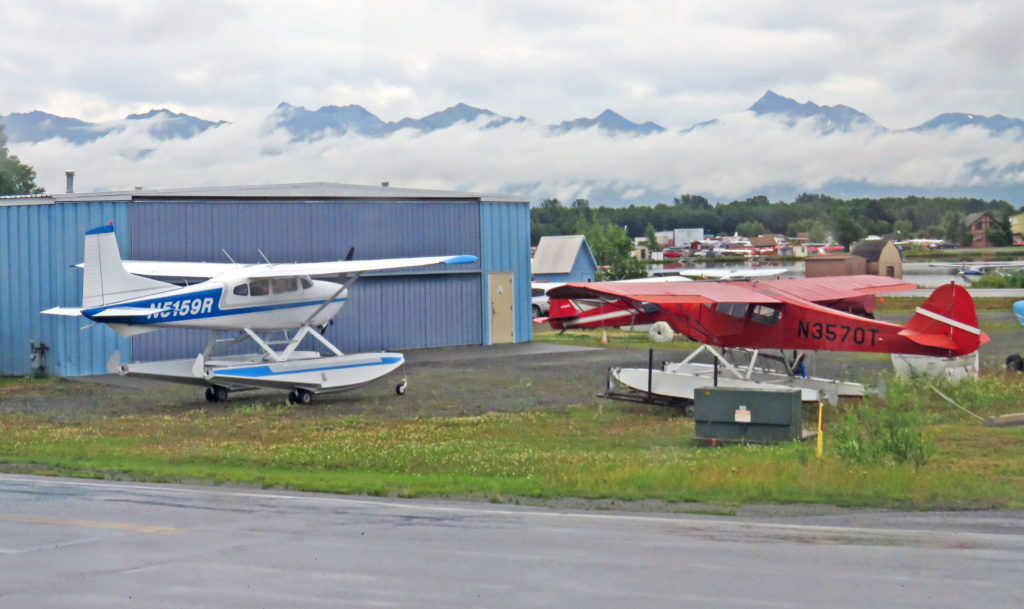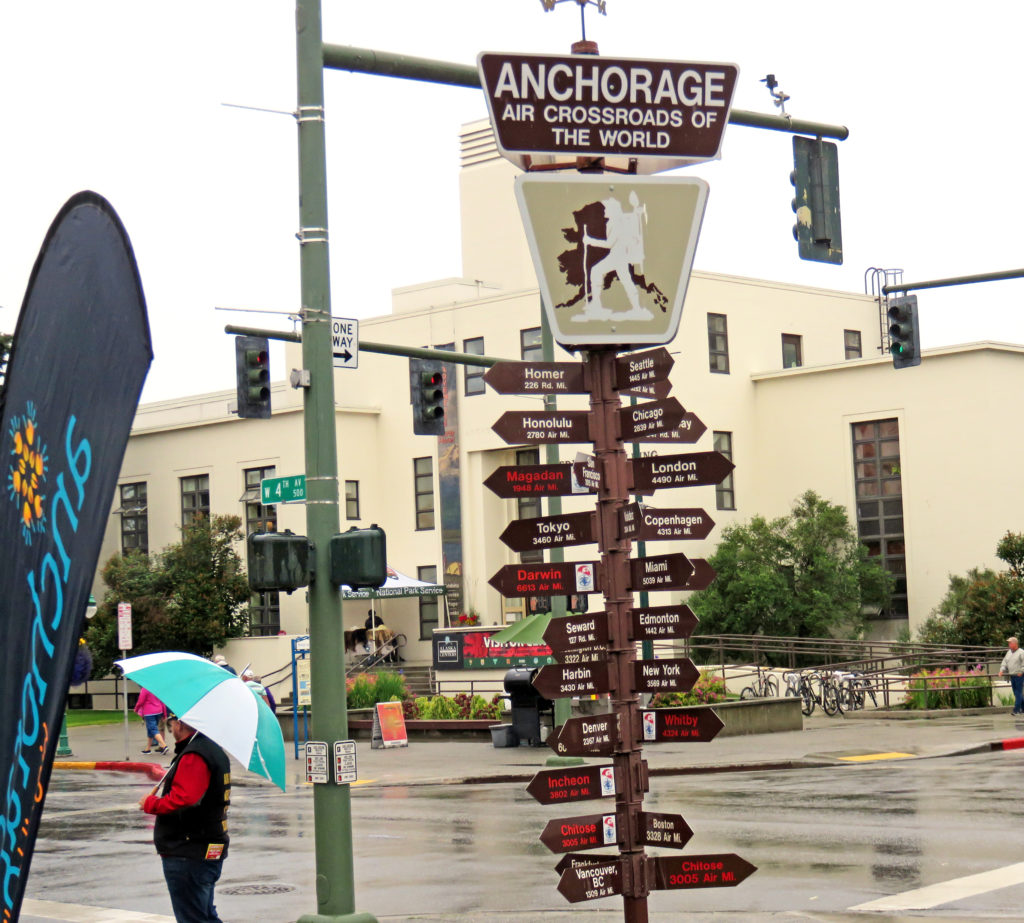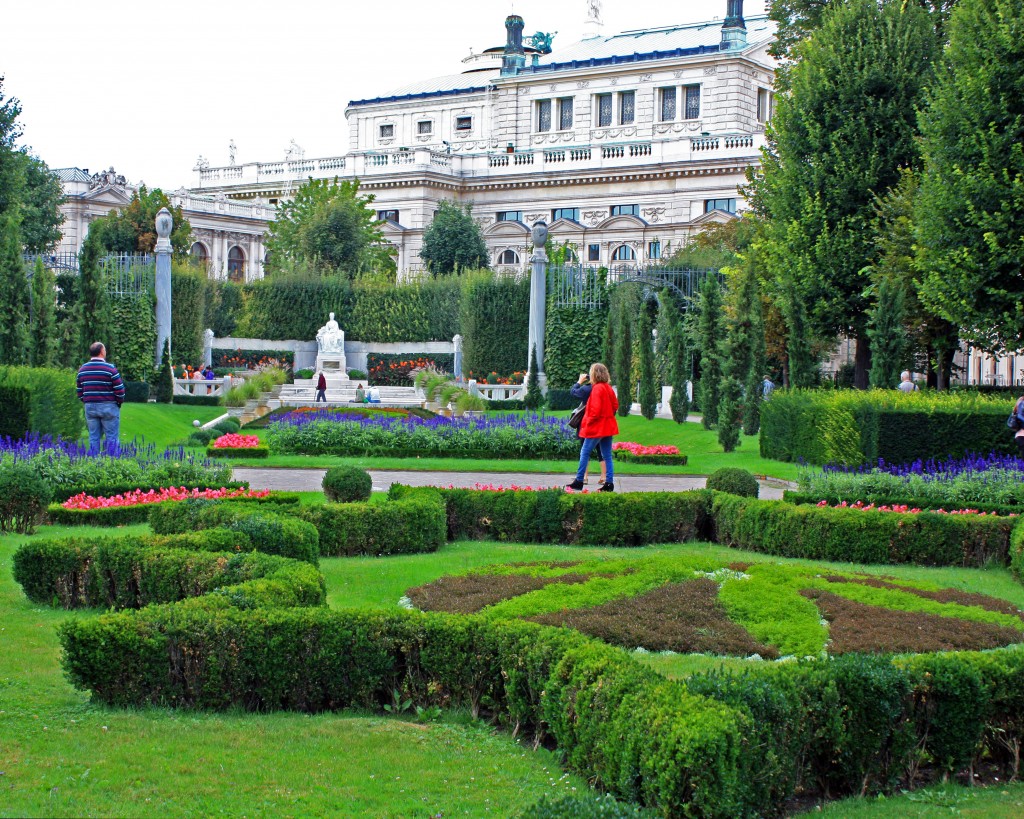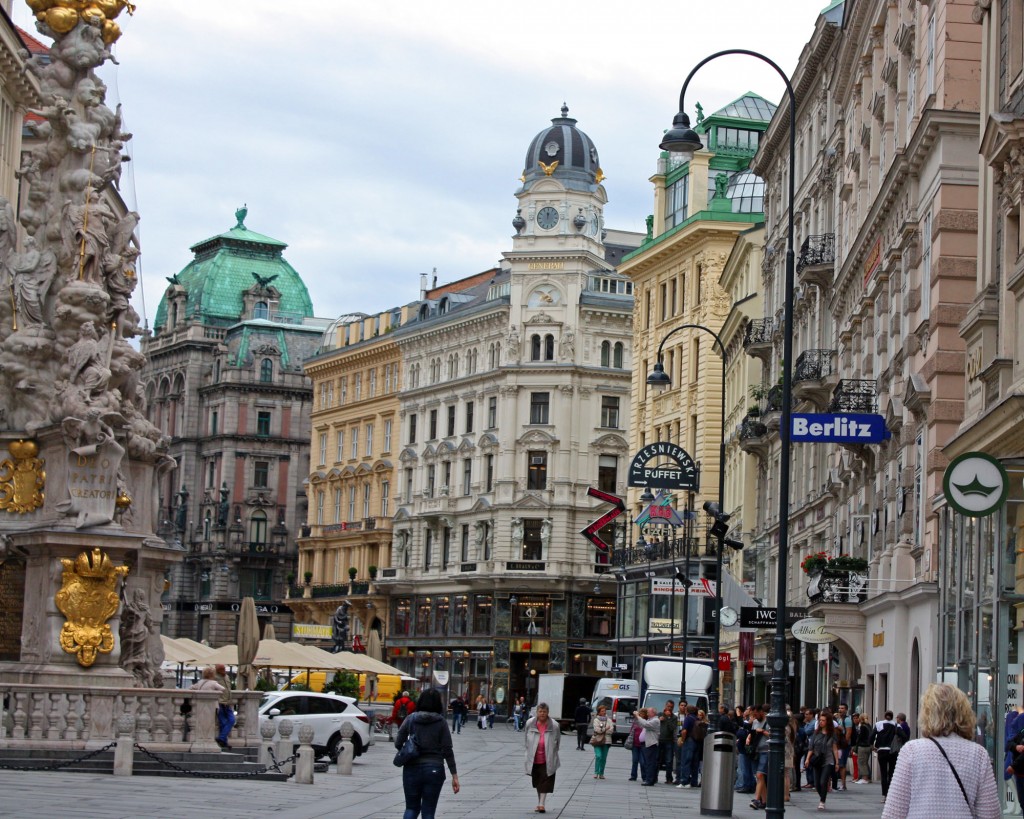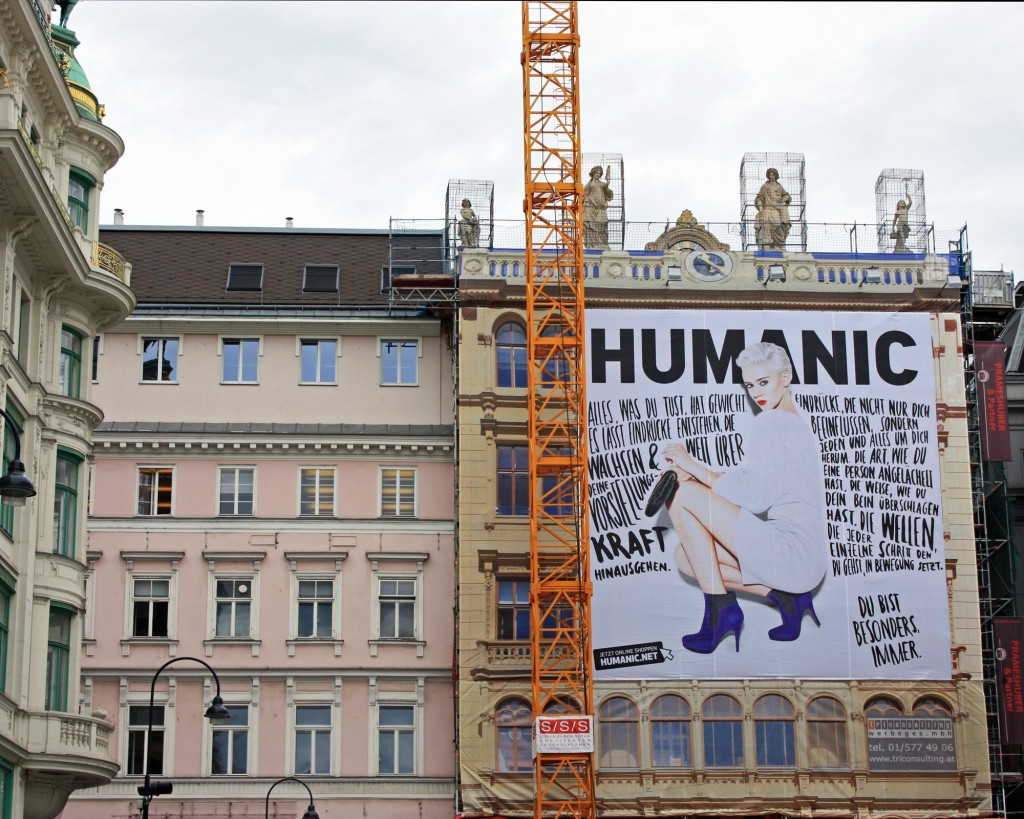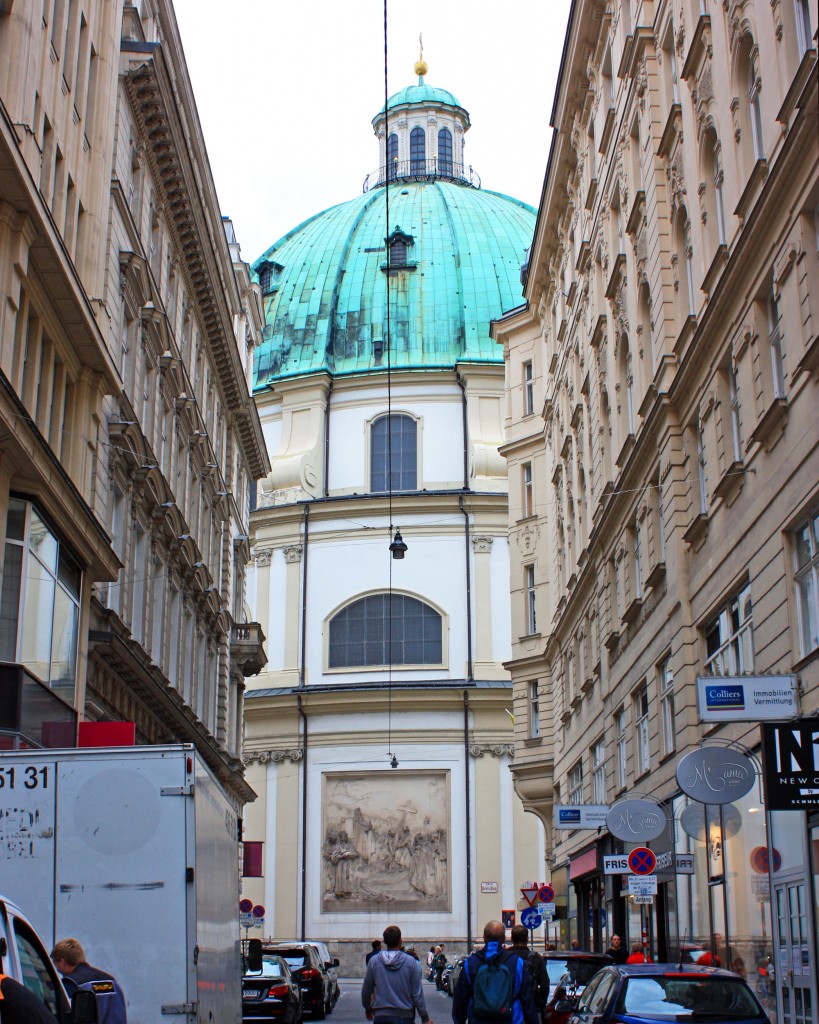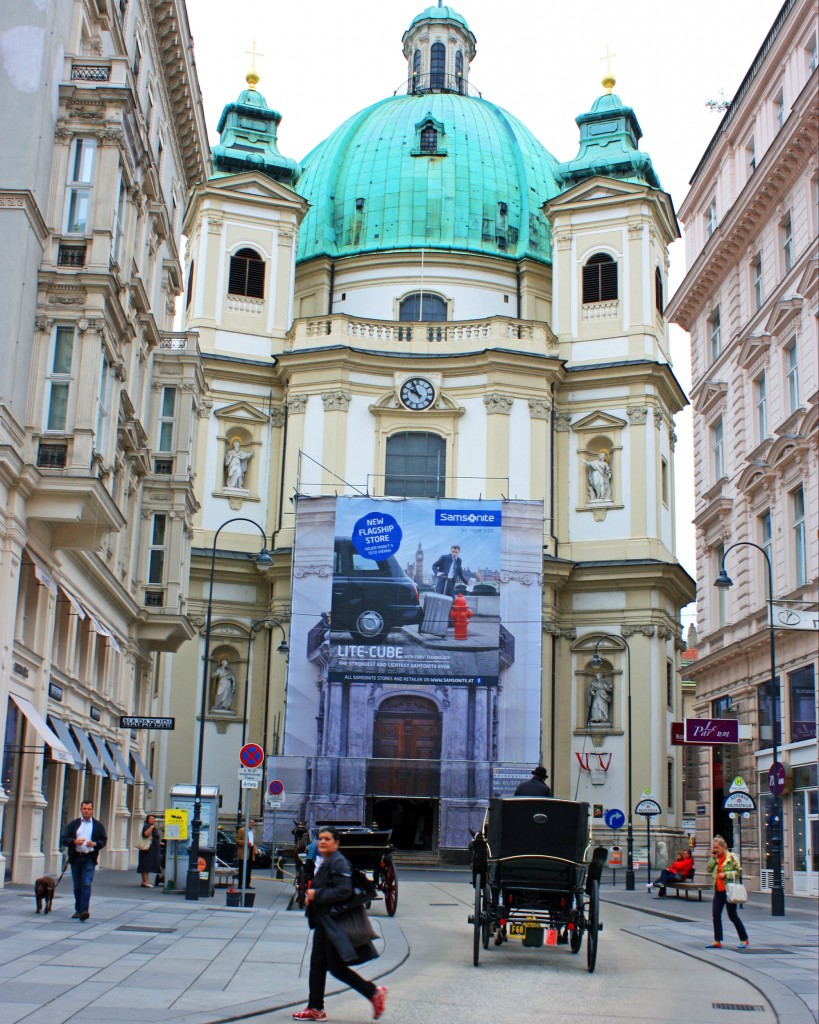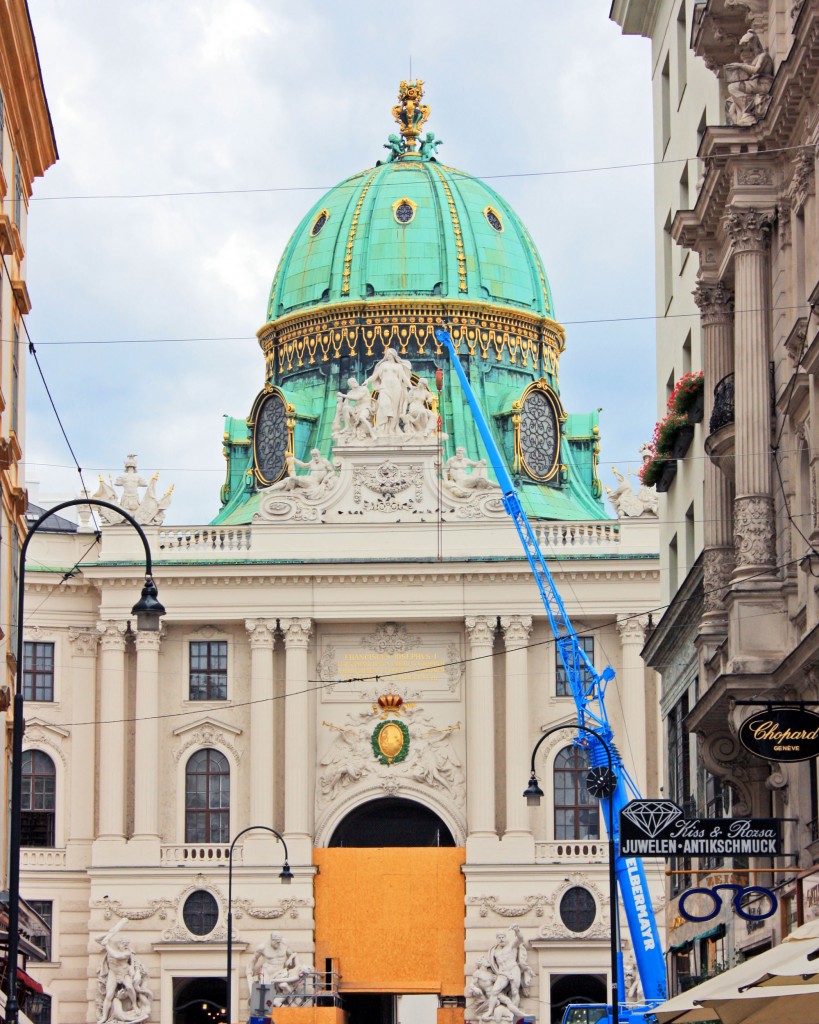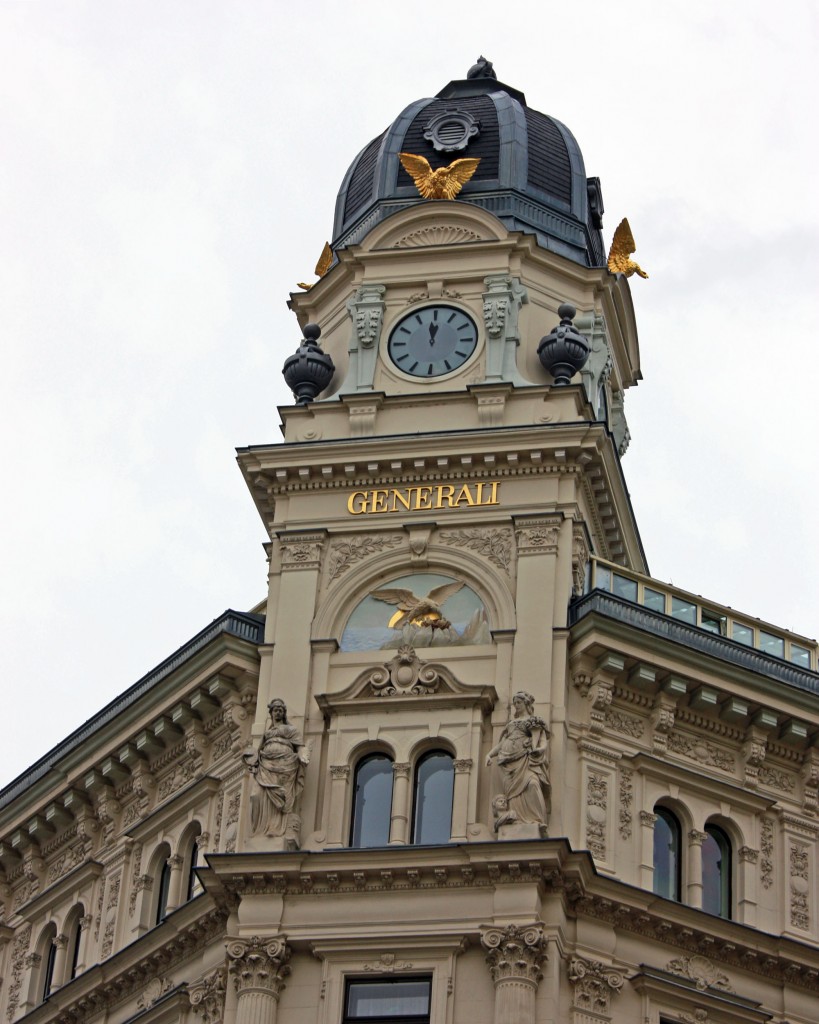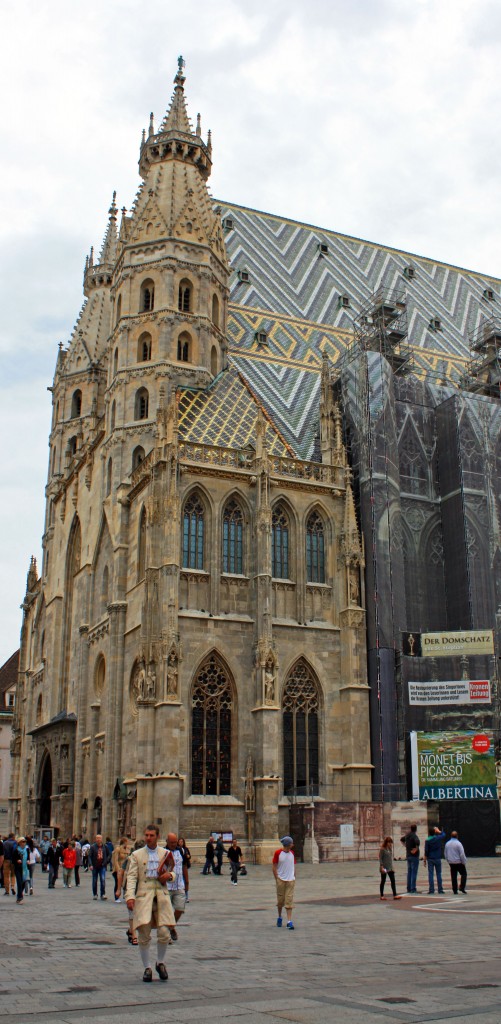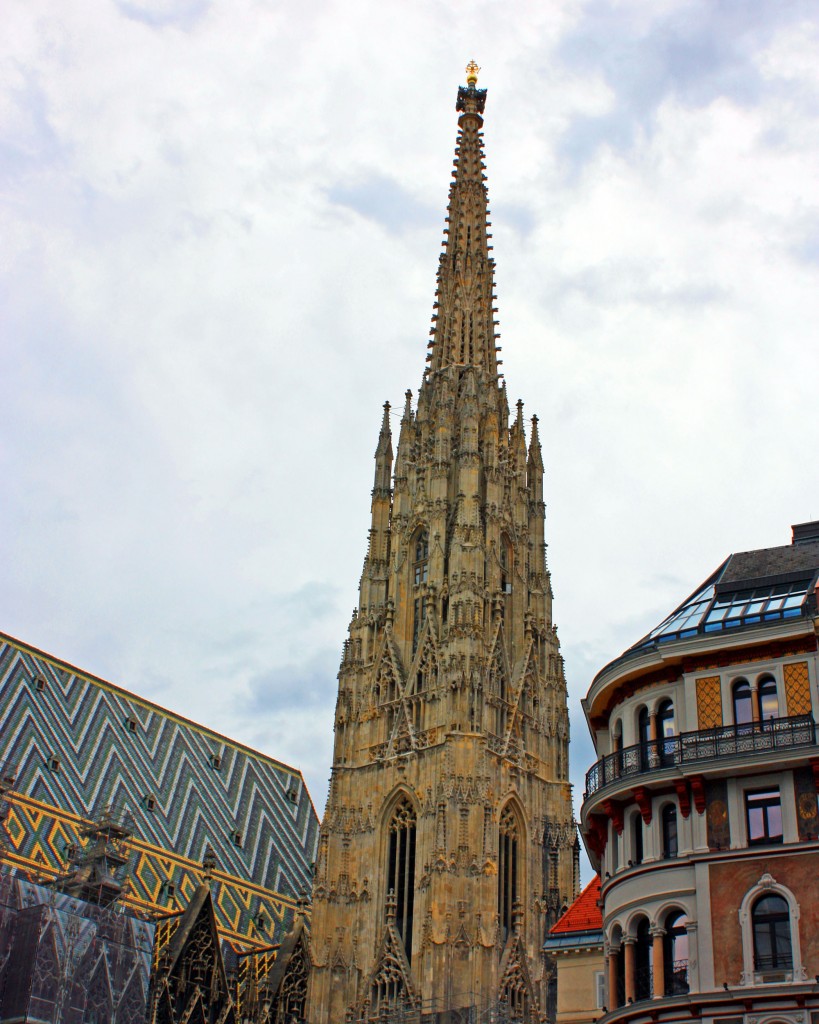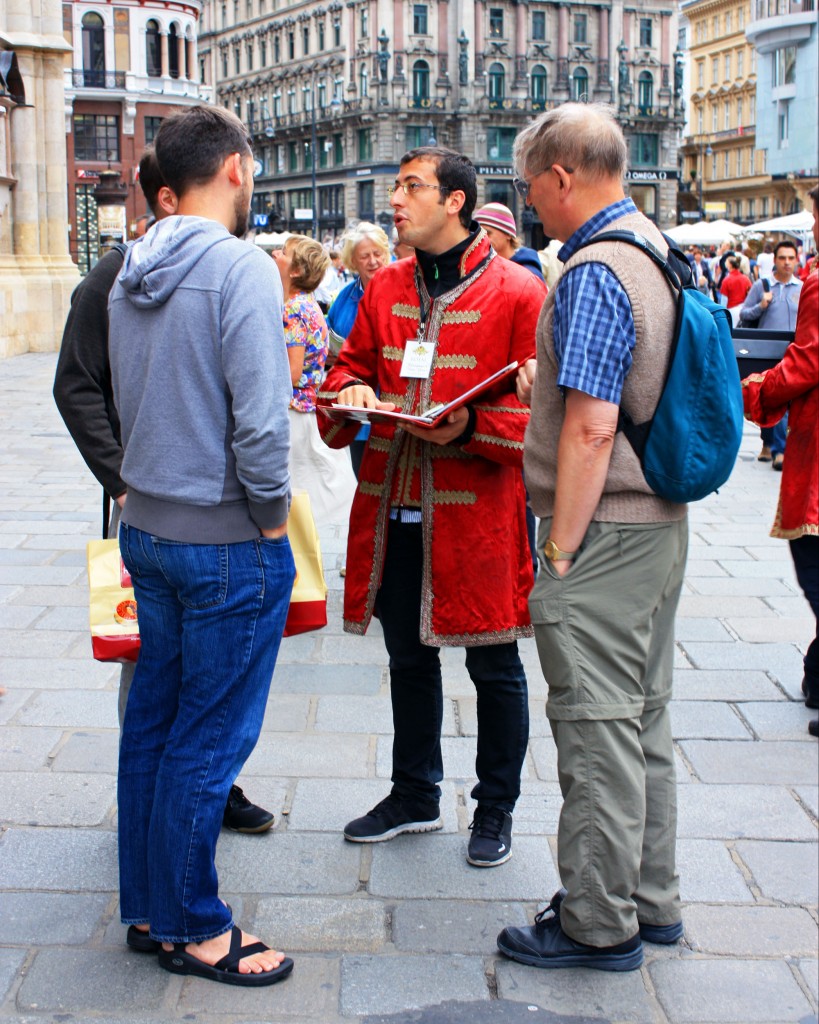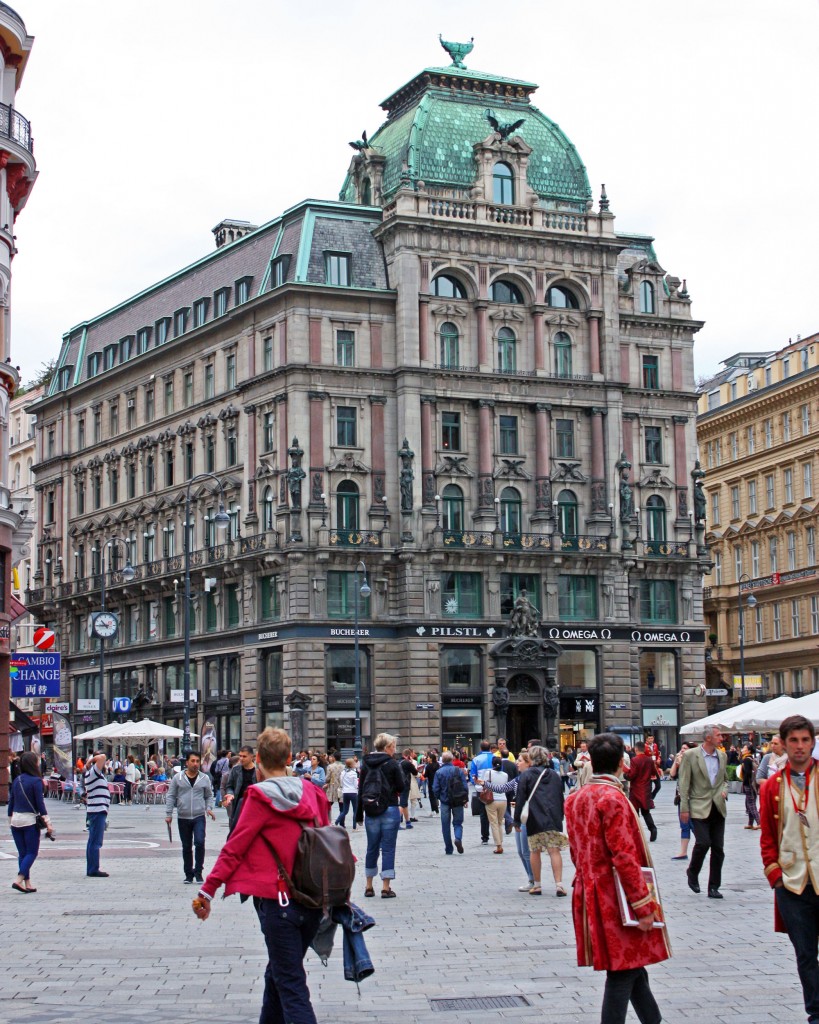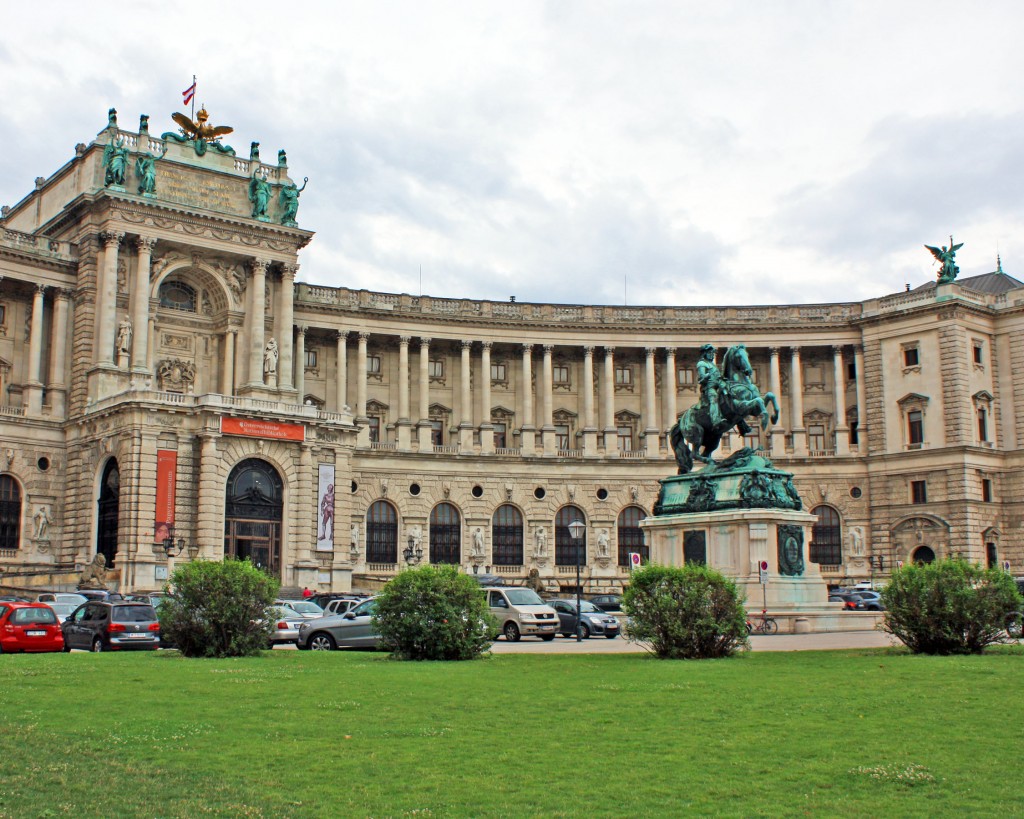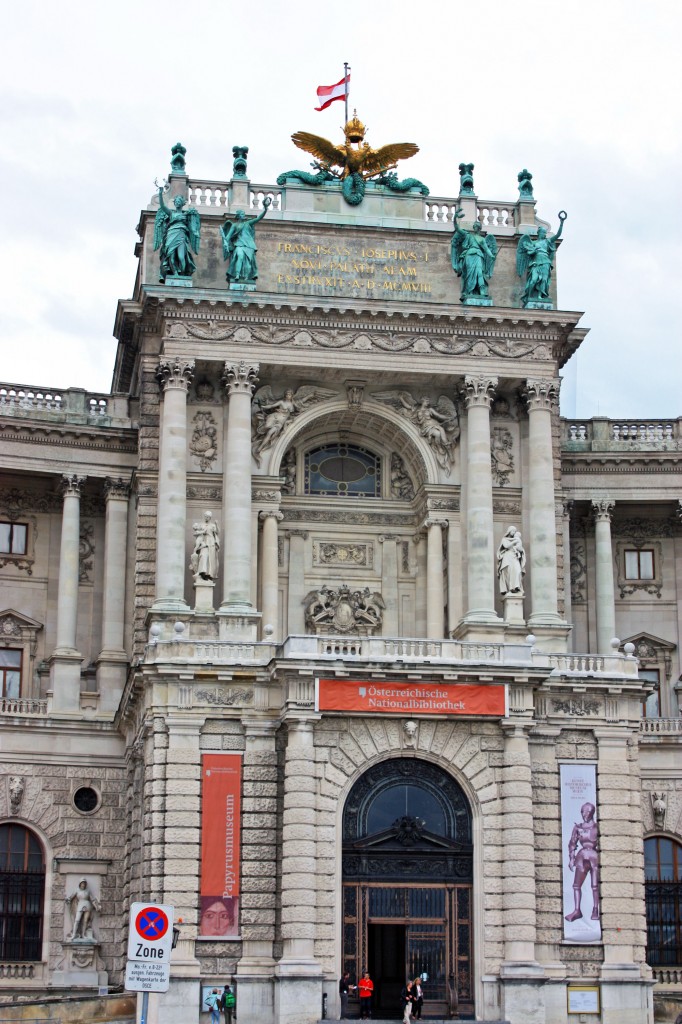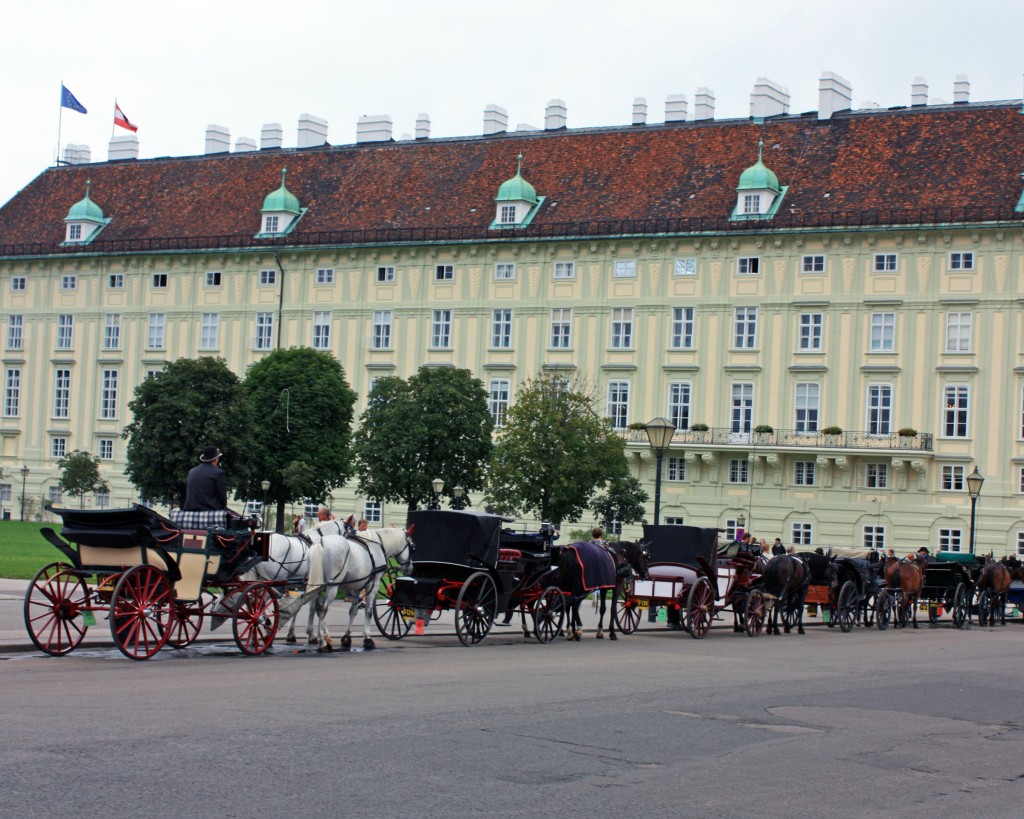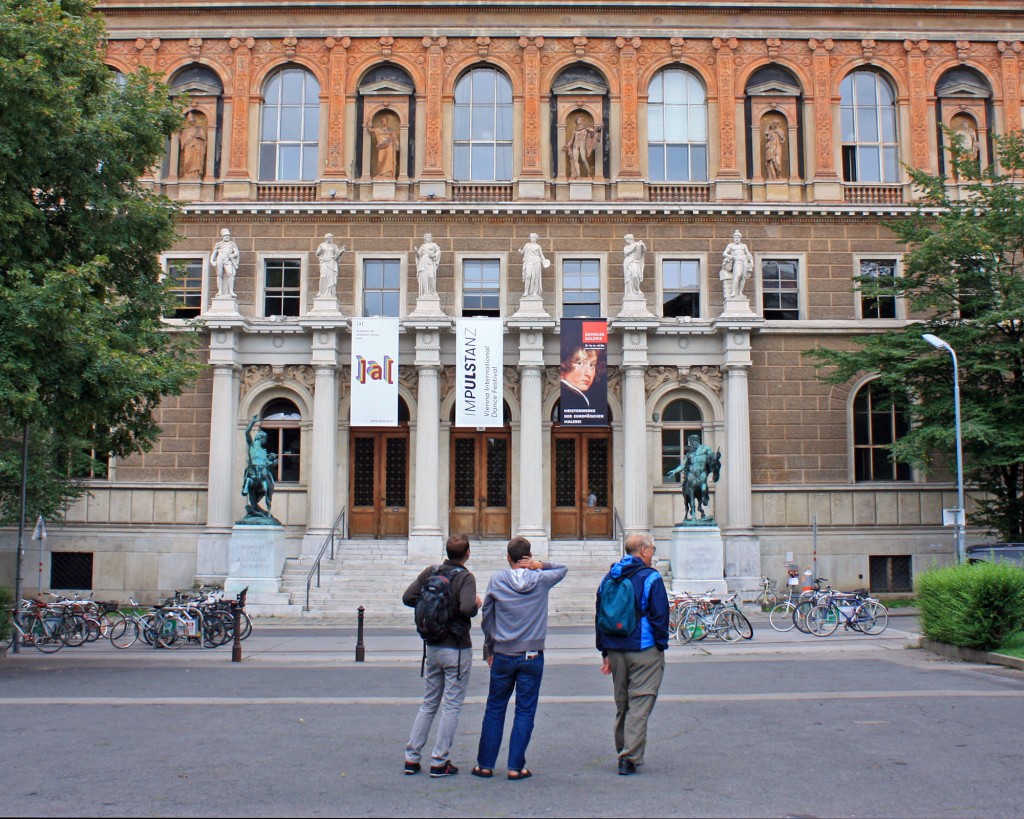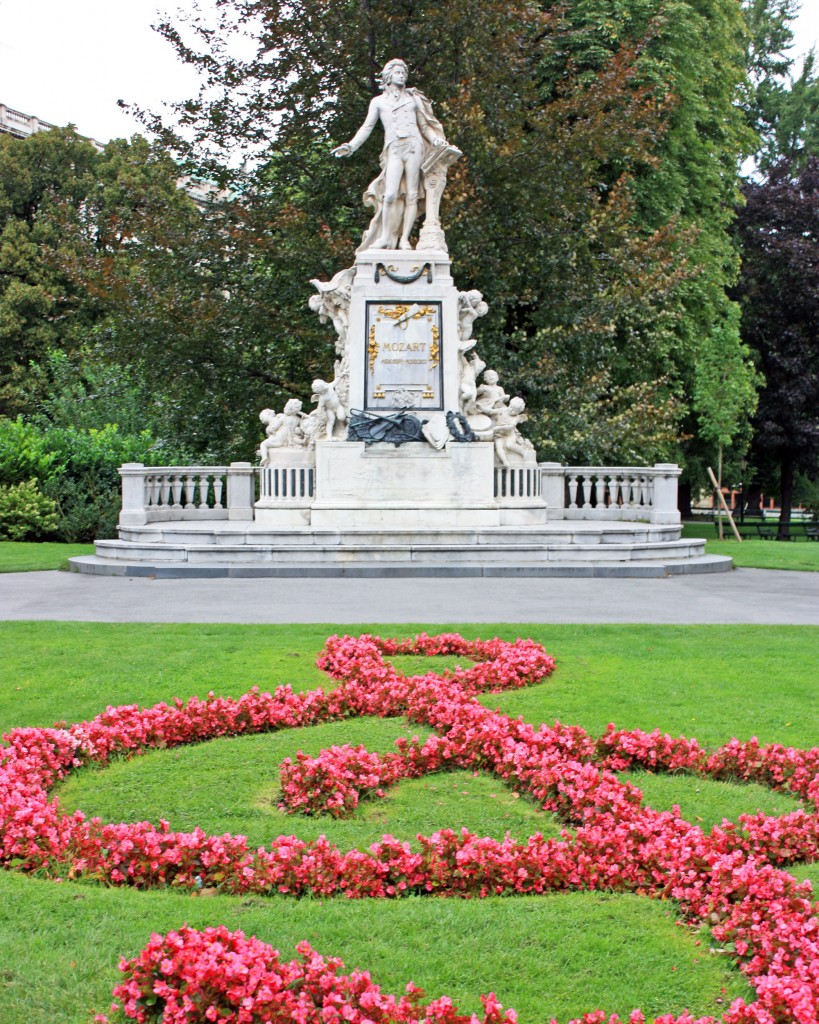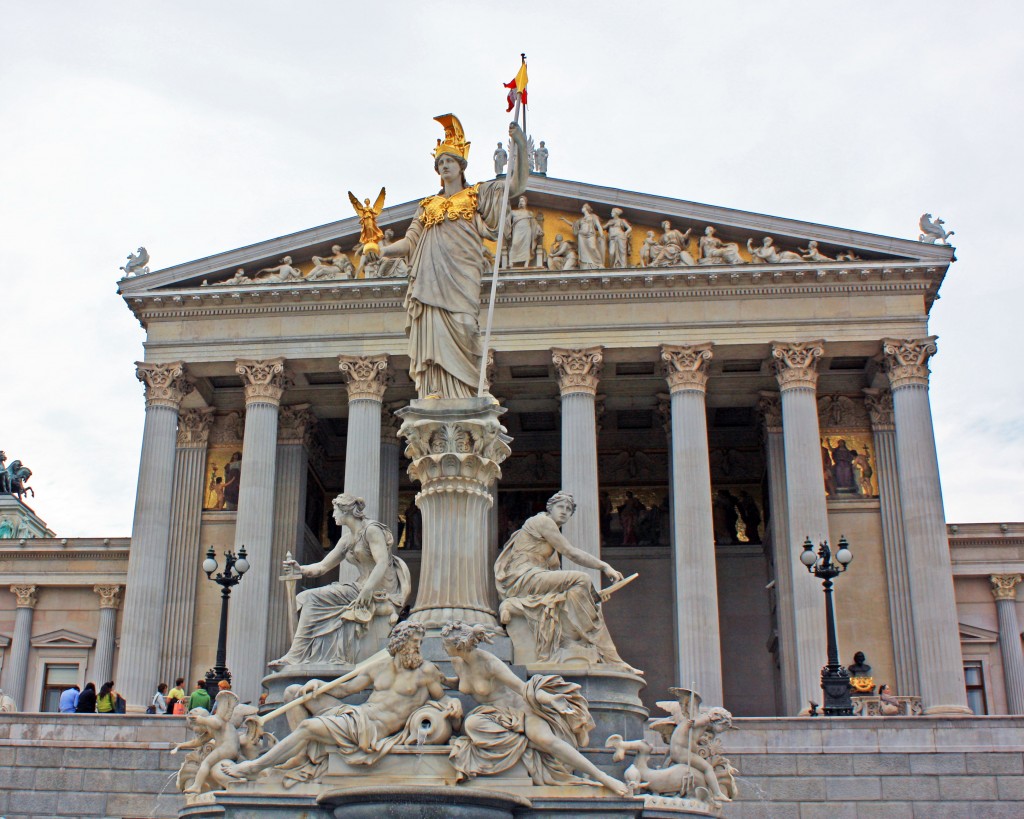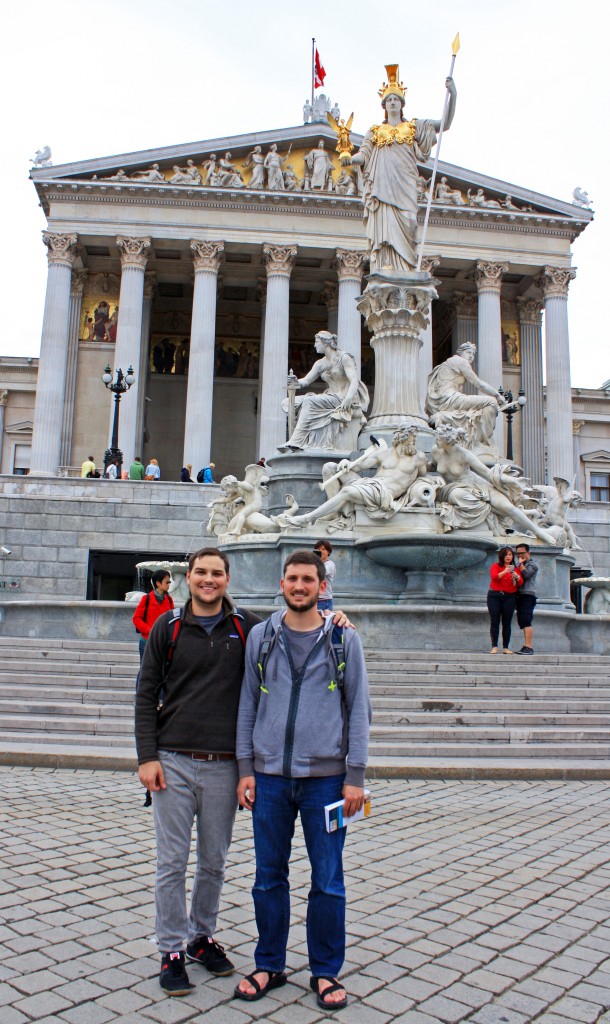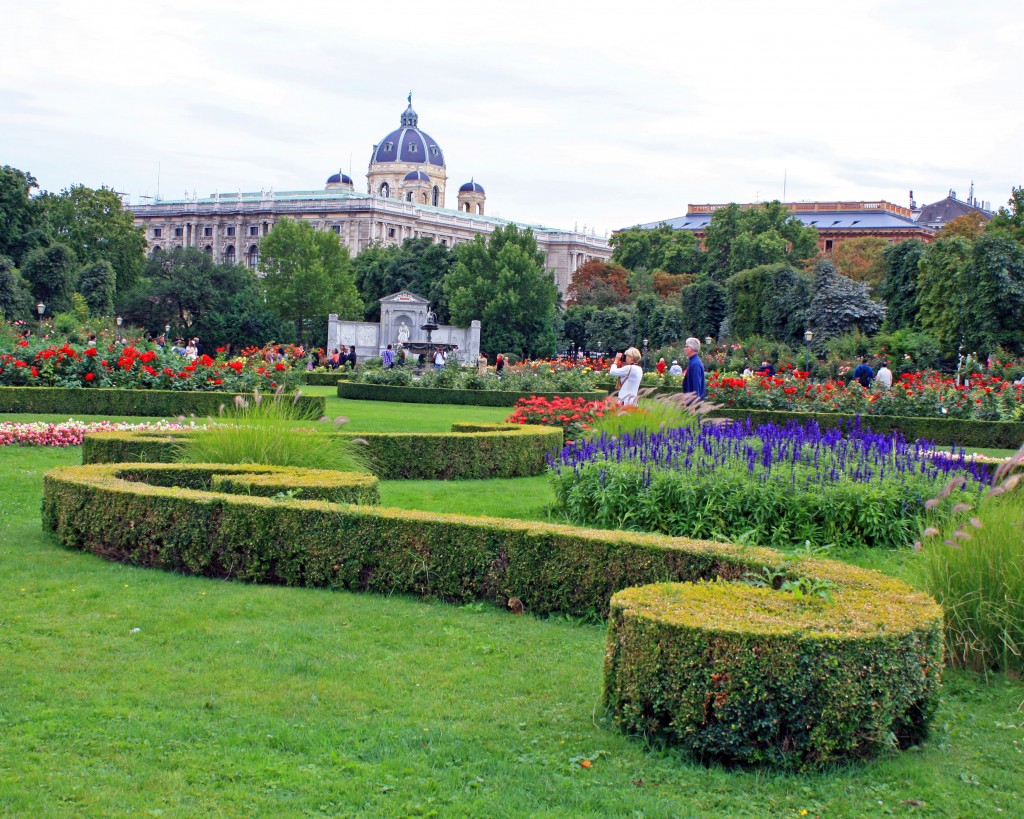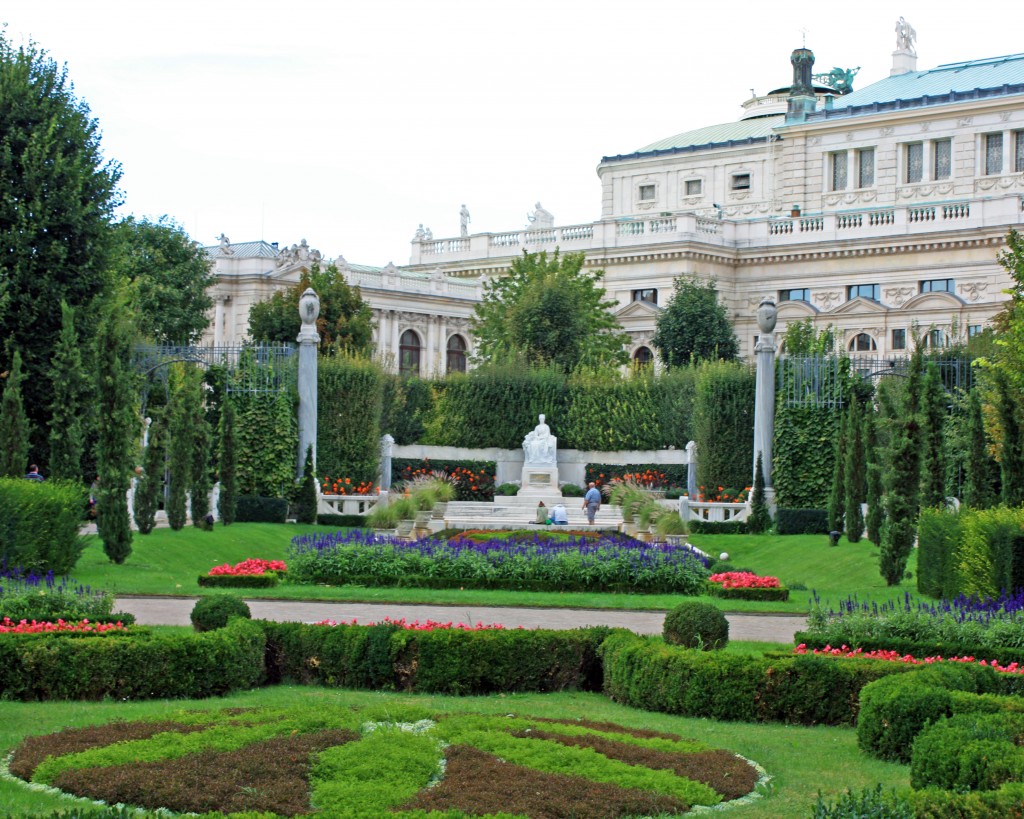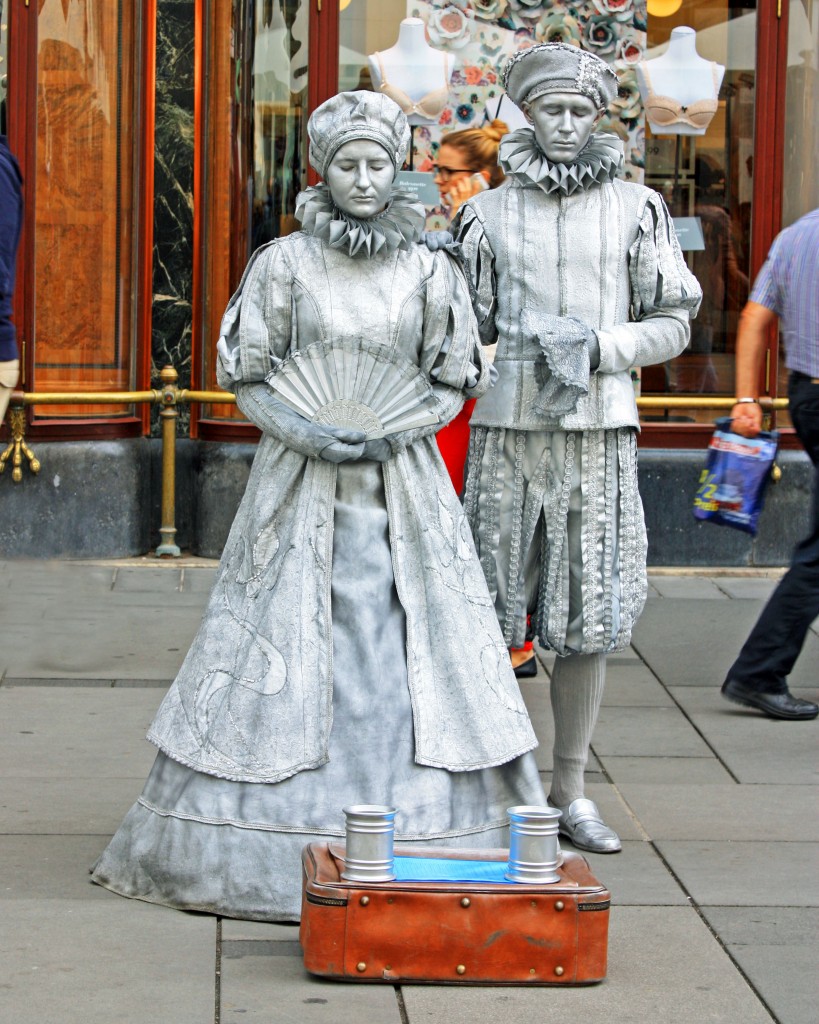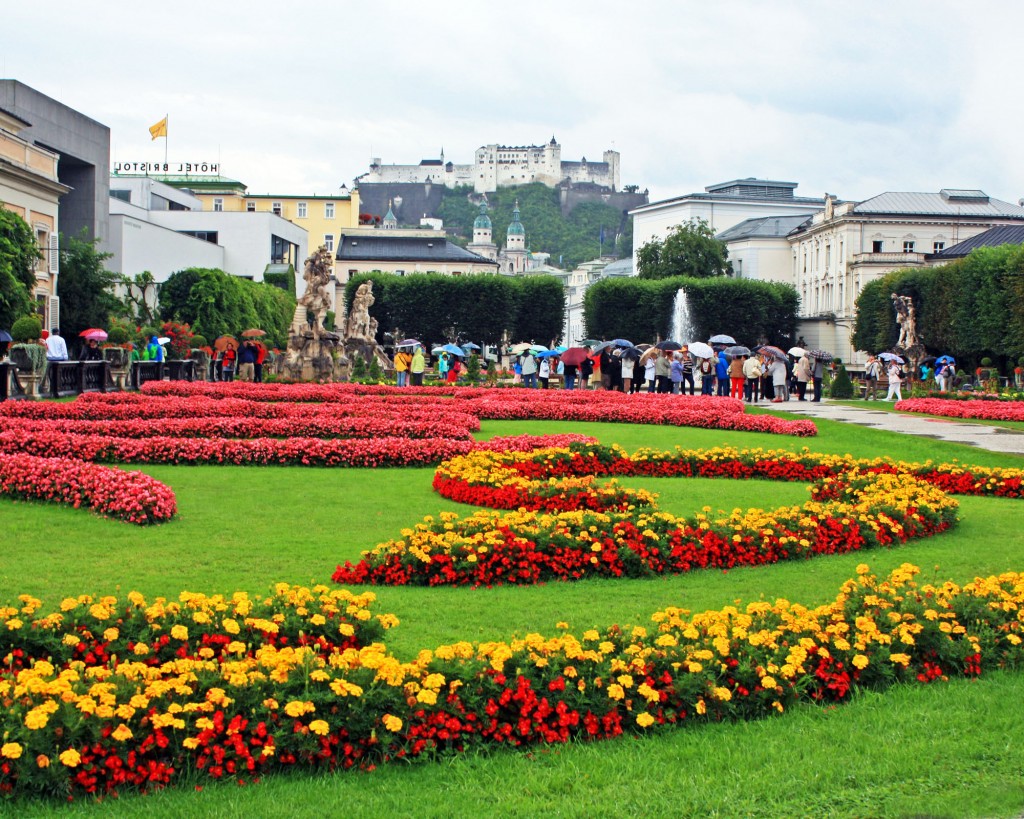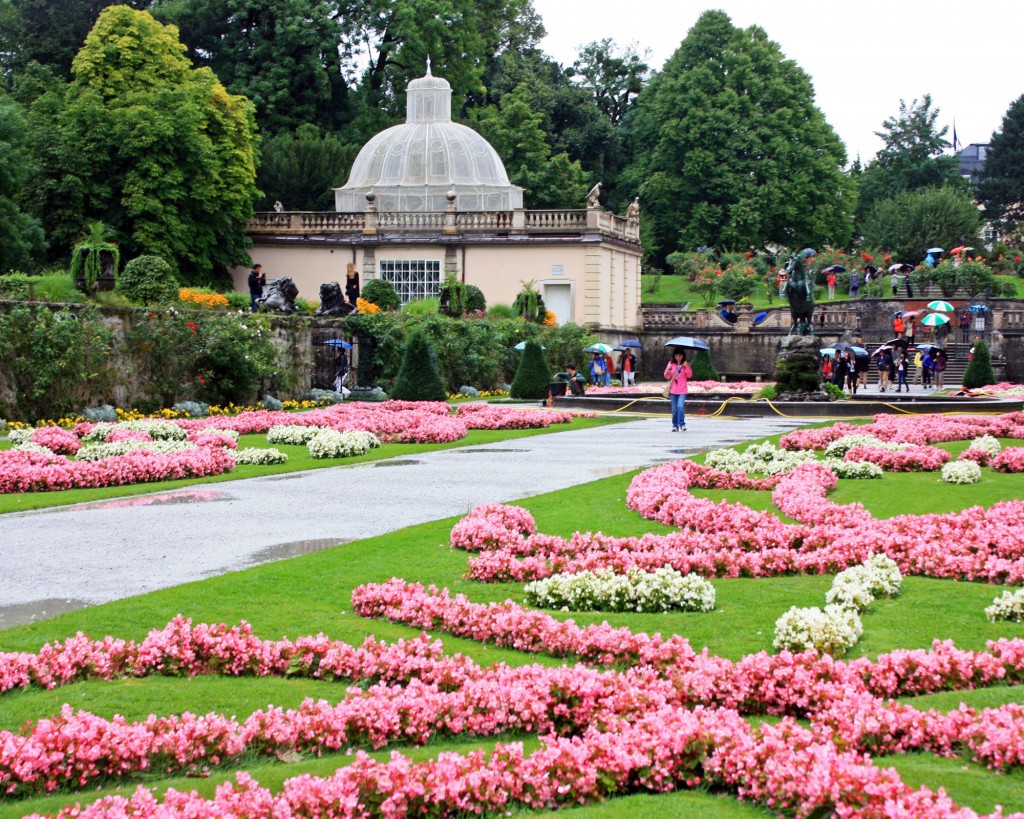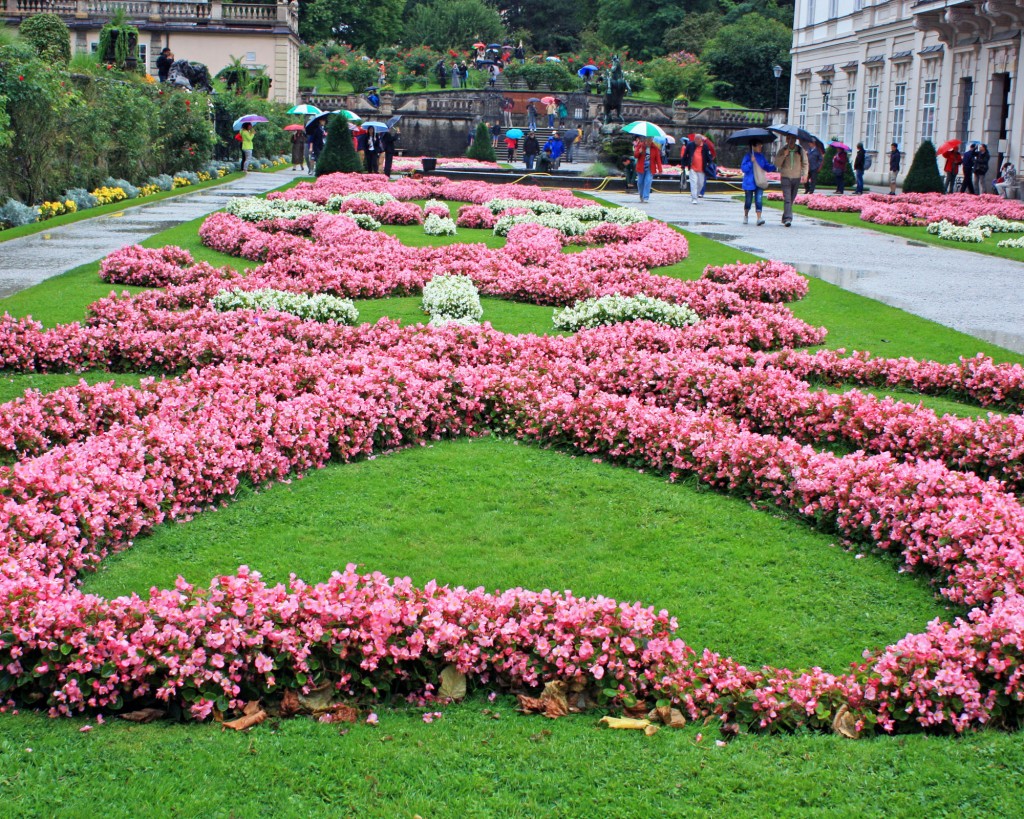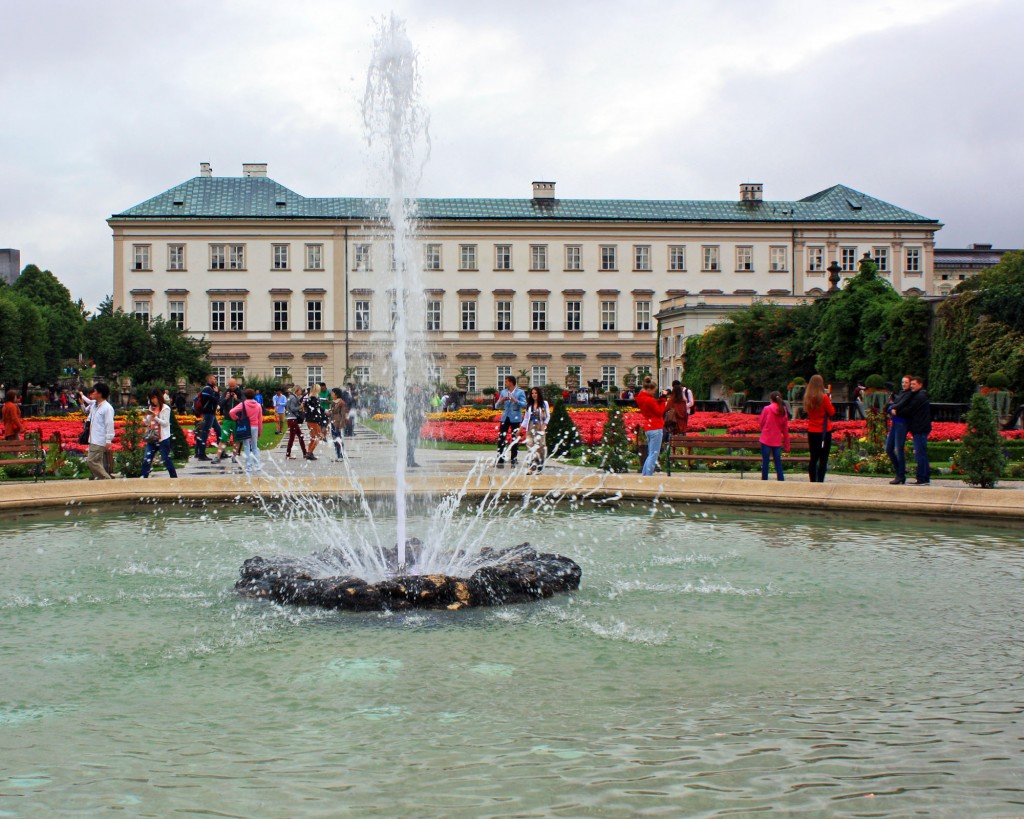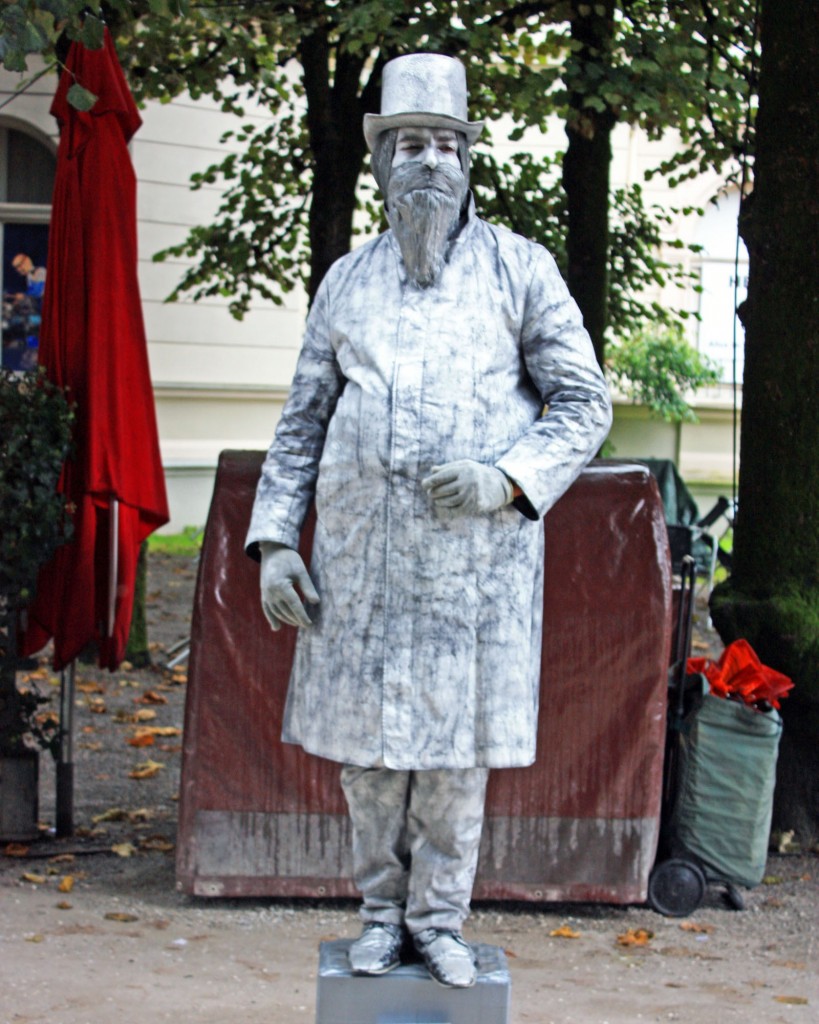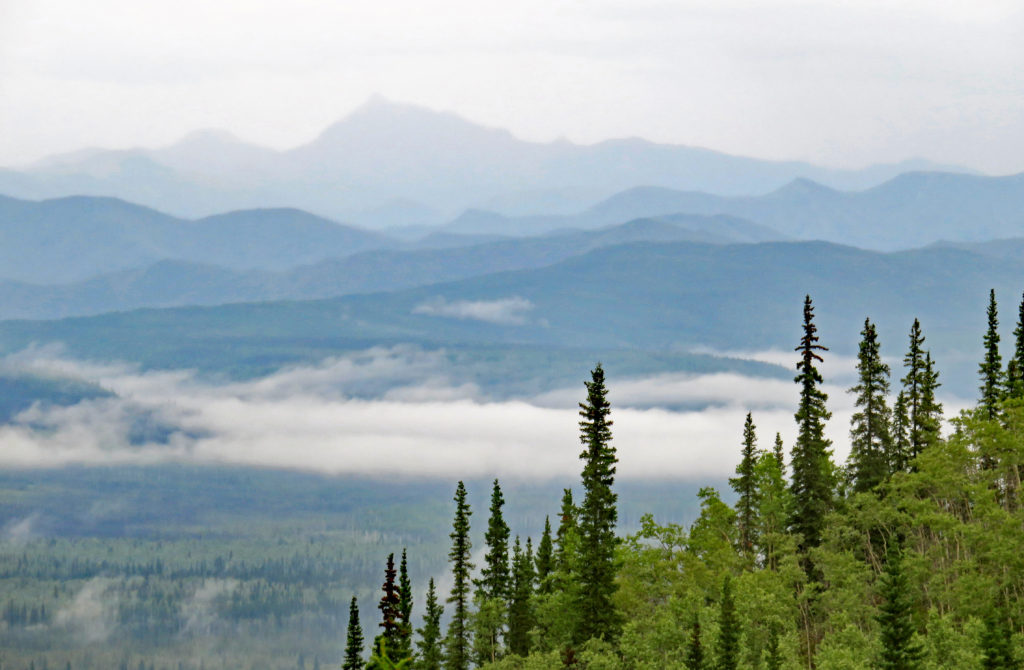
A beautiful valley blanketed in mist.
July 26, 2017
At 8 a.m. we said good bye to Dawson City and boarded our coach bus for a ten-hour trip to Whitehorse. The route would take us 331 miles south along the Klondike Highway (Yukon Highway 2). Our bus driver, Audrie, was originally from Dunwoody, Georgia in north Atlanta and proved entertaining, informative and funny as she spun stories of Yukon history and conveyed personal anecdotes. I was excited to hit the road again and learn more about the Yukon.
Once again, the scenery along the way did not disappoint as we motored by rushing rivers, over mountains and through miles of pristine boreal forests. After being on the road two hours, at mile 100 we exited the coach at Moose Creek Lodge for our first rest stop. It was time to stretch our legs and get some coffee. The rustic lodge with its restaurant, gift shop and cabins welcomed us with northern hospitality. The grounds were covered with beautiful flowers, moose antlers in various locations, wood and metal sculptures, and antiques. We browsed through the gift shop that had crafts from local artists as well as small souvenirs and postcards. We even met the lodge dog. But our favorite spot was the cozy restaurant where we enjoyed hot coffee and fresh homemade assorted cakes and pastries.
Back on the bus we continued south until we came to Stewart Crossing. This is where travelers can pick up the Silver Trail, a scenic highway that heads east through the town of Mayo and leads to the mining camp at Elsa and the hamlet of Keno. The trail is named after the silver and gold mining activity that thrived during the 1900s. Silver and gold strikes attracted miners in big numbers. Mining activity continued to grow as more mineral strikes were recorded. It did not take long before the mining companies moved in and the sternwheelers were transporting ores to Whitehorse via the Stewart River.
During this leg of our trip we were treated to a 45-minute historical movie on the Klondike Gold Rush. We were all taken back to a time of adventure, excitement, expectation and “gold in them there hills”. Between 1897 and 1899 with the discovery of gold, 100,000 prospectors from all over the world set out for the Klondike region of the Yukon. During their epic journey full of numerous challenges and obstacles to overcome, only 30,000 actually arrived in the Klondike and only 4,000 found gold. A great dream paid off for so few risking all in hopes of striking it rich.
We soon arrived at the halfway point of the trip, Pelly Crossing, home to the Selkirk First Nation and a small community of 300 people. The community was established during the construction of the Klondike highway as a site for a construction camp and ferry crossing. Twenty miles later we arrived at Minto Resorts for lunch. Situated on the banks of the Yukon River, the resort is owned by the Selkirk First Nation and they provide an RV campground and a lunch stop for groups during the summer season.
Before leaving the bus, Kayli mentioned that two beautiful Italian models vacationing in the area had volunteered to serve us today, so we should look out for them. When we walked in the lunch pavilion we were greeted by our hosts and a hardy buffet with delicious salads, soups, sliced meat trays, bread and dessert. As we started through the serving line our servers turned out to be Kayli and Audrie our coach driver! HA! We had been duped, but who doesn’t love a little tour bus humor.
After lunch we gathered outside along the Yukon River for a group picture. It was a gorgeous sunny day to be in the middle of nowhere just hanging out by the river. Soon it was time to head back to the bus and continue our journey. Fifty miles down the road we stopped at Five Finger Rapids Recreation Site. From the upper viewing deck, we looked down on four reddish colored rock pillars (islands) sitting in the middle of the Yukon River. These split the river into narrow, swiftly moving channels known as the Five Finger Rapids.
The rapids were a significant hazard to navigation during the Klondike Gold Rush, when thousands of prospectors navigated their homemade boats and rafts 800 miles from Bennett Lake (40 miles south of Whitehorse) to Dawson City. Only one of the Five Finger channels was deep enough for the sternwheelers and the current remained very strong. At high water, the falls created a 1-2 foot drop. A sternwheeler ascending the rapids could only go so far until the wheel lifted out of the water and then the vessel lost power.
So, sternwheelers heading upstream had to winch themselves over the drop by using a cable that was attached to the rocks. After several accidents and major hull damage involving sternwheelers it was decided to remove some of the rock. Blasting work started at Five Finger Rapids in 1900 and continued until at least 1927. Rock was removed and the channel was widened by 20 feet. There was a stairway that led down to a lower observation deck along the river for those who wanted to climb down and then up again over two hundred steps. Since our stop was short we opted out of the lower view. I guess we’ll have to return another time.
It was time to jump back on the bus and continue our trip through the Yukon River Valley. A bit down the road we passed through the big mining town of Carmacks, population 493. Fifty-six miles later we made our final stop at the Braeburn Lodge, a roadhouse which serves up “bigger than life” cinnamon buns. Along with its café it has gas for the road and lodging for dog-tired travelers. Speaking of dogs, the lodge hosts a checkpoint during the Yukon Quest 1,000-mile International Sled Dog Race.
The sled dog race started in 1984 and runs every February between, Fairbanks, Alaska and Whitehorse, Yukon. The course follows the route of the historic 1890s Klondike Gold Rush mail delivery and transportation routes between Fairbanks, Dawson City, and Whitehorse. The Yukon Quest race starts on schedule regardless of weather and lasts from 10 to 16 days until the final dog team arrives at the finish line.
Brae Burn Lodge is one of the nine official checkpoints that help break up the distance and serve as a place where mushers can rest their dogs, get a hot meal and enjoy a warm place to sleep. We were able to see the checkpoint chart from the 2017 race. Along with the lodge’s other amenities, it has an airport nearby named the Cinnamon Bun Airport. Needless to say, Rodge and I boarded our coach with a huge cinnamon bun in hand. A great snack for two! It kept us busy during the next 60 miles to Whitehorse.
At 5:45 p.m., after a ten-hour day on the road, we arrived in Whitehorse, the capital city of the Yukon. Whitehorse was established in 1898 as a transportation center during the Klondike Gold Rush and is named after the historic rapids on the Yukon River that resembled the flowing manes of charging white horses. On the gold rush trail, the stampeders had to bypass the treacherous water of Miles Canyon and White Horse Rapids, located south of the city. The rapids became known as the greatest peril on the trail. The construction of the Whitehorse hydro-electric dam in 1958 tamed Miles Canyon and has replaced the once-foaming White Horse Rapids with Schwatka Lake reservoir.
After we arrived at the hotel and checked in, we walked a block to the “Burnt Toast Café” for dinner. Later, I elected to call it a day and retire to our room while Rodge went on a short walk along the waterfront. Five blocks down the road he discovered the fully restored S.S. Klondike sternwheeler in a National Historic Park. He topped off the evening by walking along the Millennium Trail, a 3-mile paved walking and biking path running in an oval on either side of the Yukon River with two bridge crossings as part of the circuit. Along the way he enjoyed the views beside the rushing river with the mountains as a backdrop. He was even treated to a rainbow in the far distance–a great way to end a magnificent Yukon day.
Later.
Kathy
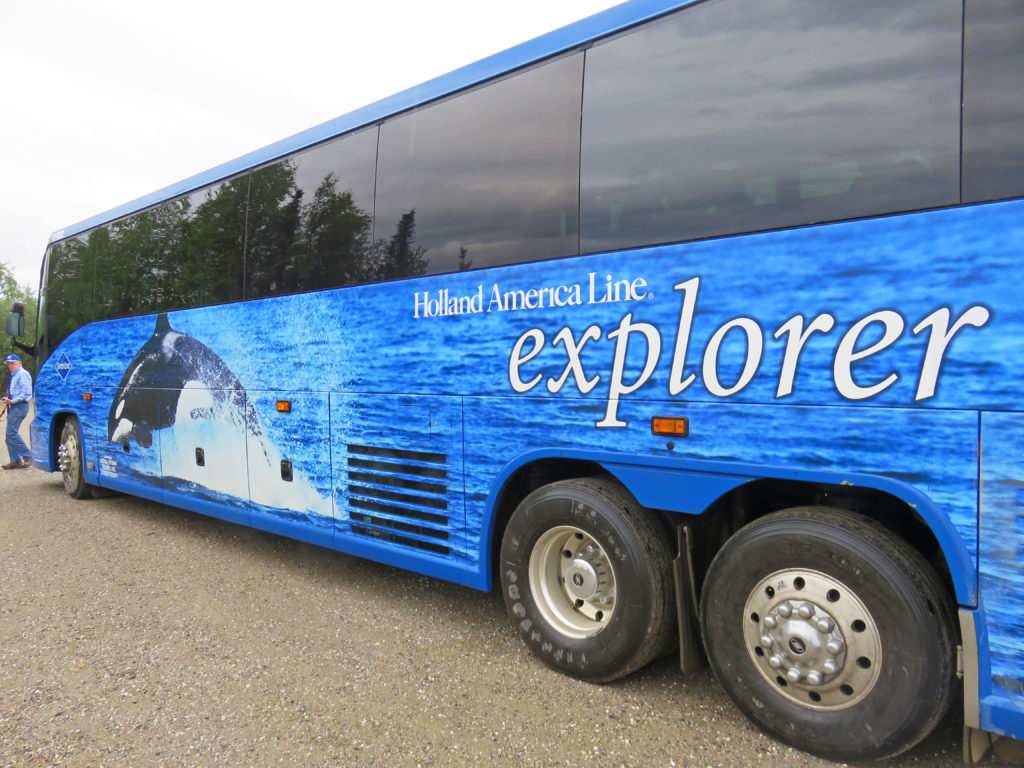
We boarded our coach bus for a ten-hour trip to Whitehorse.
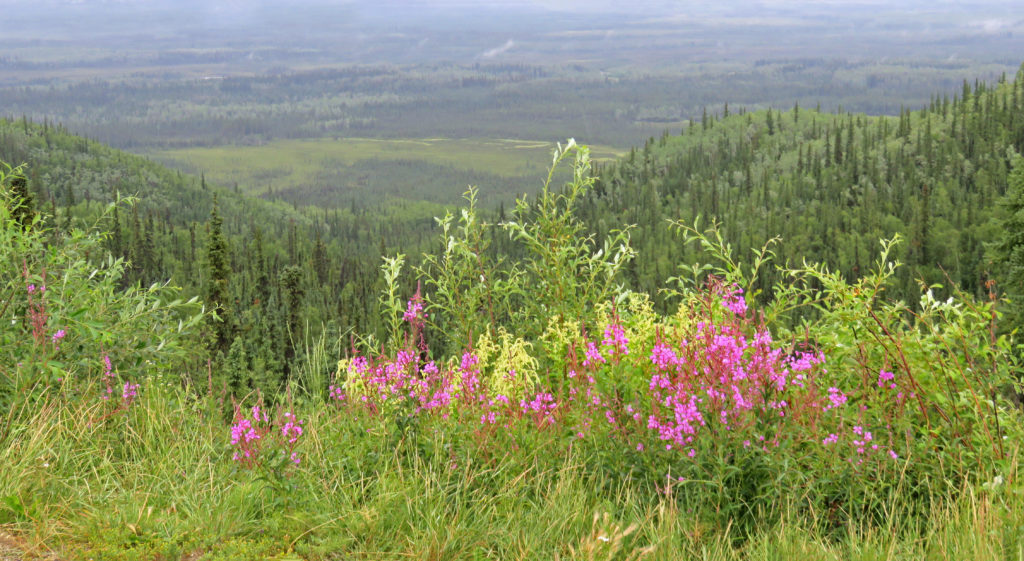
Beautiful scenery along the Klondike Highway.
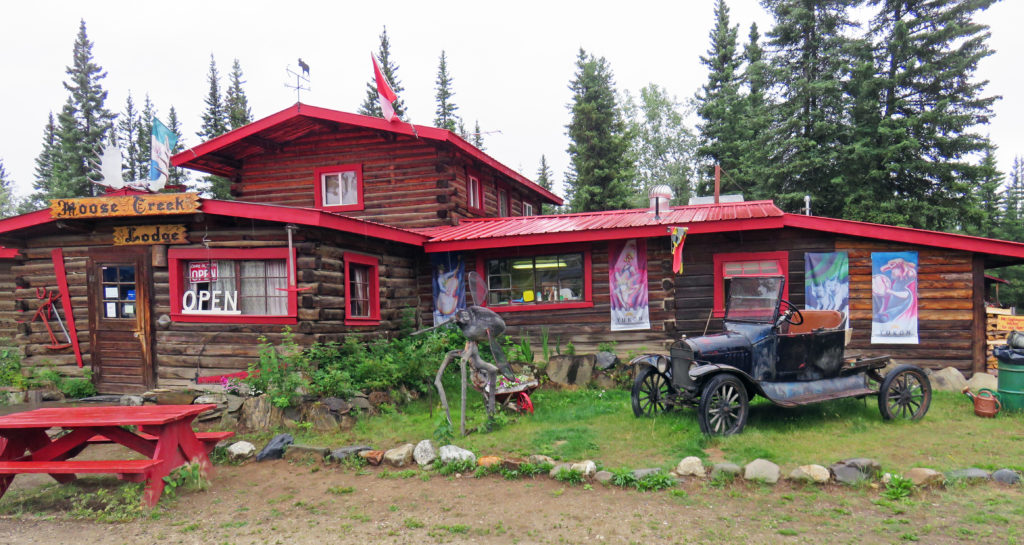
We arrive at Moose Creek Lodge.
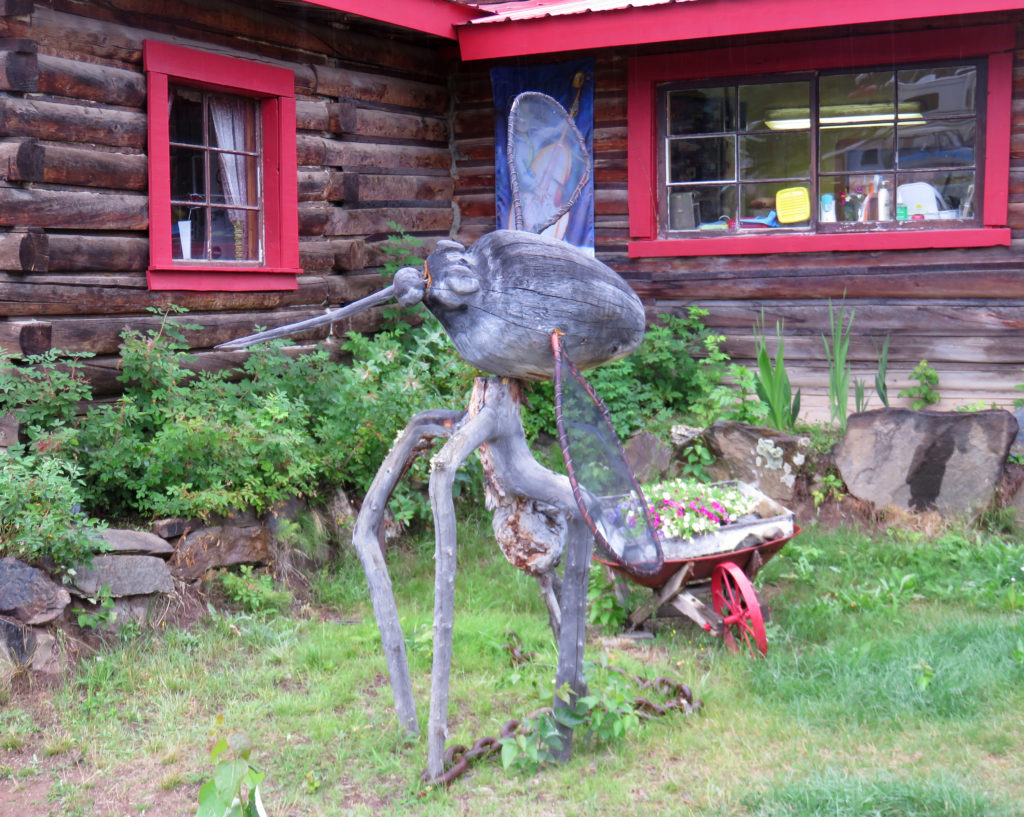
Max, the world’s largest mosquito.
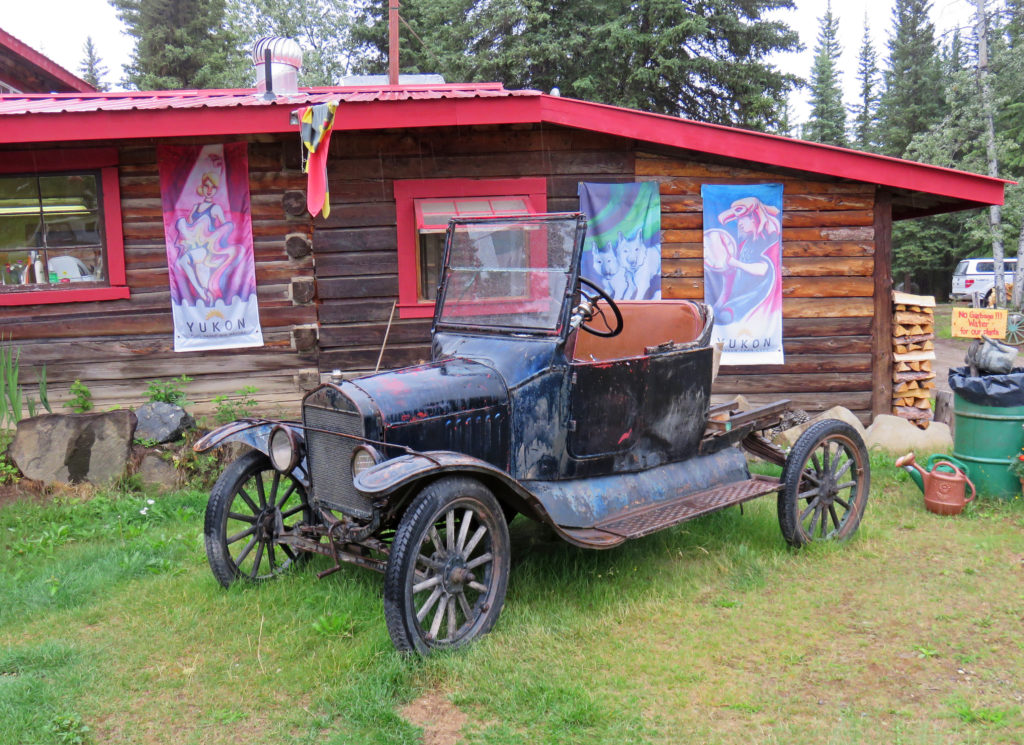
The 1920’s Motor Trend Car of the Year.
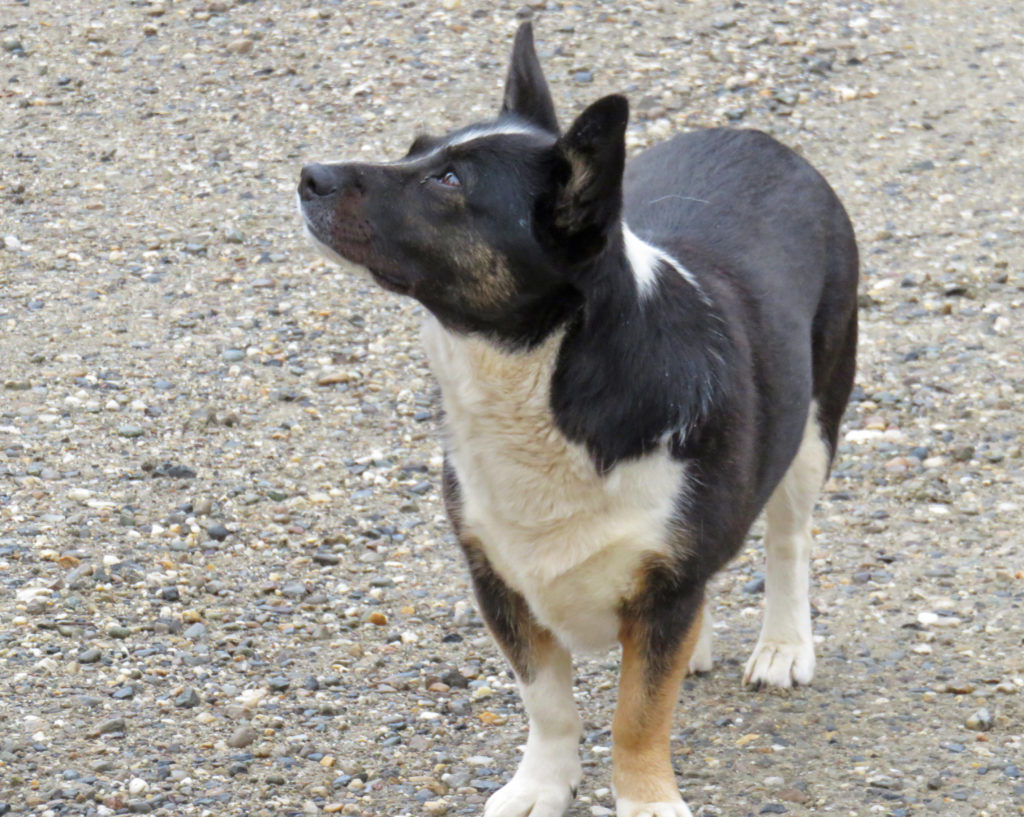
The inquisitive lodge dog.
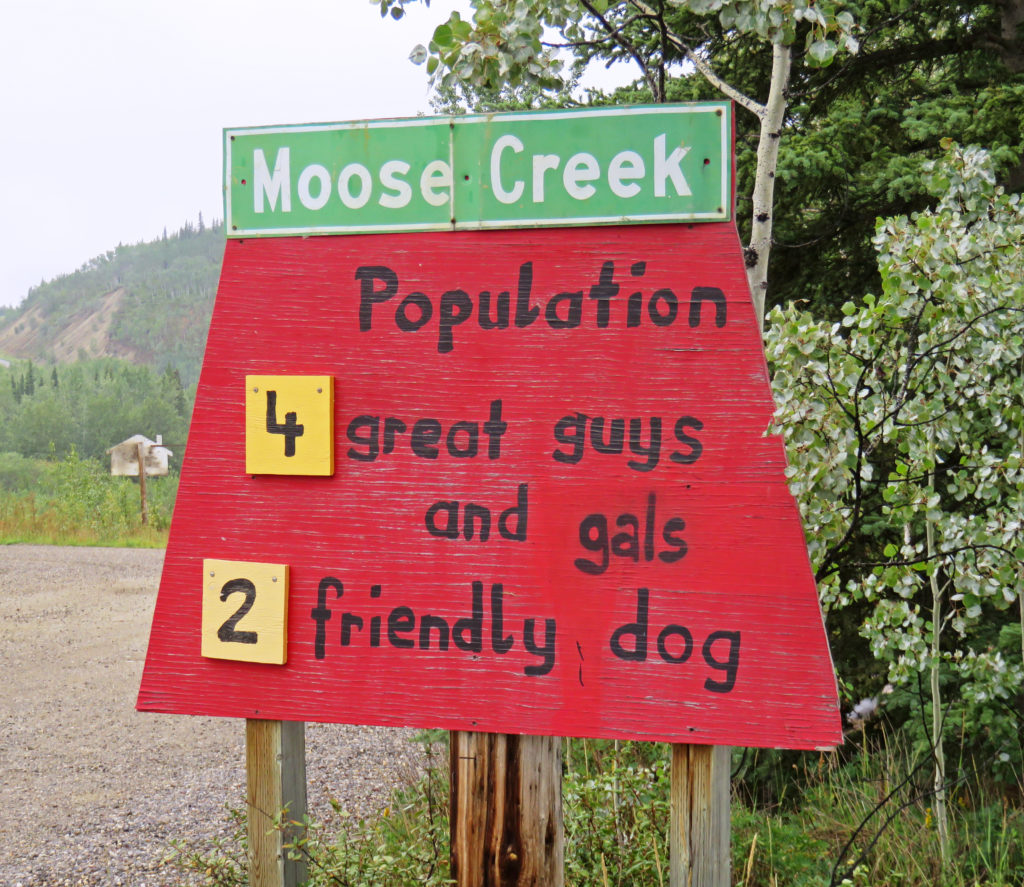
Moose Creek census.
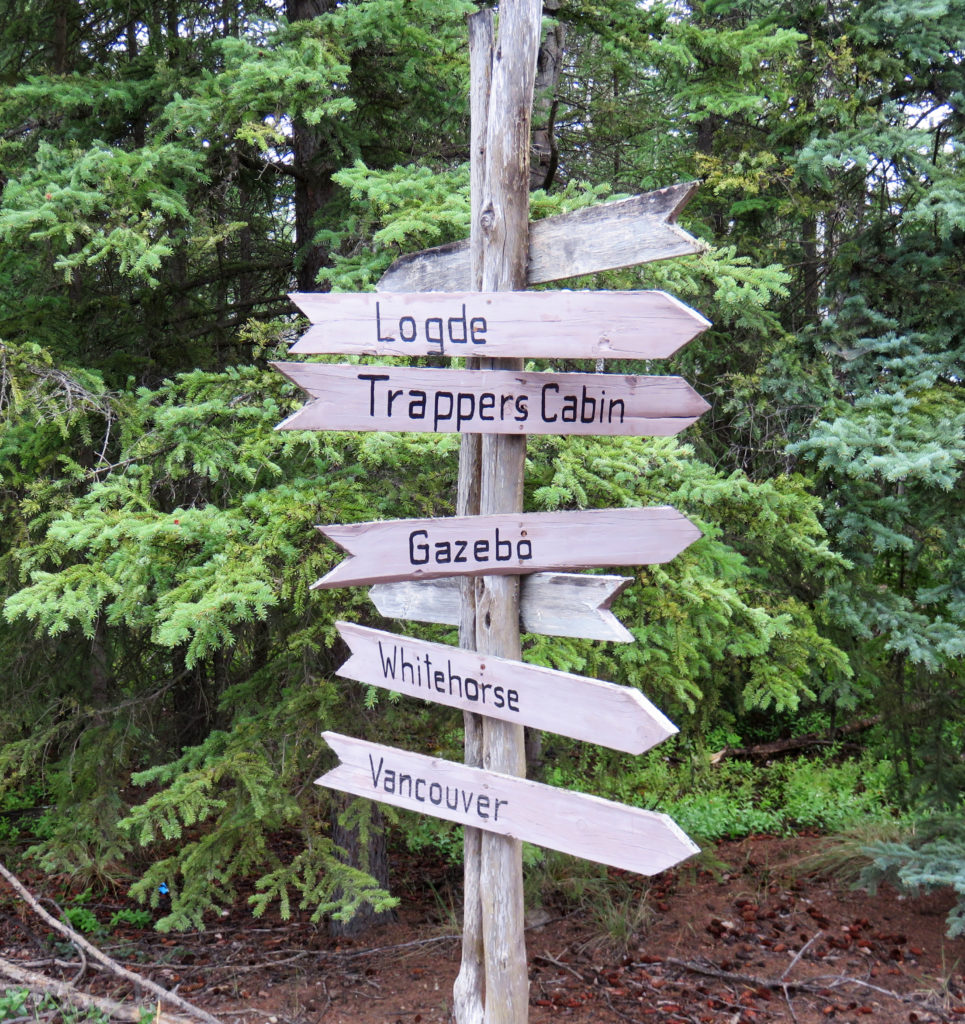
Yukon GPS.
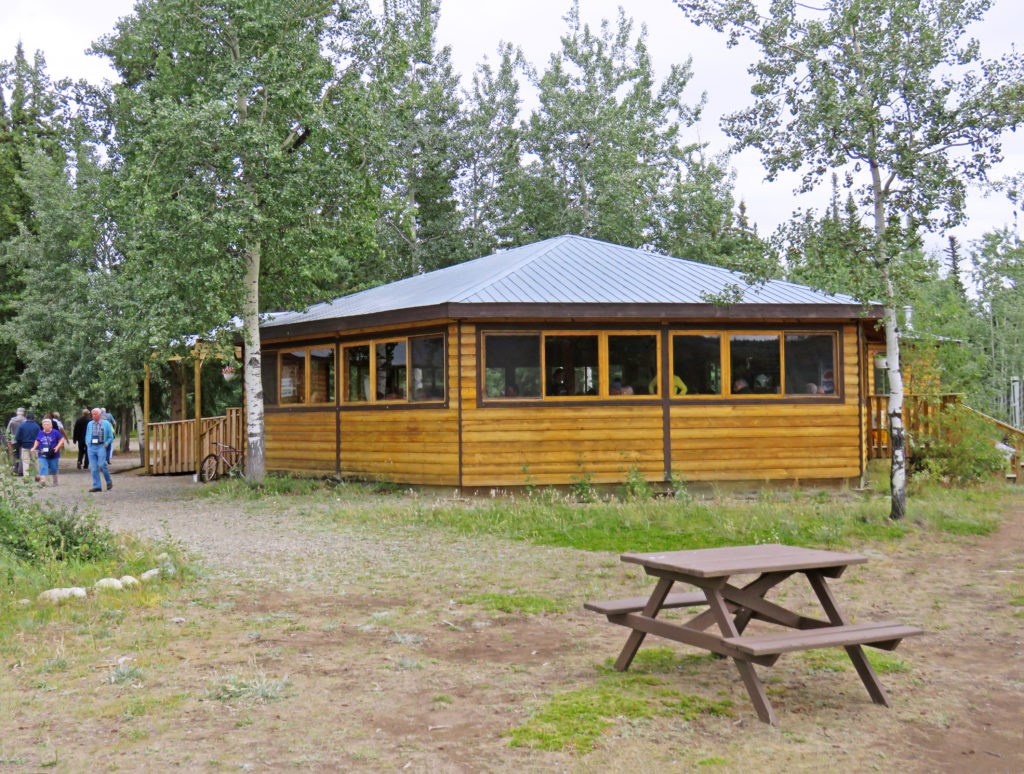
Lunch pavilion at Minto Resorts.
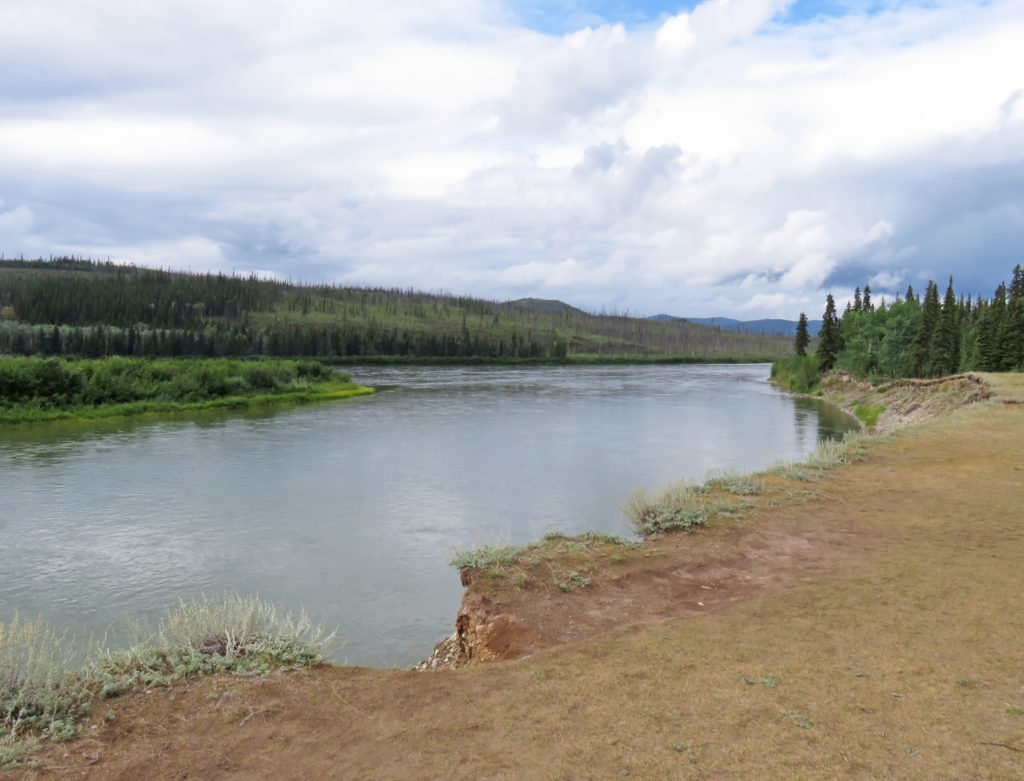
The mighty Yukon River at Minto Resorts.
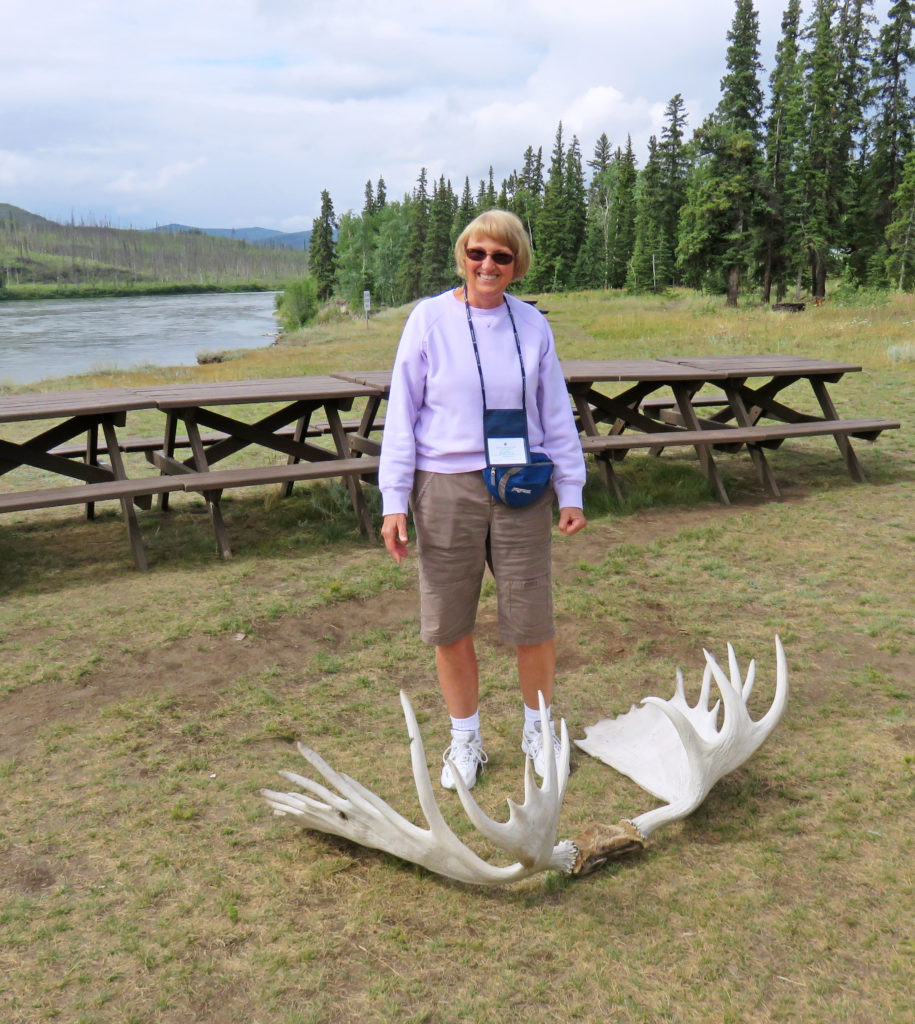
Kathy posing with moose antlers.
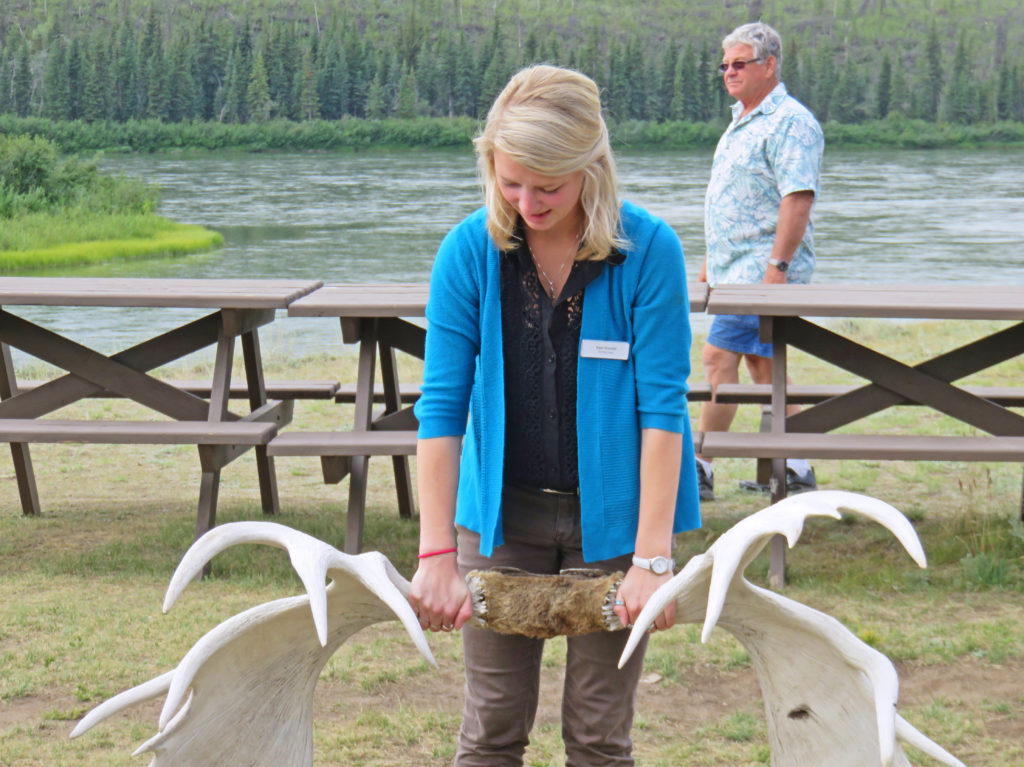
Kayli showing us how its done.
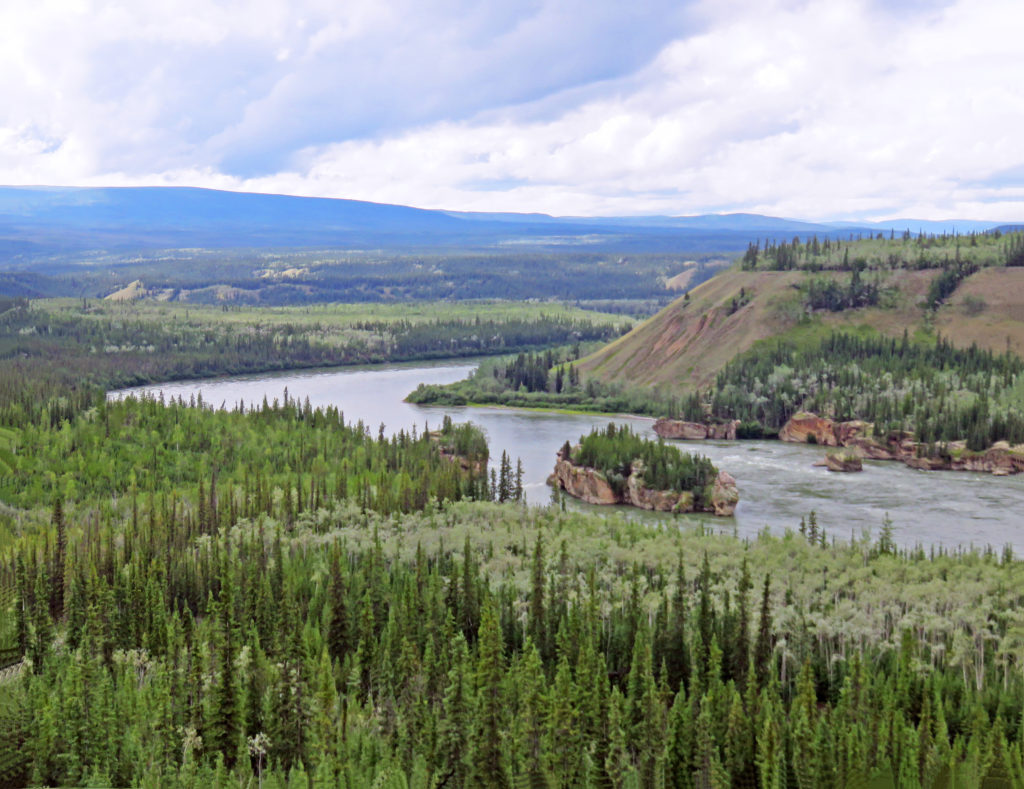
Five Finger Rapids Recreation Site.
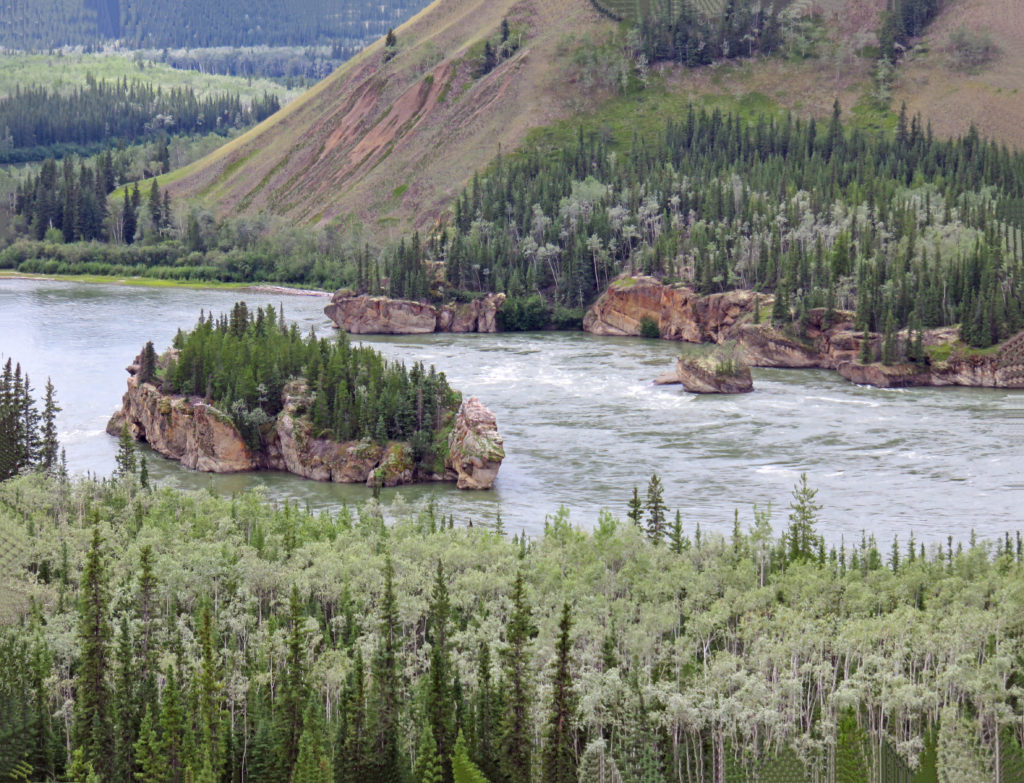
Water swiftly moving through the Five Finger Rapids.
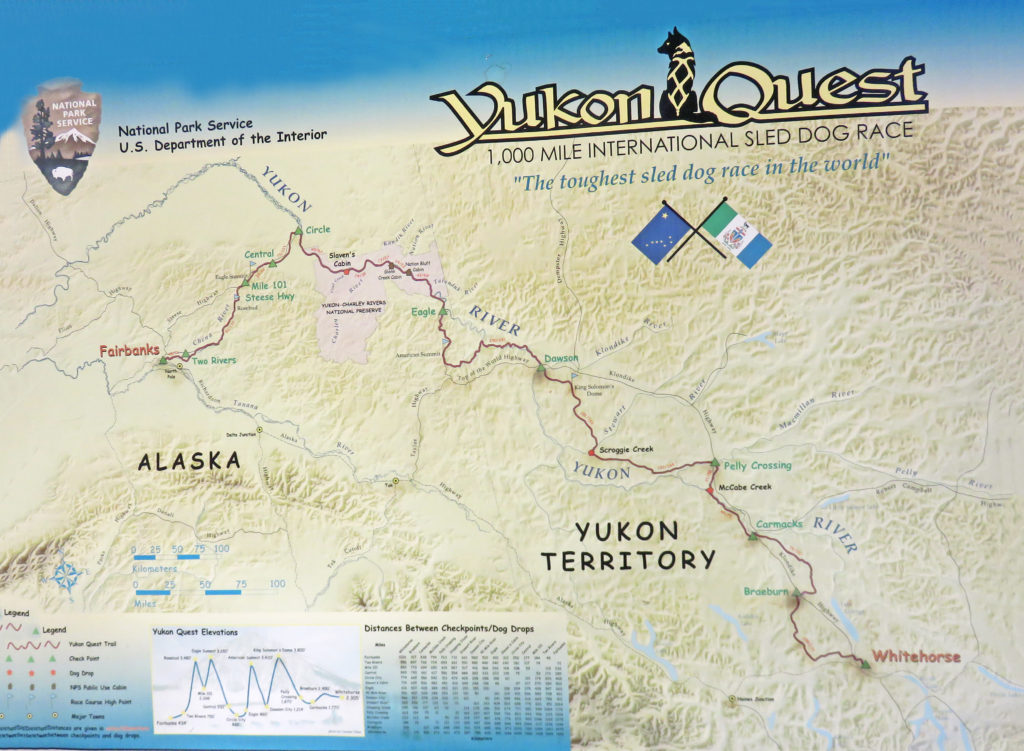
A map of the Yukon Quest sled dog race.
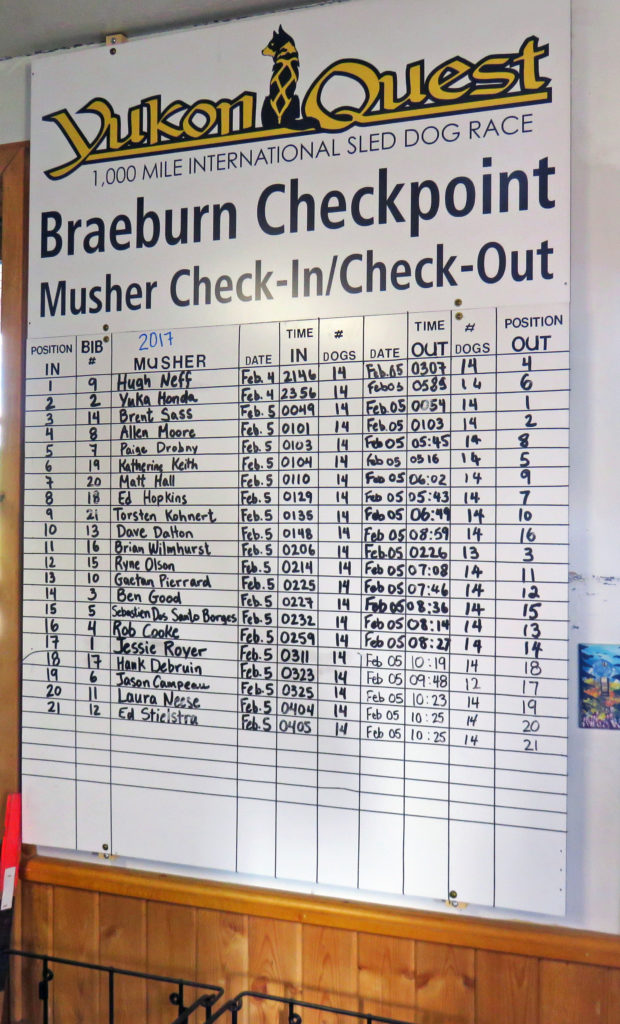
Brae Burn checkpoint for the 1,000 mile international sled dog race.
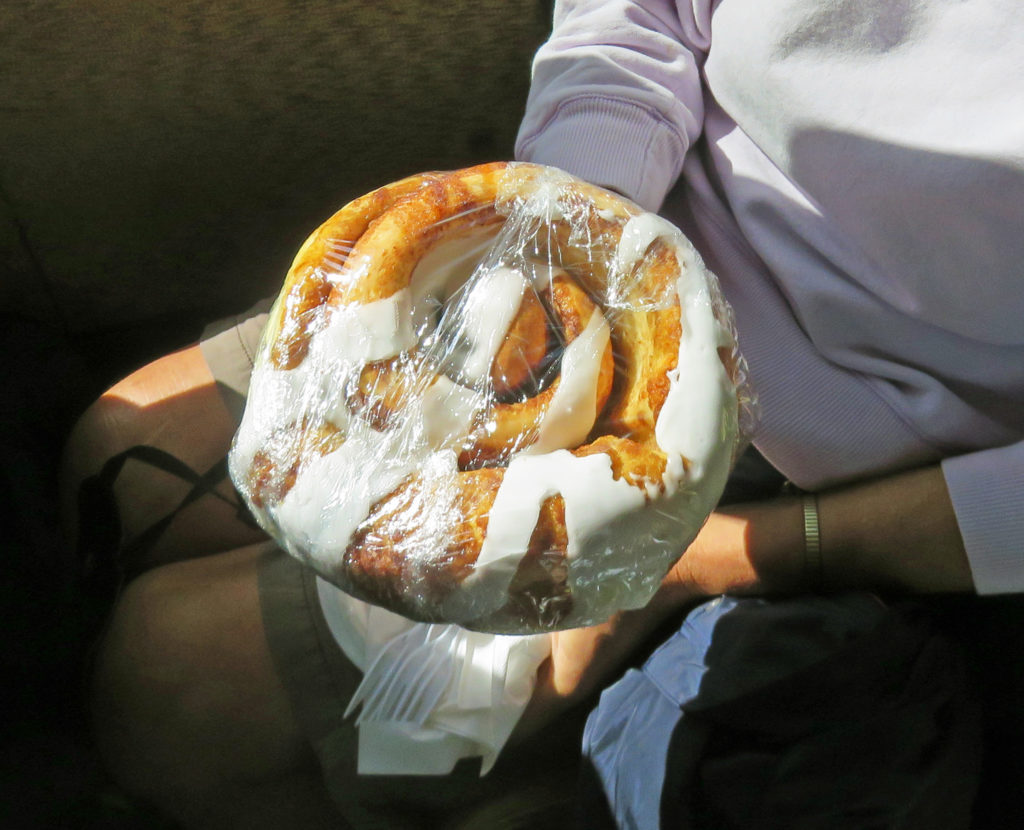
A huge cinnamon roll from Braeburn Lodge.
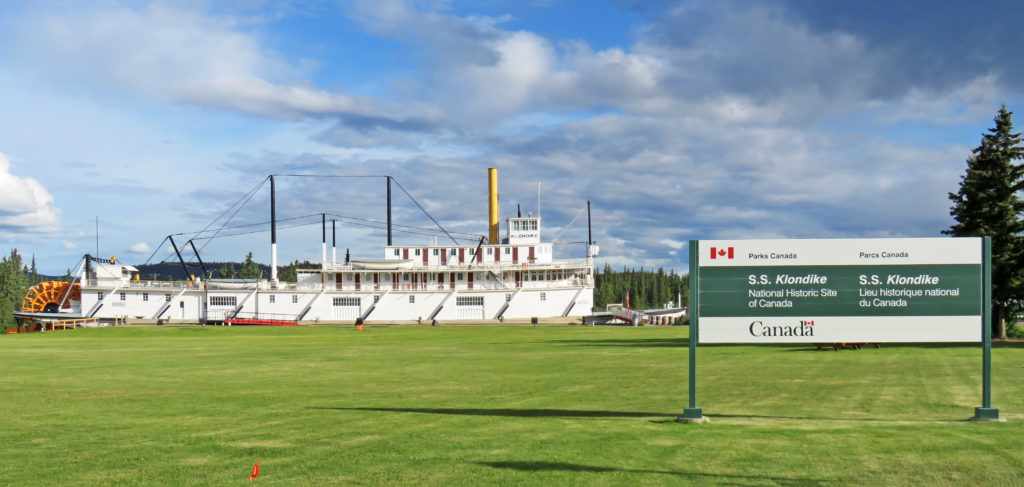
S.S. Klondike in a National Historic Park.
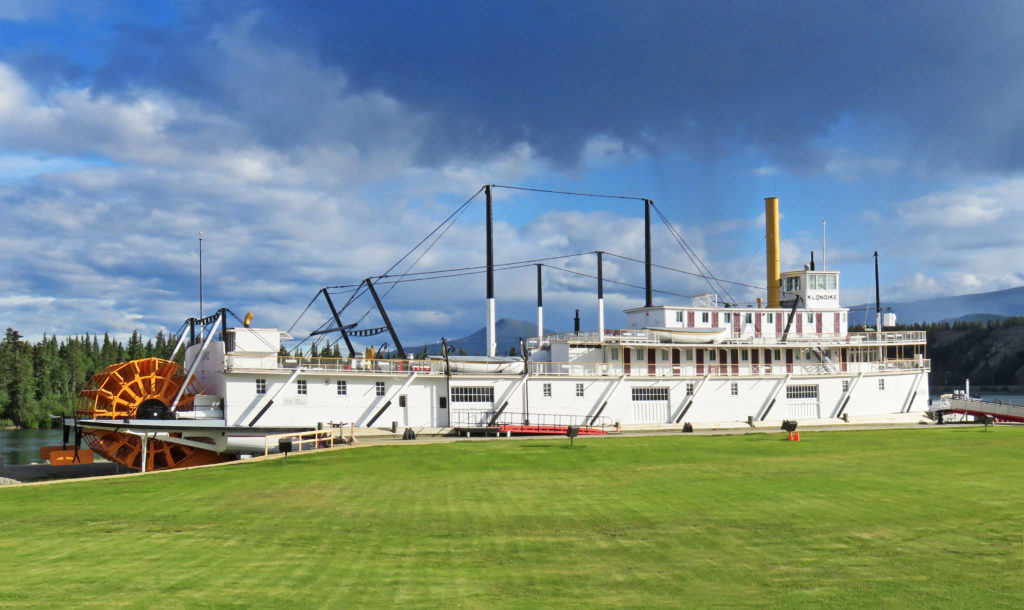
The sternwheeler S.S. Klondike.
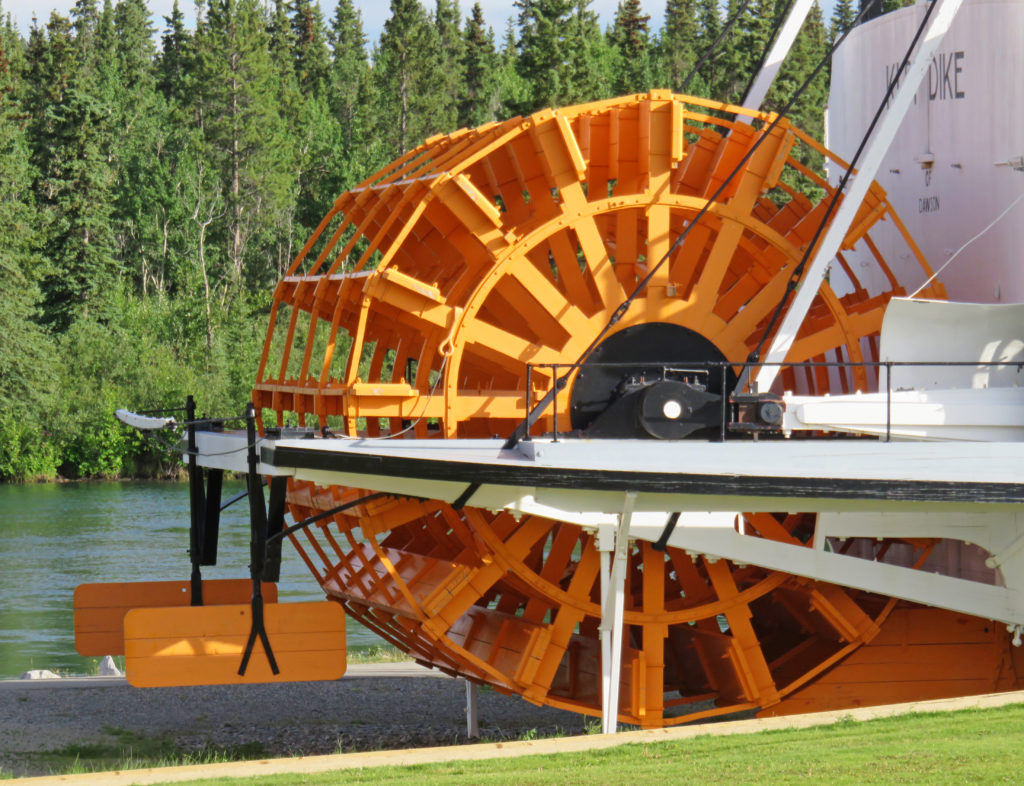
Stern paddle on the S.S. Klondike.
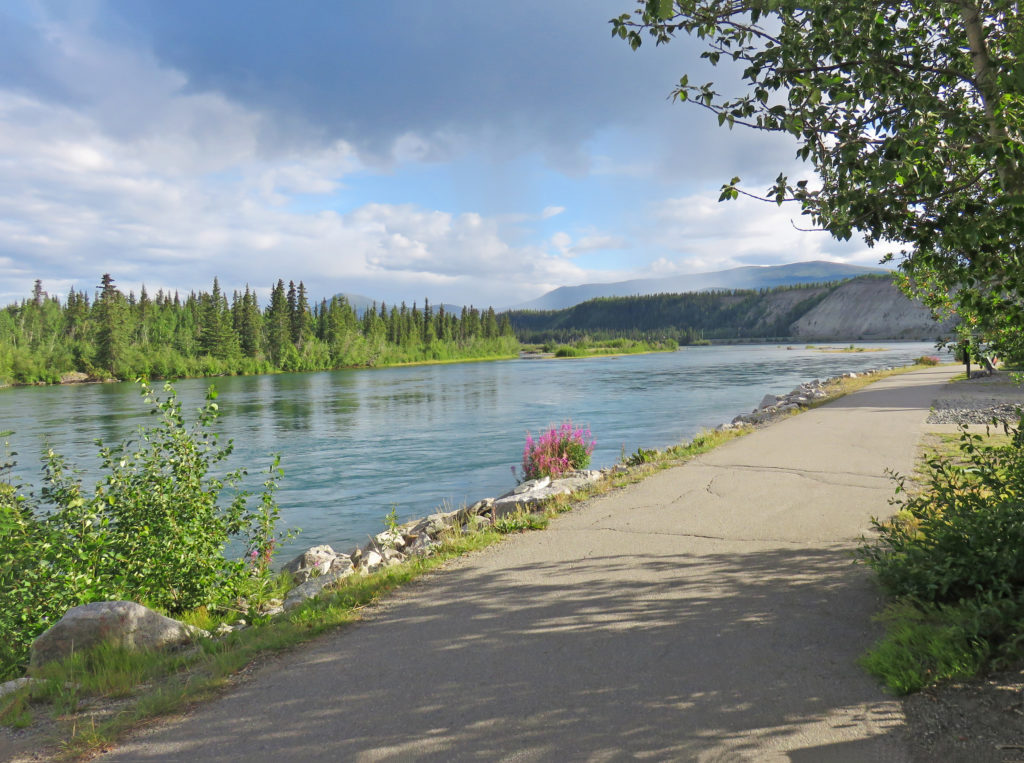
The Millennium Trail along the Yukon River.
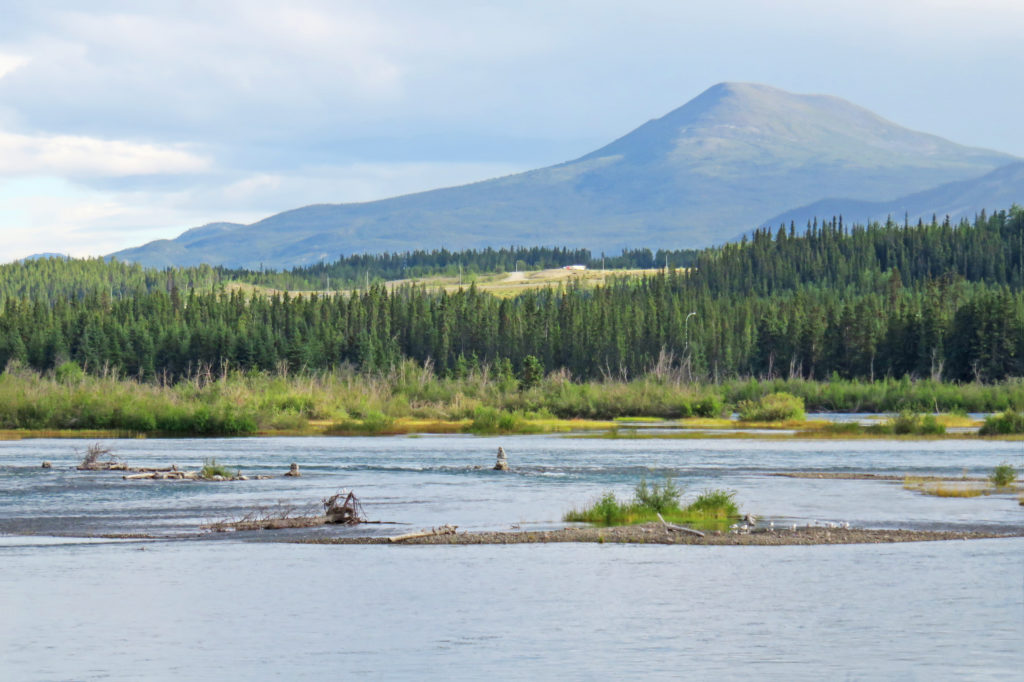
River views with a mountain backdrop.
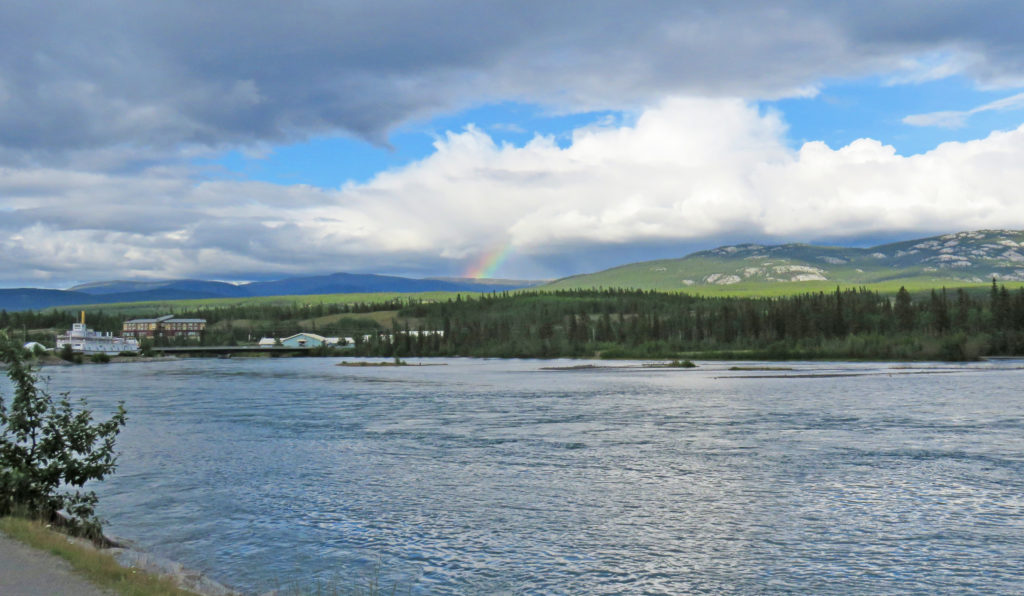
A distant rainbow along the Yukon River.
